Sharks can survive in the Bush, too.
This article features AIS X Beyond Expeditions Outdoor Education Week, that lasted over 5 days (28th November - 2nd December 2022). Through this article, you will see how students get to experience the outdoors in Singapore too. Unconventionally.
*** Do note that in some of the photos, the students’ faces are cropped out or censored to safeguard their privacy!
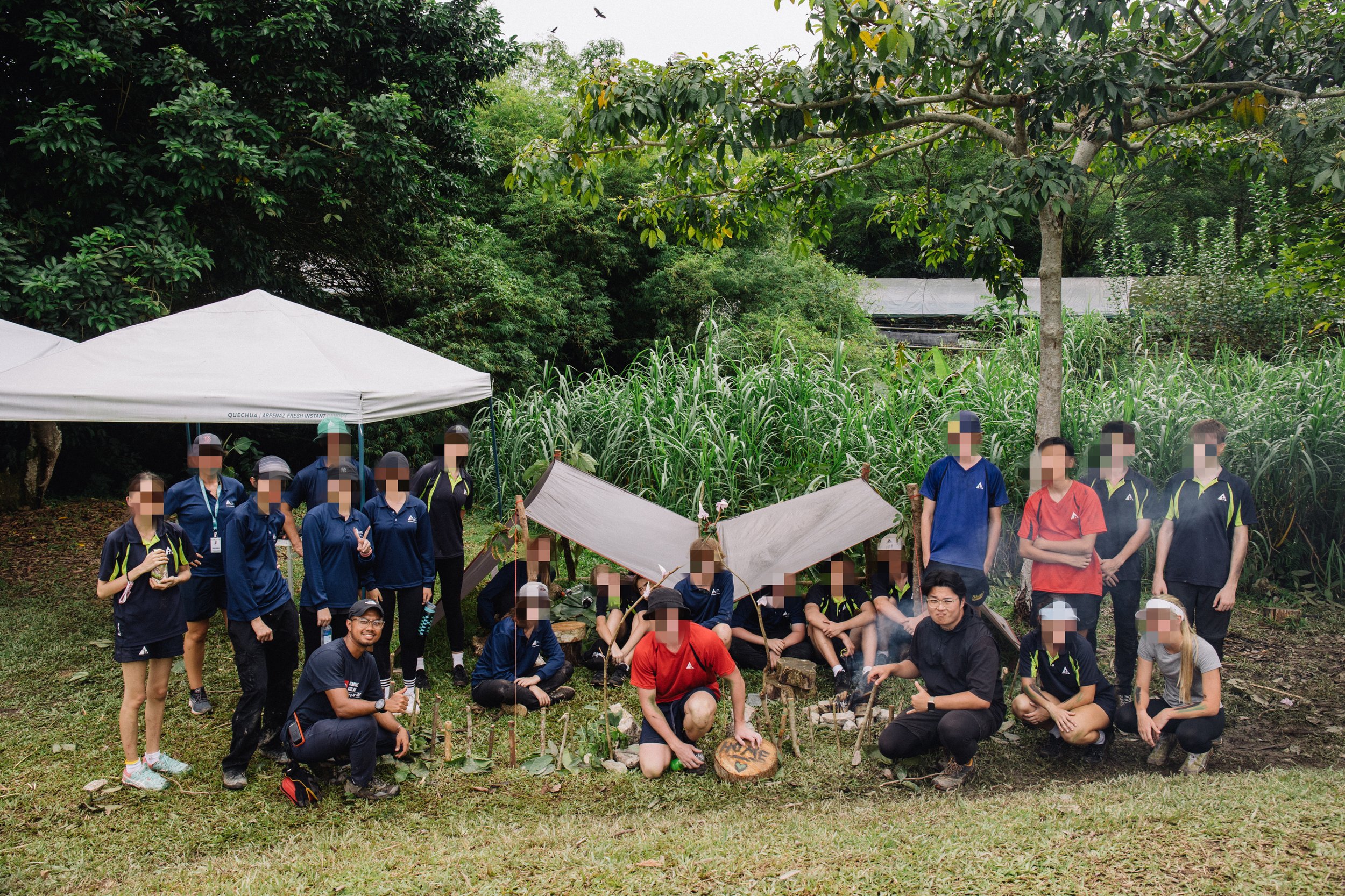
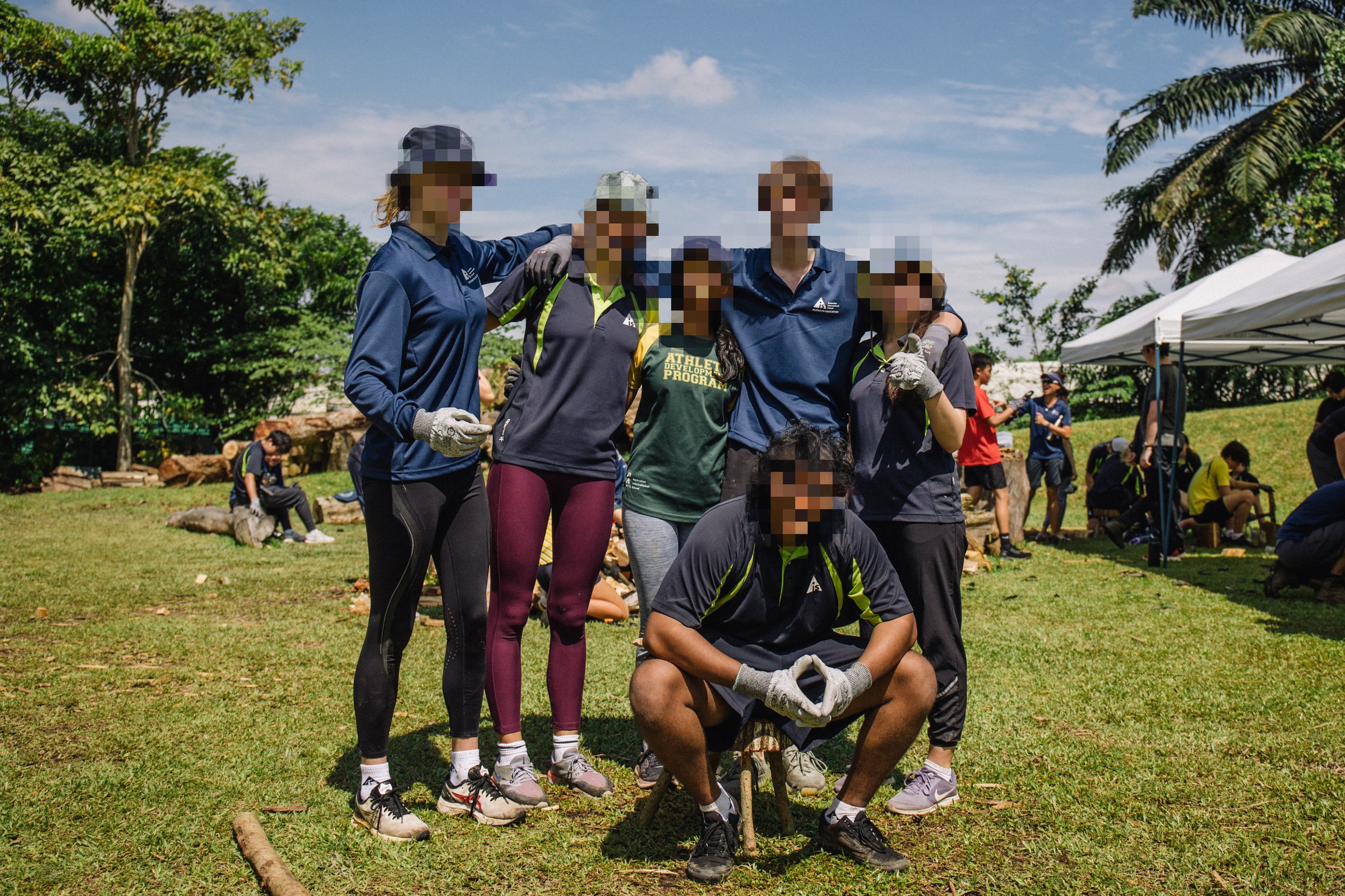
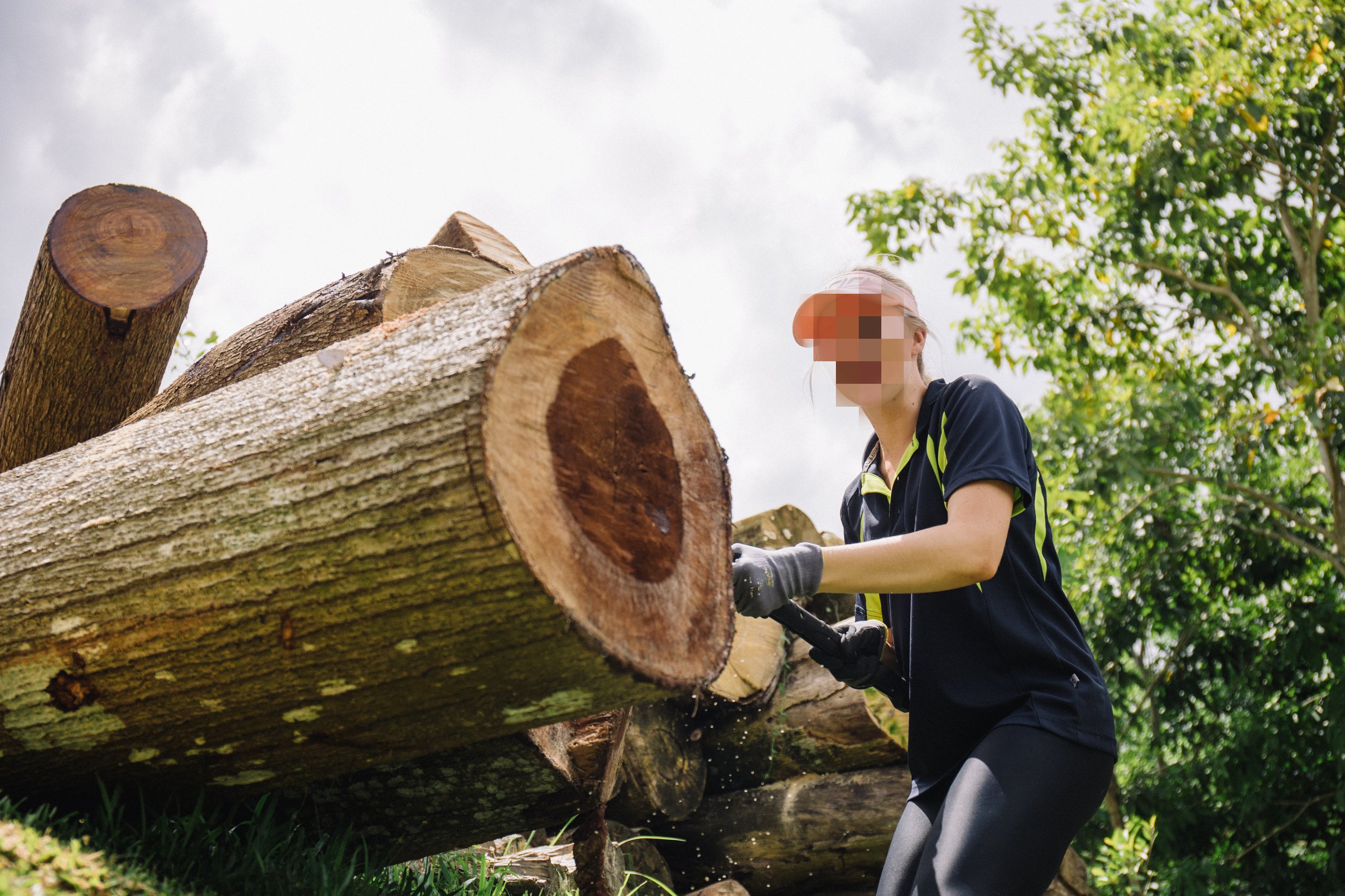
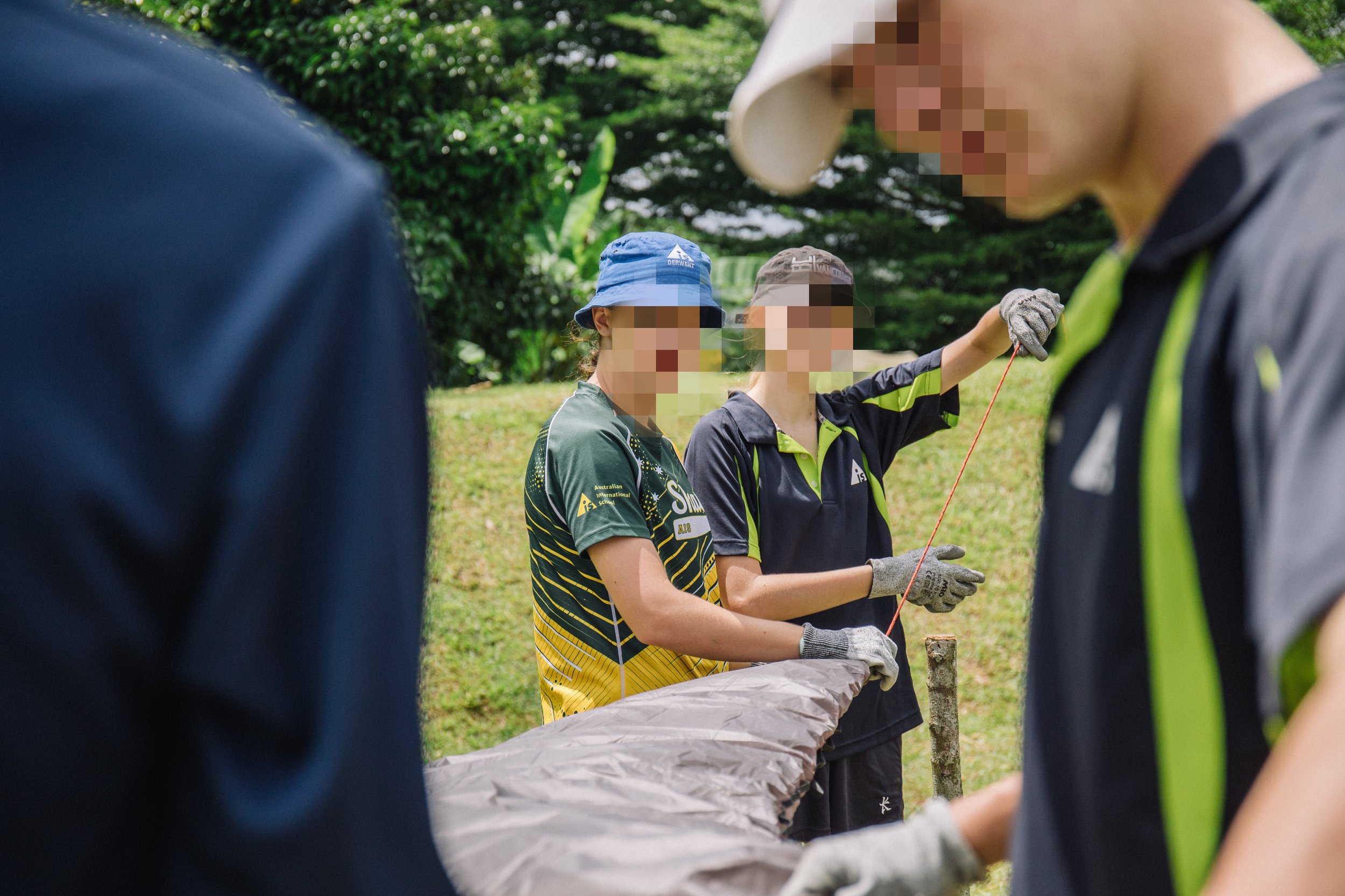
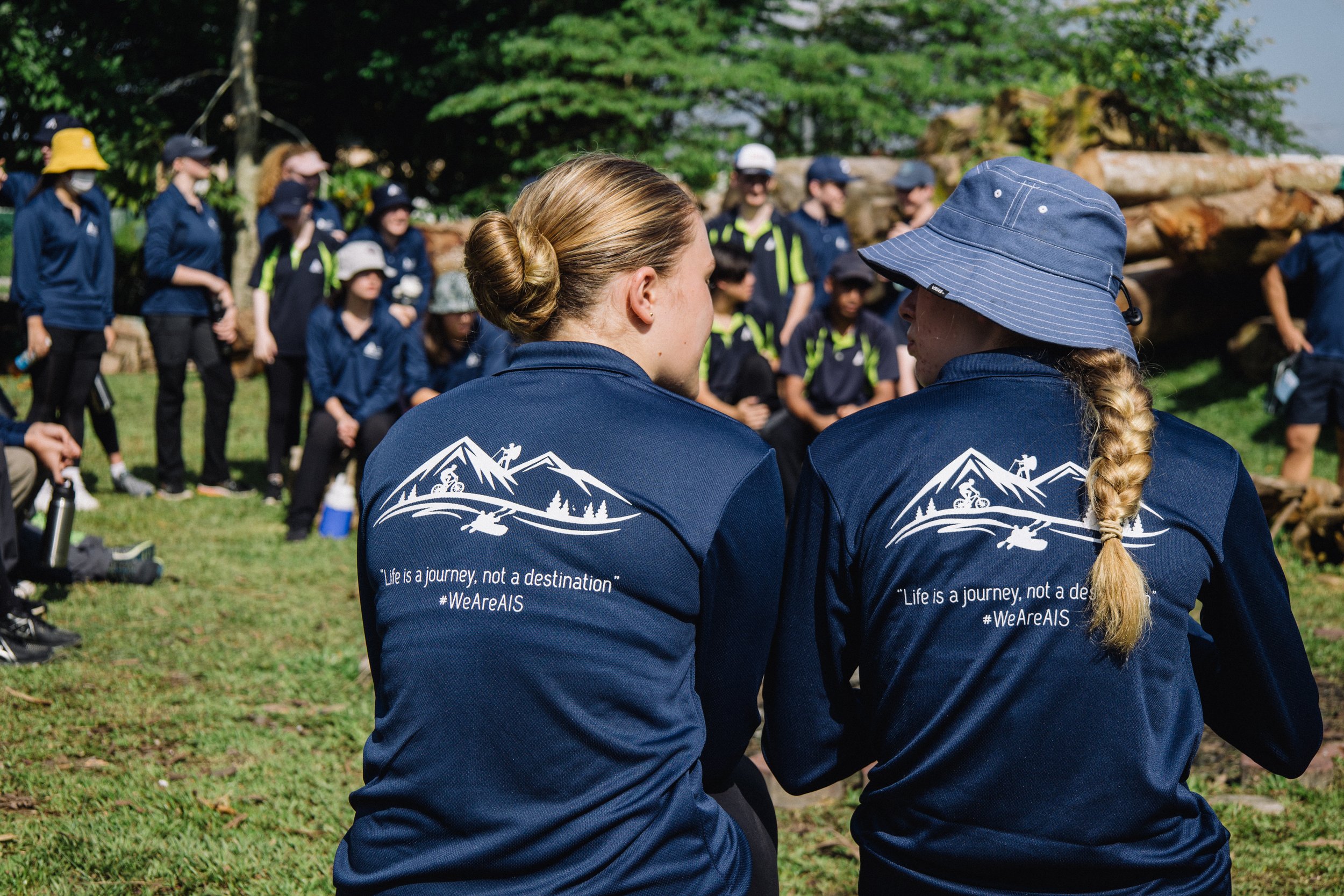
We hosted the Australian International School (AIS) at our yurt camp for a 5-day outdoor education camp, which was anything BUT a typical outdoor education camp (none of those conventional camp cheers and dance, for sure!) you’ll find in Singapore. From learning how to use axes for chopping, to filtering clean potable water from the muddiest of water, to understanding the rich heritage of a hidden abandoned place in relation to World War II, AIS students (also known as Sharks) experienced the outdoors in ways that sharpened their survival skills and nurtured their relationship with the outdoors.
These are valuable takeaways they will carry with them for a long time, whether for high school outbound camps in countries like New Zealand or Cambodia, or post-graduation life in universities far from Singapore. Regardless of the environment, their ability to survive and thrive would remain relatively the same if equipped with the right skills.
If you’re a teacher from an International School in Singapore or a parent with a wild heart, and you end up reading something in this article that inspires you to want that for your young ones too, reach out to us by simply sending us an inquiry email. We would love to share more and explore how we can work together to bring you and your students meaningful experiences with the outdoors. We can also curate our program in a way that allows us to bring the outdoors to your students within the school compound, if that’s what you prefer!
If not, let’s keep reading about how these five days went for our AIS participants!
Day 1 & 2: Picking up the Survival Basics.
The fundamentals of surviving in the wild aren’t only about skills.
The first two days are designed to encourage the students to explore five values, via four main experiences. We’re talking about values like:
Tenacity: Gripping onto strong determination despite the challenging nature of a task.
Courage: Looking at their fears straight in the eye and choosing ‘Yes’ even when they’re scared.
Motivation: Activating a force within them that drives them to take action towards a goal.
Teamwork: Collaborating with every member of a team, to complete a task effectively and efficiently.
Read on to get a glimpse of how these Sharks practised these values via activities; navigation, fire-lighting, an adventure in Marsiling bunkers, and sawing and chopping.
Quick; Get from A to B!
Leaning their torso forward, students’ eyes moved unwaveringly between the instructors’ hands and faces as we taught them how to use the equipment provided while explaining the theory behind map-making.
We have all applied the skill of navigation in our lives; we just don’t realise it.
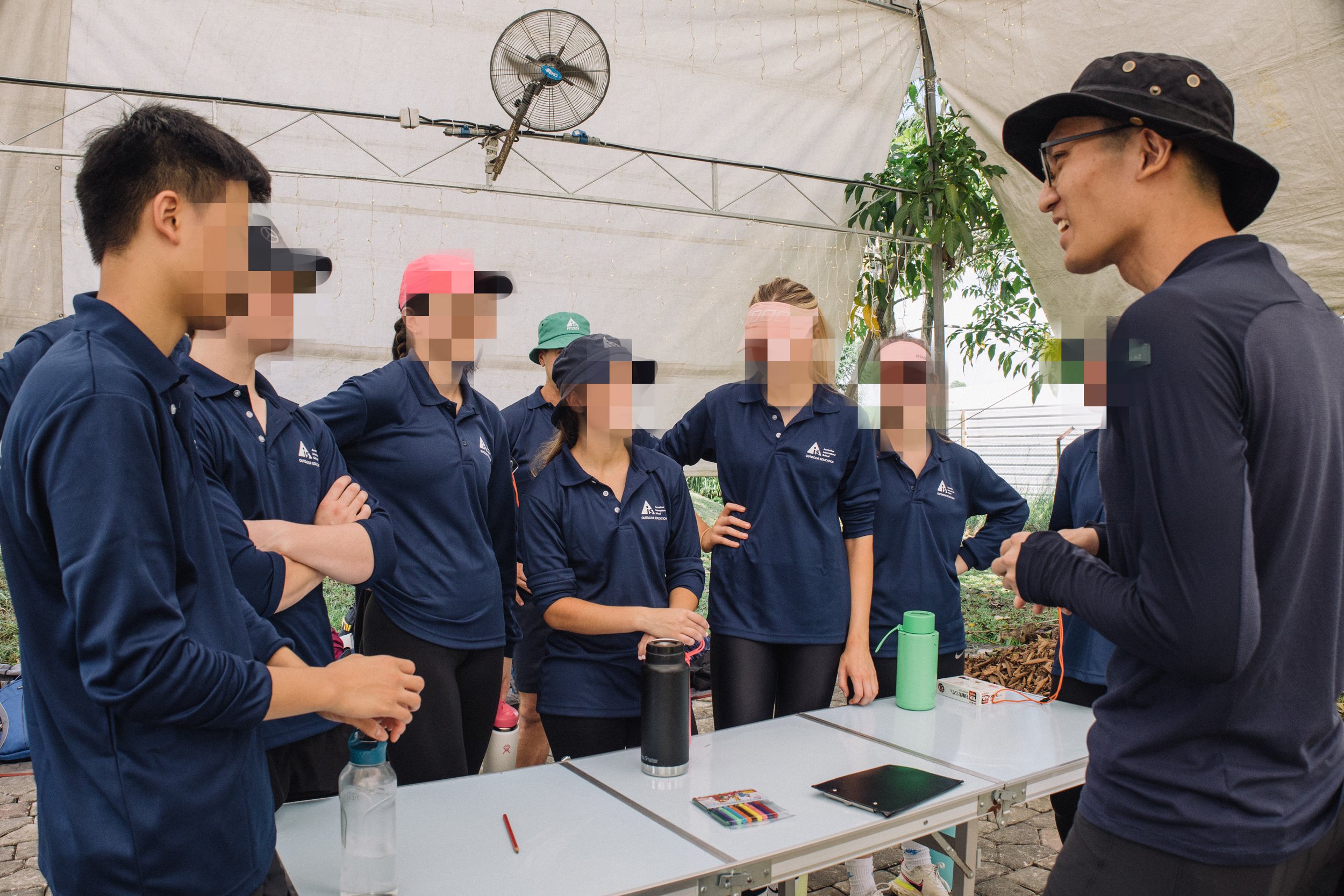
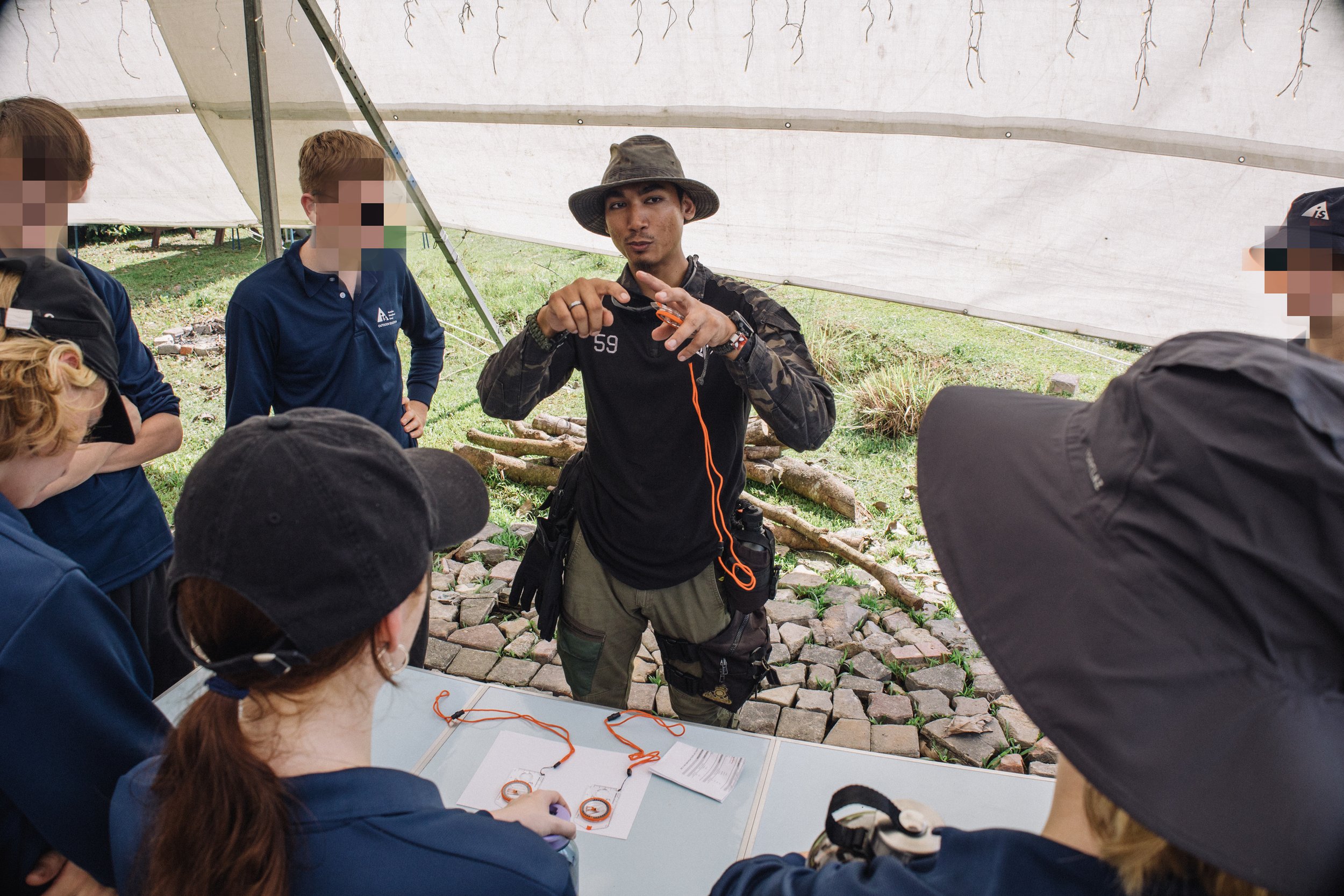
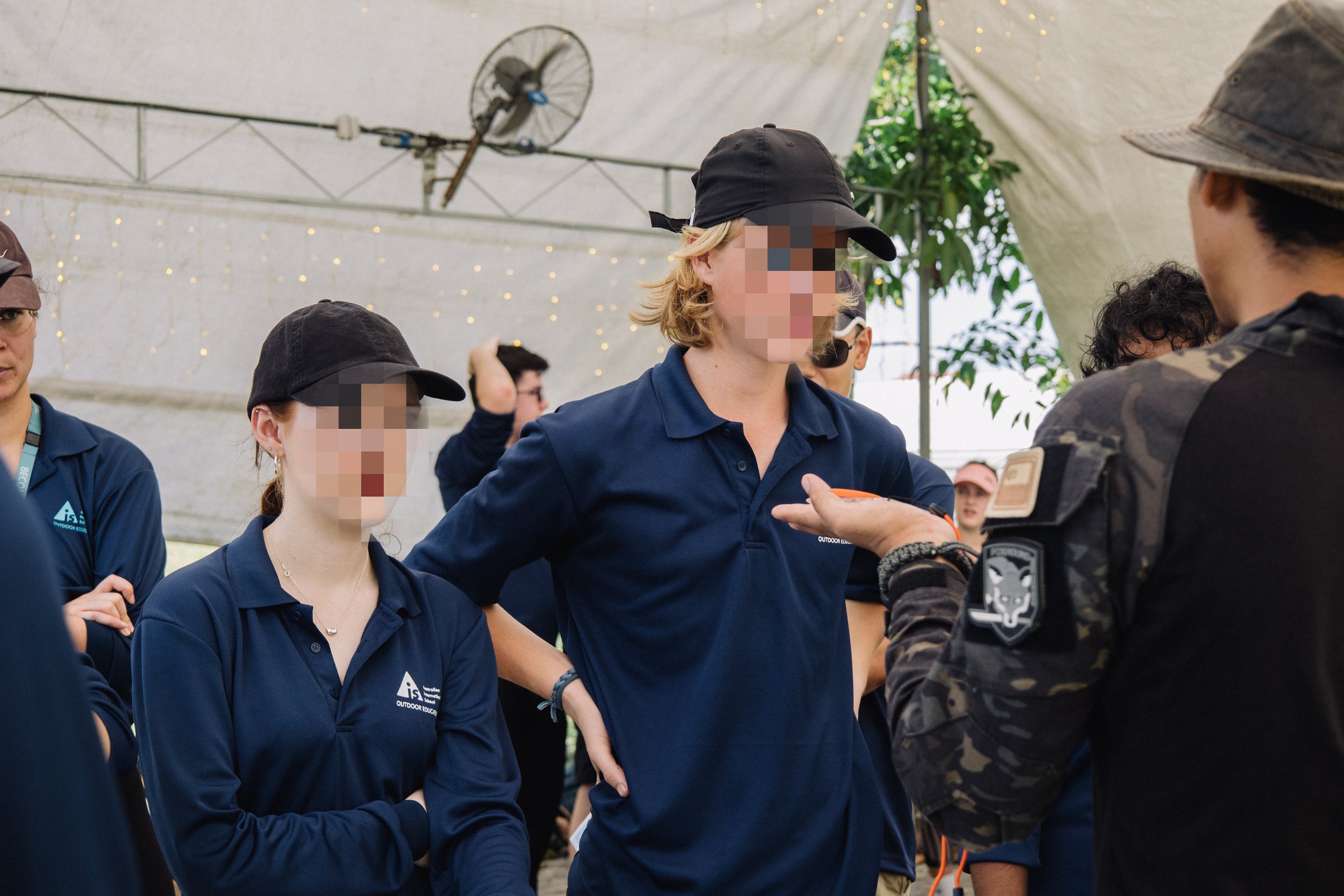
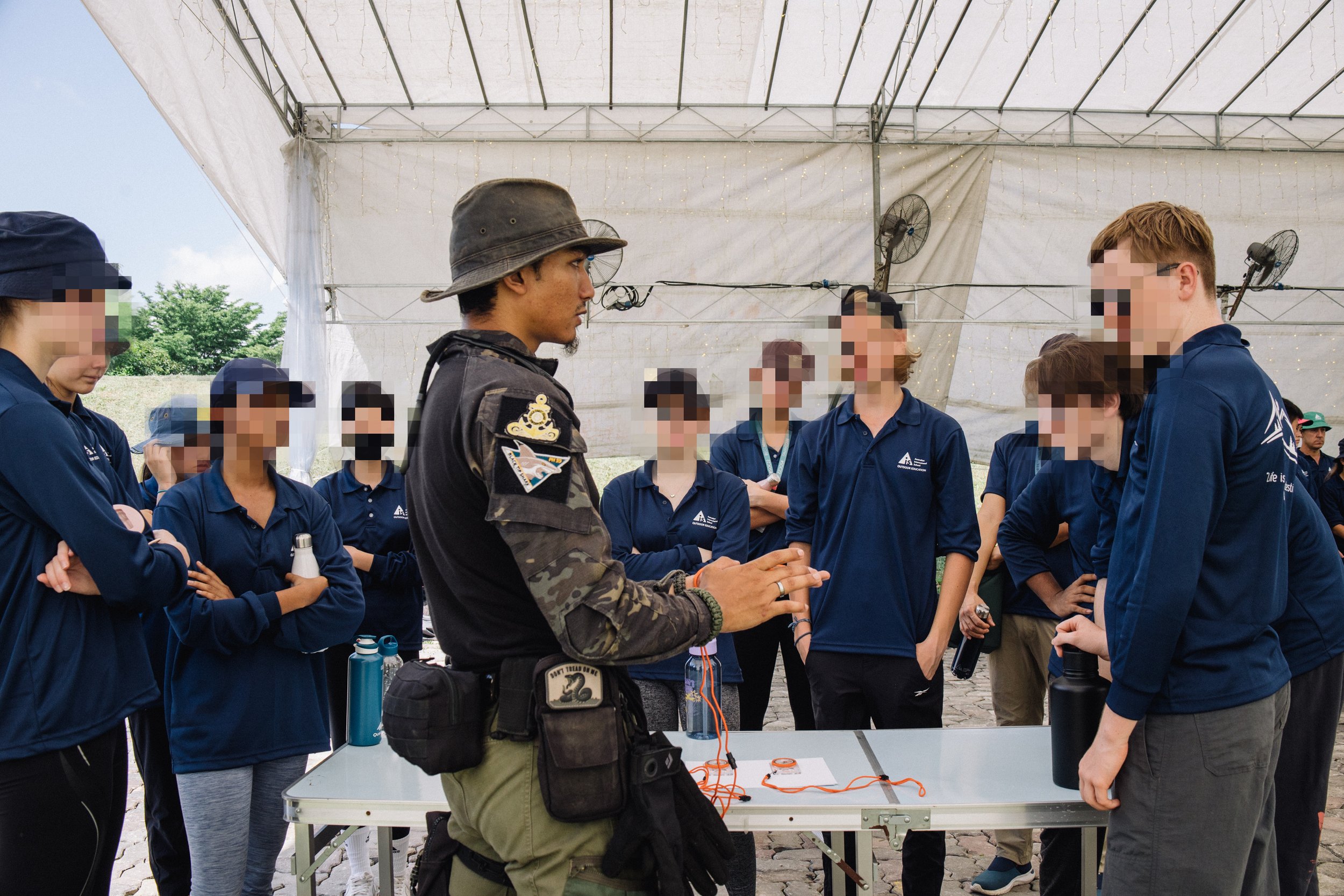
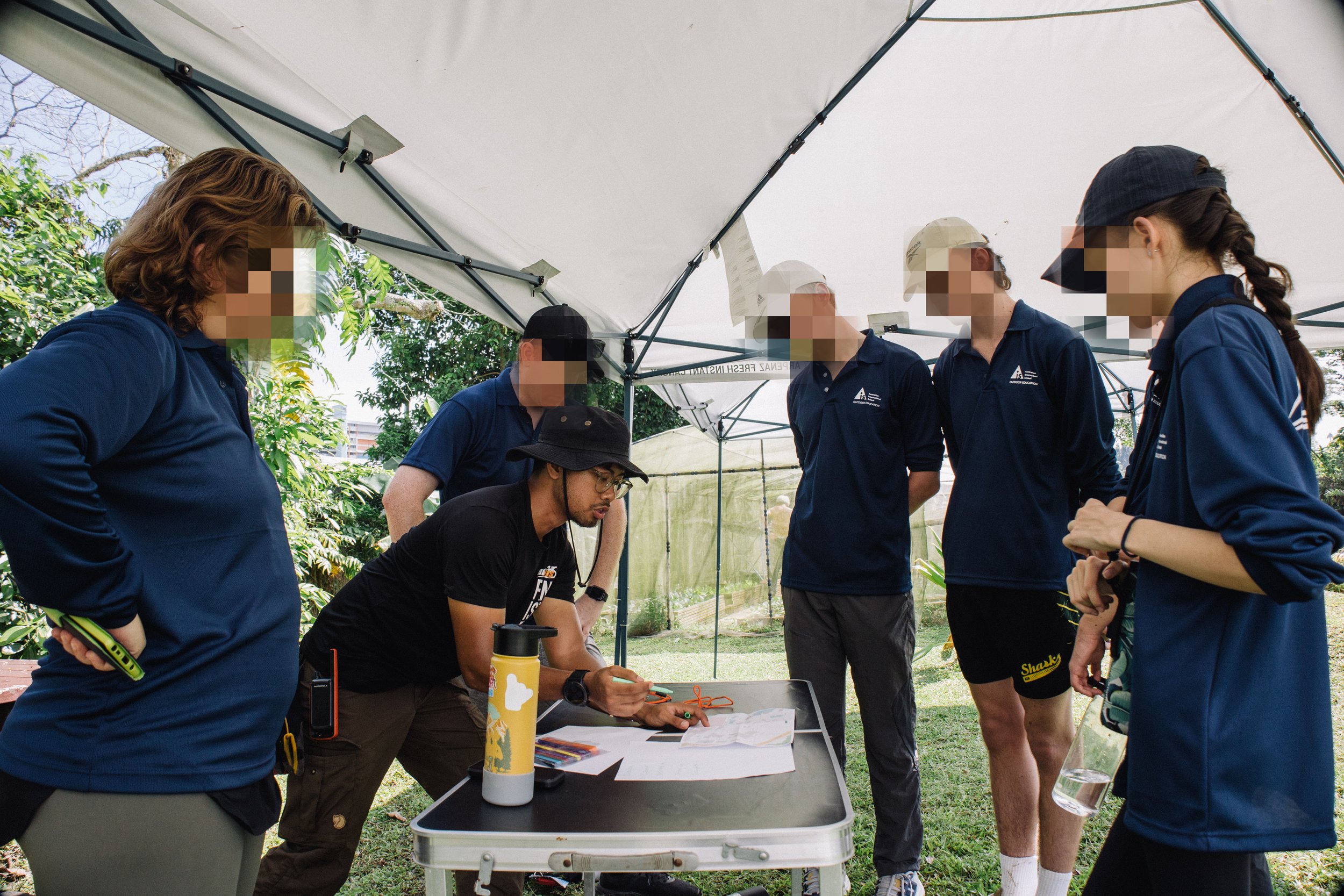

During this segment, we split the students into 4 clusters, and our instructors gave them a thorough crash course on navigation. With a map-drawing exercise, we wanted to show them that even without any teaching, they already have a basic understanding of navigation. The Sharks then learnt to identify the true north on the compass, gauge distances by pacing, and find their bearings.
The challenge presented to the students required them to come together and create a map of the yurt campsite. After the groups completed their maps, we gathered them together for an announcement. Eyes widened when a surprise element of this challenge was introduced; our instructors swapped their maps around after they were drawn! Questions of surprise and slight disbelief swarmed our ears as the students were instructed that now, they had to market (sell) each other’s maps to each other. The noise level raised as the students excitedly greeted their ‘new’ maps in passionate discussions regarding how best to sell them. The enthusiasm was invigorating, as every student took on the challenge in their stride and sought to only perform at their best.
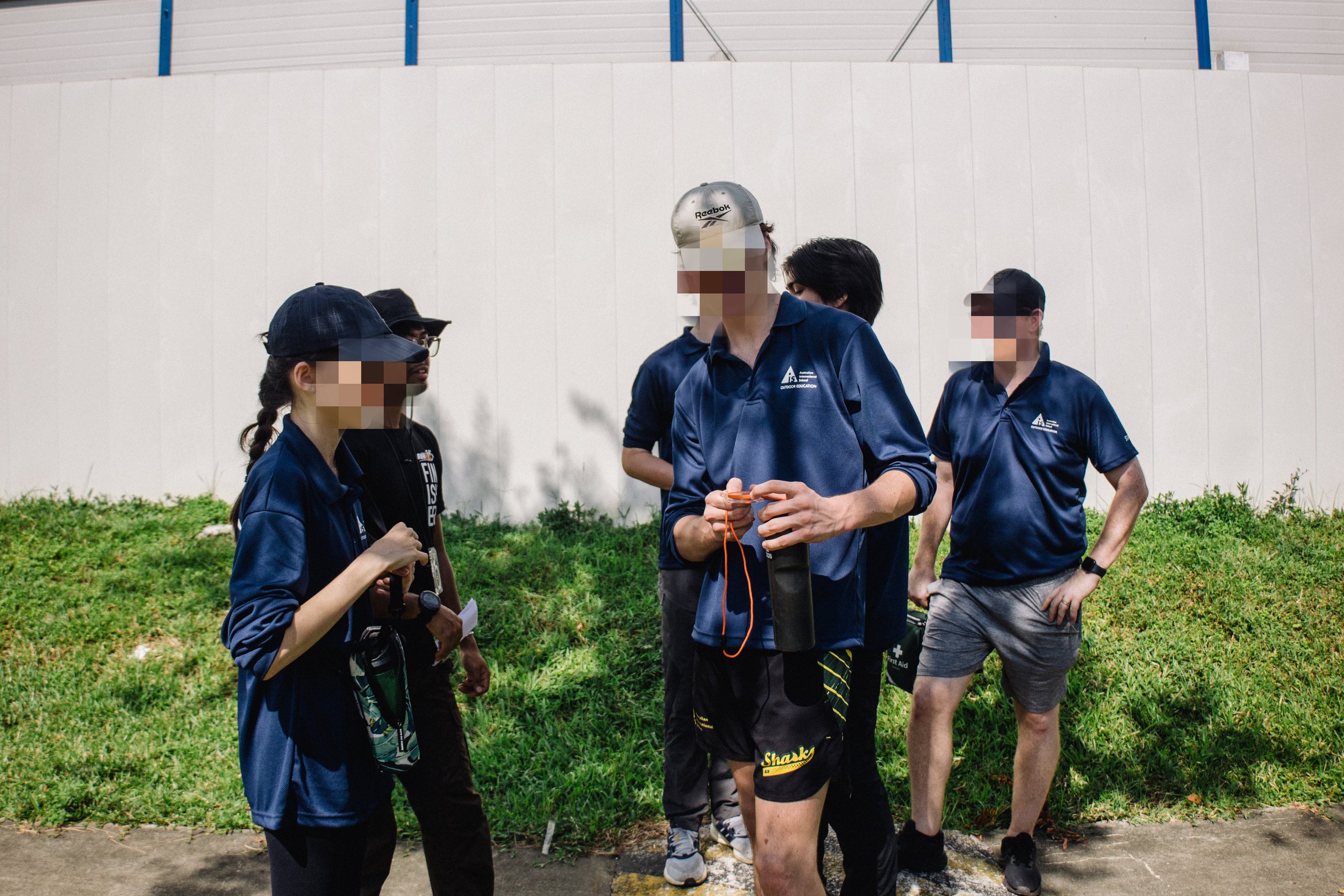
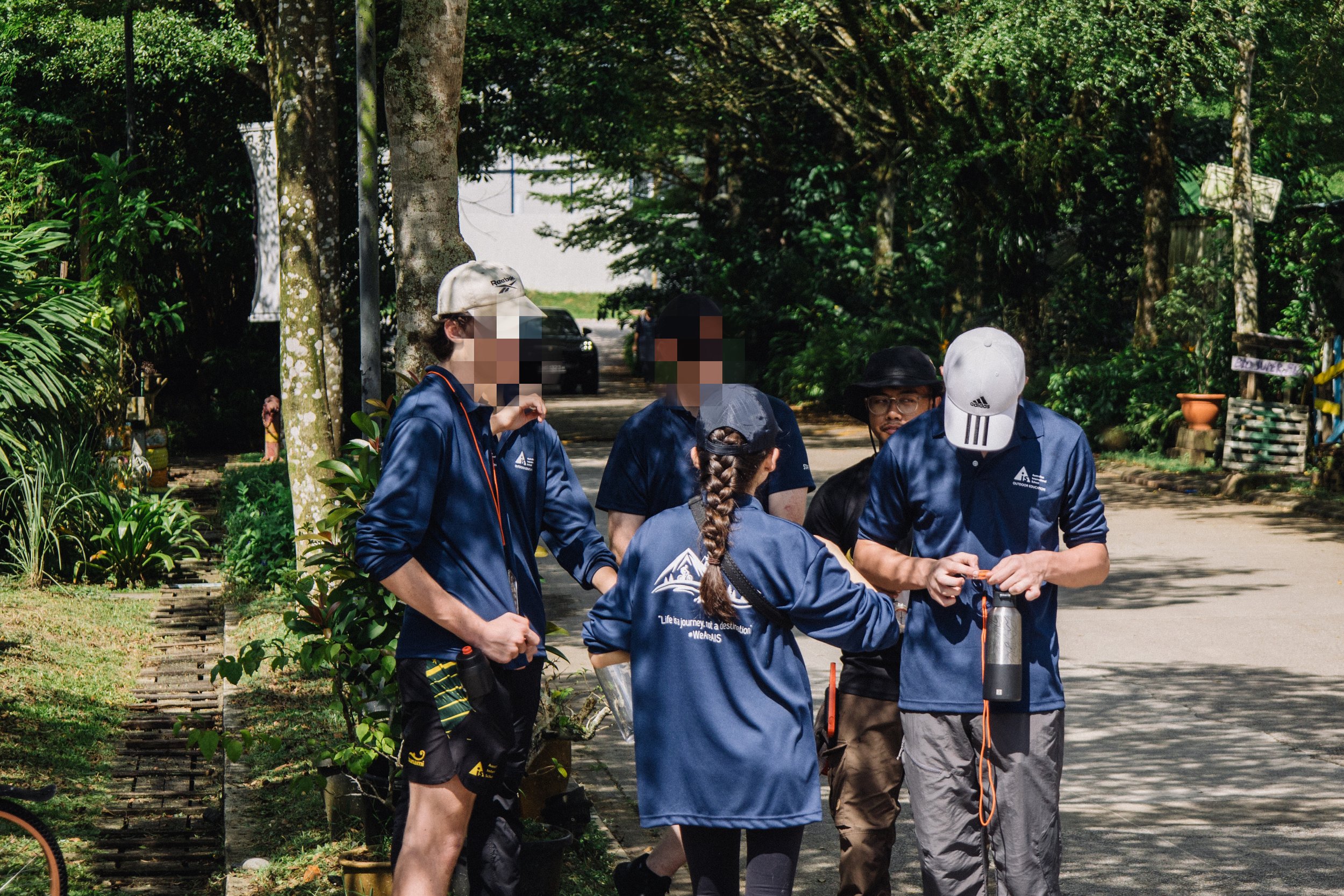
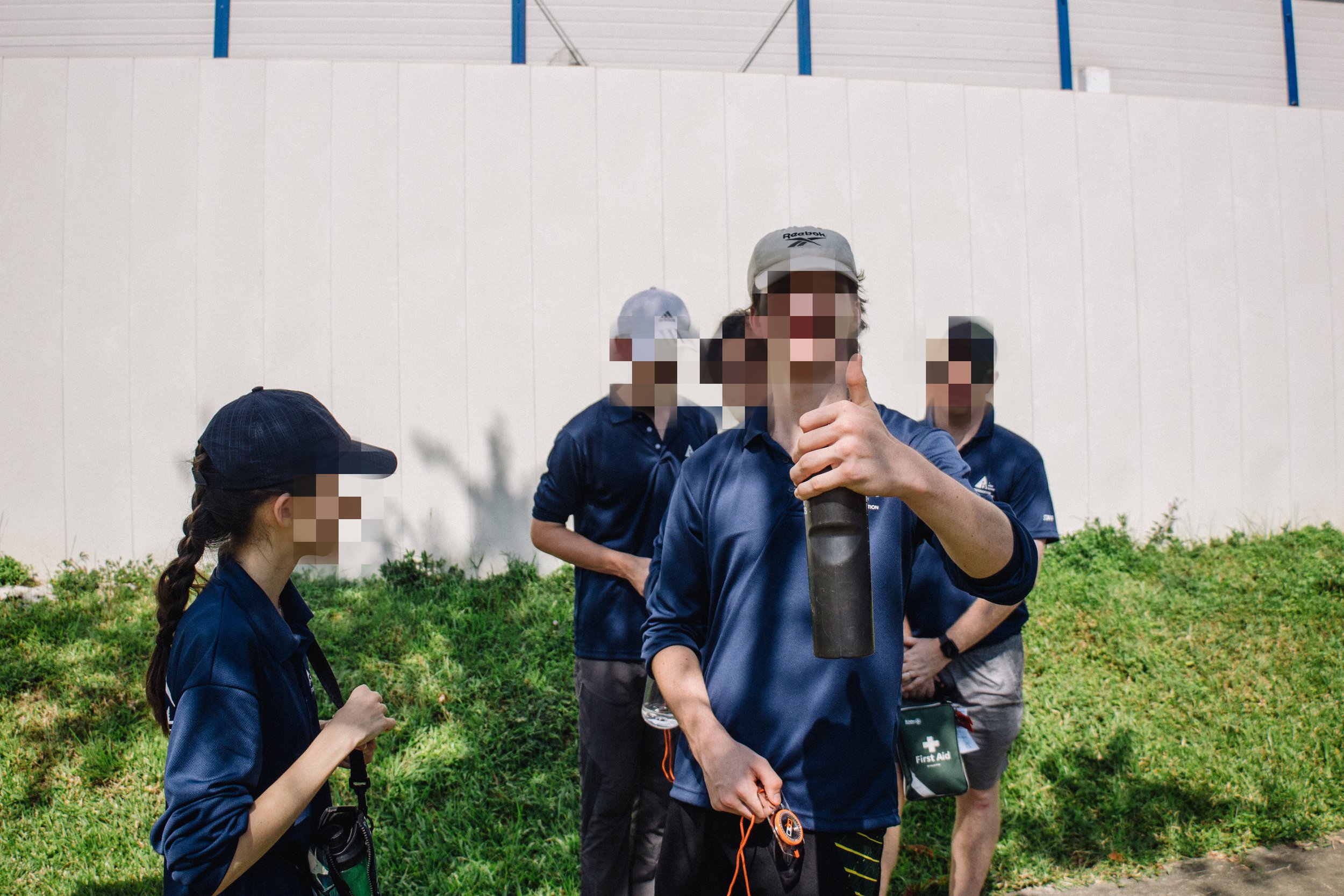
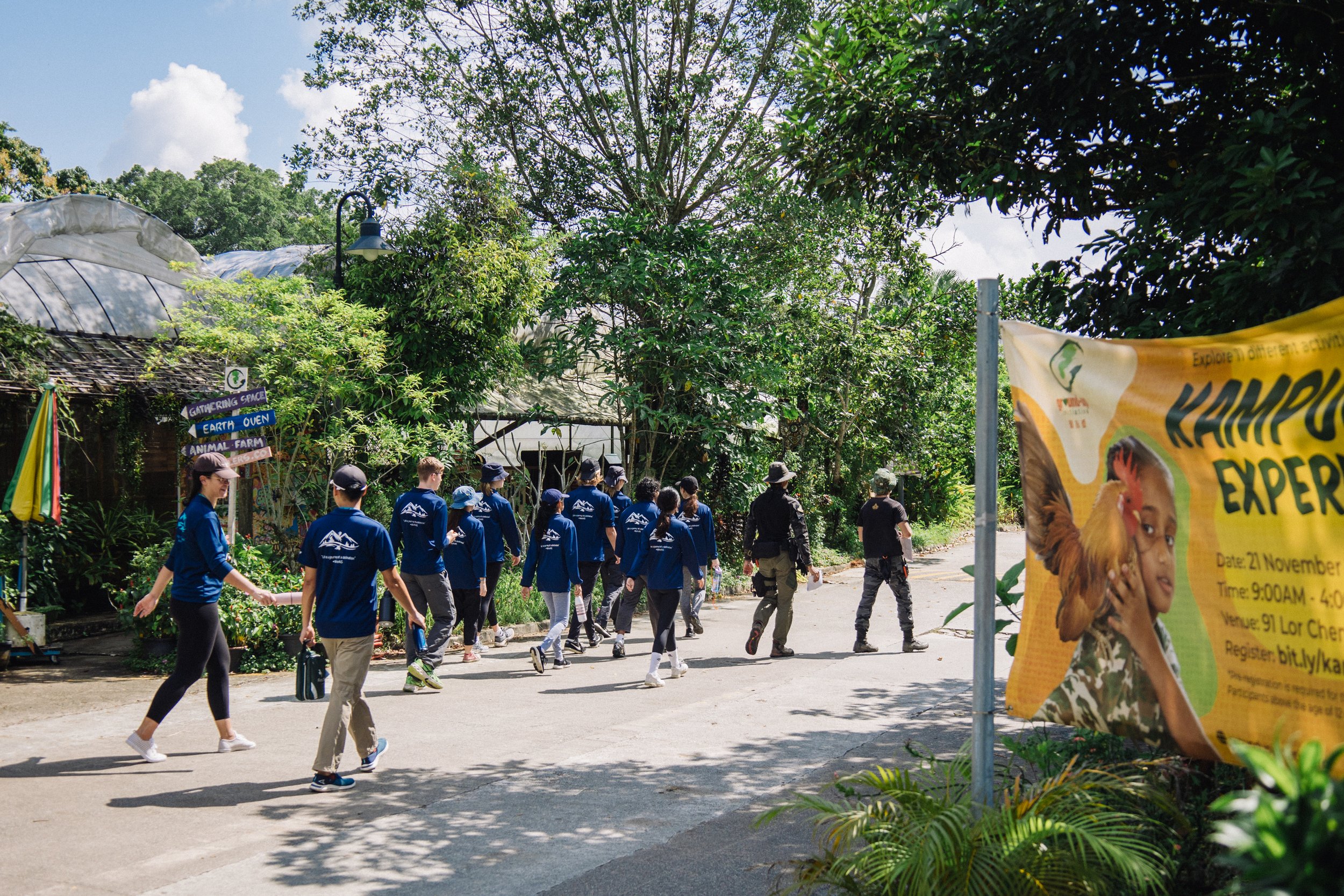
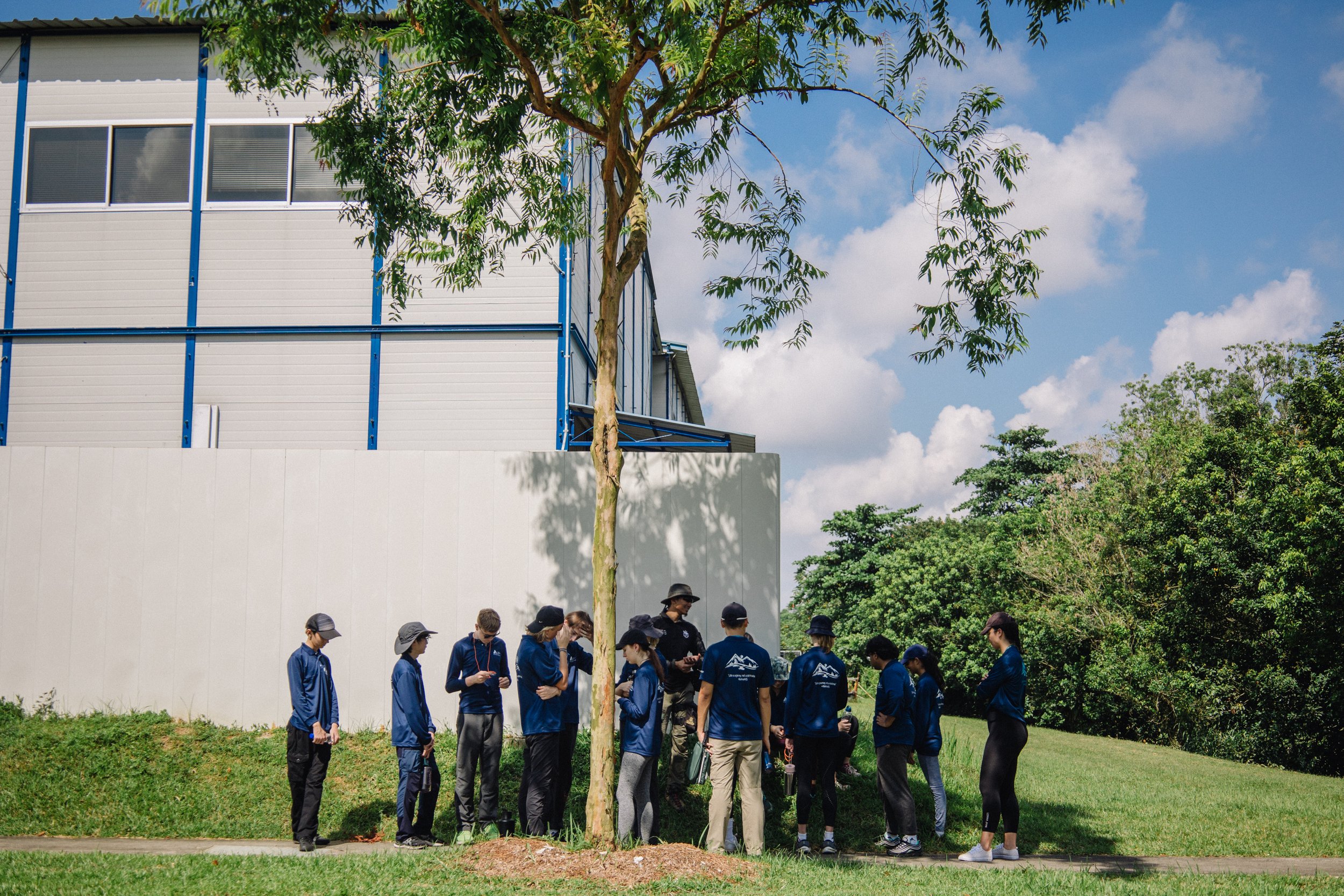
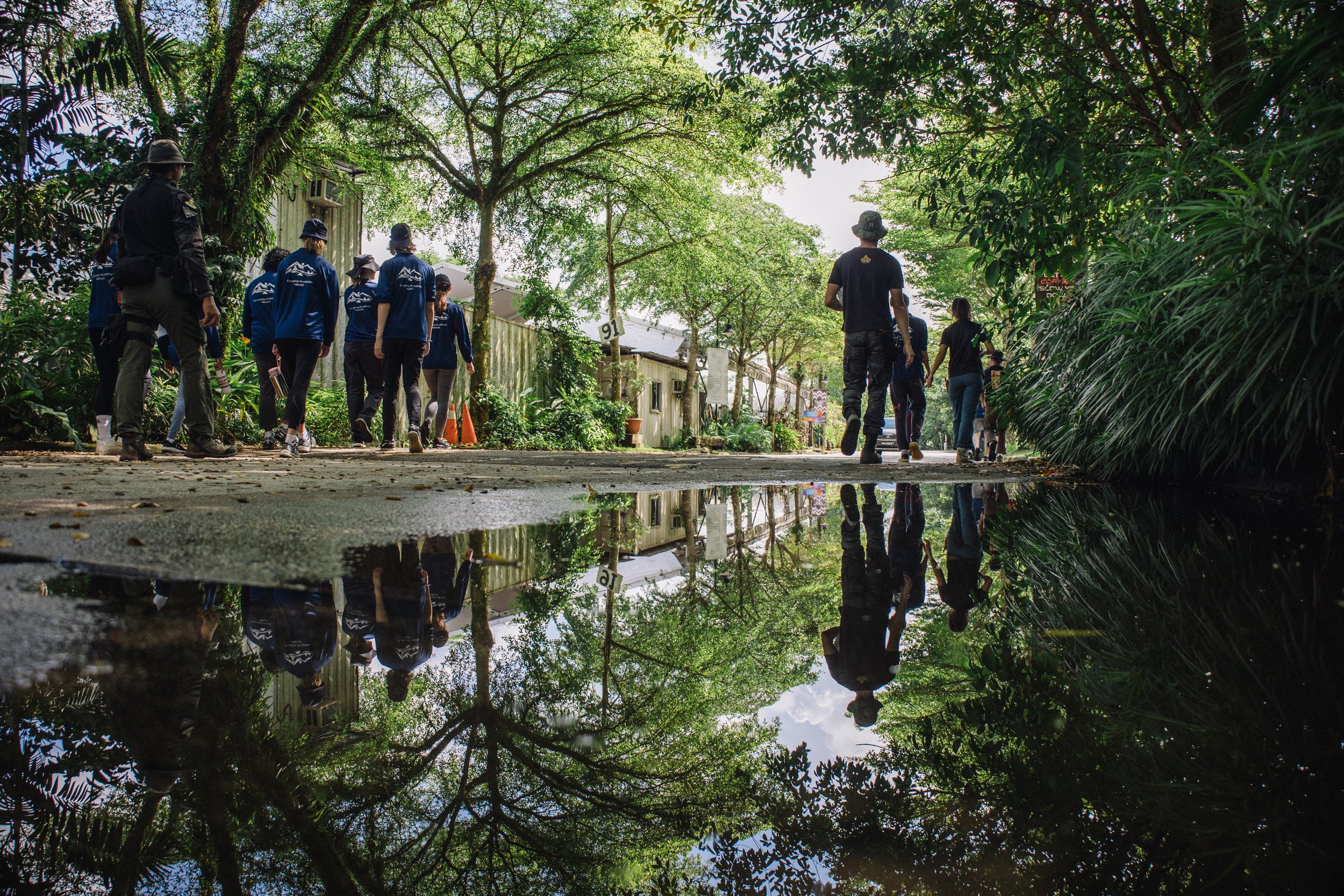
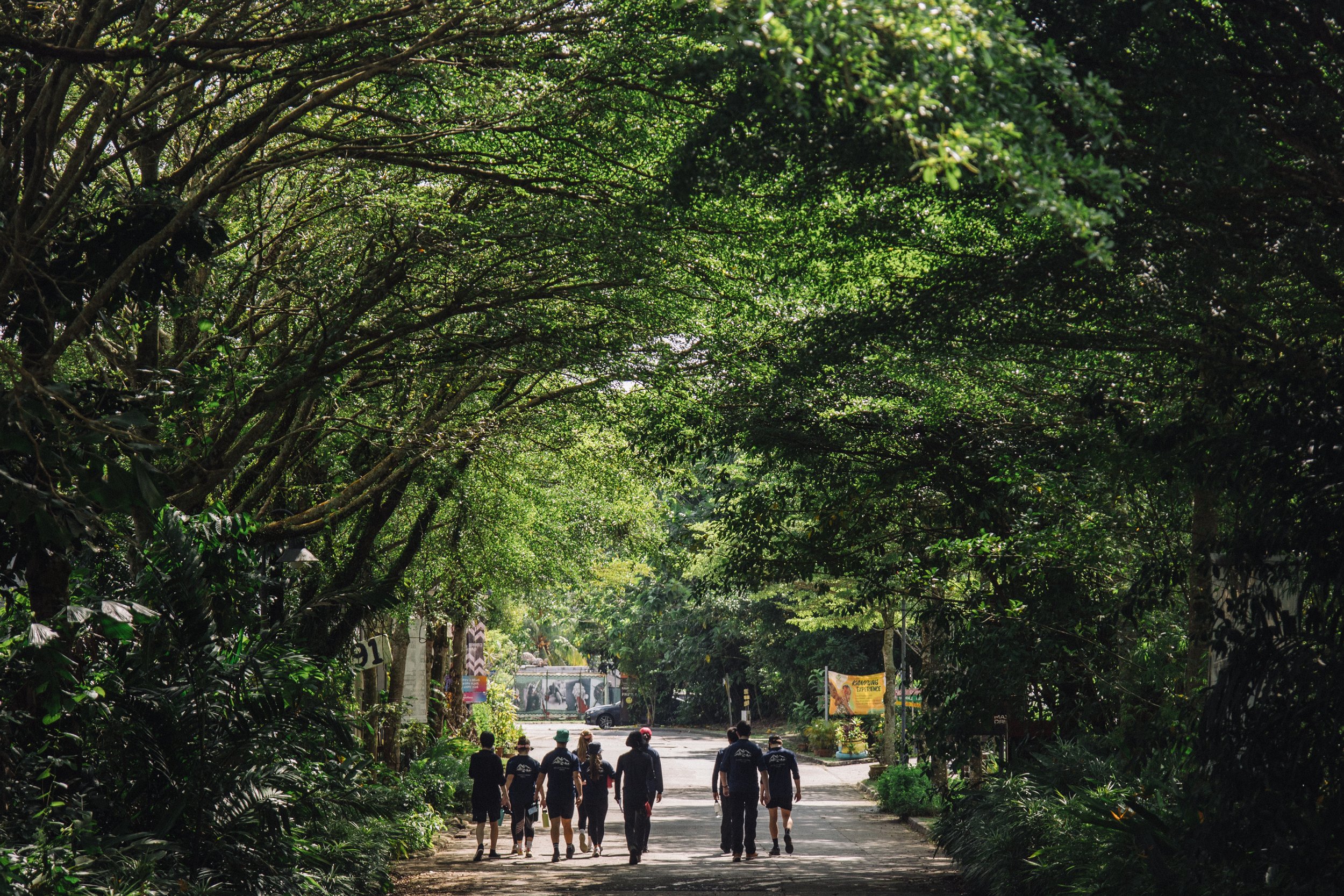
Being one of the first few segments, these Sharks are only getting a taste of what they can experience with us. So, let’s keep going.
Keep that Spark Alive!
The air initially buzzed with thrill and excitement. Later on, we’ll see either sparks of smoky success or lulls of discouraged spirits.
Knowing how to start a fire is good enough to prepare you for survival in the outdoors — but the truth is that it will not get you far. You also need to learn how to keep the fire alive and thriving, long enough to cook a meal and keep away predators throughout the night.
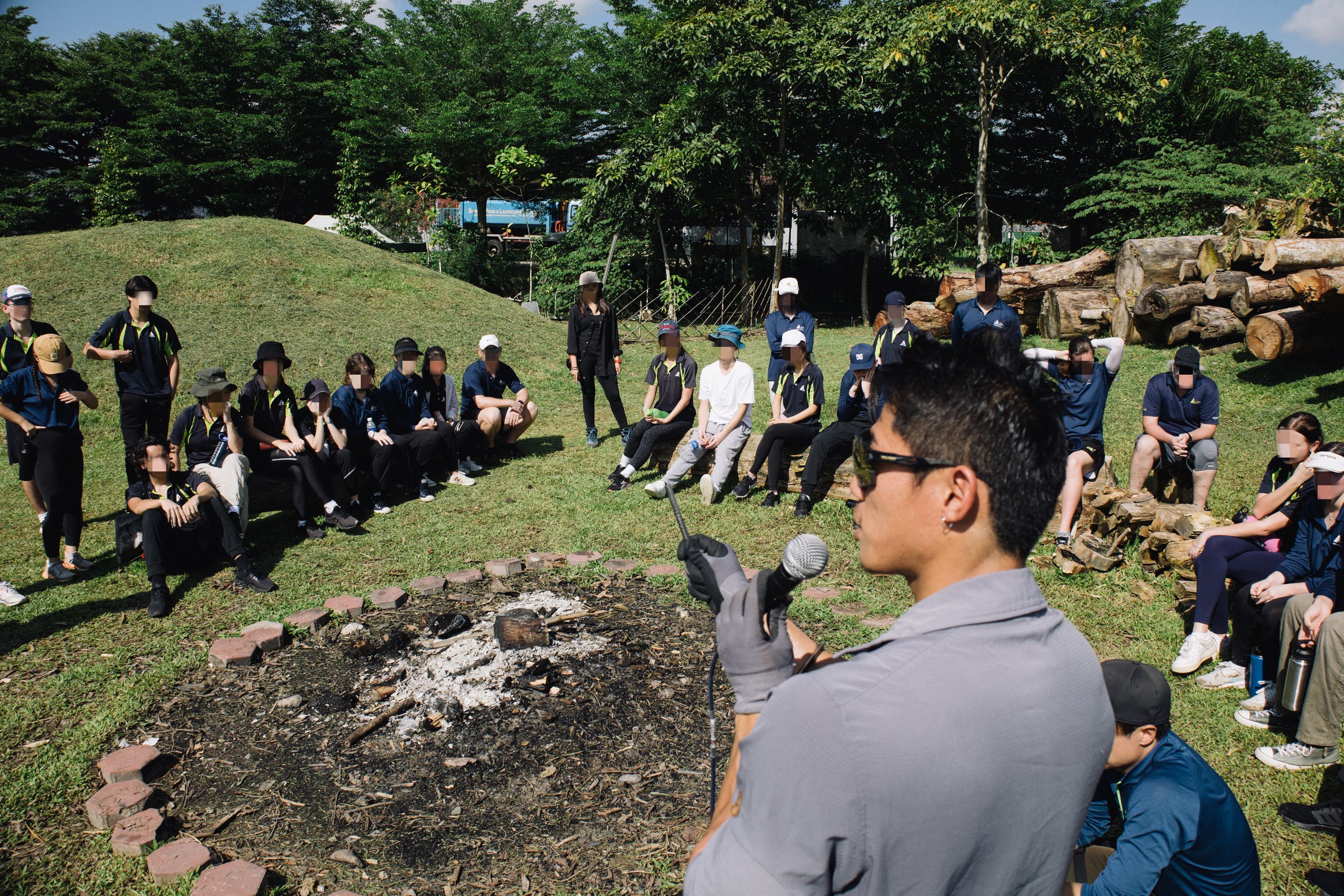
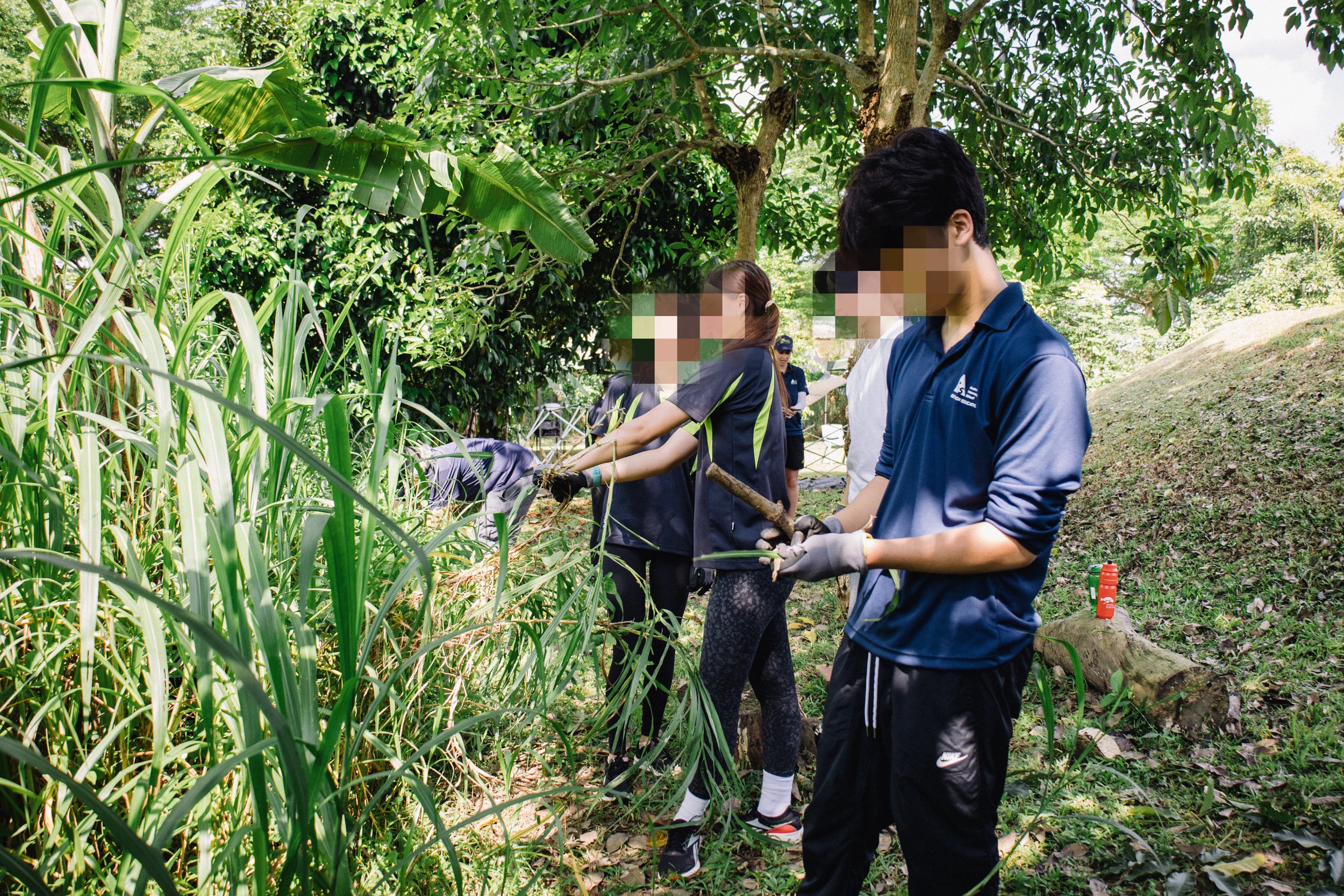
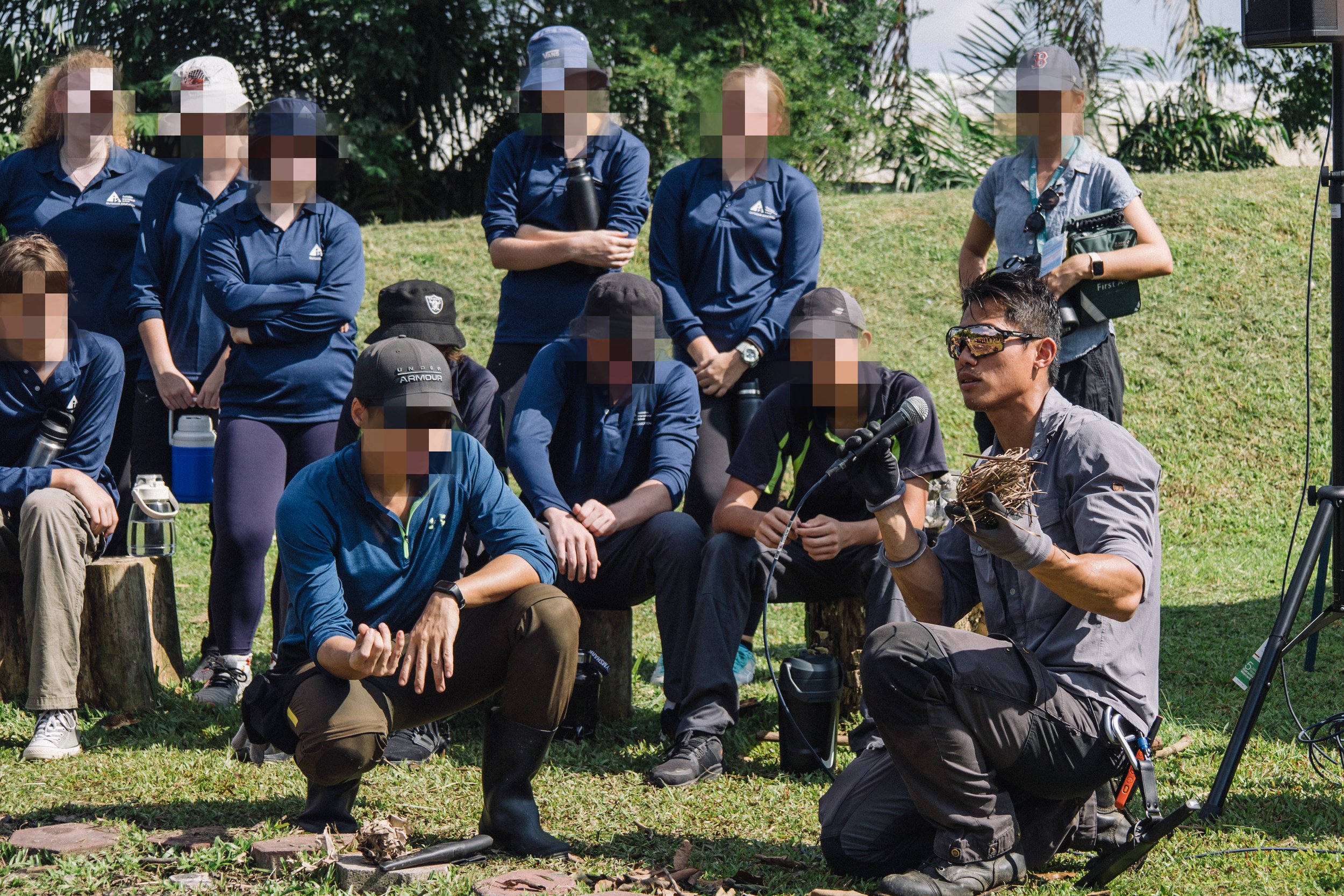
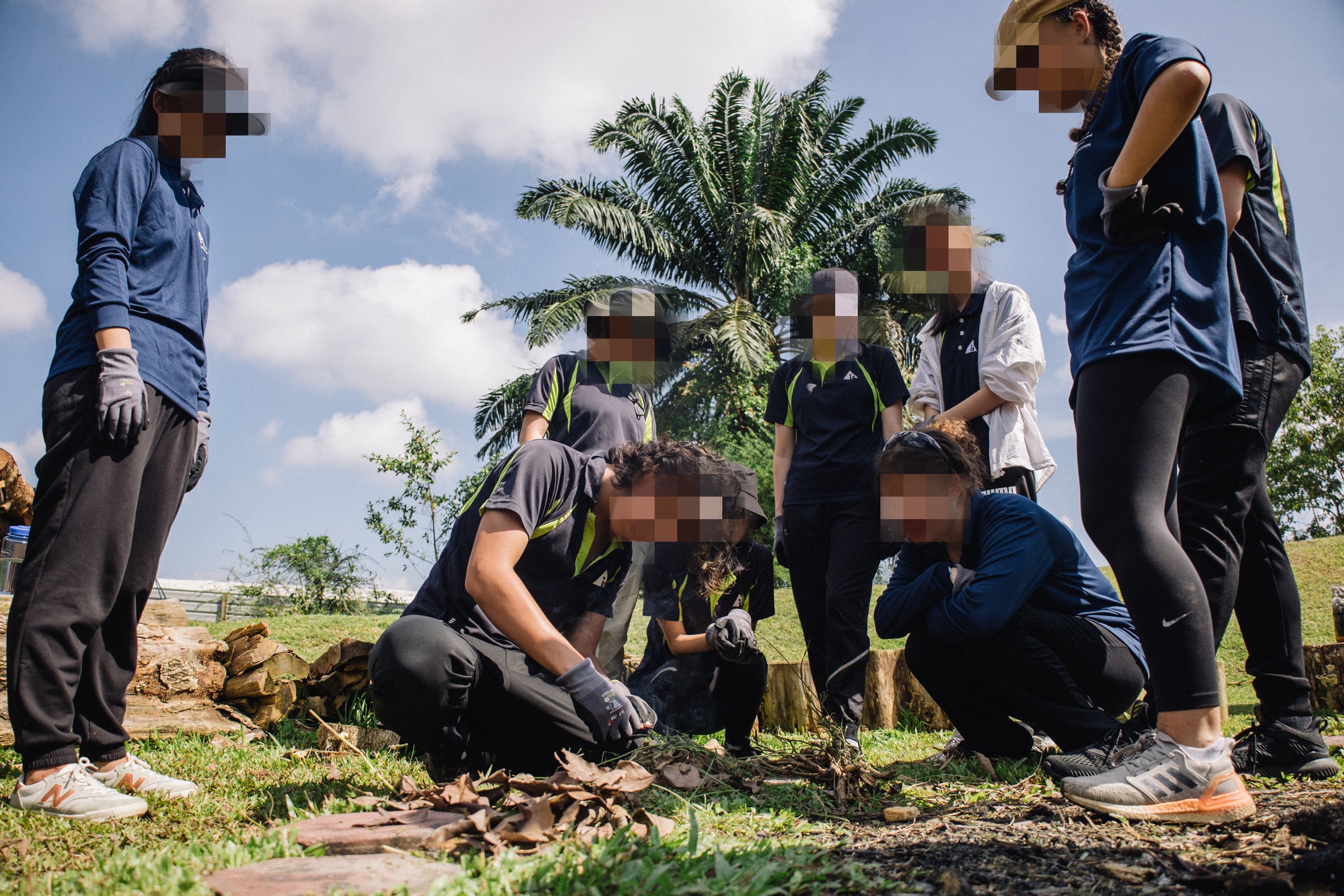

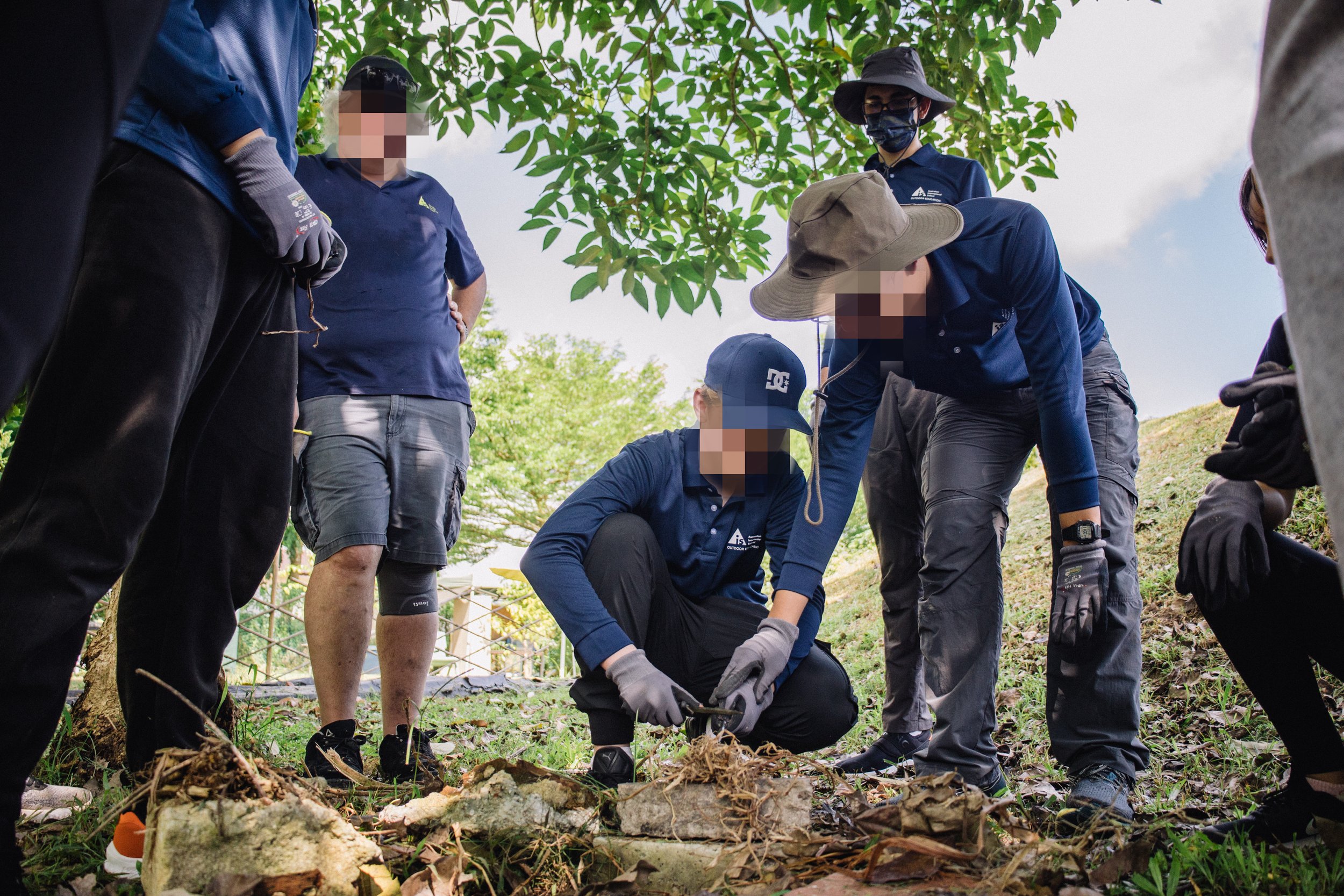
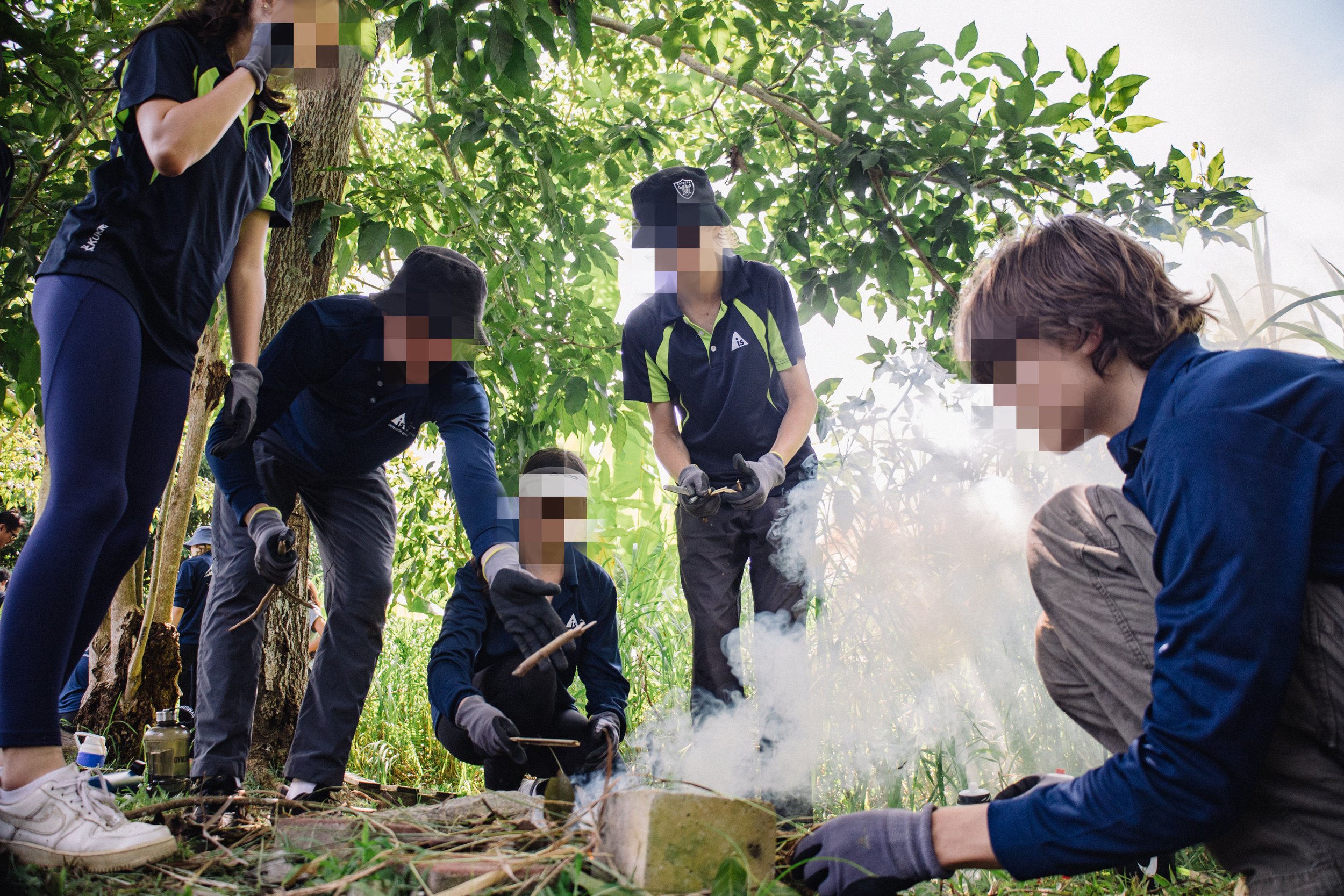

During this segment, our instructors introduced the Sharks to fire lighting. Lighting a fire gives us warmth and light, keeps away predators, enables us to cook, and serves as a signal if you are lost in the forest. We then brought out a ferrocerium rod and bushcraft knife, demonstrating the right technique to use them. We also showed them the different natural materials required to start a fire, before tasking them to forage for these materials in preparation for the challenge at hand; the students have to start a fire on their own and keep the fire long enough to successfully boil eggs in a pot of water.
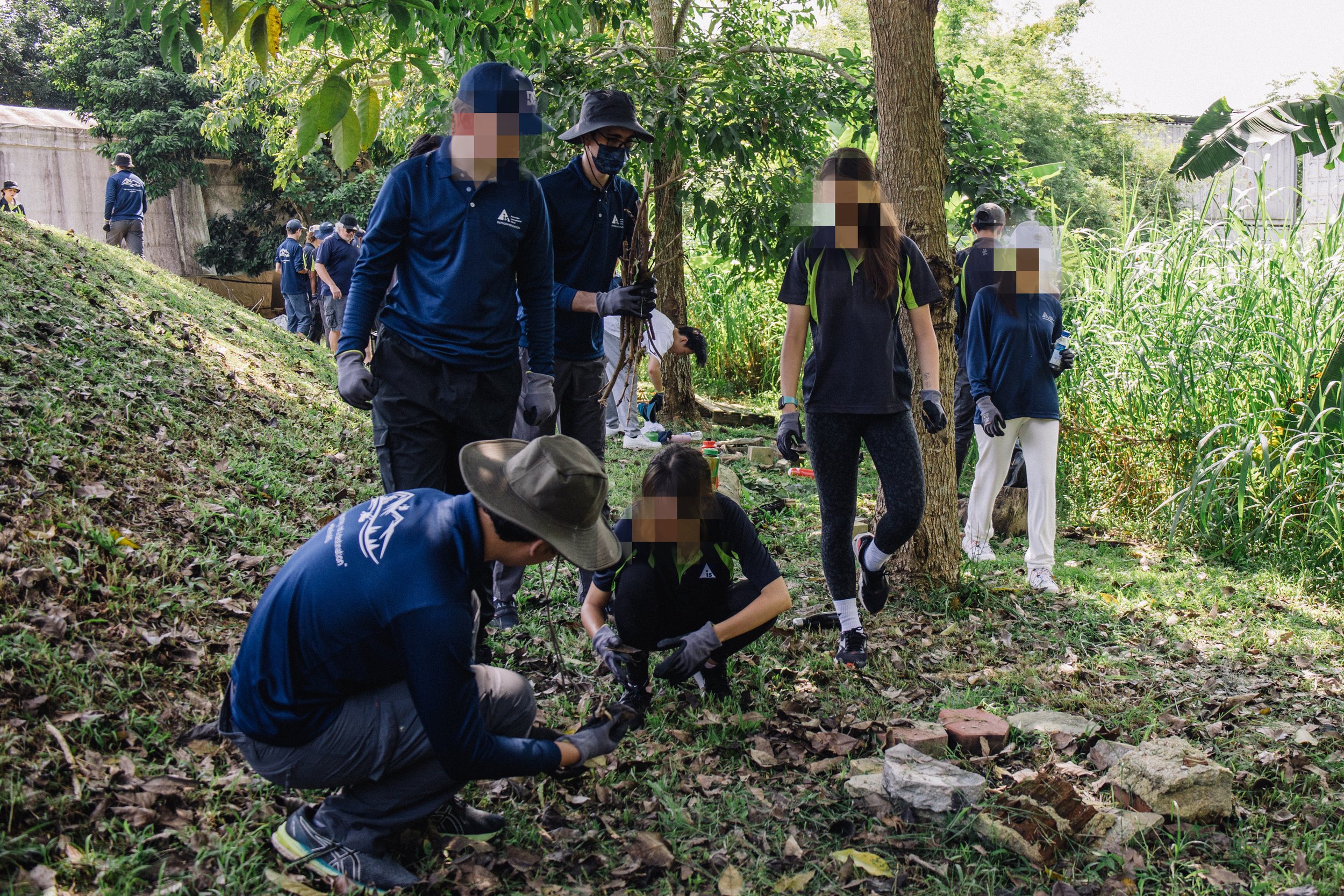
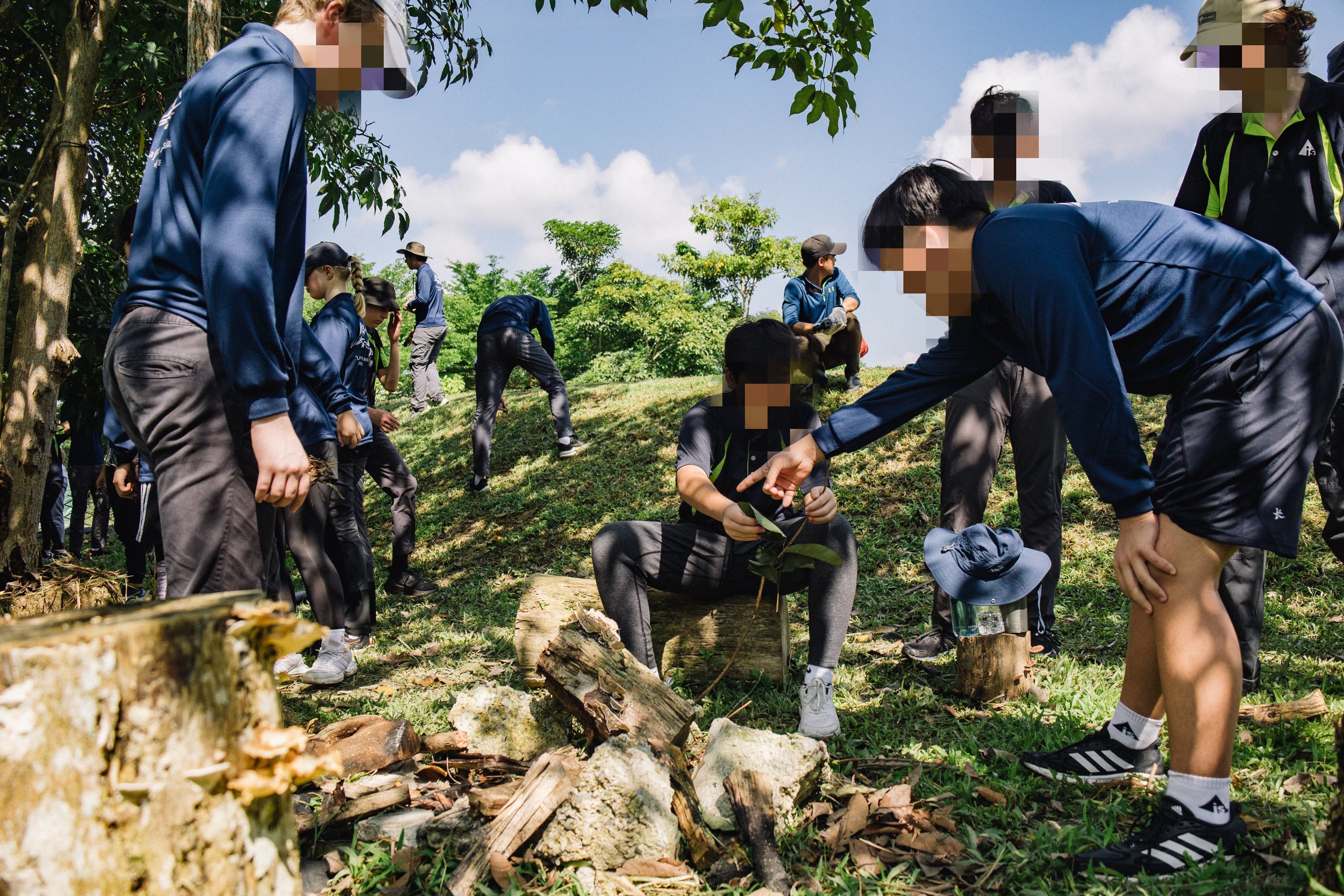
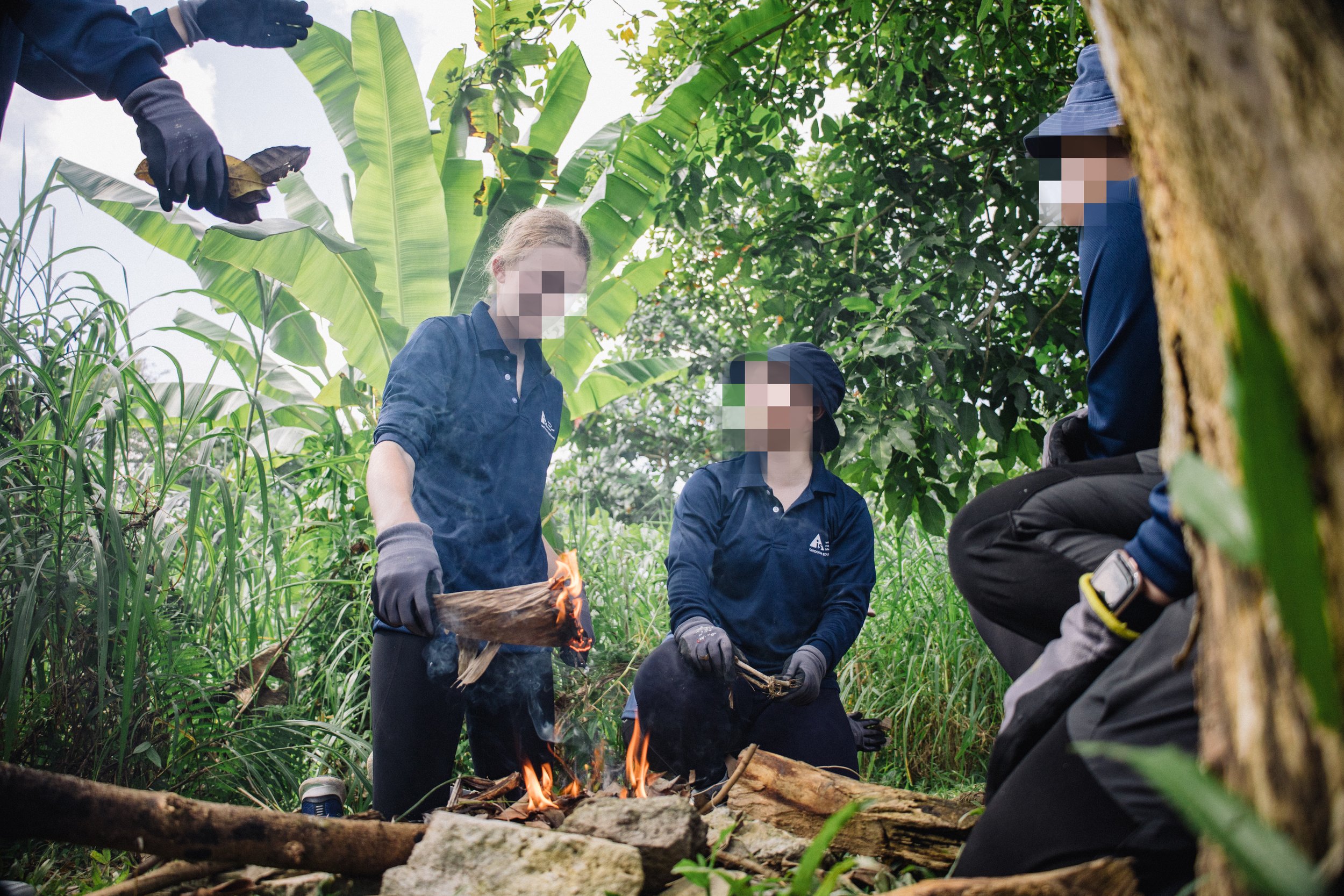
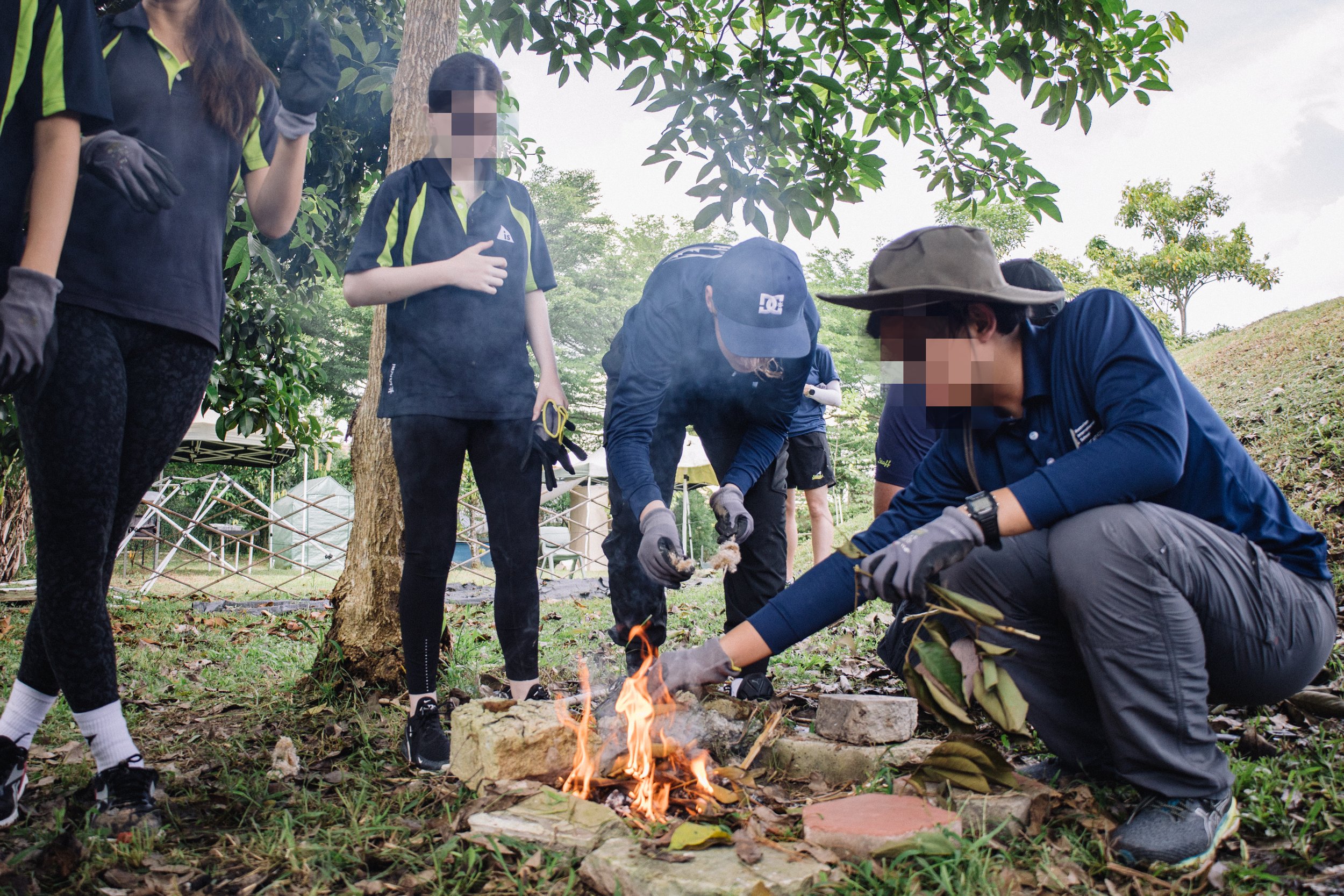

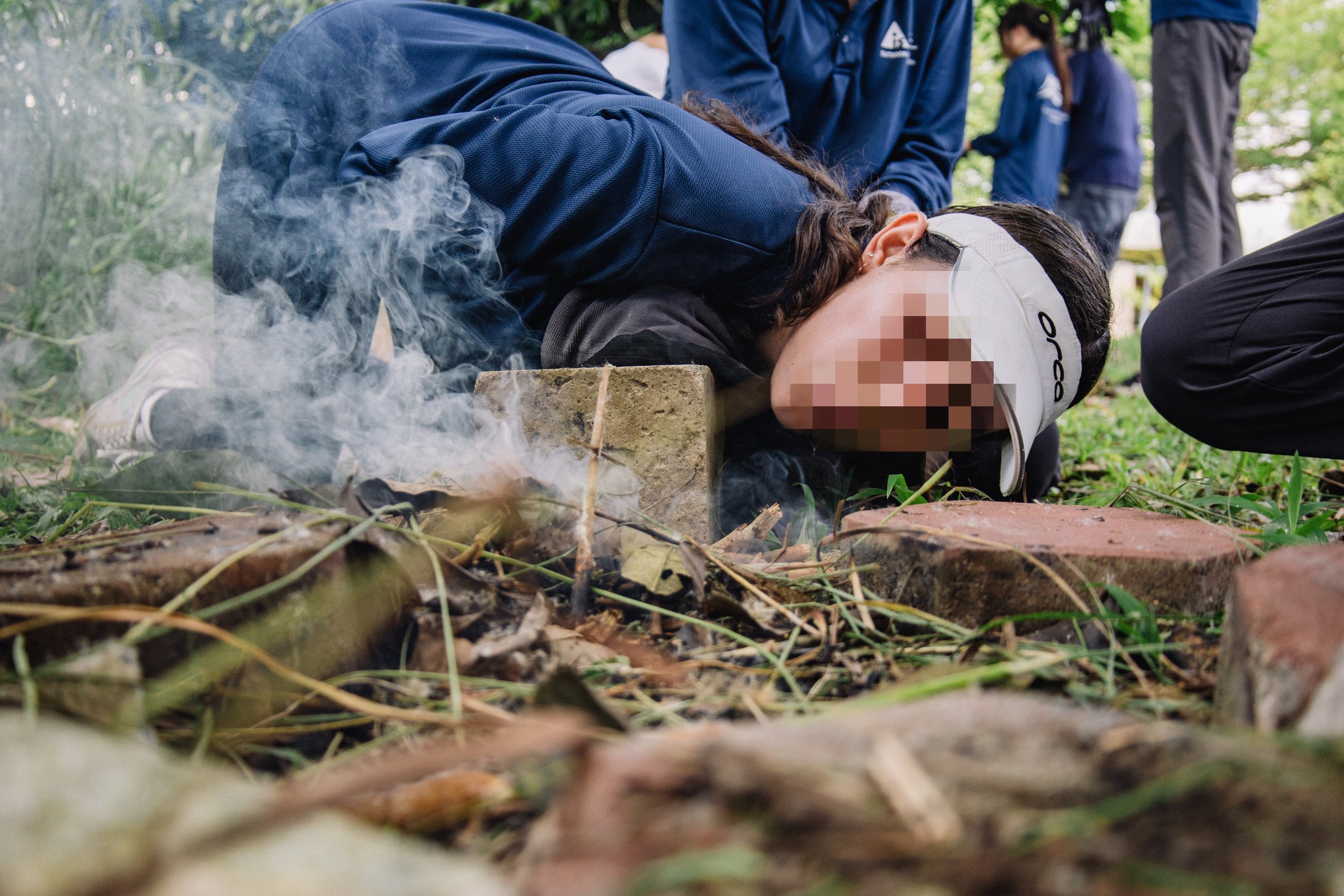
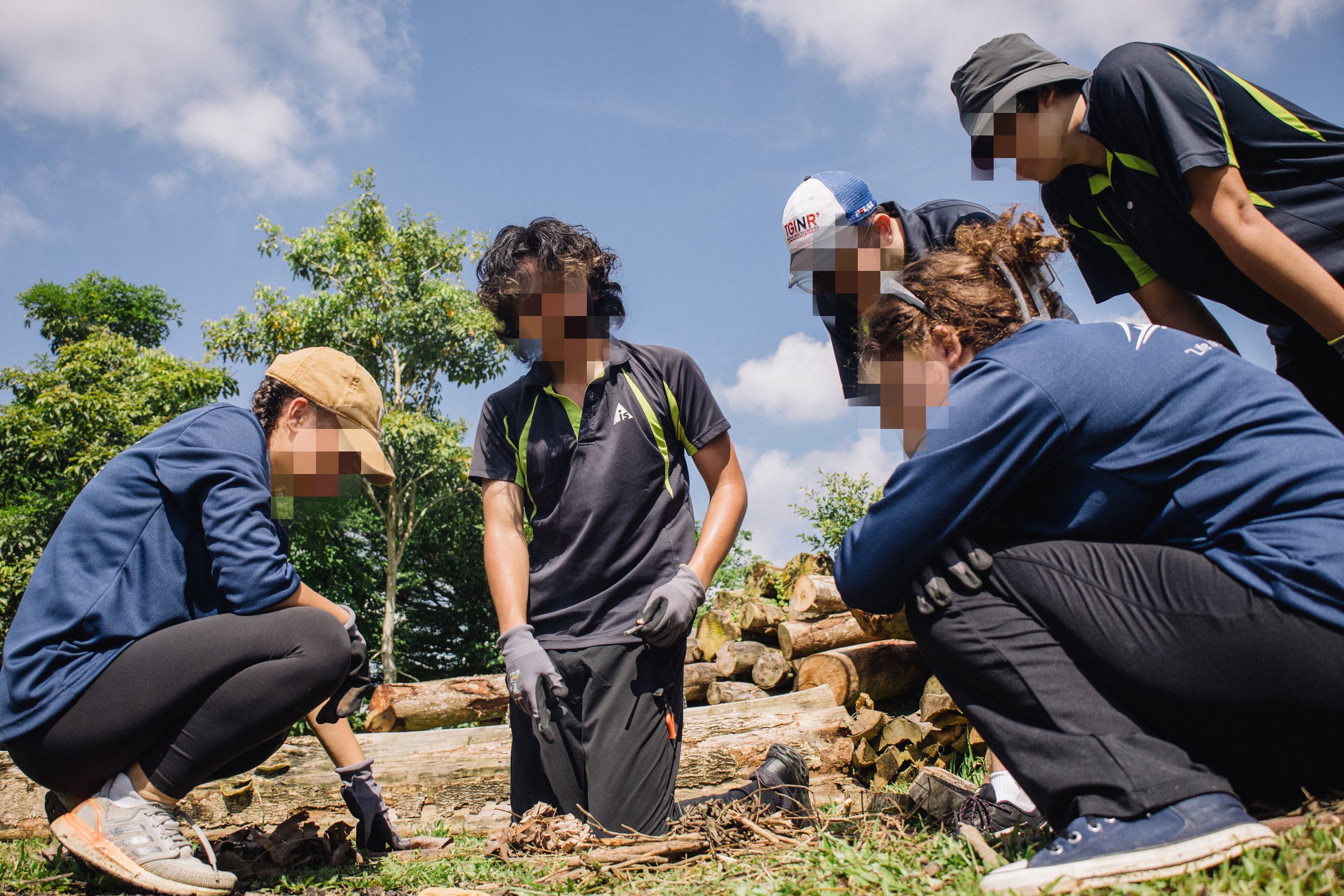
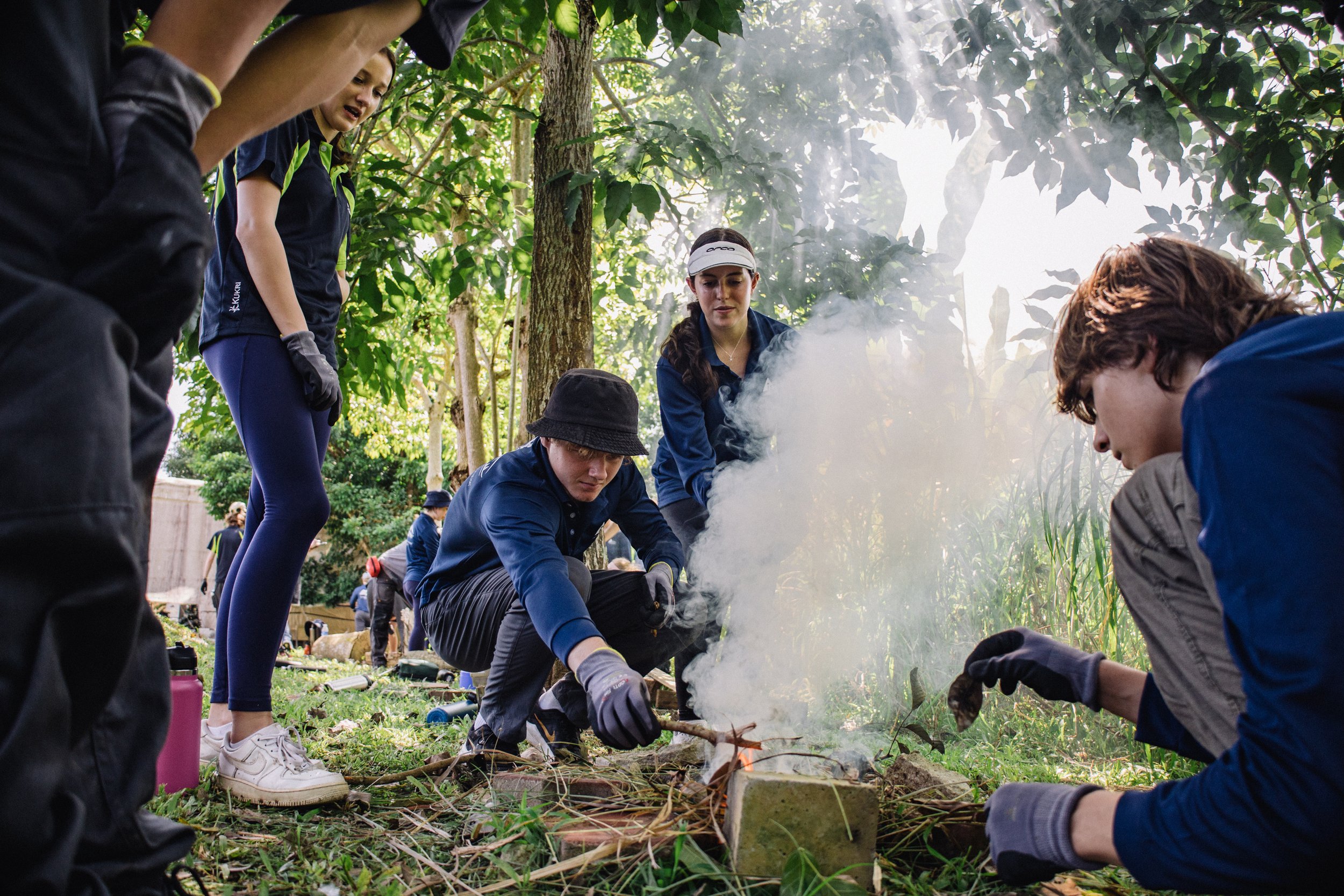
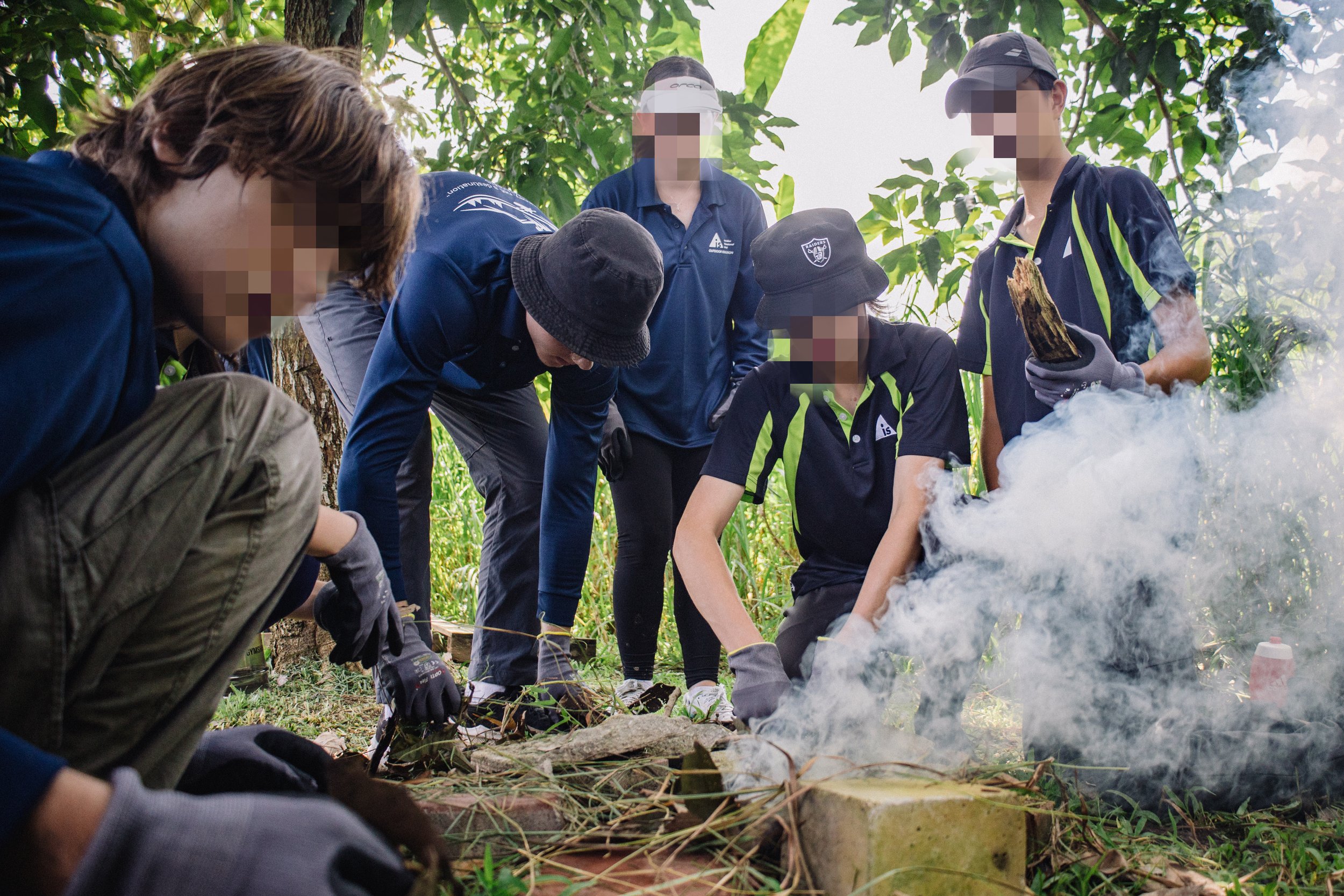
Once the task was given, heads came together and increasingly loud voices filled every space of the campground. We could see each group moving quickly to assign responsibilities; someone collects firewood, another collects dried leaves, etc. Some Sharks began running around urgently to find materials, while some stayed behind to get the fire started. There were various results to witness at the end of the challenge; some groups had firm, hard-boiled eggs that they happily munched on, while others yelped at the liquid mess that spilled from the shells of their eggs. Some groups weren’t content, coming up to us and asking, “Would we get to try again?”
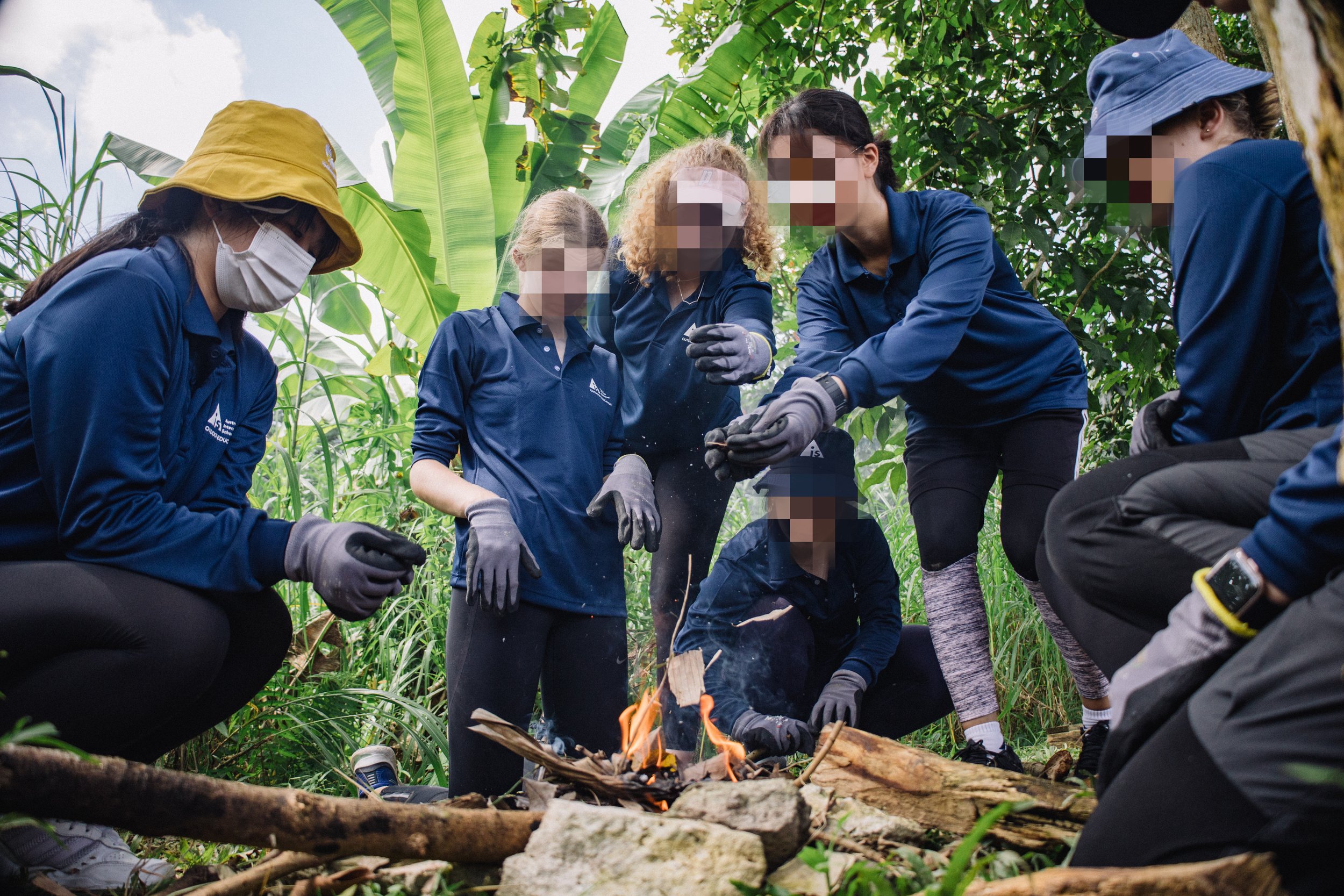

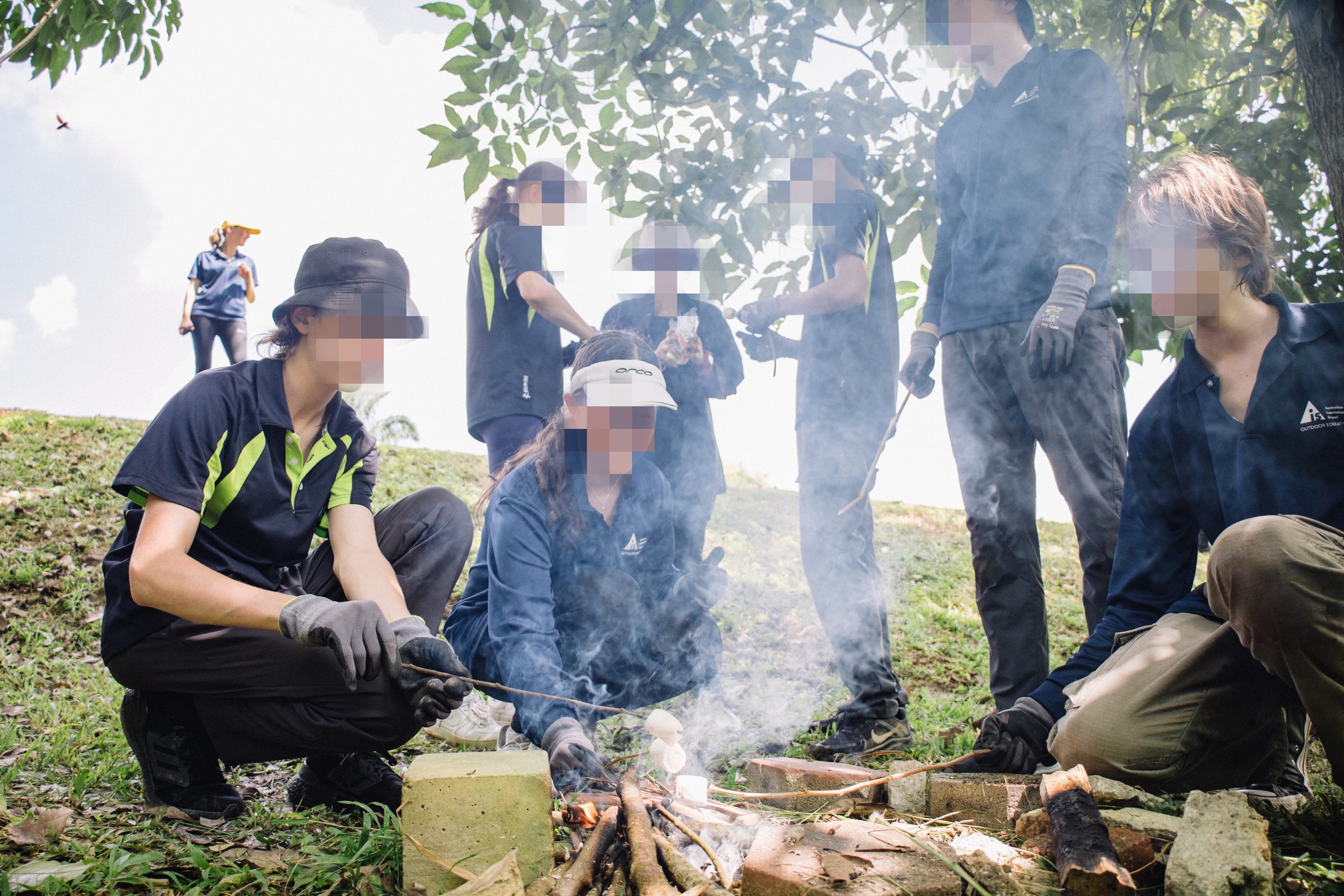

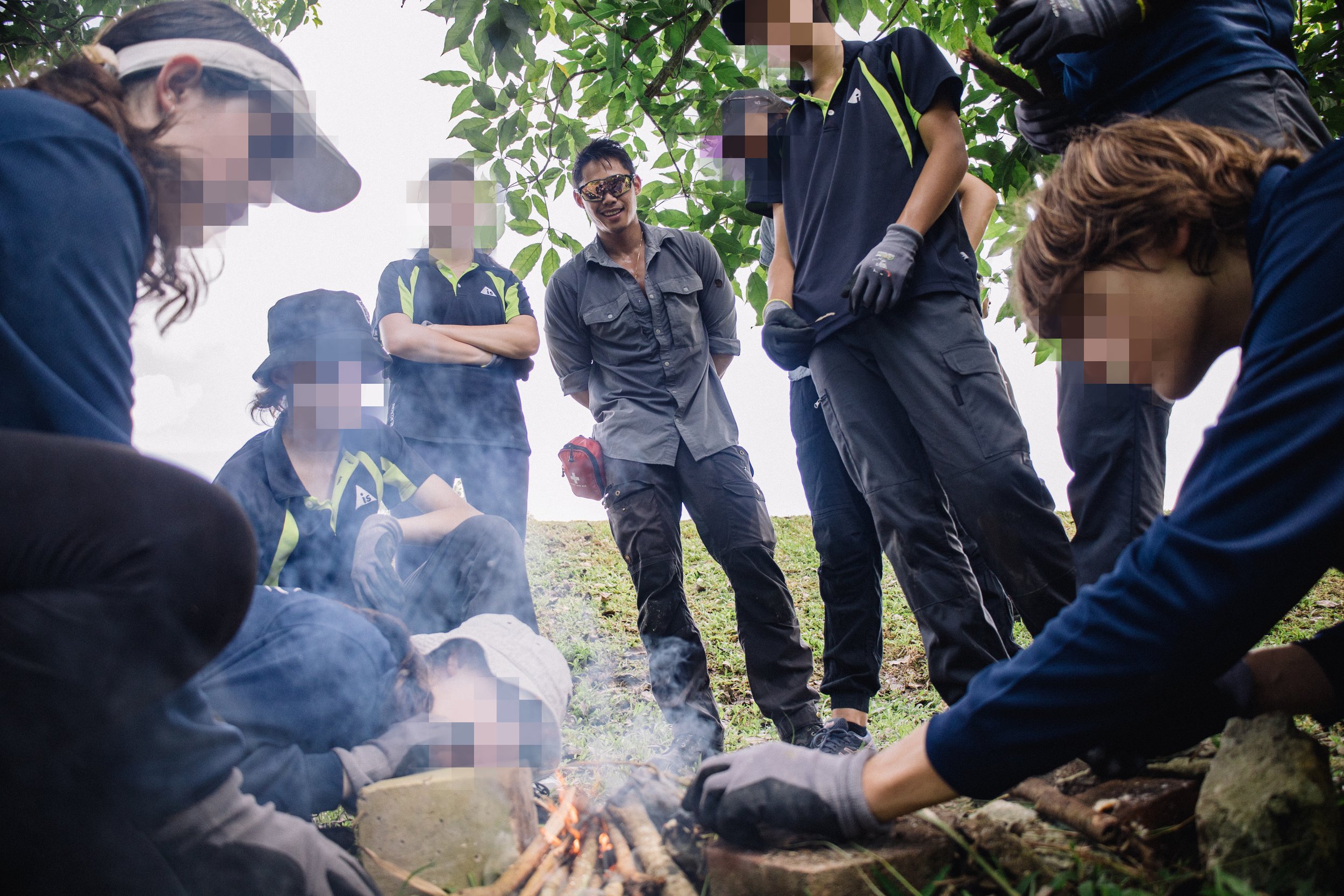
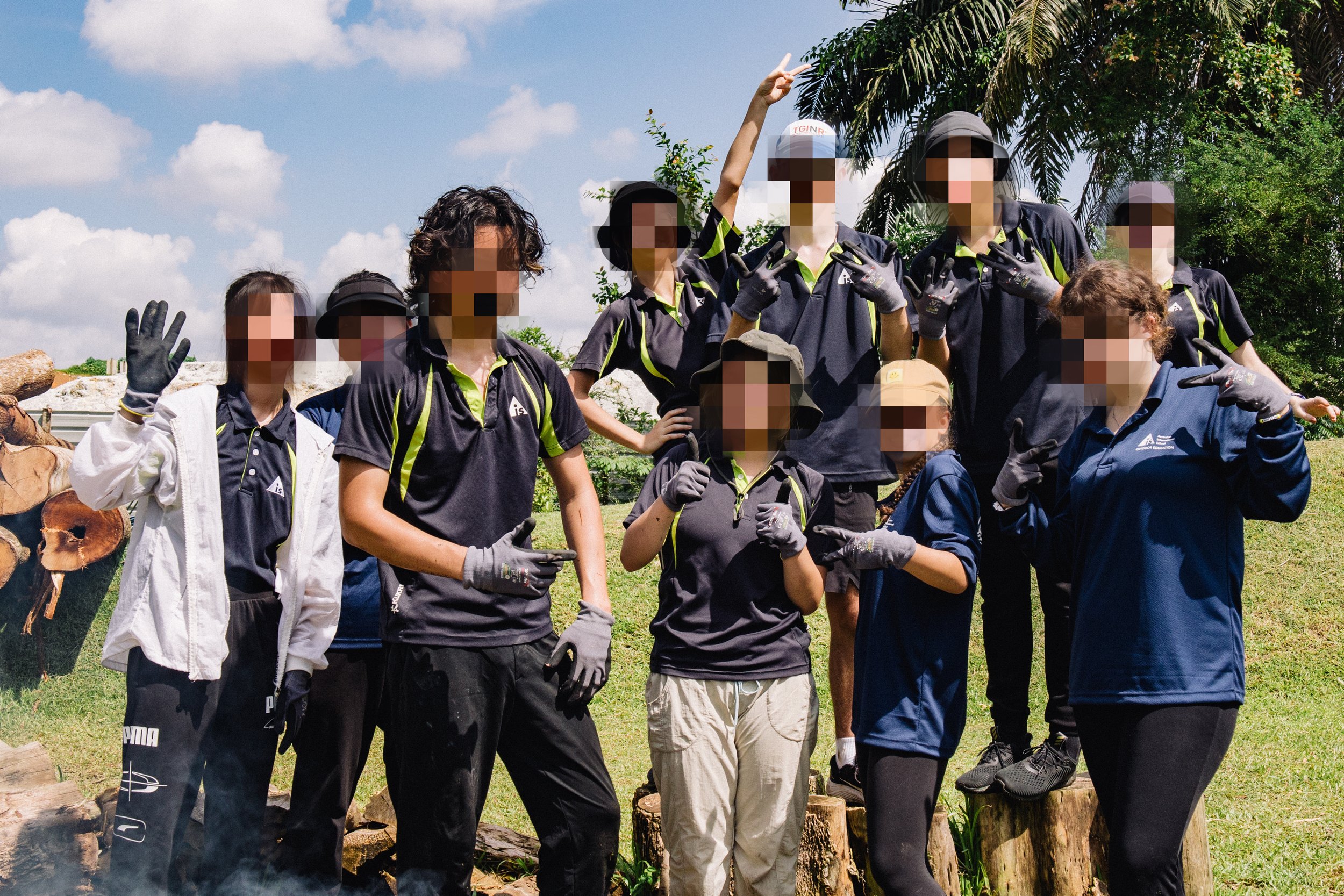
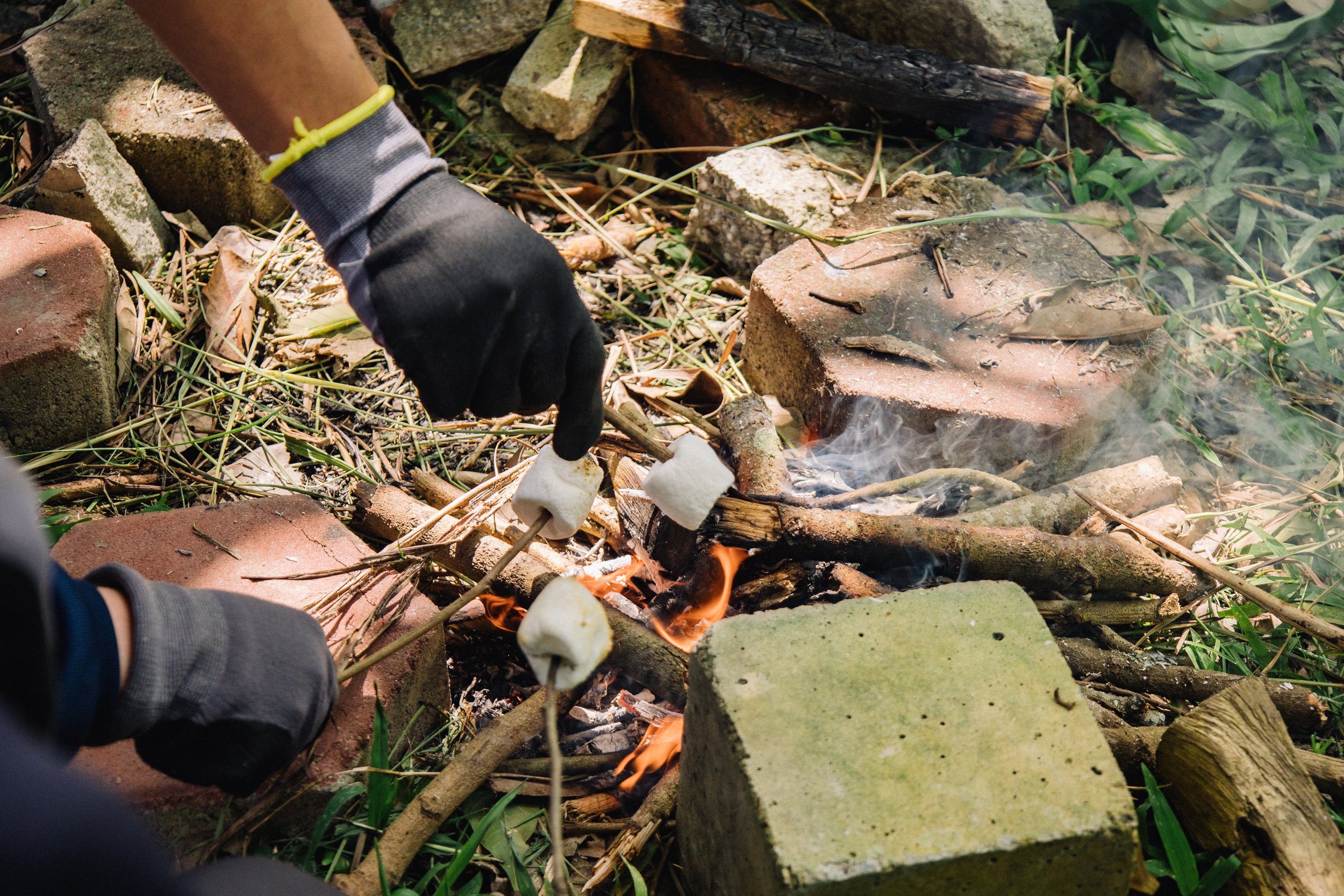
We only smiled at them and shrugged; lo and behold! We had already planned for them to get another shot on the last day. But for now, they shall not know.
Conquering the Shadows Of Marsiling Bunkers
Be careful; you might scream.
Upon reaching the entrance of Marsiling Bunkers, the AIS participants peeked into the darkness of the path ahead, asking, “Is this place haunted?”
And our only reply was, “Well, you only know once you enter.”
Getting to the bunkers was difficult; our students had to bash through thick, dense foliage and rambling vines to find the entrance. Clearly out of their comfort zone, the Sharks gritted their teeth as they carefully made their way towards the bunkers. Then came the time to face some of their greatest fears.
With mud reaching their ankles, and countless spiders, lizards, and other creepy crawlies living within the bunkers’ walls, the students were challenged to choose courage the moment they entered. The Marsiling Bunkers consists of sprawling underground tunnels leftover from British rule and were originally part of a Royal Air Force fuel reserve depot built in 1942. During WWII, the tunnels were occupied and further modified by the Japanese.
Our facilitators led the students through the bunkers, where baby doll figurines brought in by other Marsiling Bunkers visitors greeted our students from where they’d been lined up along the walls of the tunnel. We also introduced them to one of Singapore’s 1,052 Geocache locations. Geocache is this global treasure hunt where you navigate to specific locations based on GPS. Each location has cleverly hidden containers, where you can trade items for other individuals in the global geocaching community. When you find a geocache, sign the log, then put it back where you found it. You can log your find online to let other geocachers know you were there! Fascinated, some of our AIS participants decided to deposit their items into the container for the geocaching community. We proceeded to complete our tour of Marsiling bunkers, which turned out to be a safe success!
The entire time spent here tested these students’ ability to embrace discomfort (of the darkness, moving through murky waters, especially the kind of spaces we had to navigate in the bunkers) and persevere through the challenges of exploring Marsiling Bunkers. With AIS’s principle of “Challenge by Choice,” every student was always given the power to choose whether they wished to proceed with an activity.
Axe and Saw…Meet Wood.
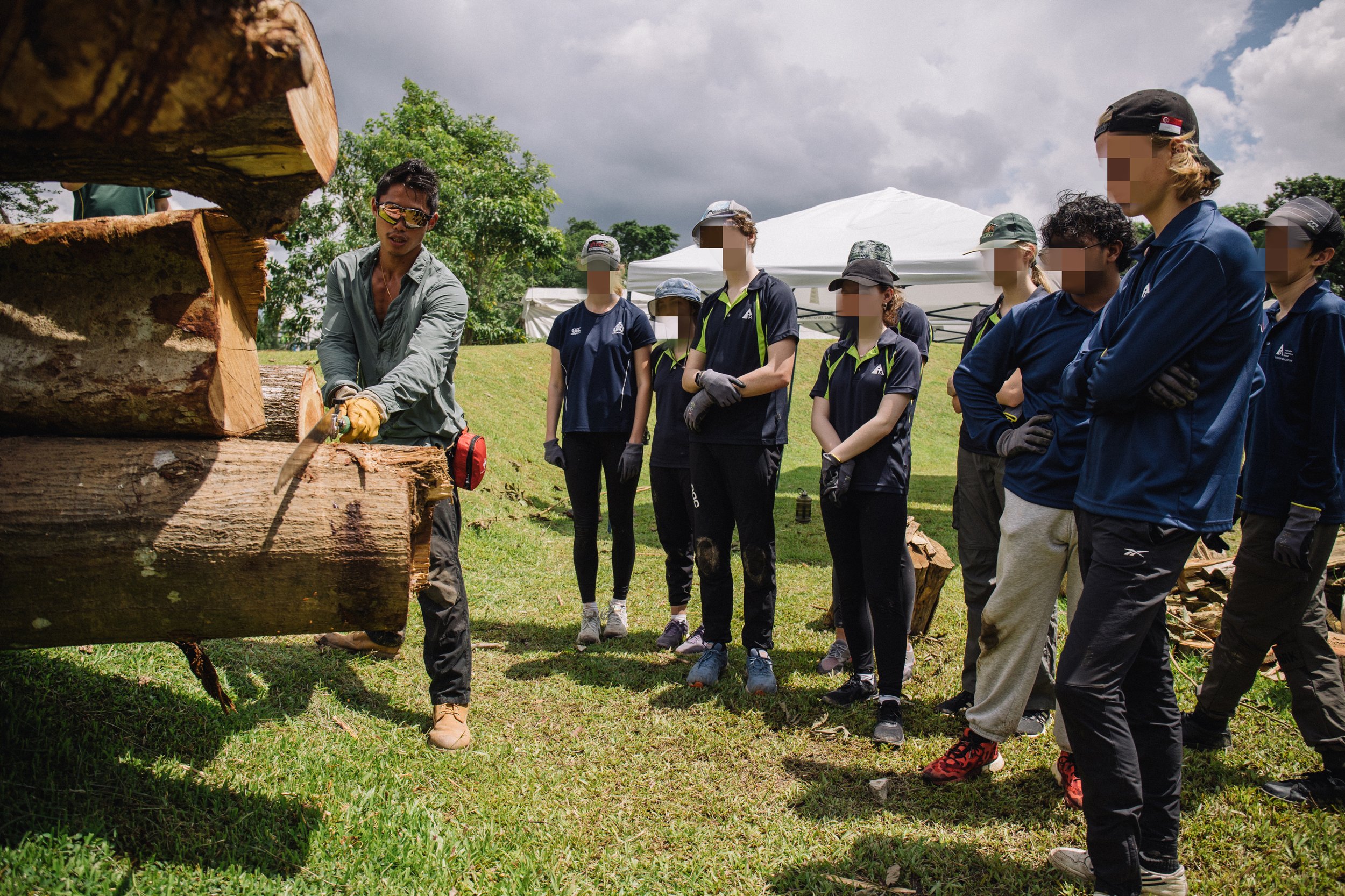
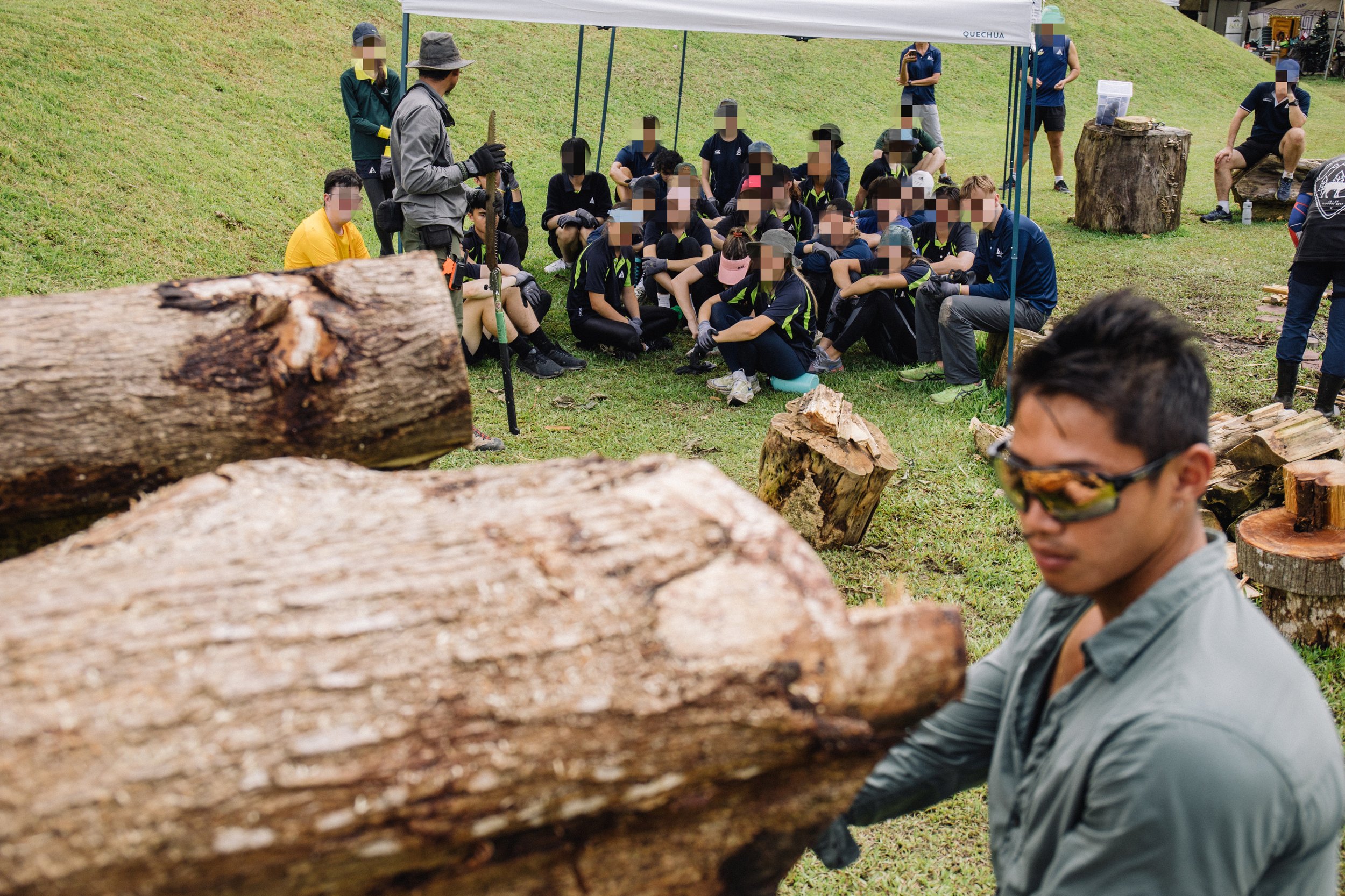
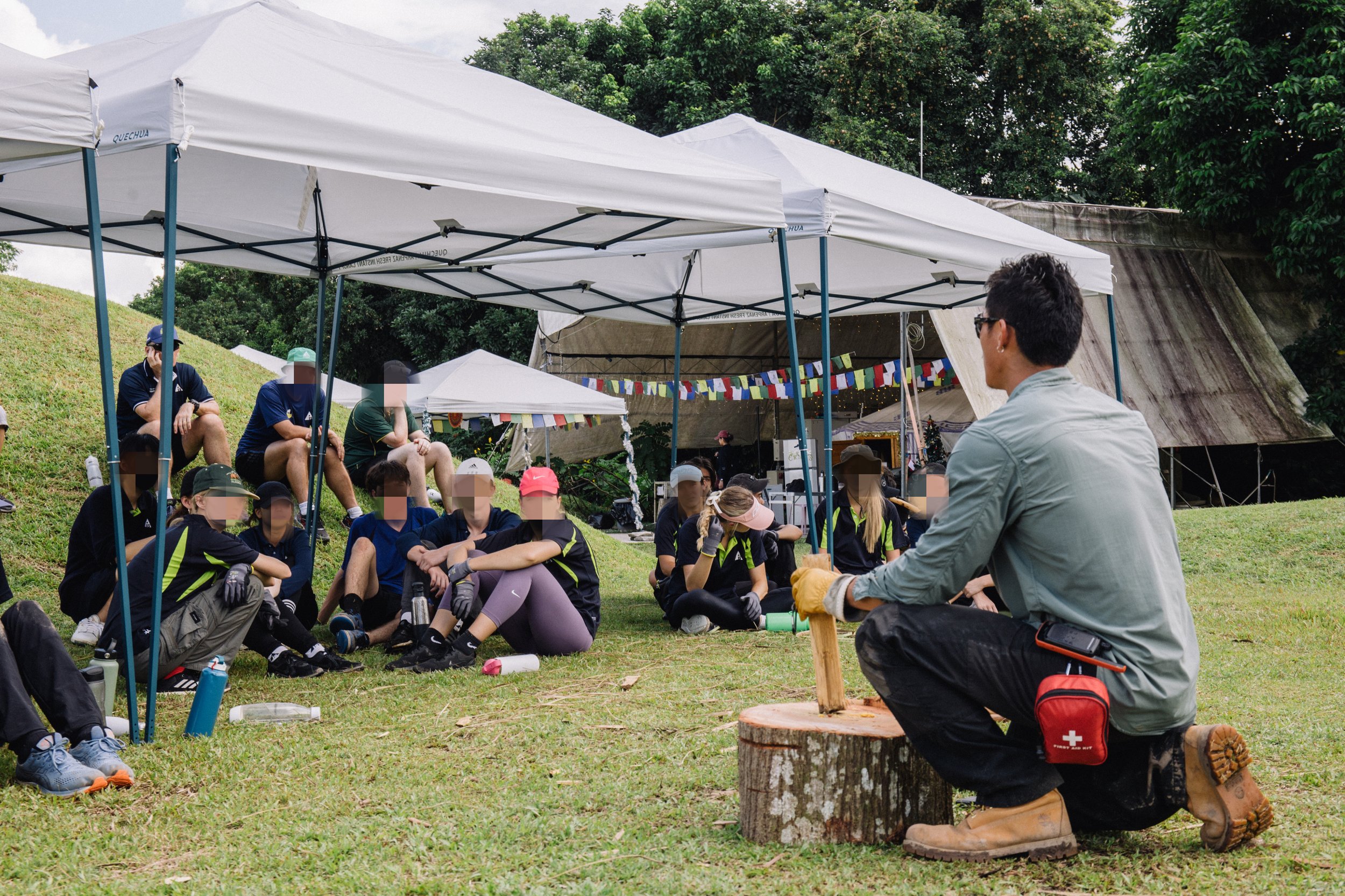
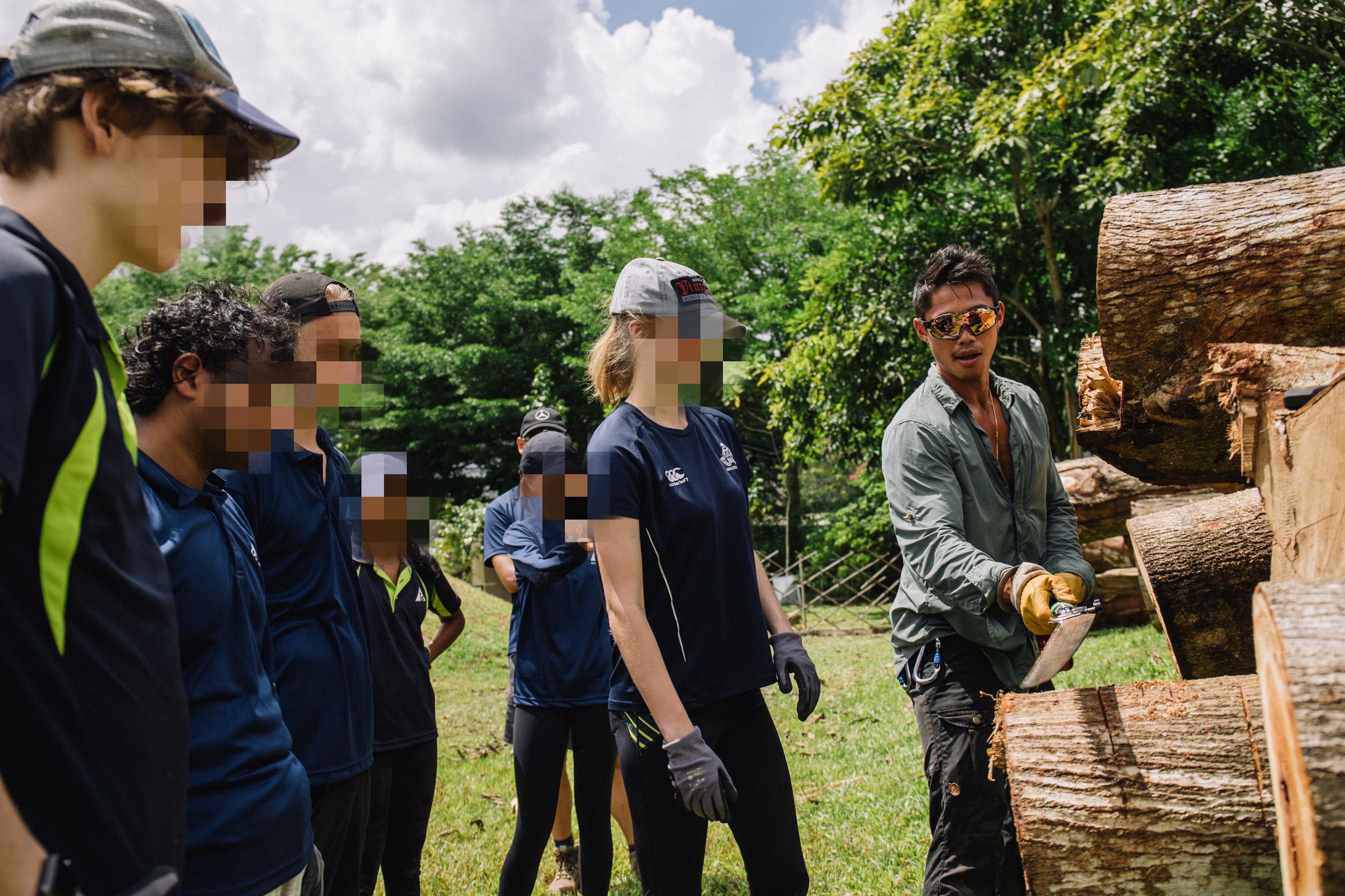
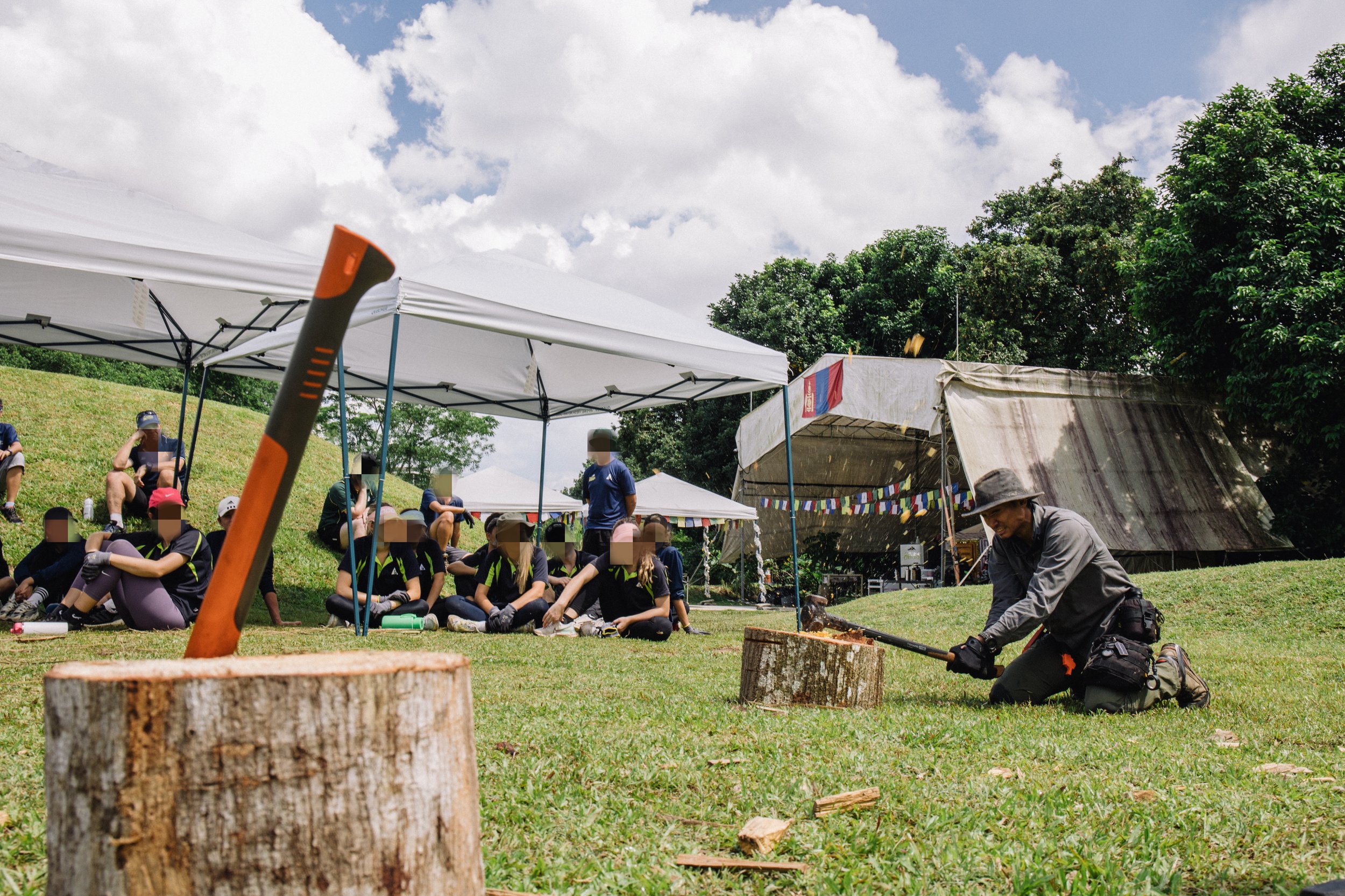
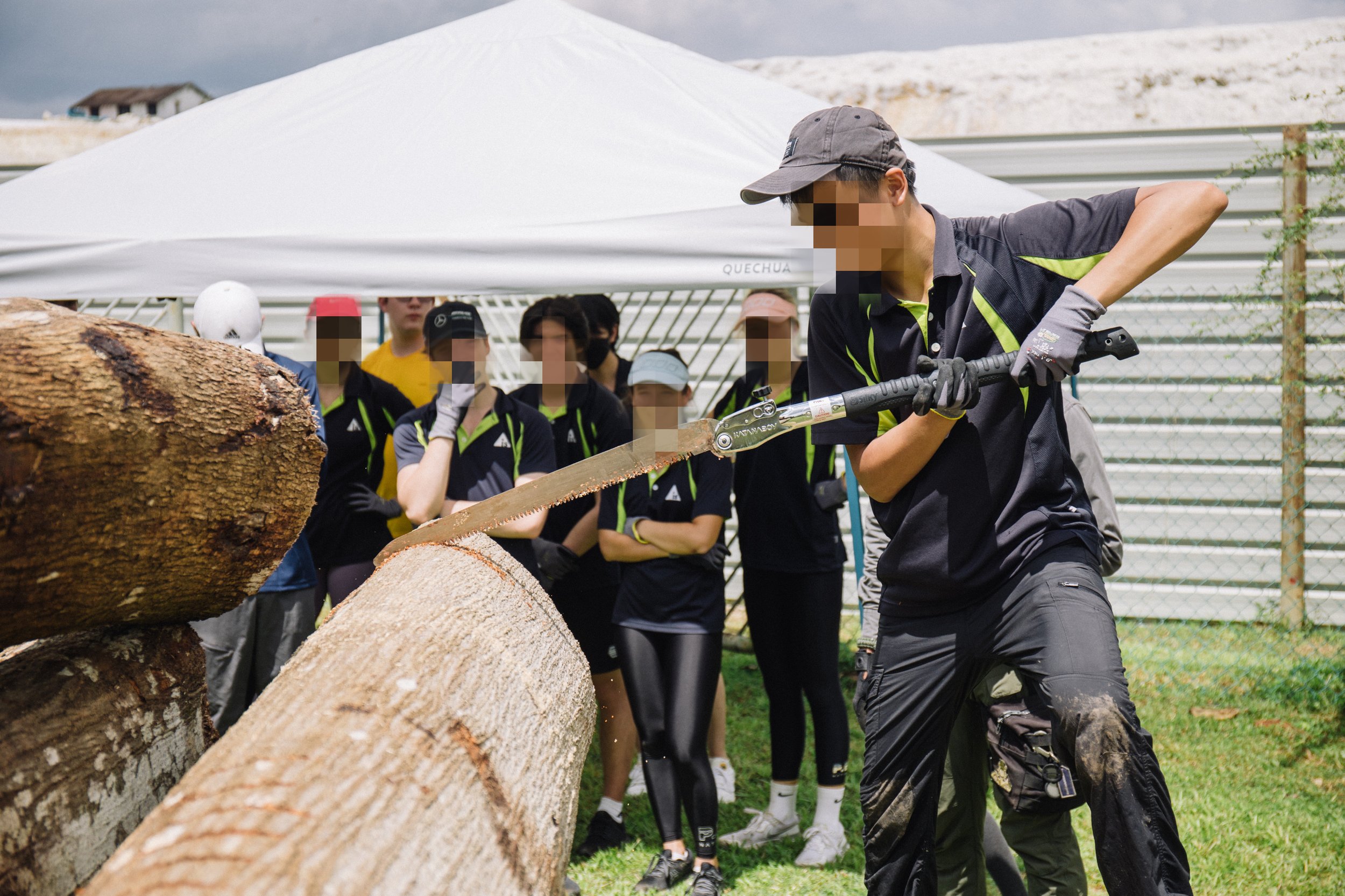
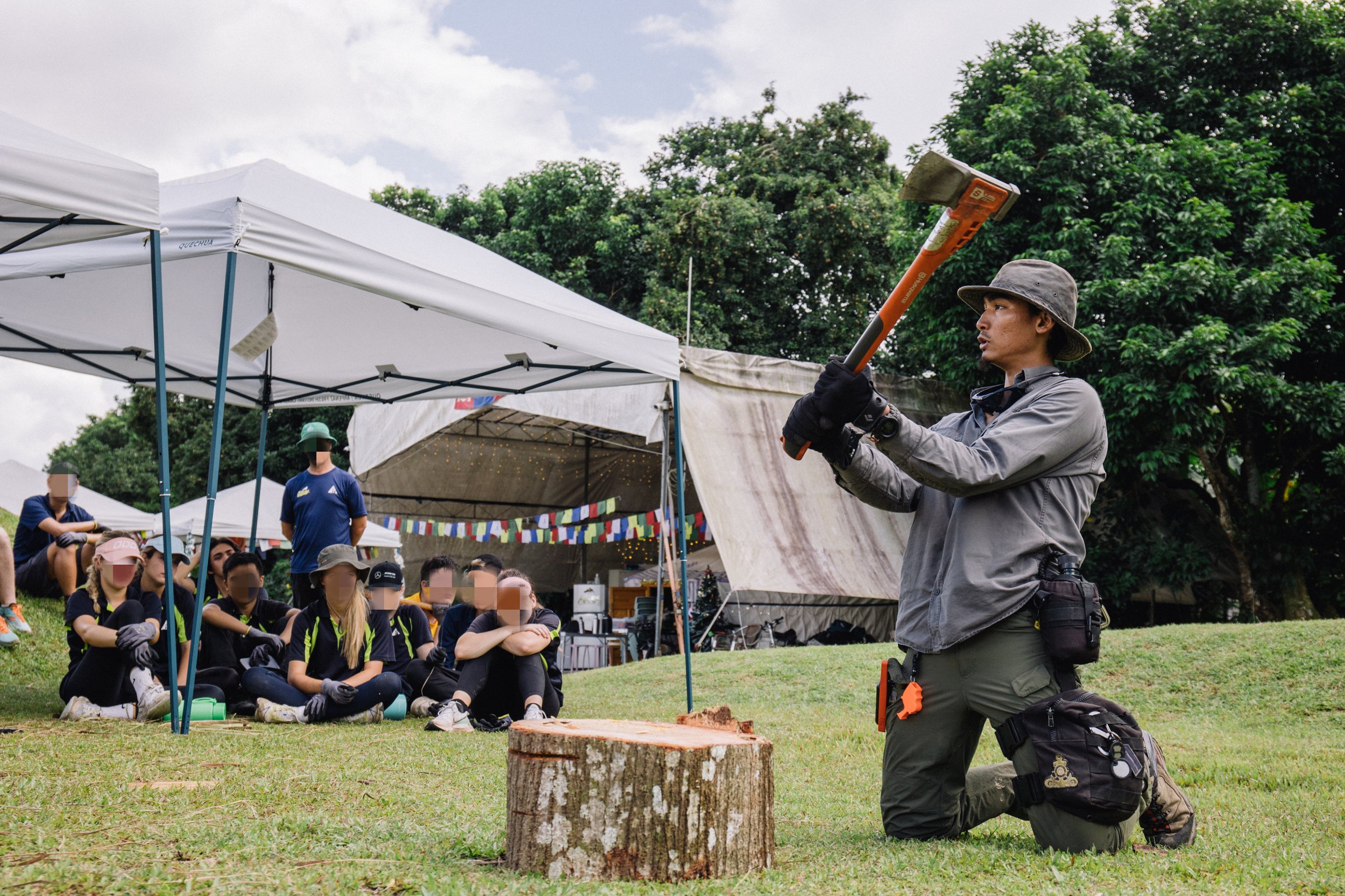
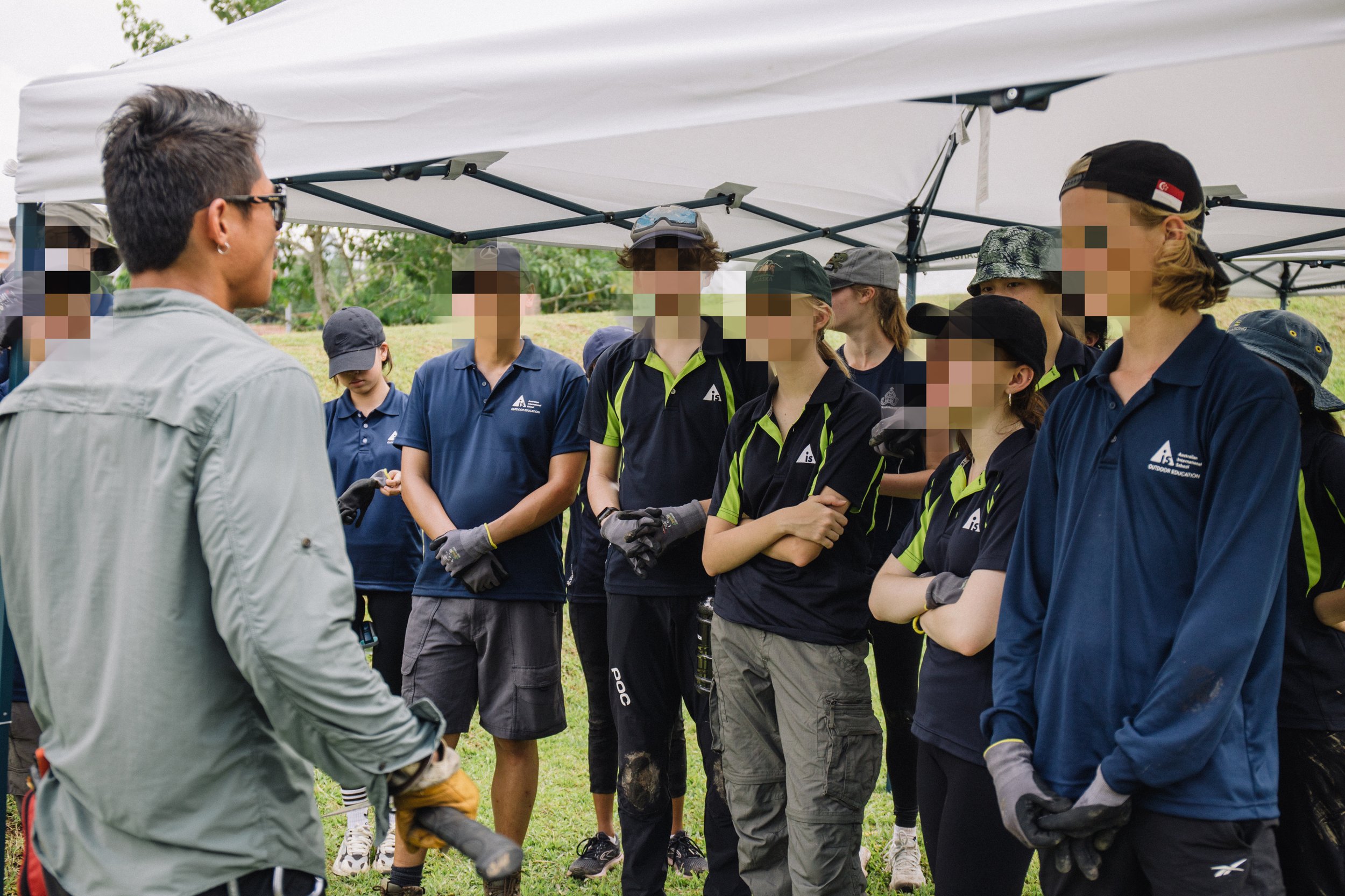
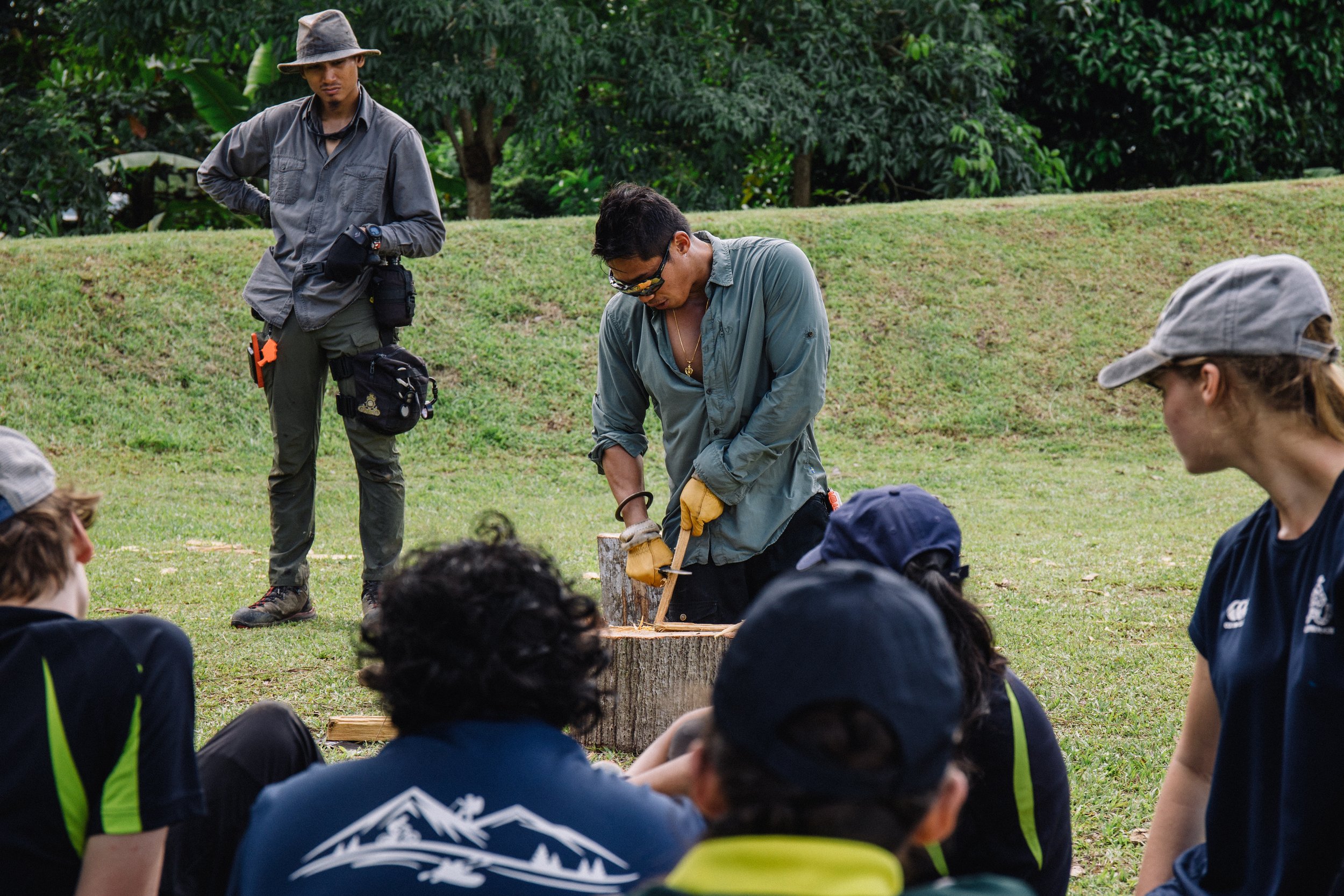
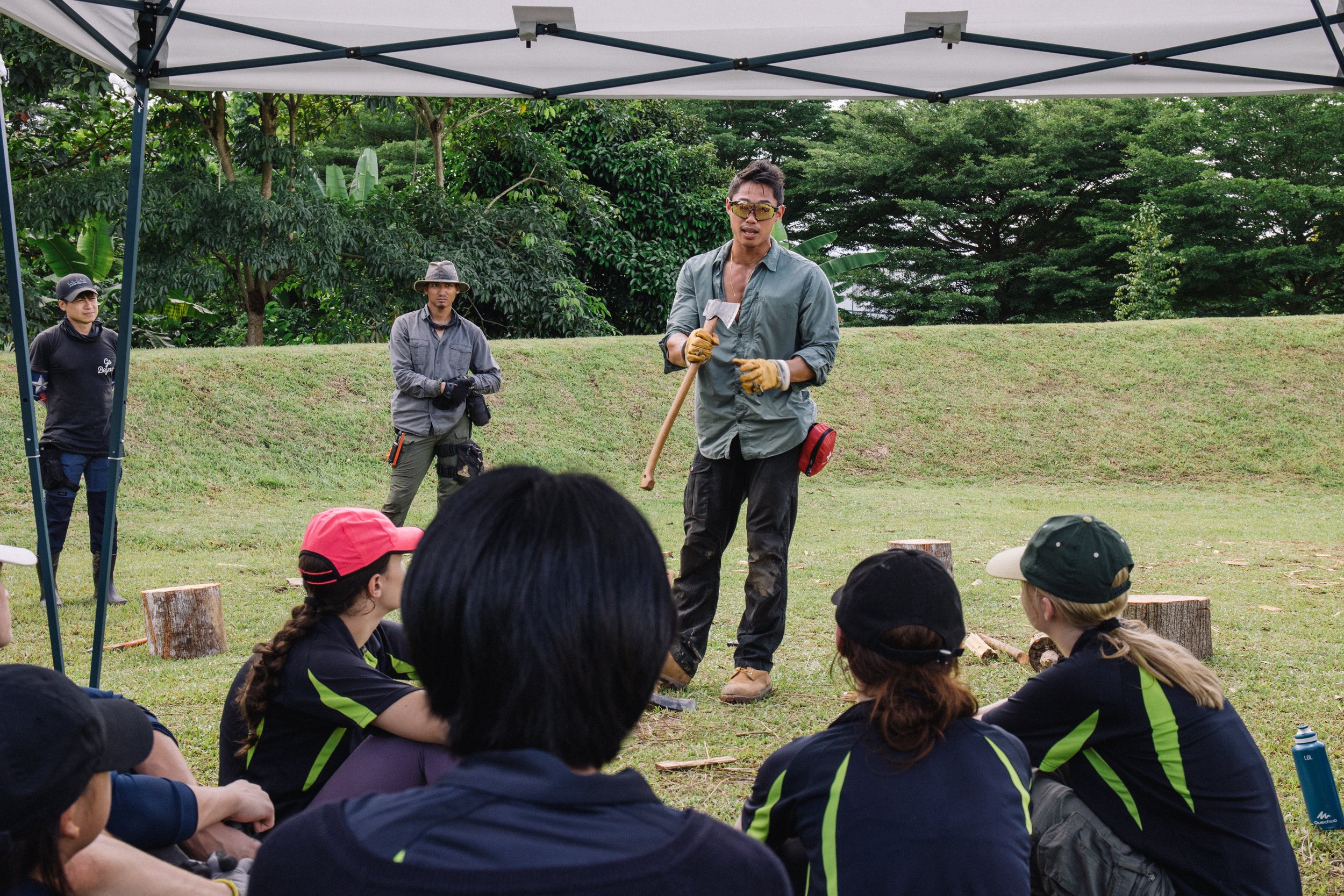
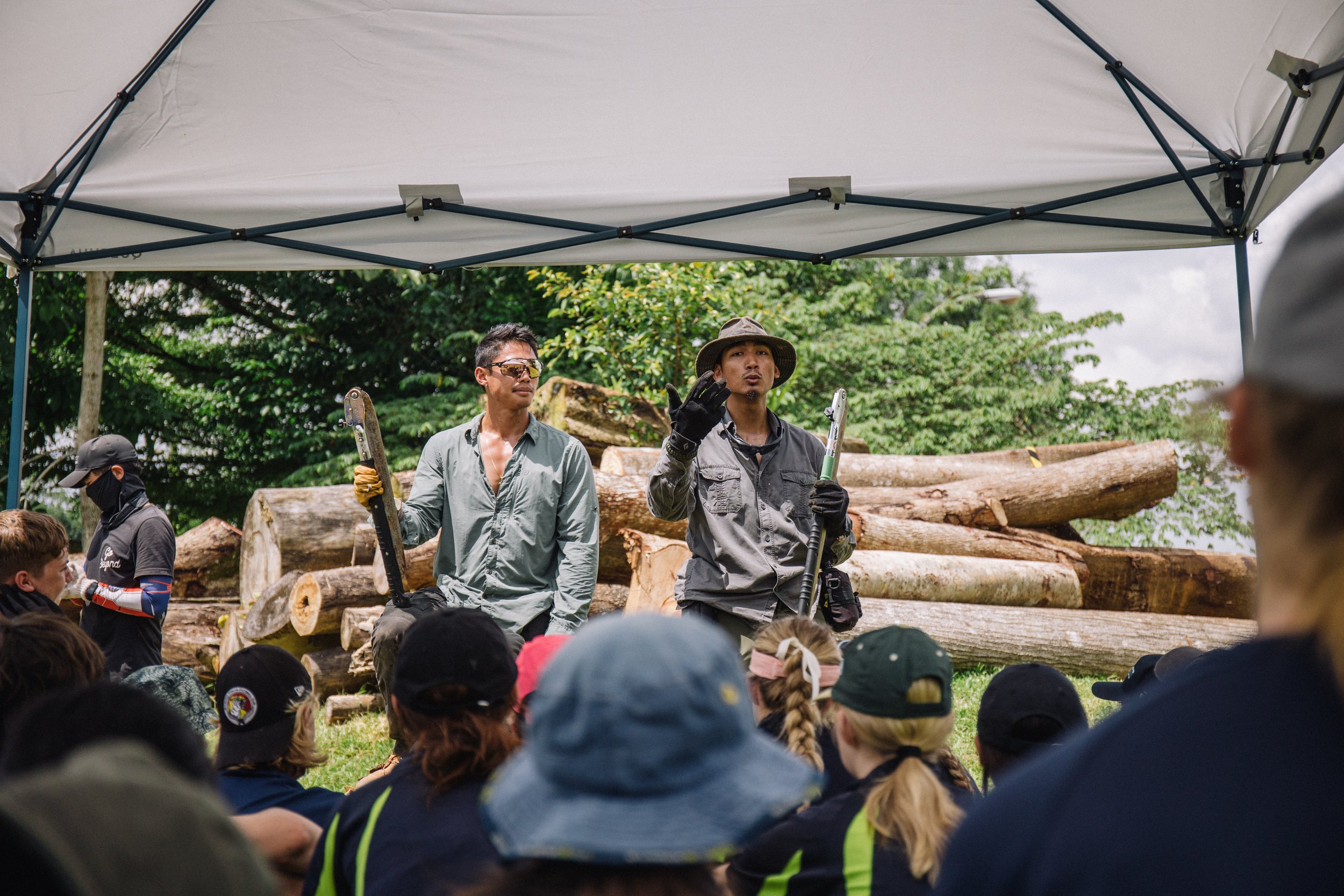
Arms crossed, brows furrowed; the Sharks focused intensely on grasping our instructors’ demonstration.
We split our participants into two groups for this sawing and chopping segment to effectively teach them these wilderness survival skills.
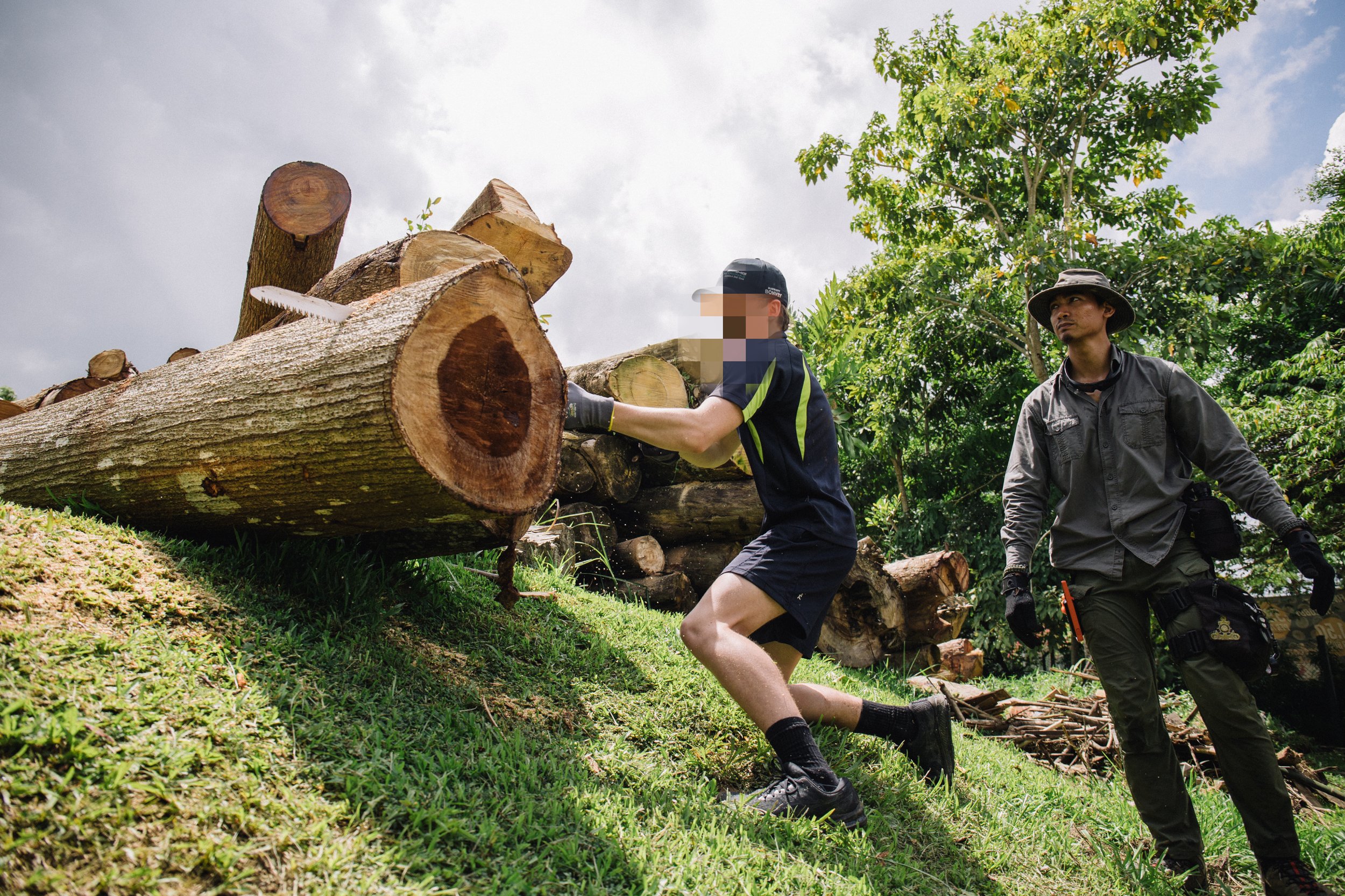
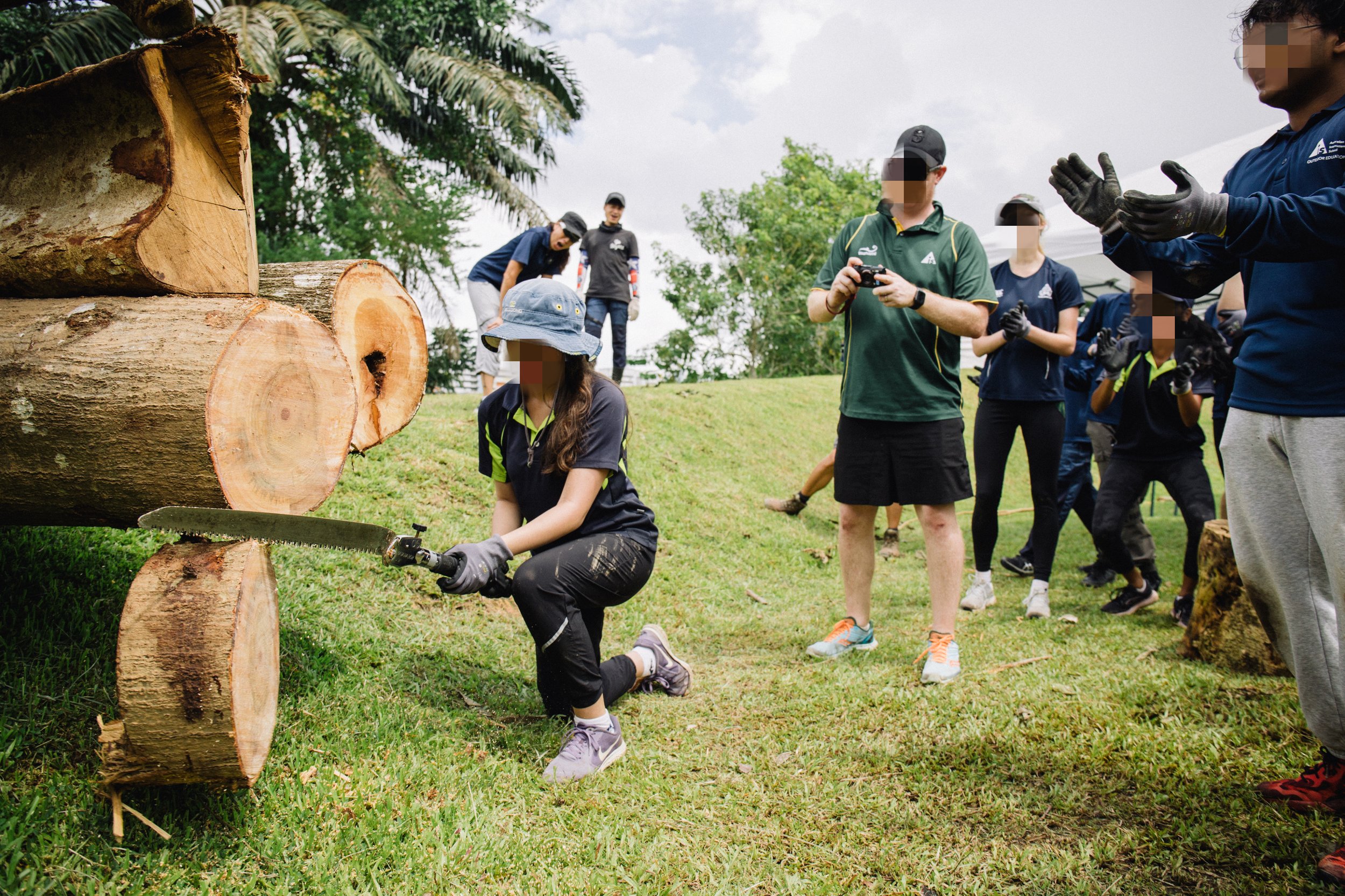
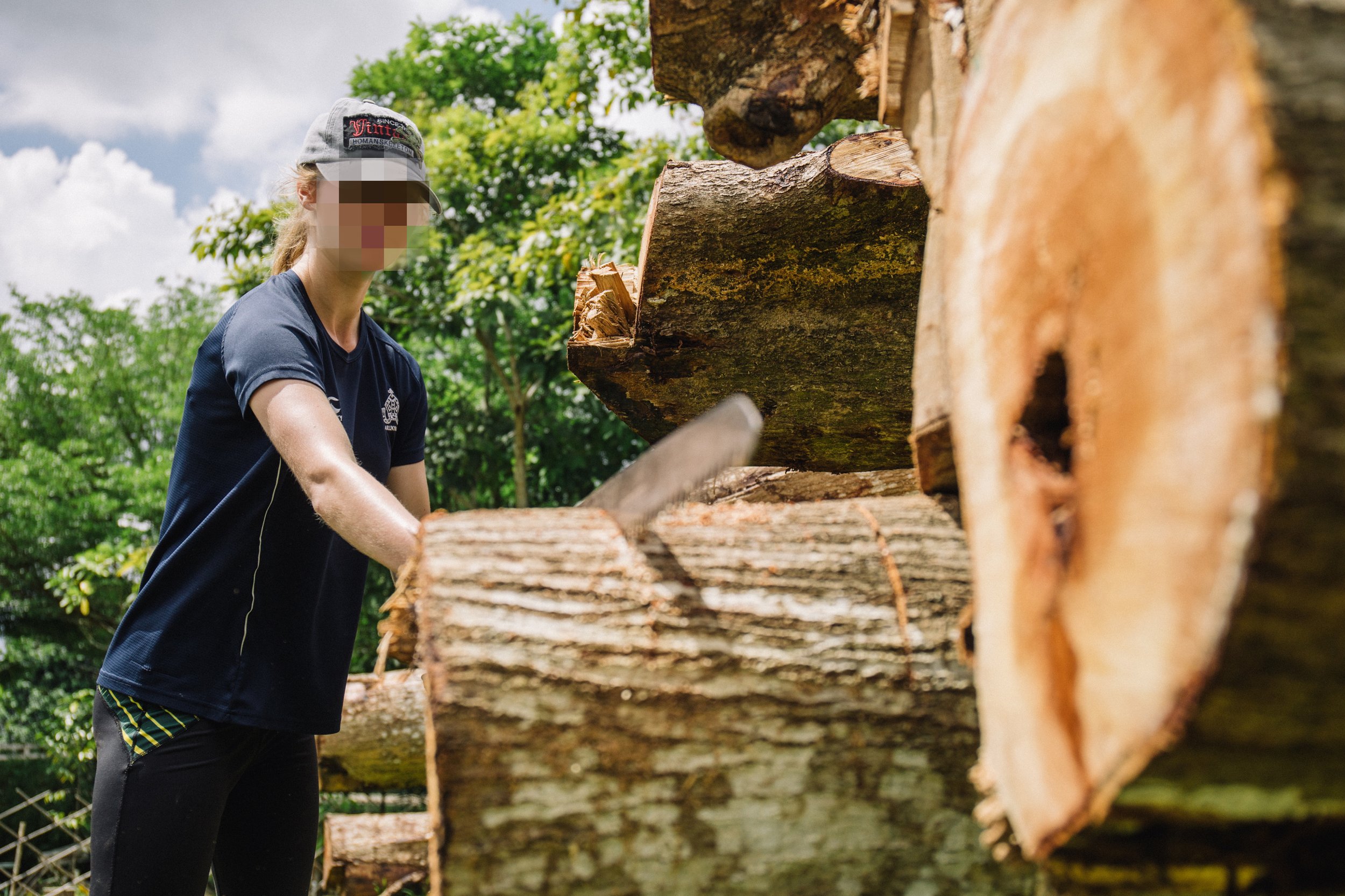
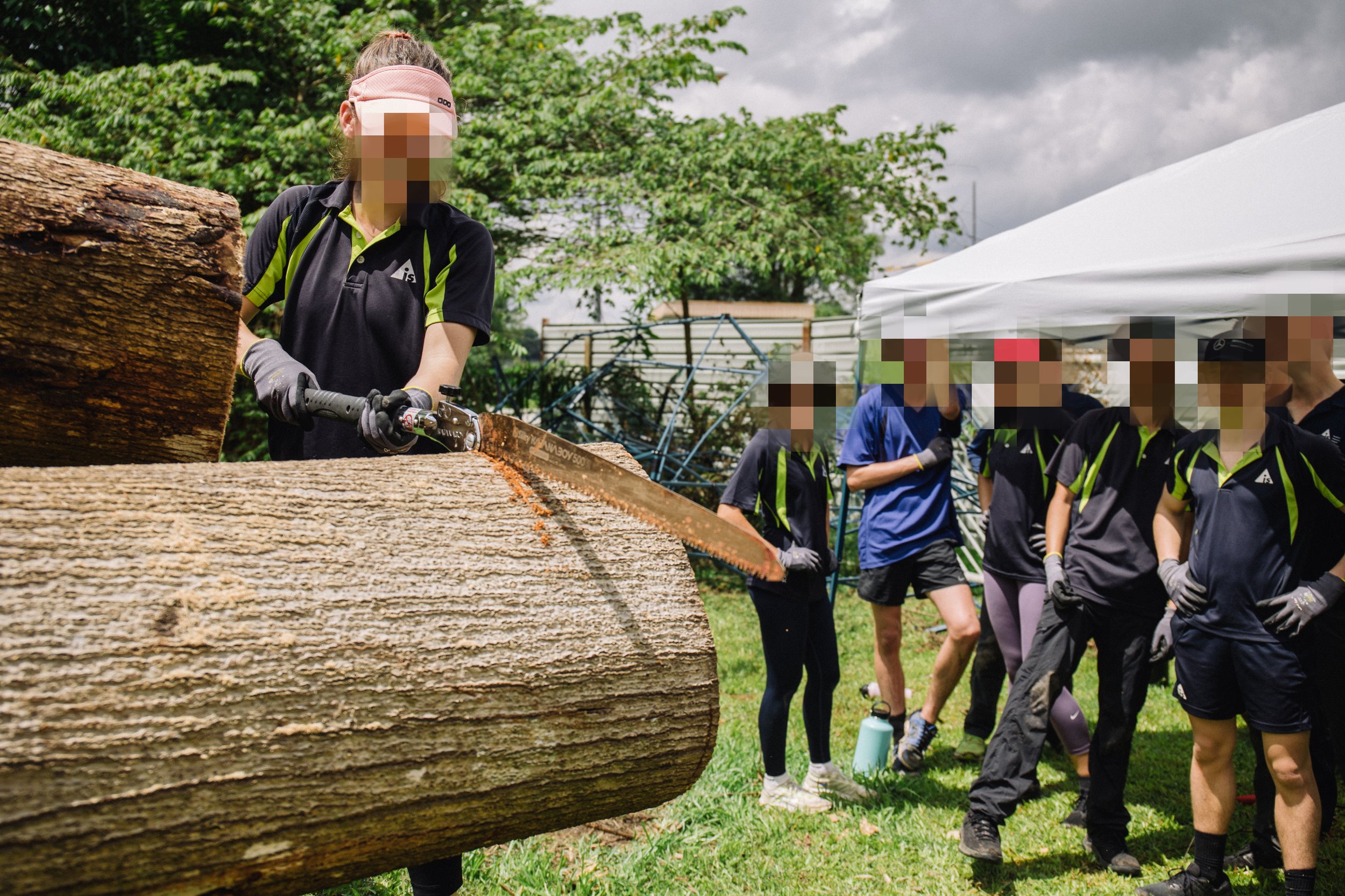
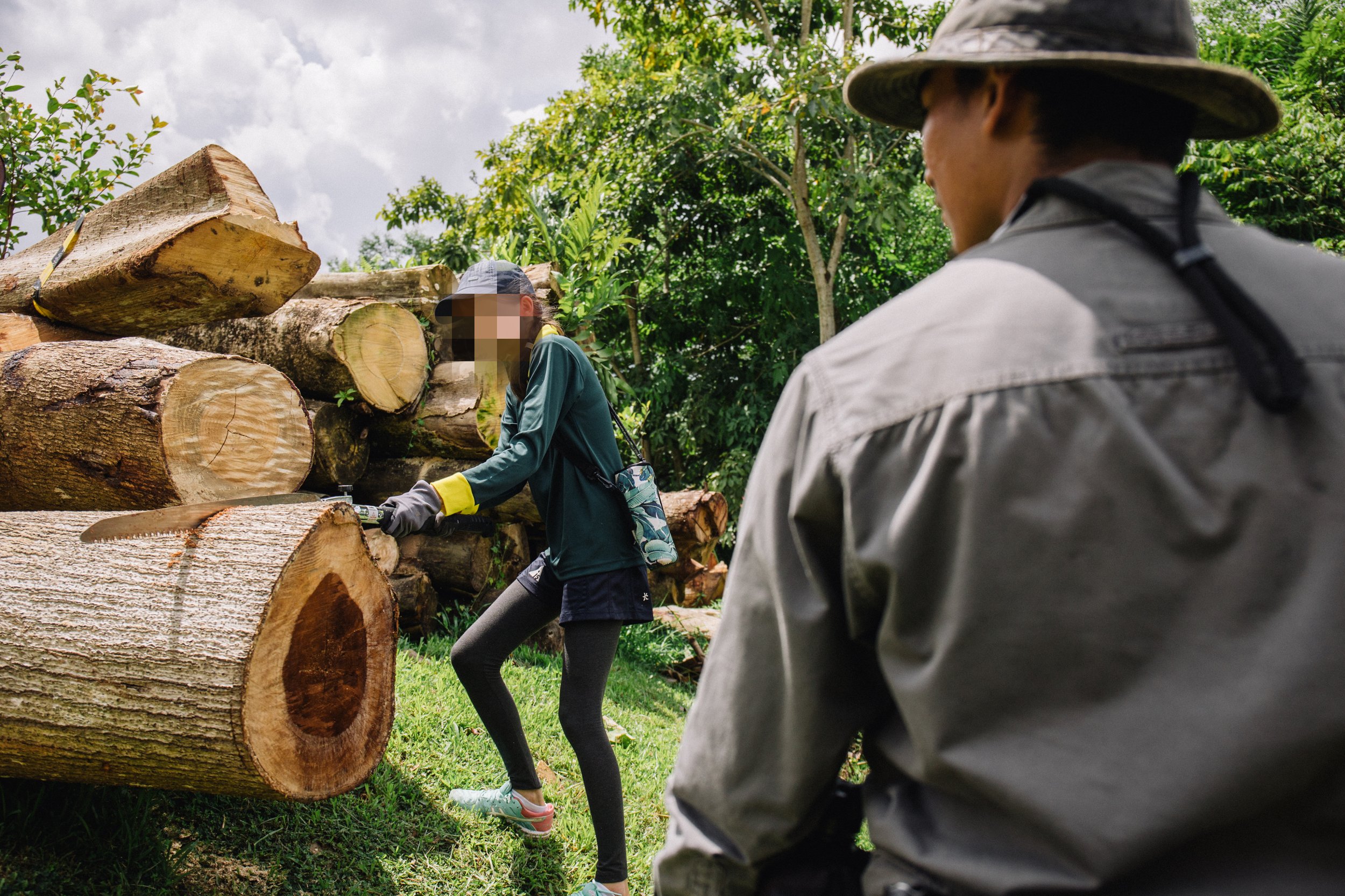
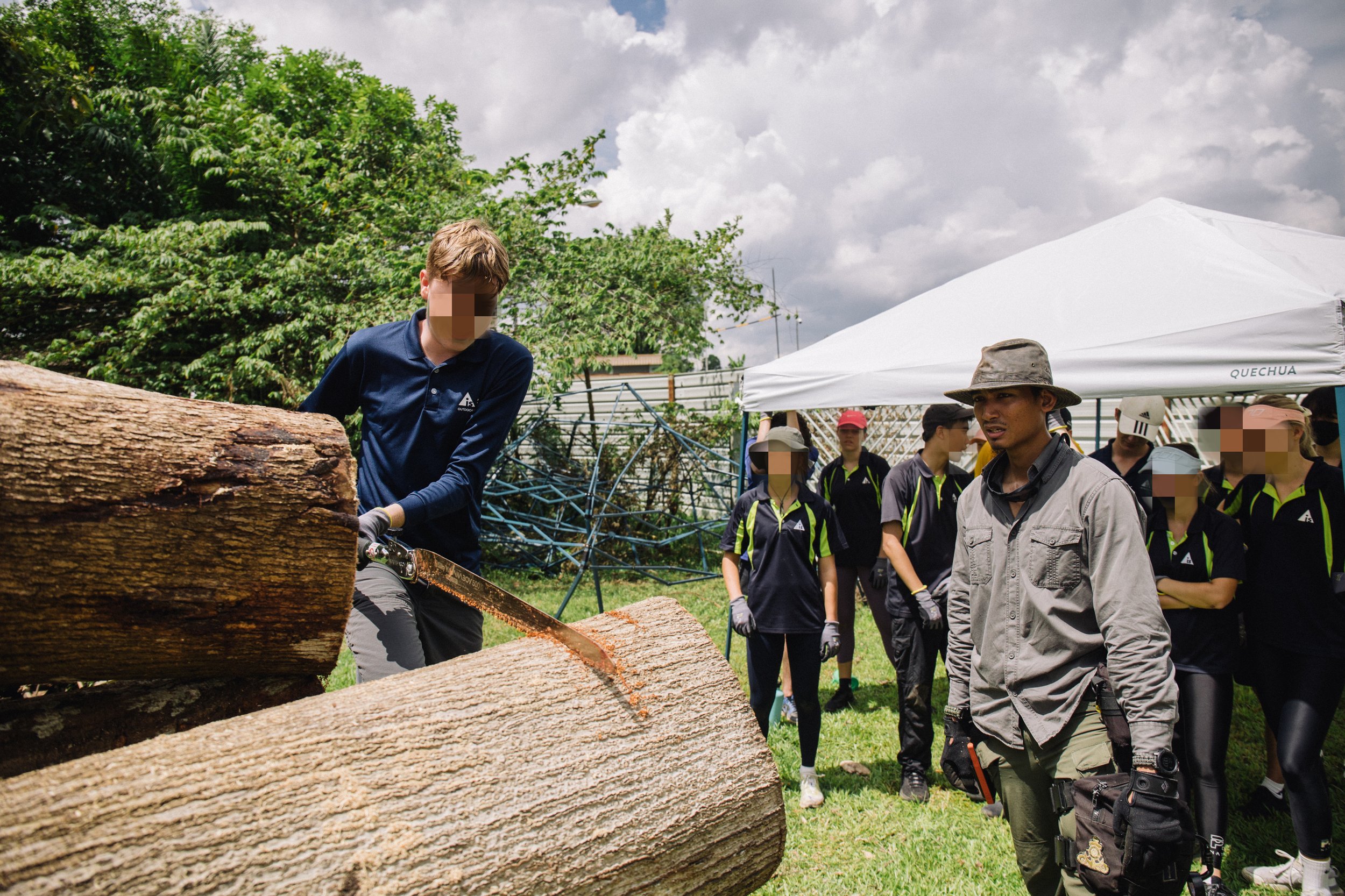
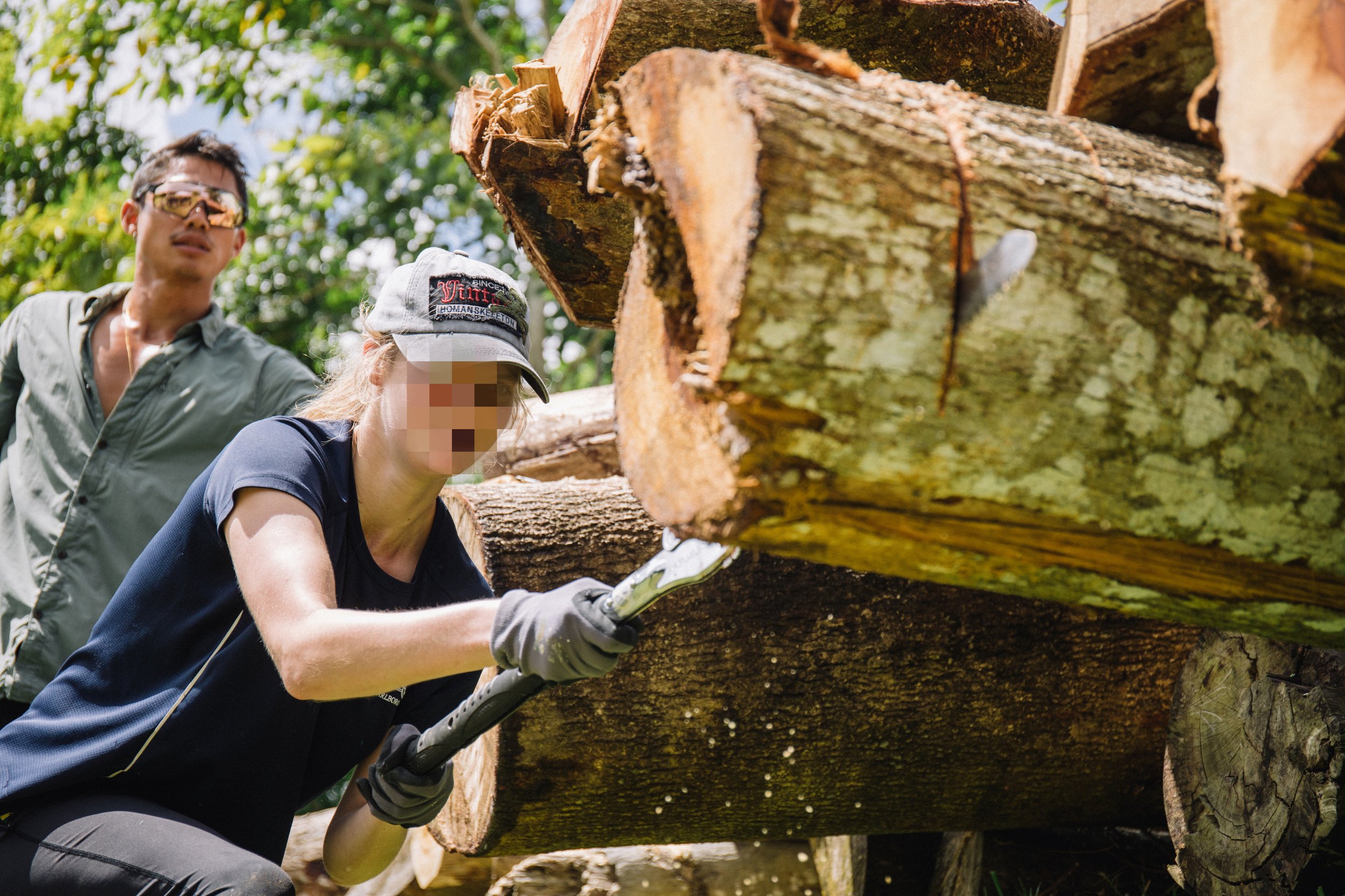
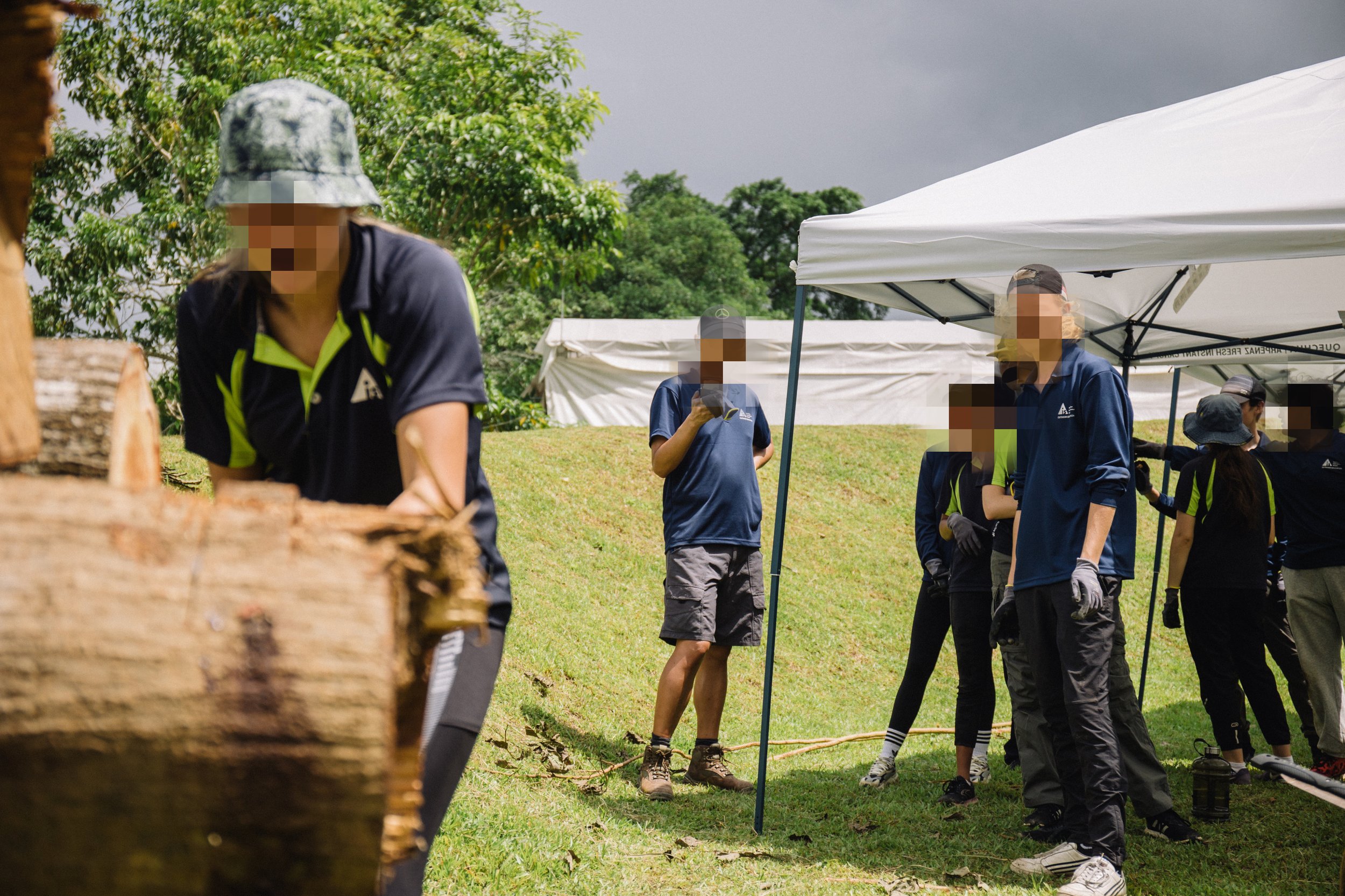
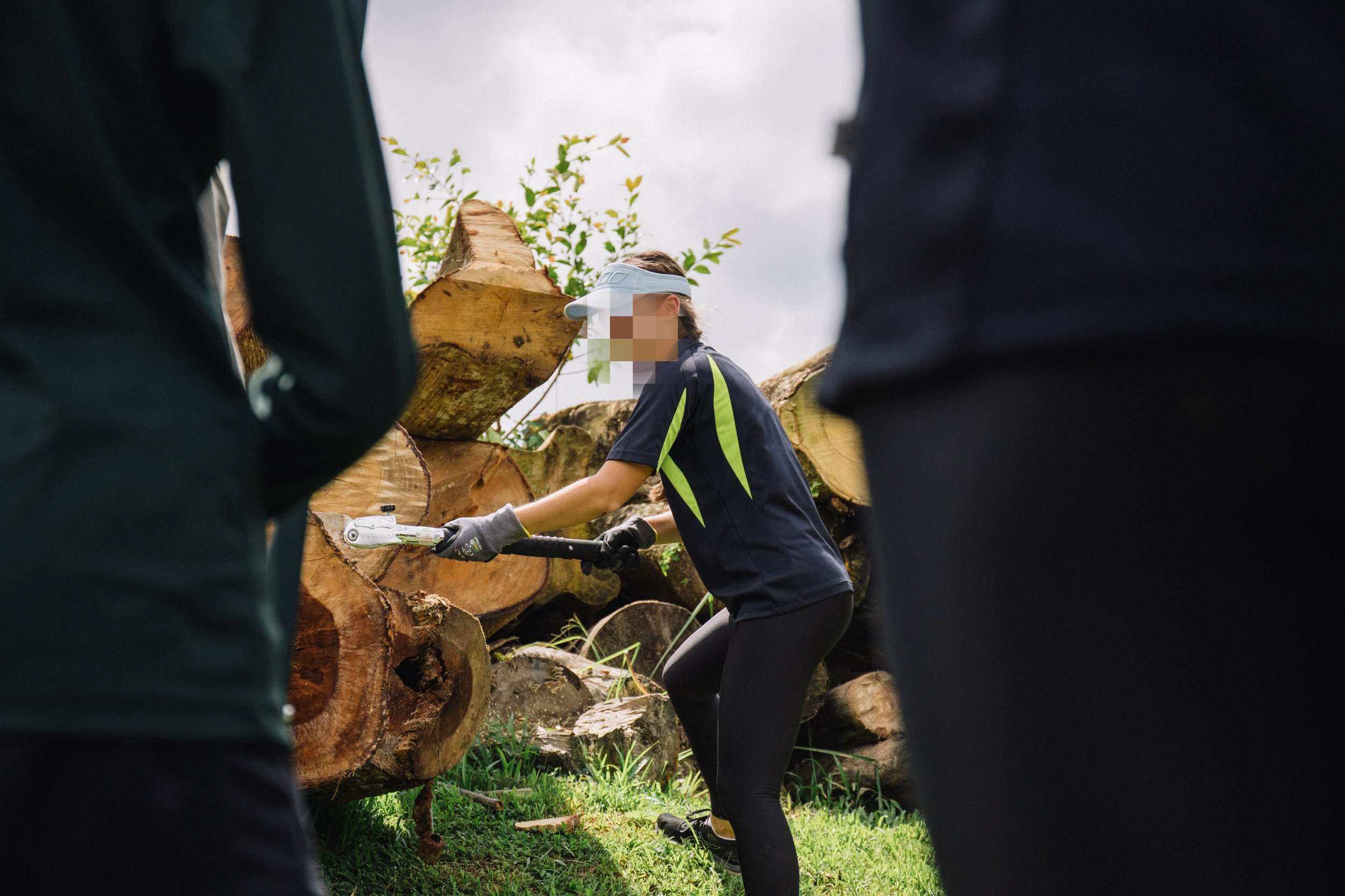
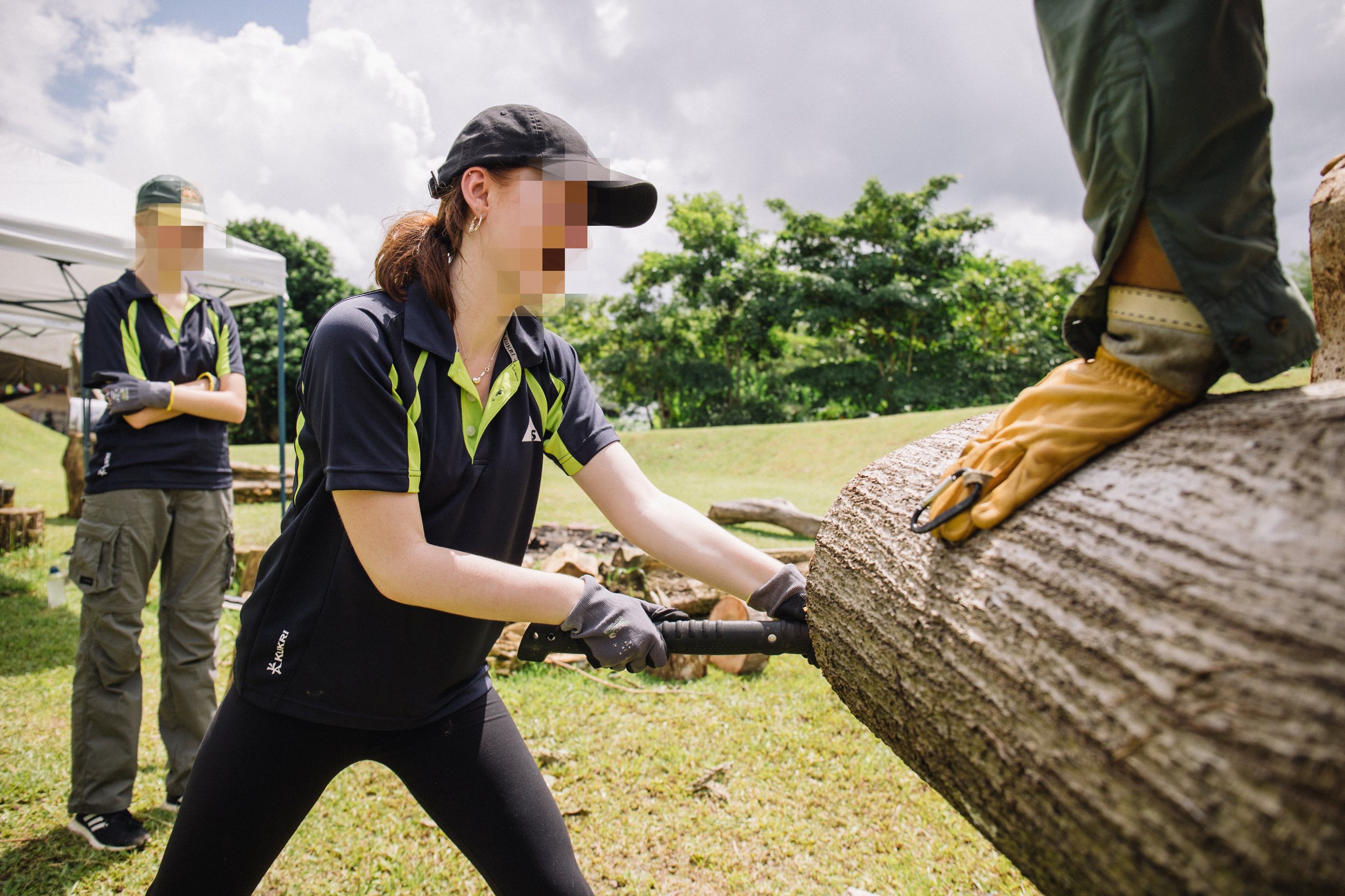
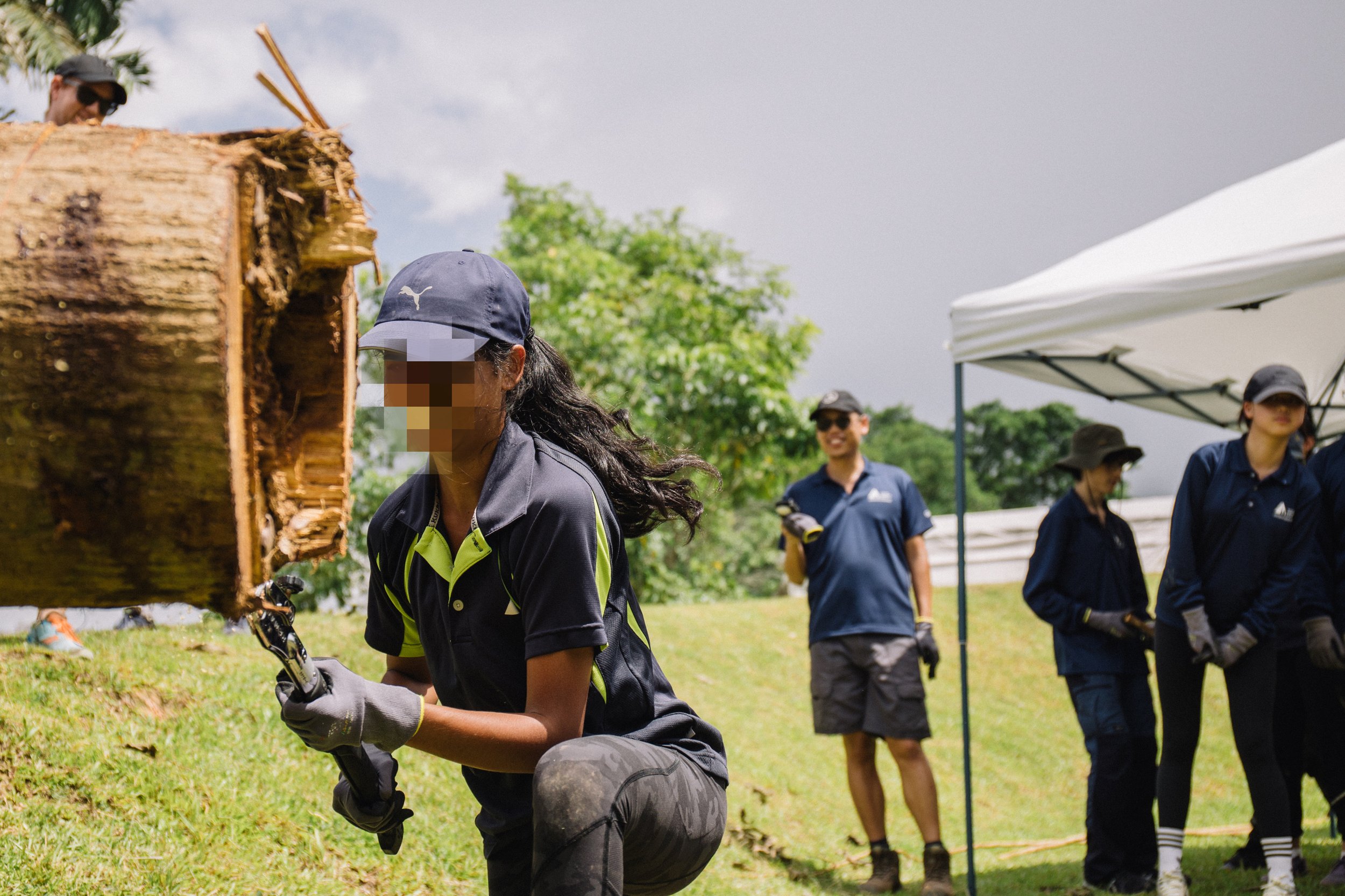
Different axes were introduced; a felling axe, a splitting axe, and a hatchet. Students were taught about the specific uses of each one and respective methods of handling them. Sawing sounds soon replaced all background noise, alongside frequent ‘thumps’ when axe met wood. The determination came in the form of gloved hands wiping away sweat from their faces, as our AIS participants tried to master the required techniques for sawing and chopping.
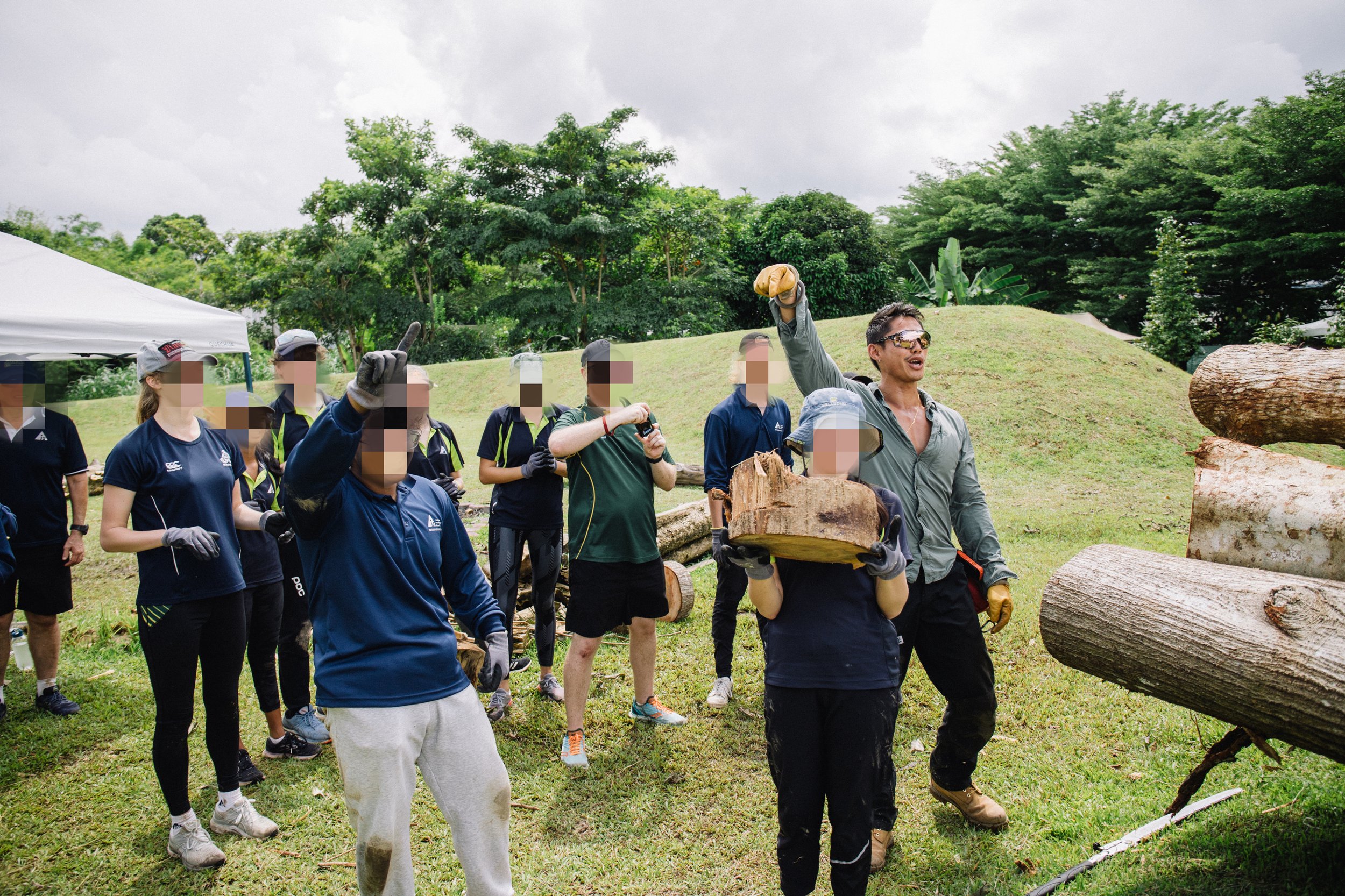
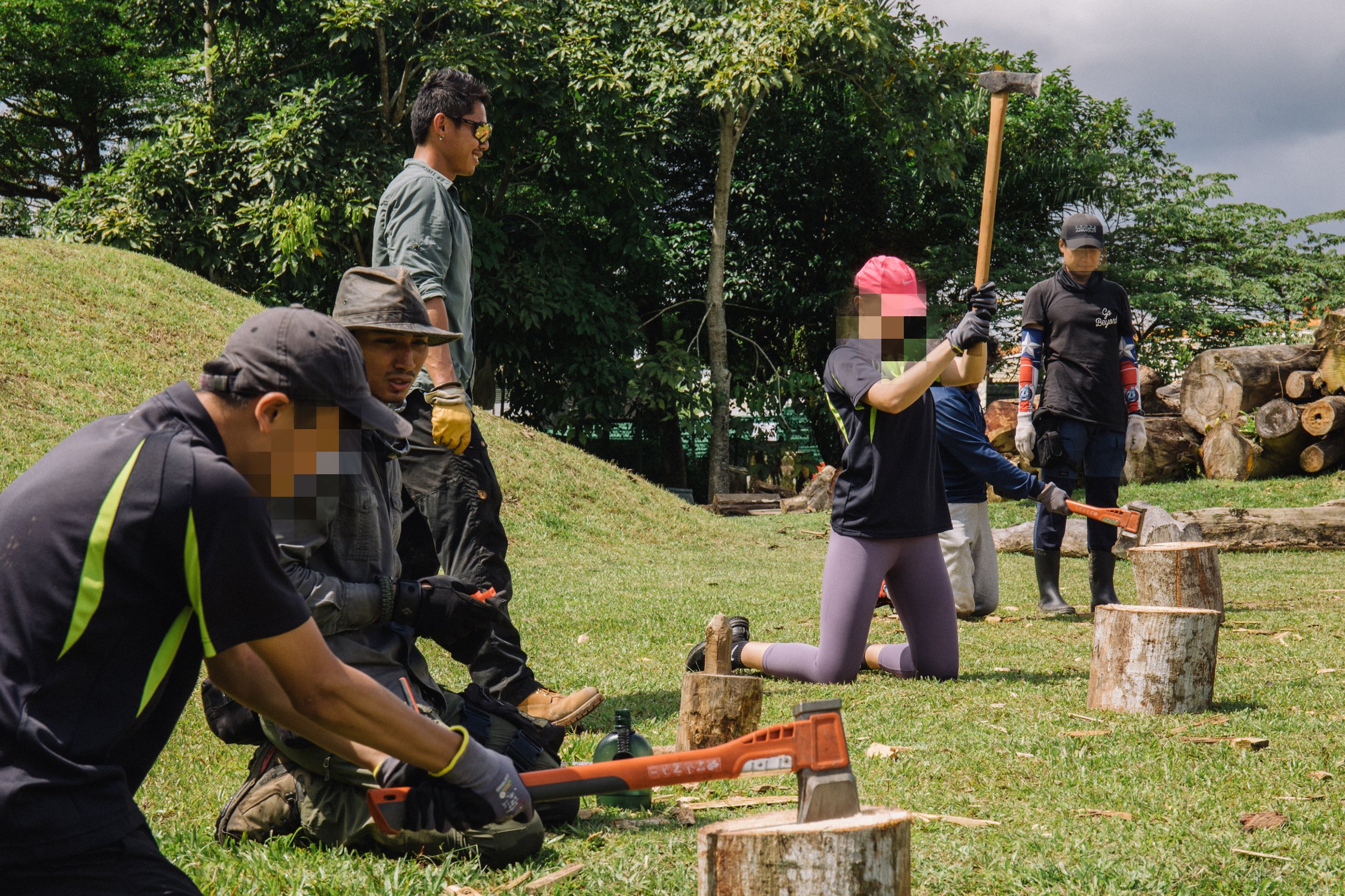
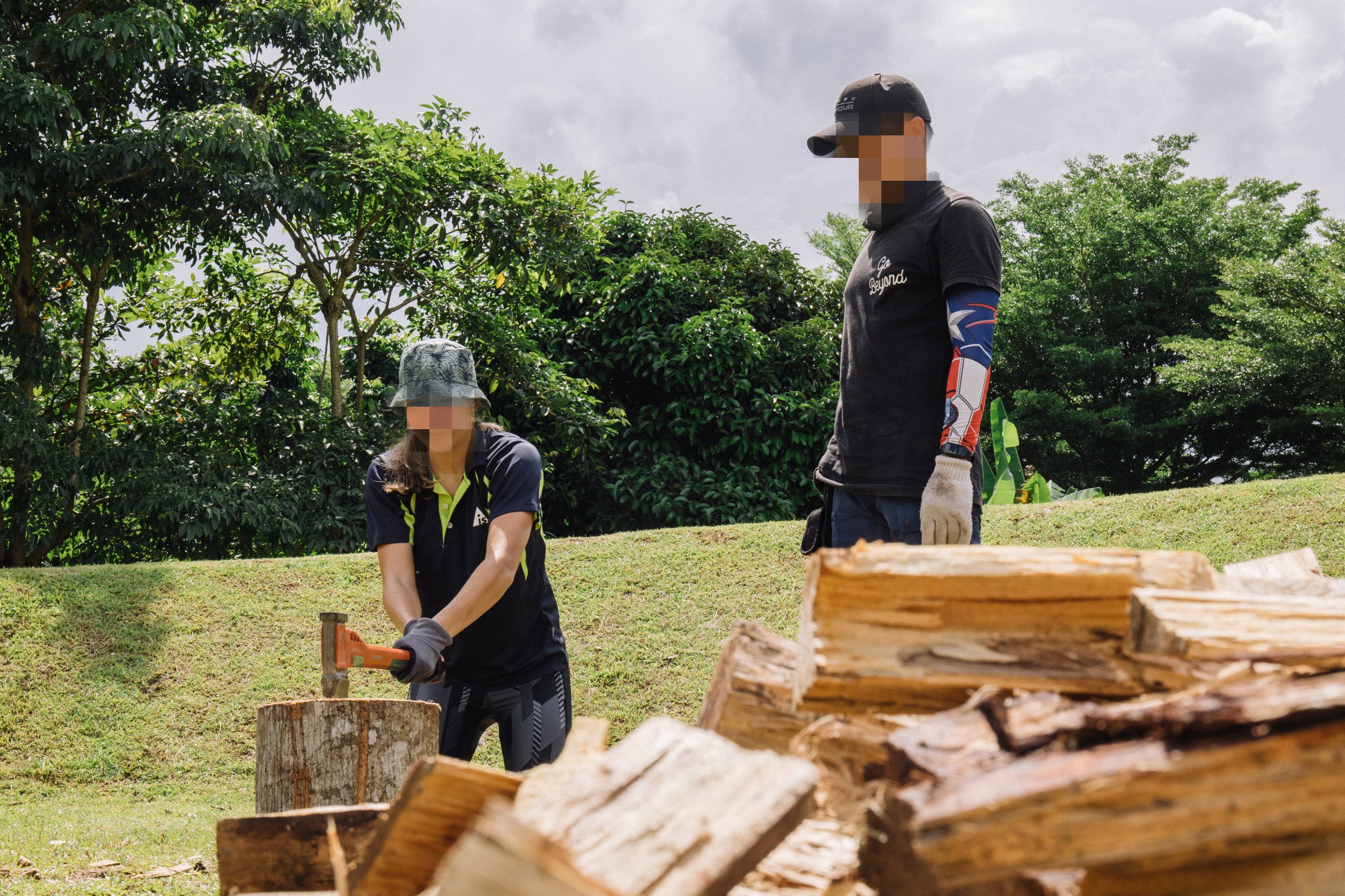
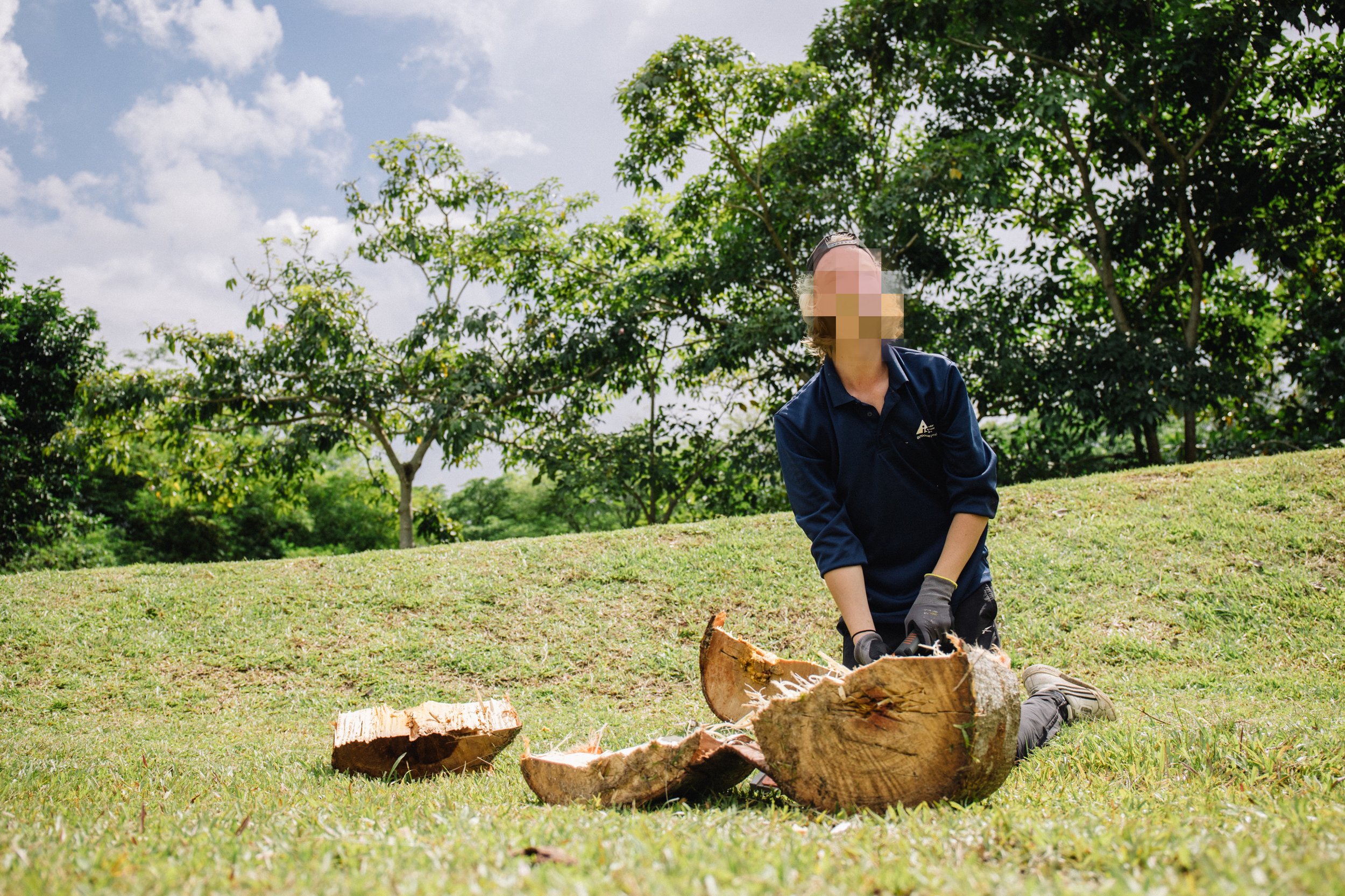
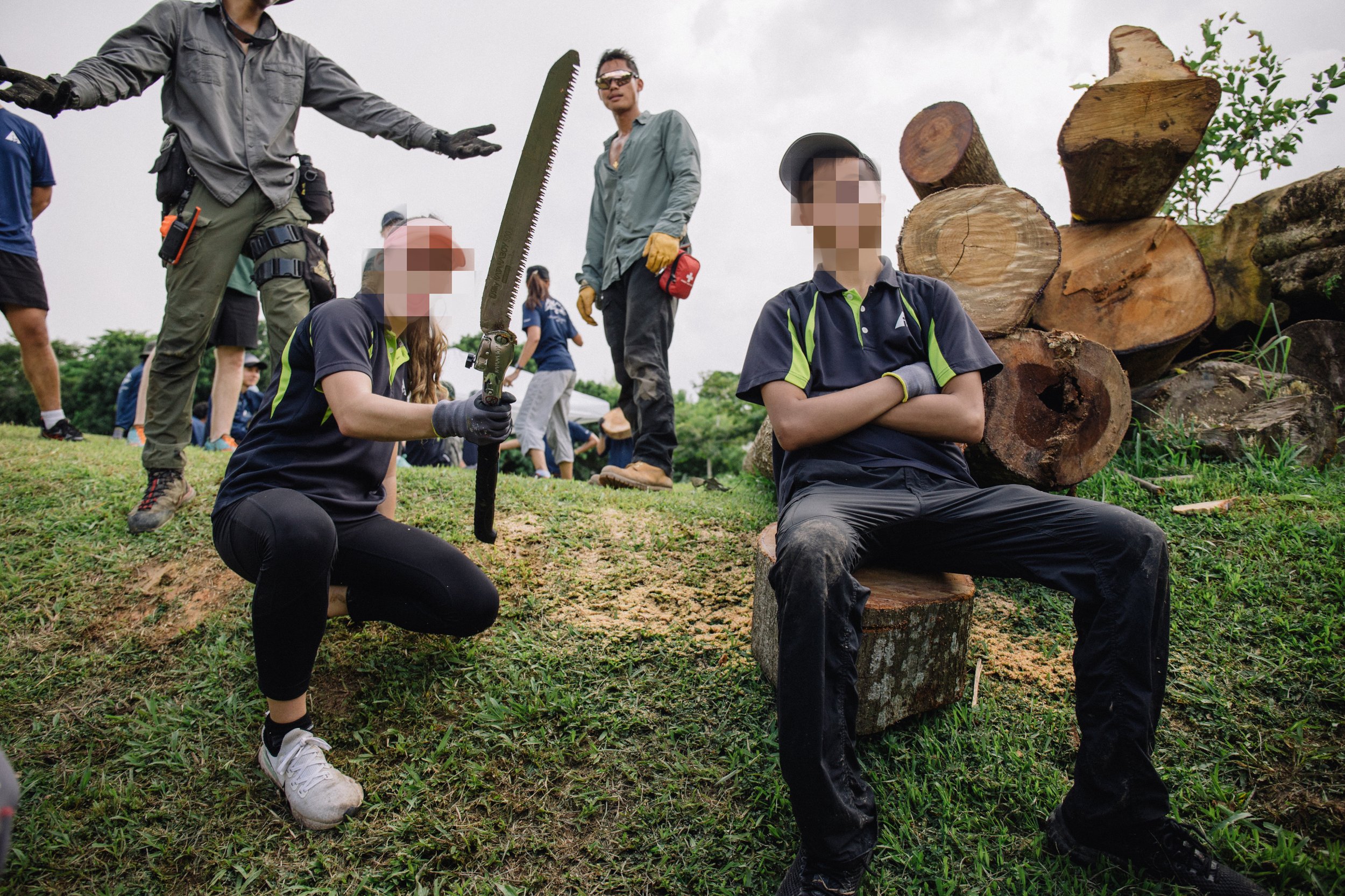
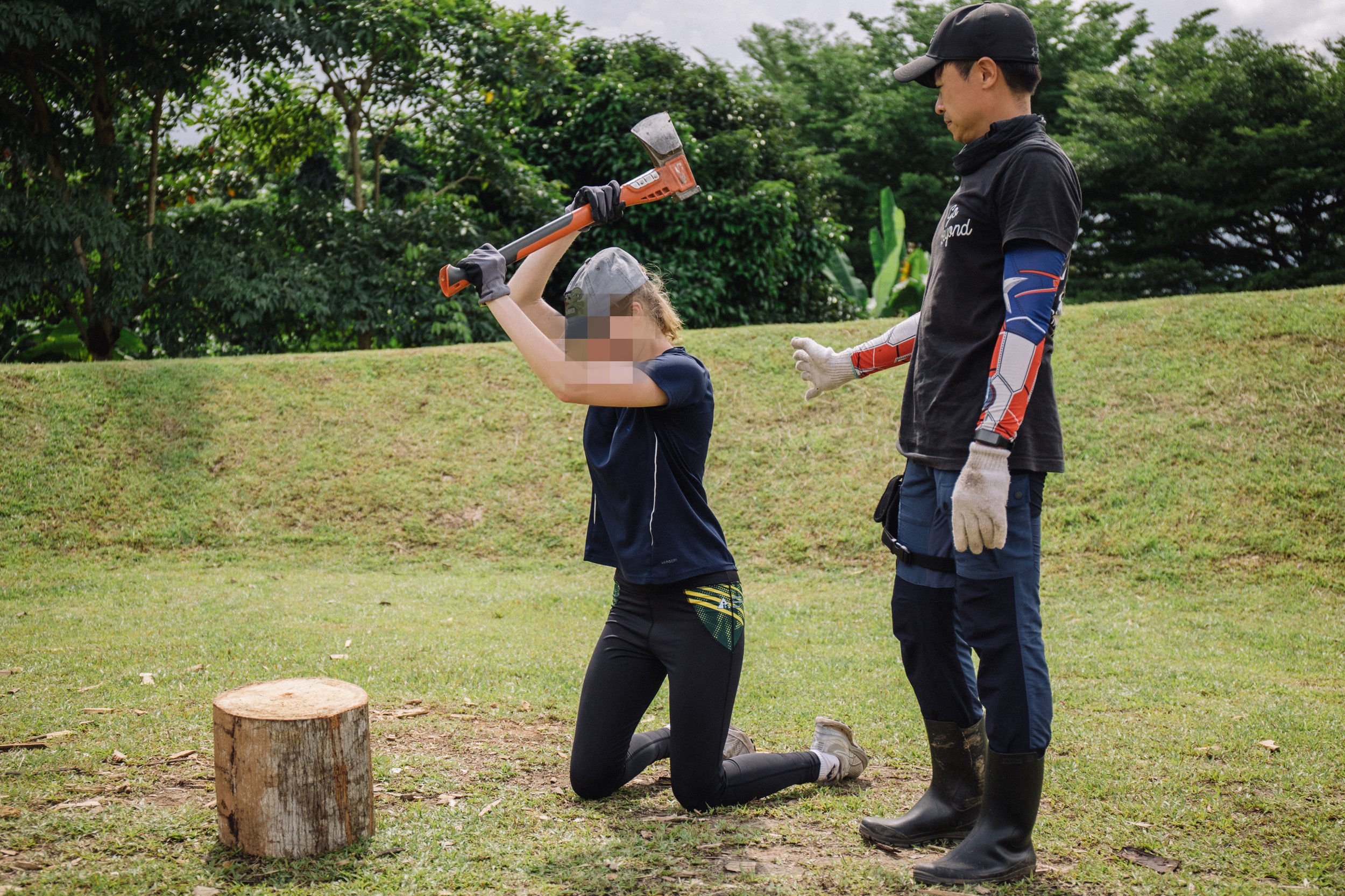
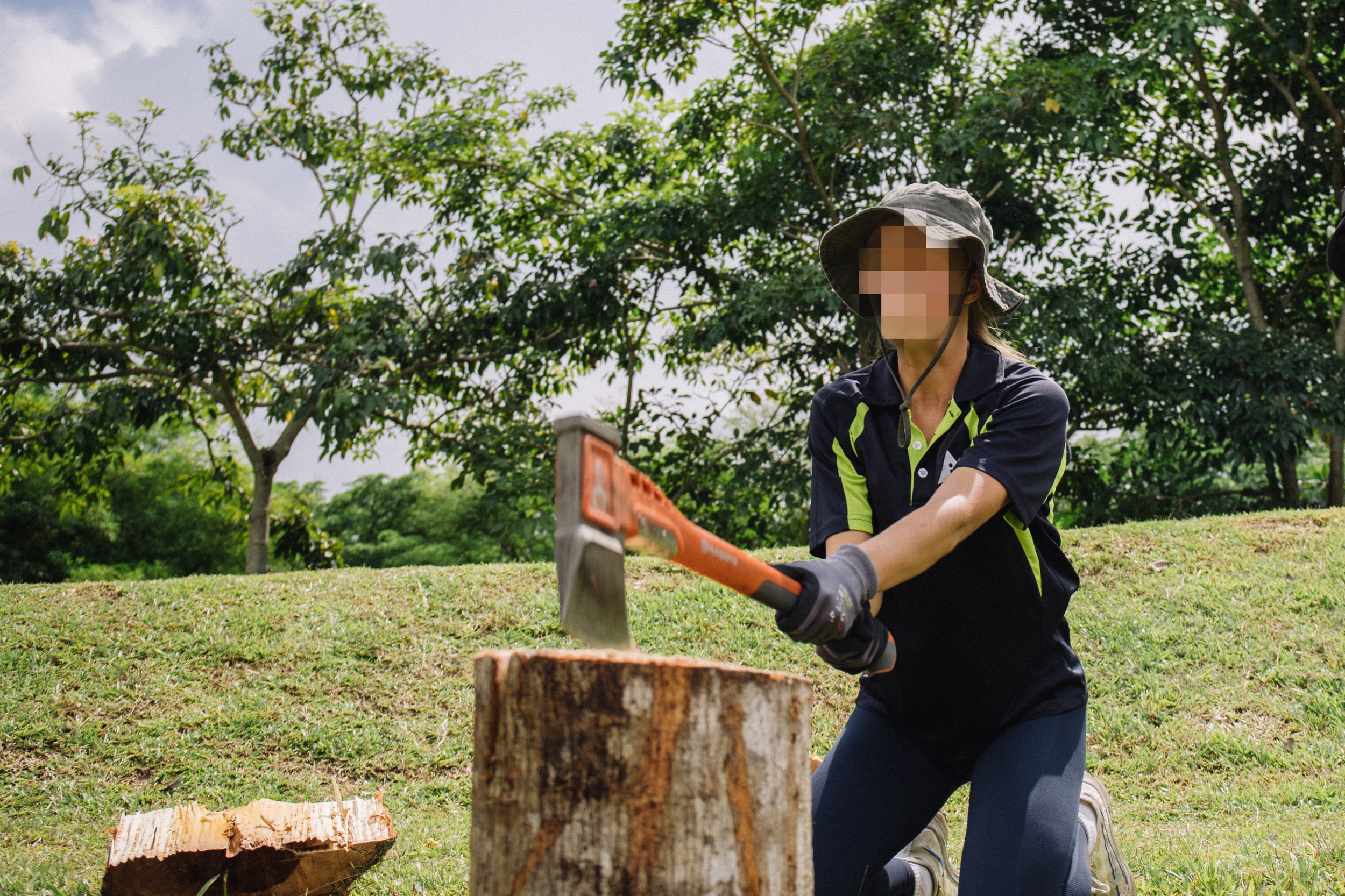
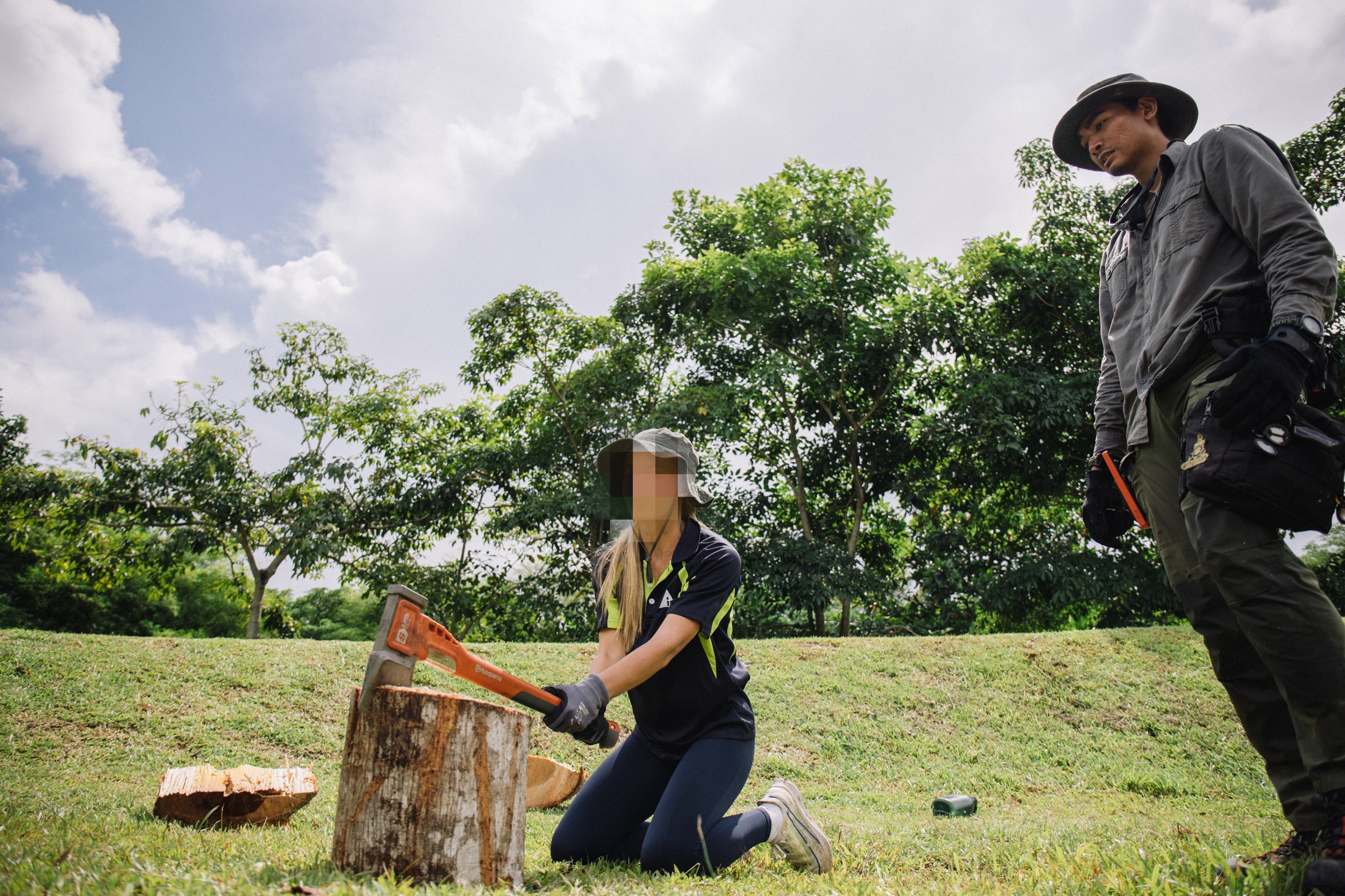
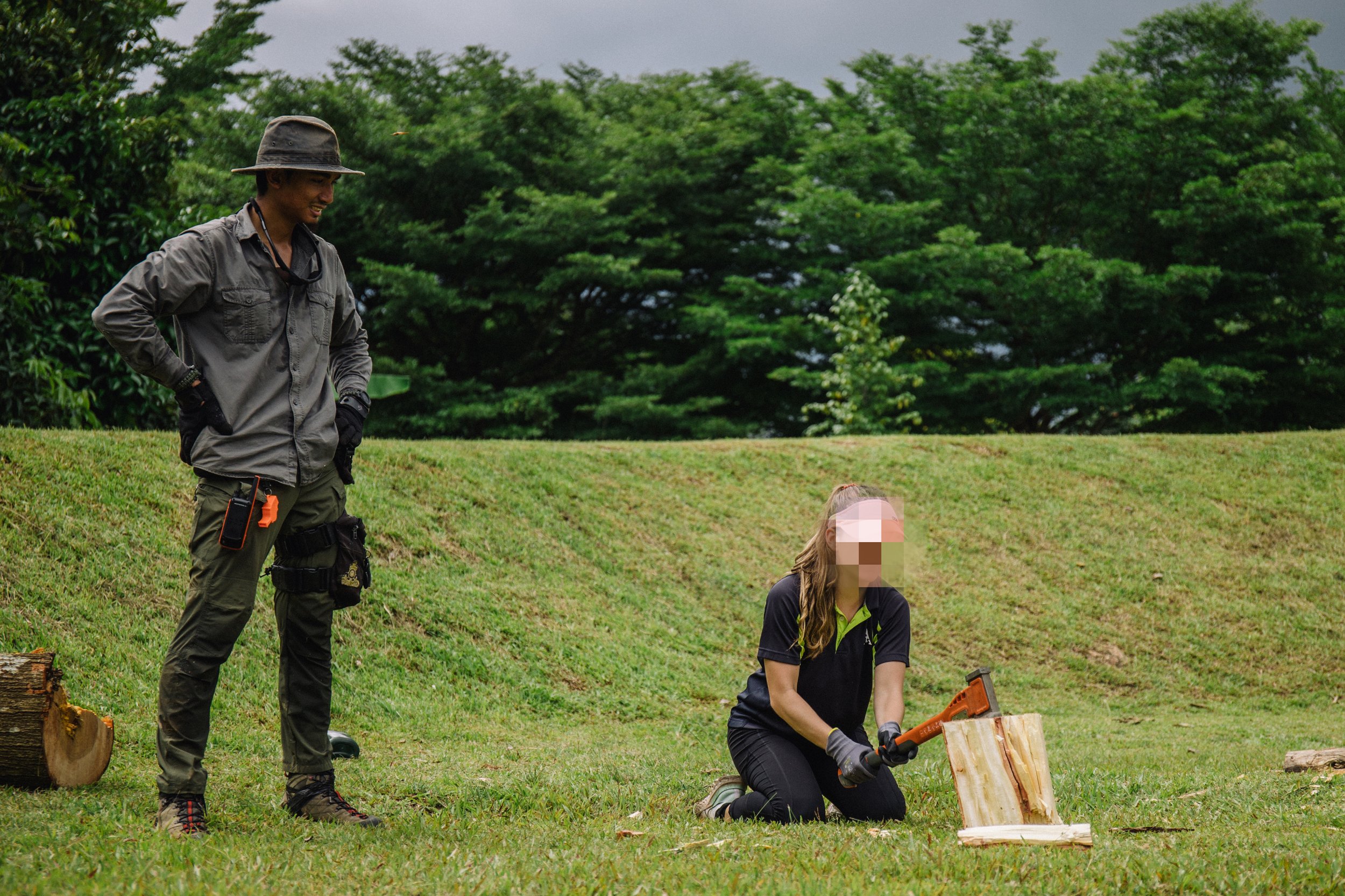
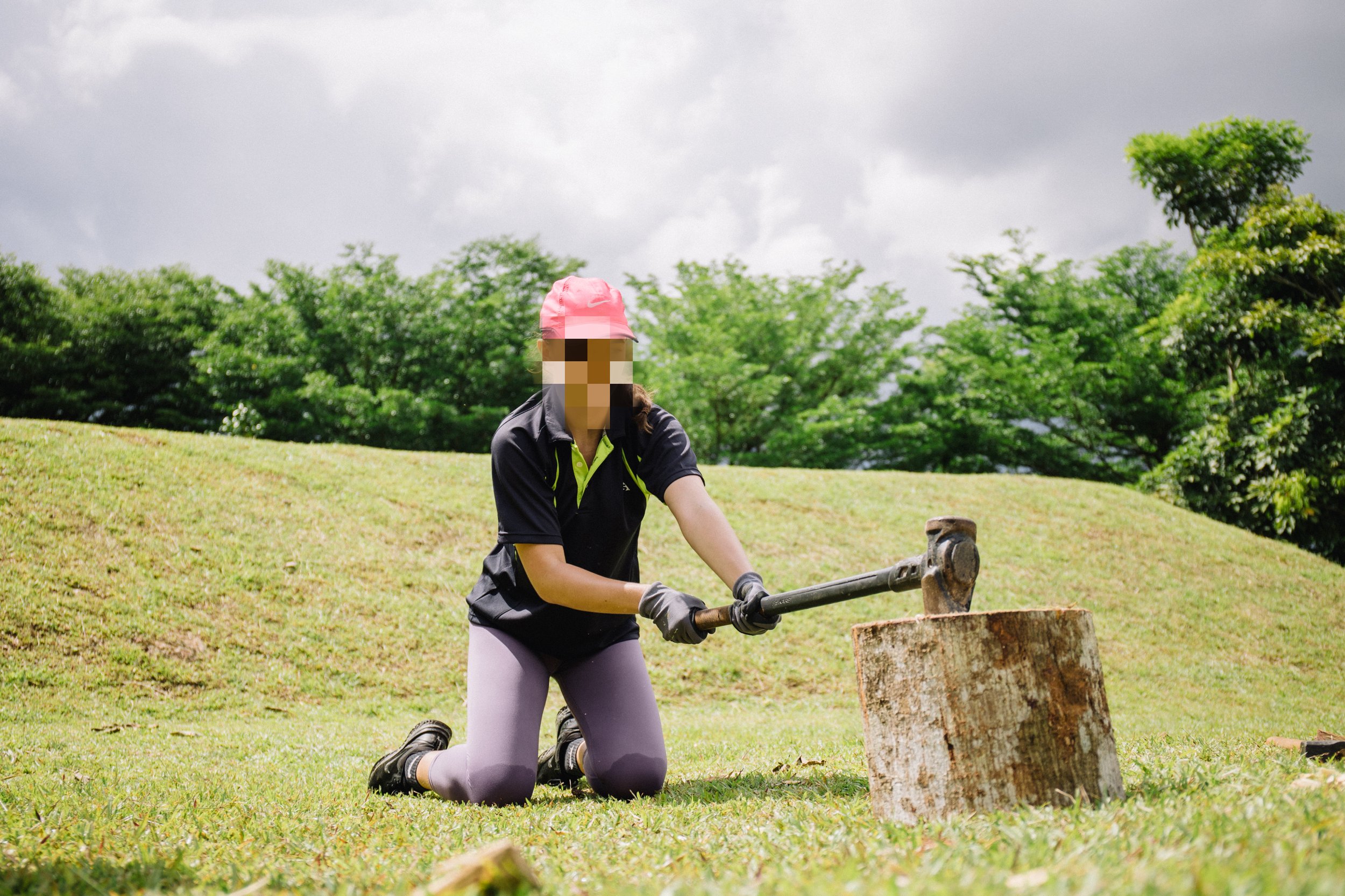
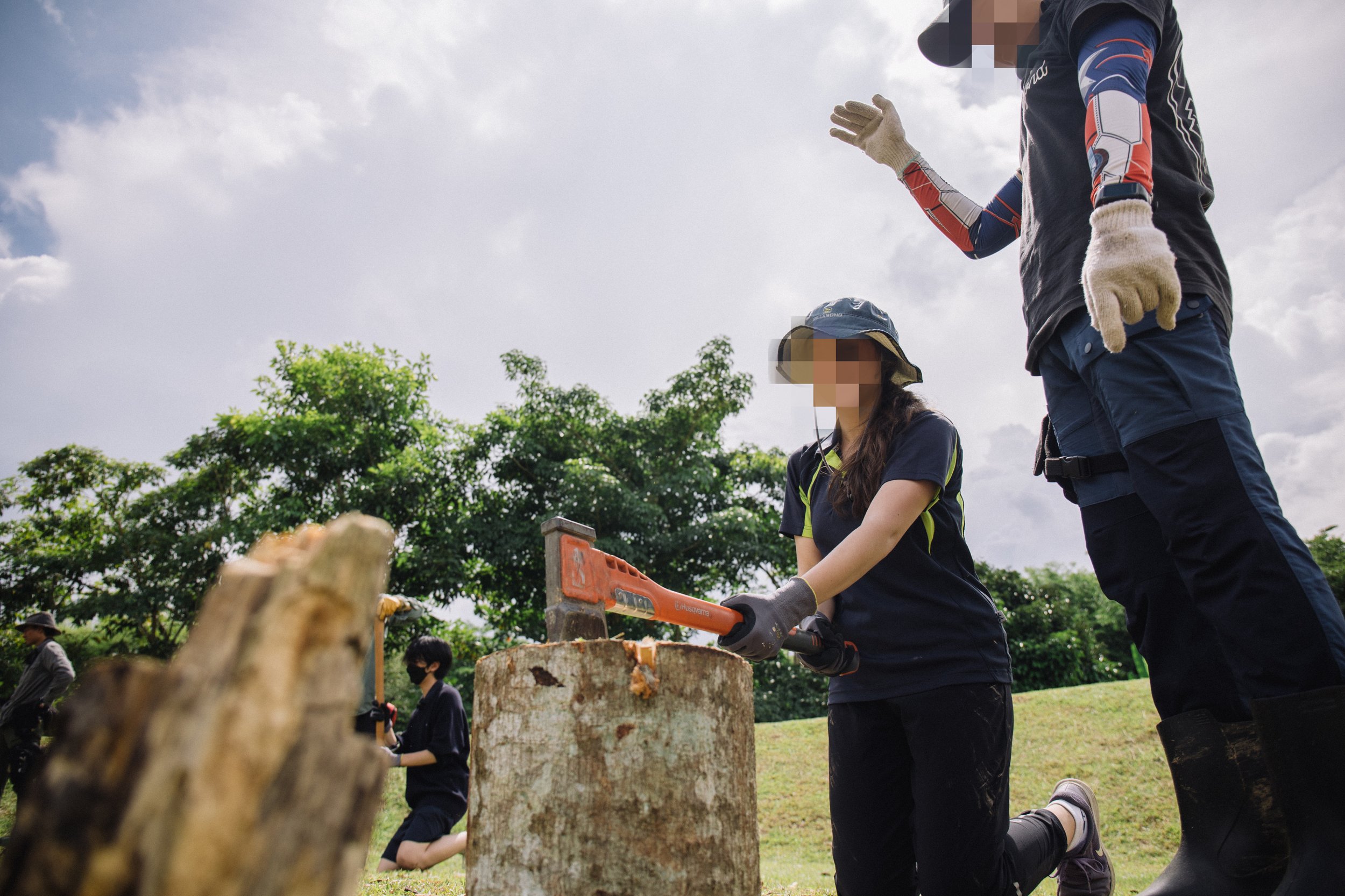
This concludes the first two days of our 5-day AIS X BE Outdoor Education week! We’re now entering Days 3 and 4.
Day 3 & 4: Soaring Beyond Survival
These next 2 days are all about deepening their grasp on survival skills.
By the third day, most of their faces were red from the glaring sun, and their noses were increasingly accustomed to the smells of after-rain. We still saw these students choose to give their attention to each activity, enthusiastically attempting the activities we planned for them. Let’s pick up the pace, Sharks; moving on from ‘basic’ to ‘advanced’!
Sitting In the Bush
With their hands on their hips, their heads nodded in understanding and fascination as our instructors shared about the bushcraft stool and explained how to build it.
For the Bushcraft Stool segment, all our students were presented with a Scotch-eyed auger made of tool steel (manual drill), a tool they’ve never encountered before in their daily lives, and a chopped tree stump. After a thorough demonstration by our instructors, each group of 4-5 participants was tasked to build a stool within 2 hours. We then test the stool’s durability, by having a team member stand on it for at least 15 seconds.
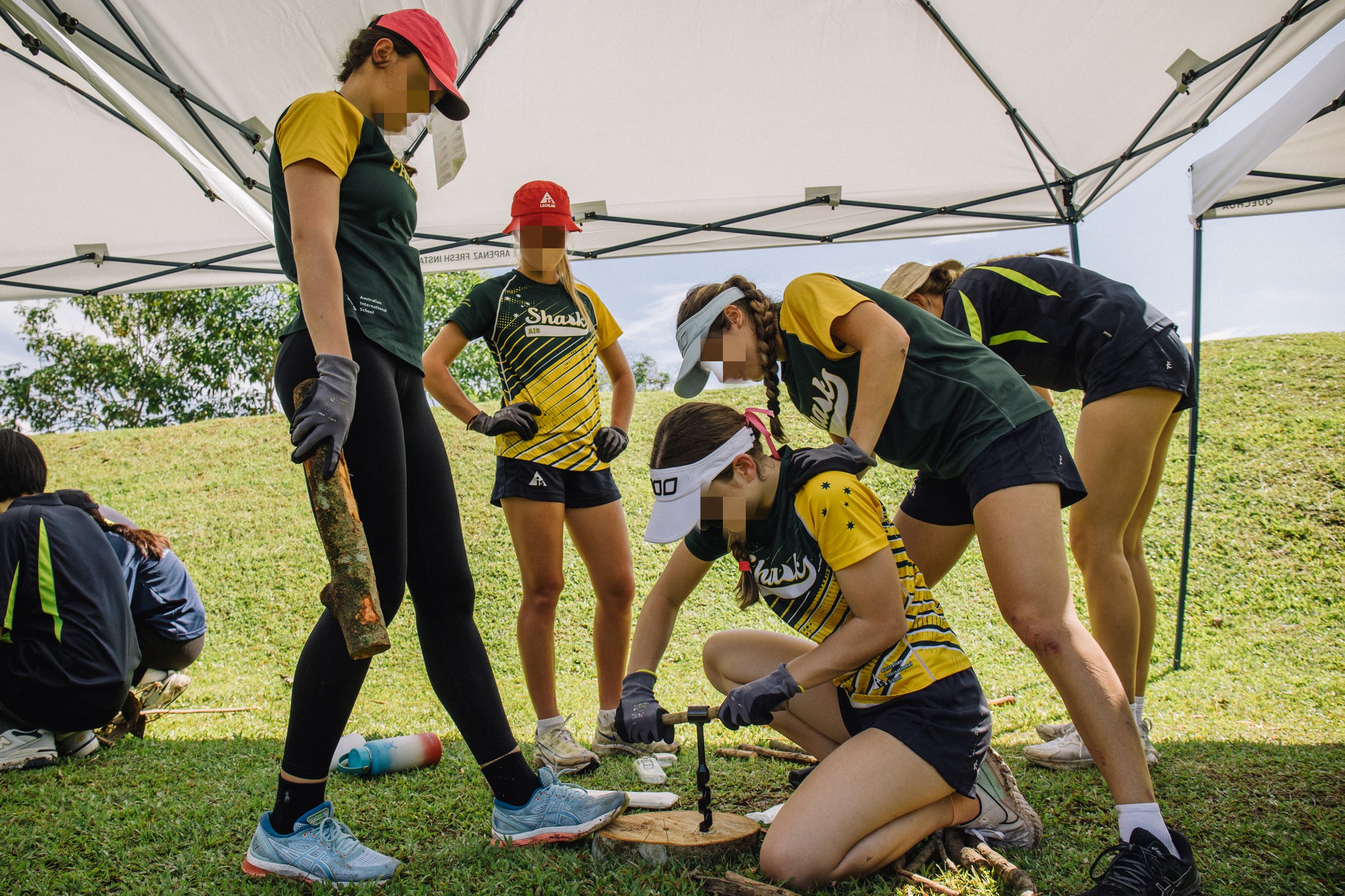
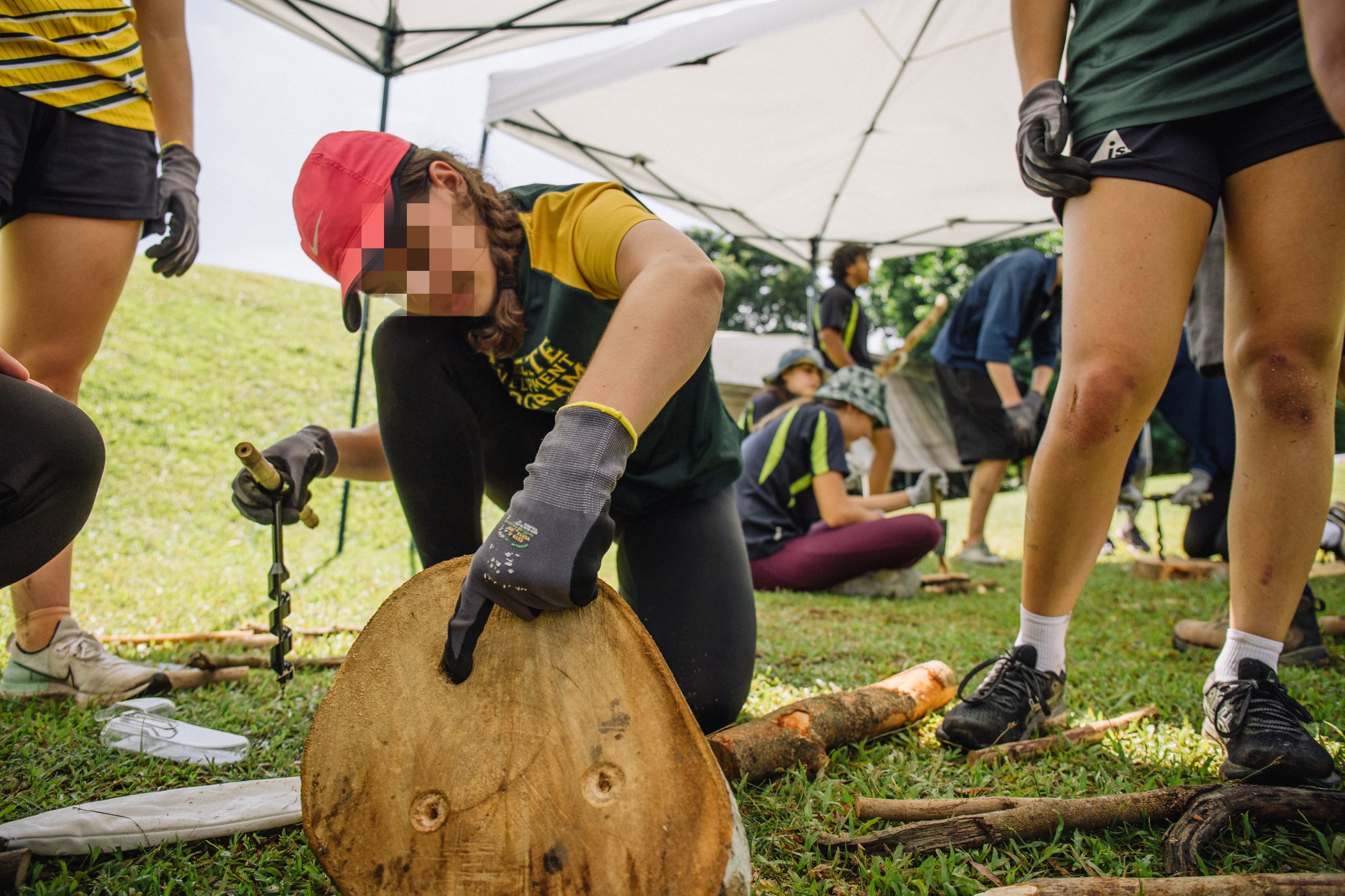
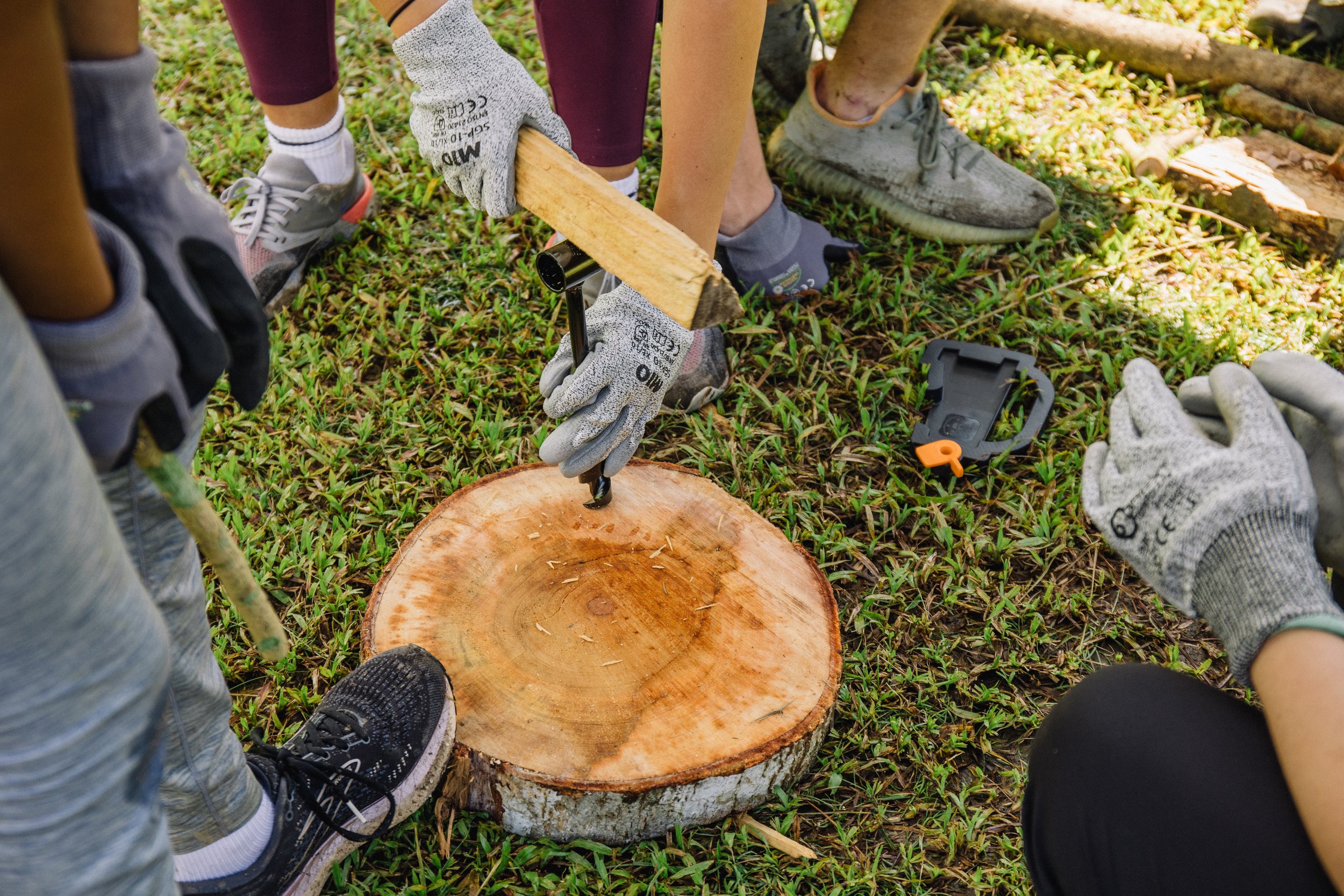
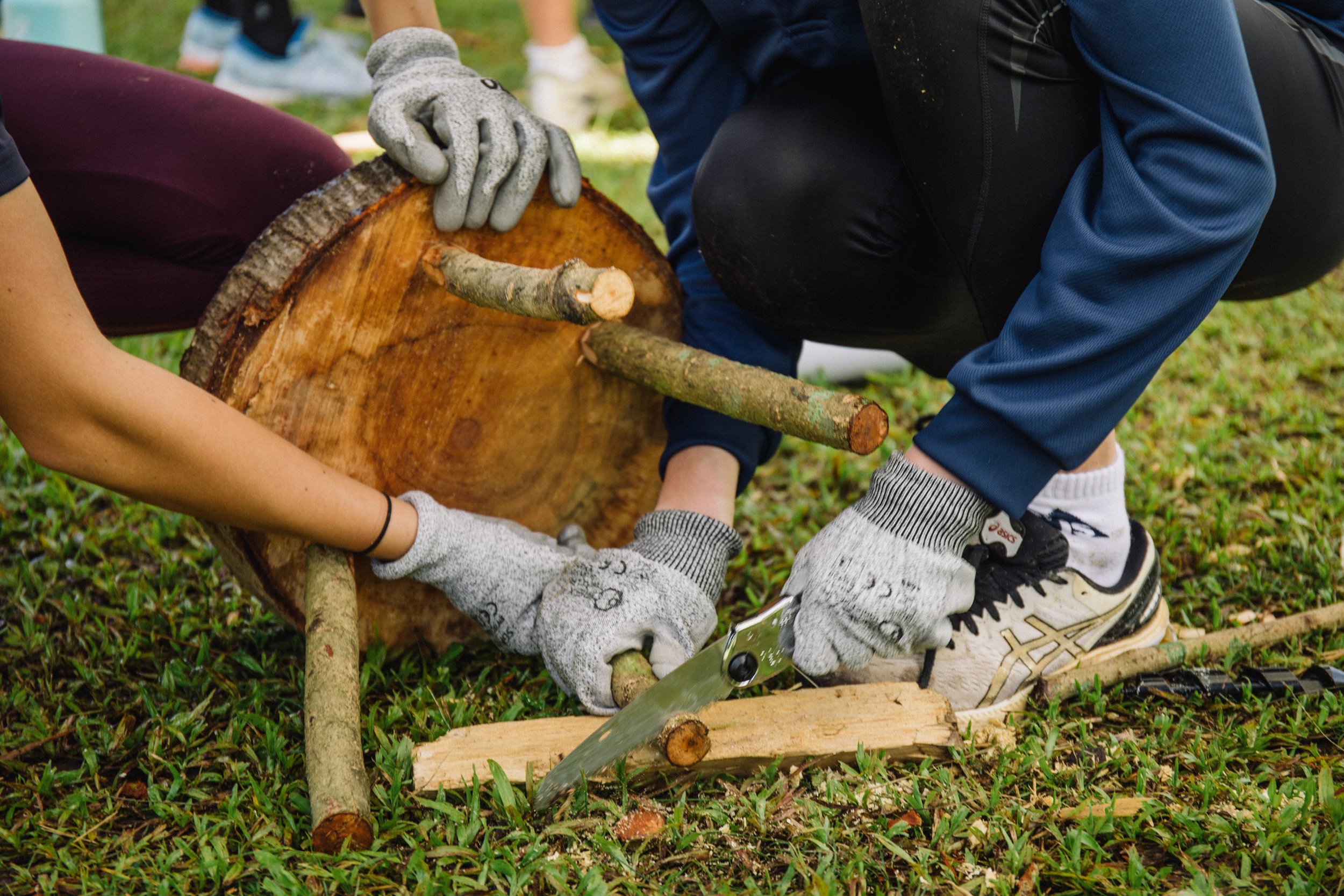
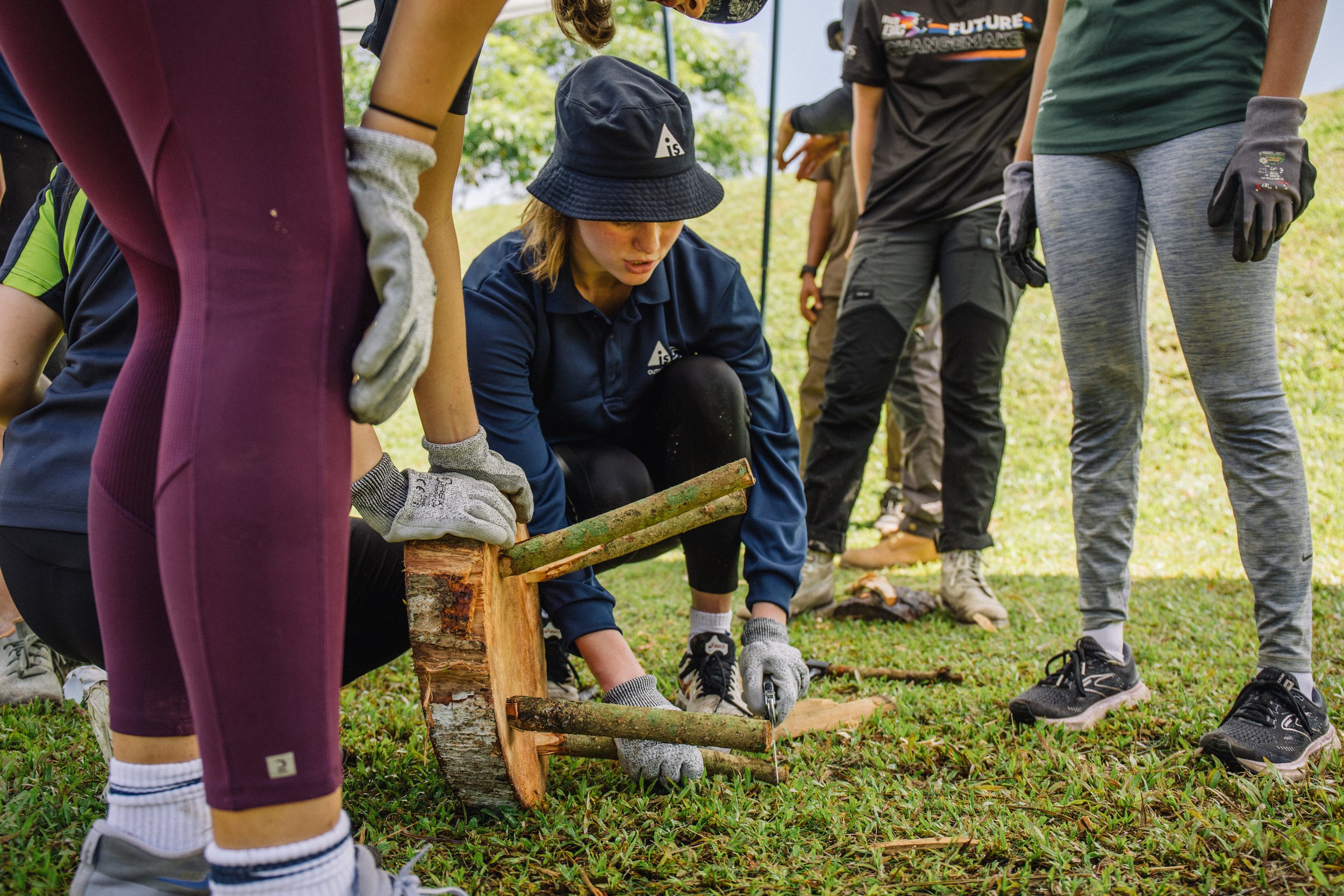
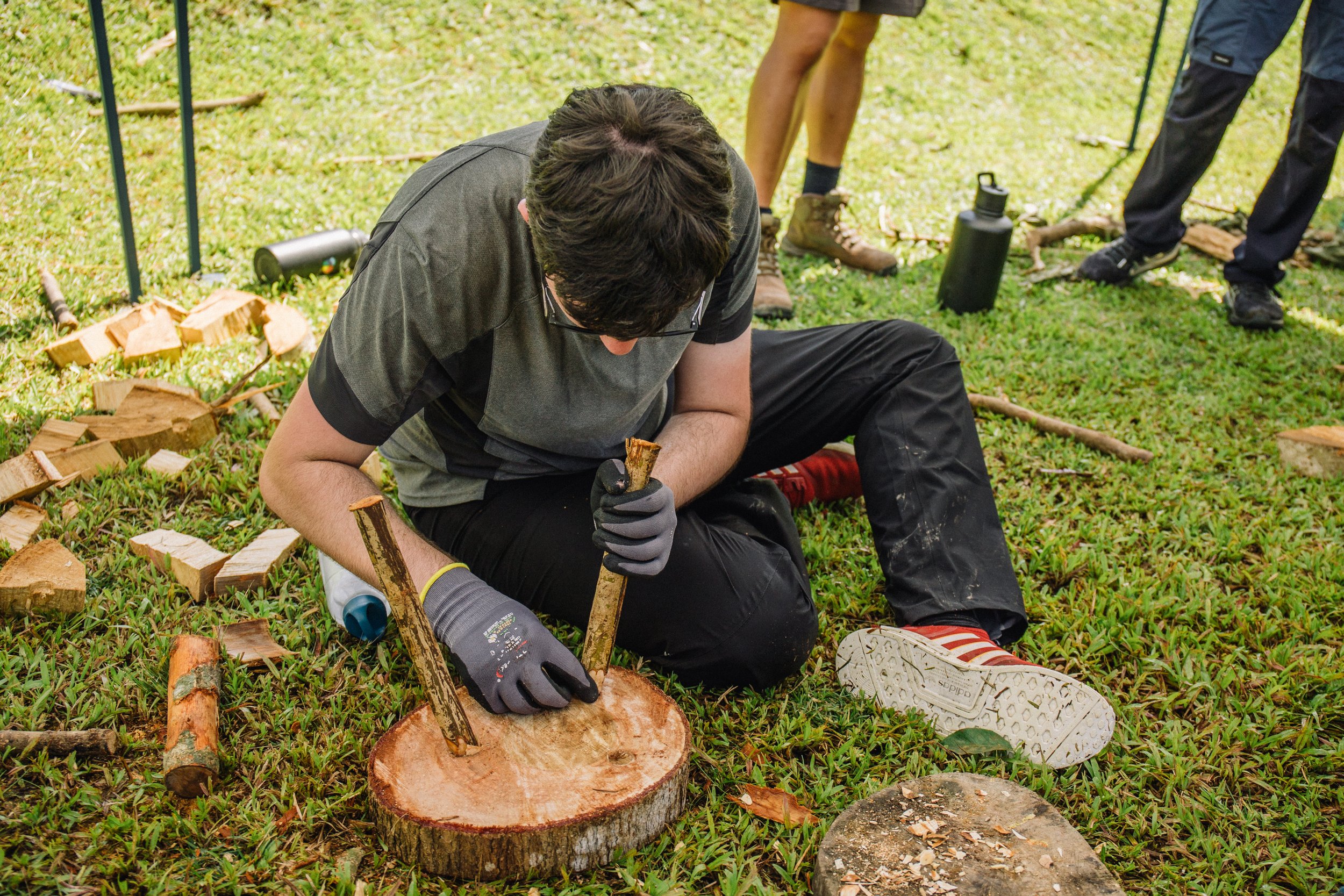
Gloved hands came together in every group of Sharks, as the students raced against time to piece together their own stool. Chatter echoed across the campground, drifting amidst the sounds of drilling, chopping, clanking, knocking, and mallet hitting. After the challenge, every tool had traces of the sticky red sap from the freshness of the chopped stumps.
Not every group emerged victorious in this stool-craft endeavor. Some groups knocked the stump into halves, while others had their stools unable to withstand their weight for 15 seconds. Sighs of disappointment and roars of victory mixed as we concluded this segment. Some of the successful groups were incredibly proud of their work; a group of young ladies even carried their stump around the entire day, using it as a rest, for lunch, etc, and expressed intentions to bring it back to school after camp.
Let’s go, Team Gas Rocket Stove!
Who knew this segment could teach you how to cook poached eggs?
Rocket stoves are an important asset for cooking and warmth in survival. Our instructors wanted our students to learn how to do this, alongside the other skills we were teaching. And it involves converting a stump into a stove and drilling 2 holes to form an L-shaped opening to create airflow for the fire. The stump serves not only as the stove but also as fuel for cooking until it burns off entirely.
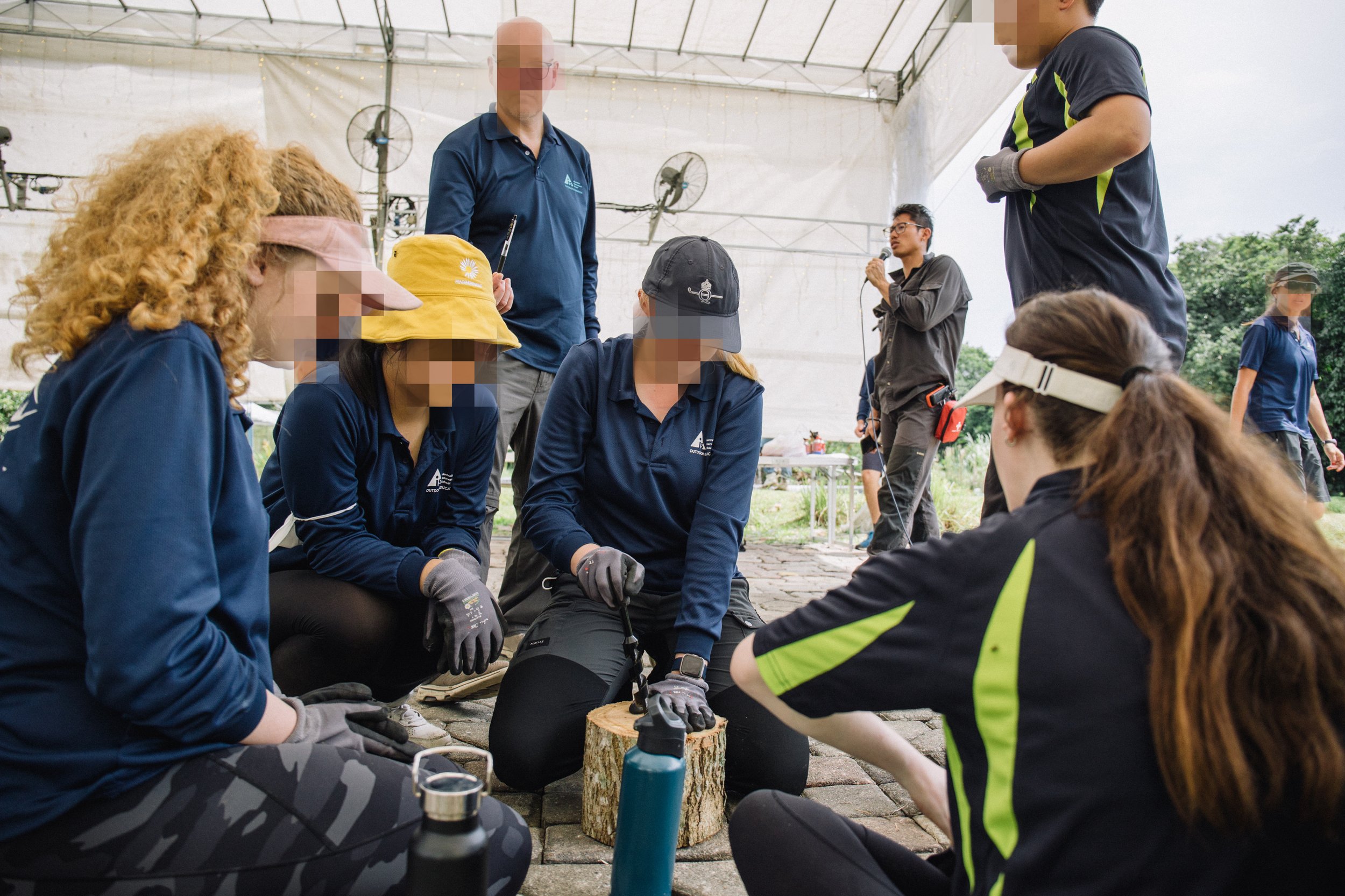
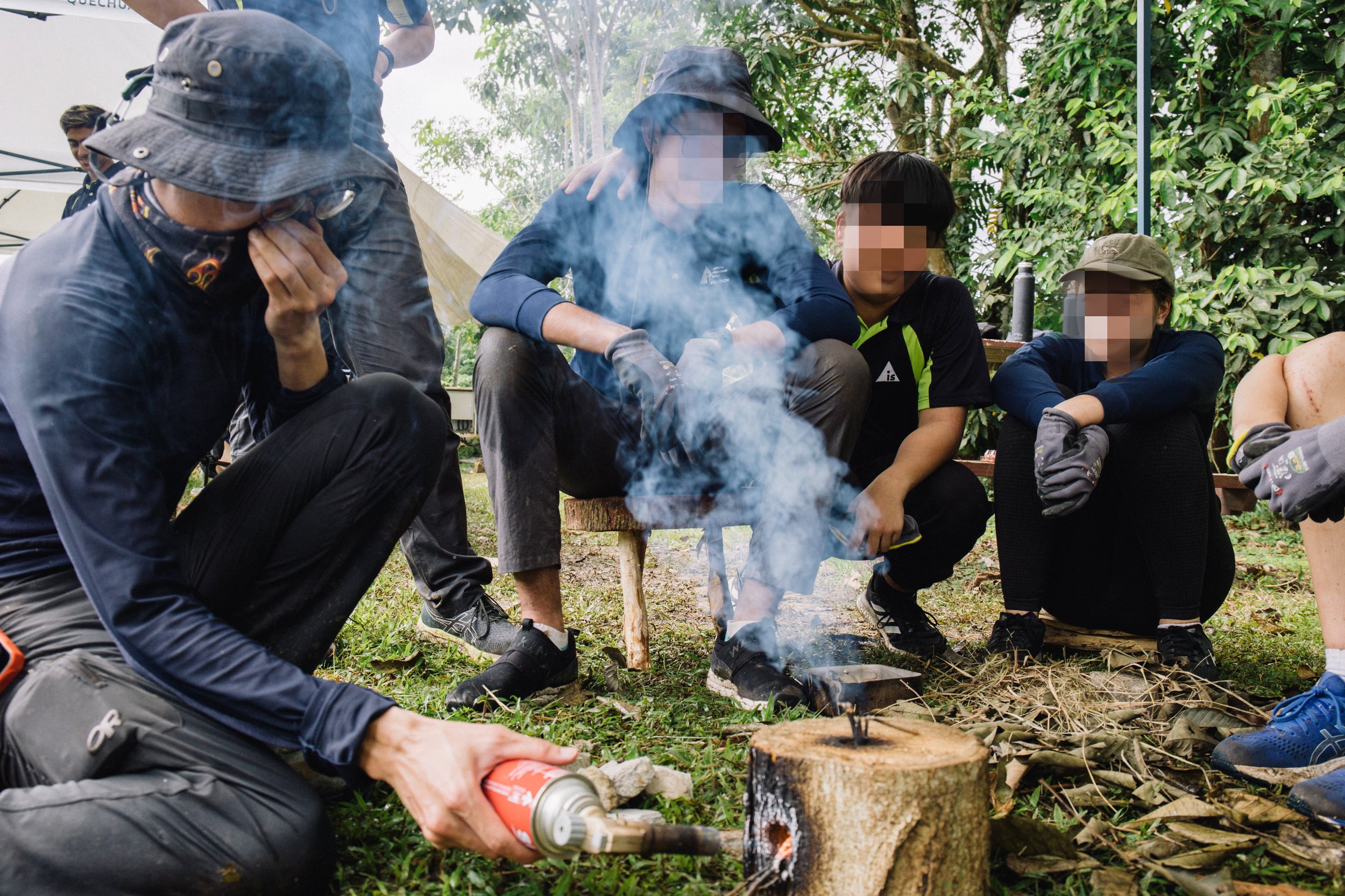
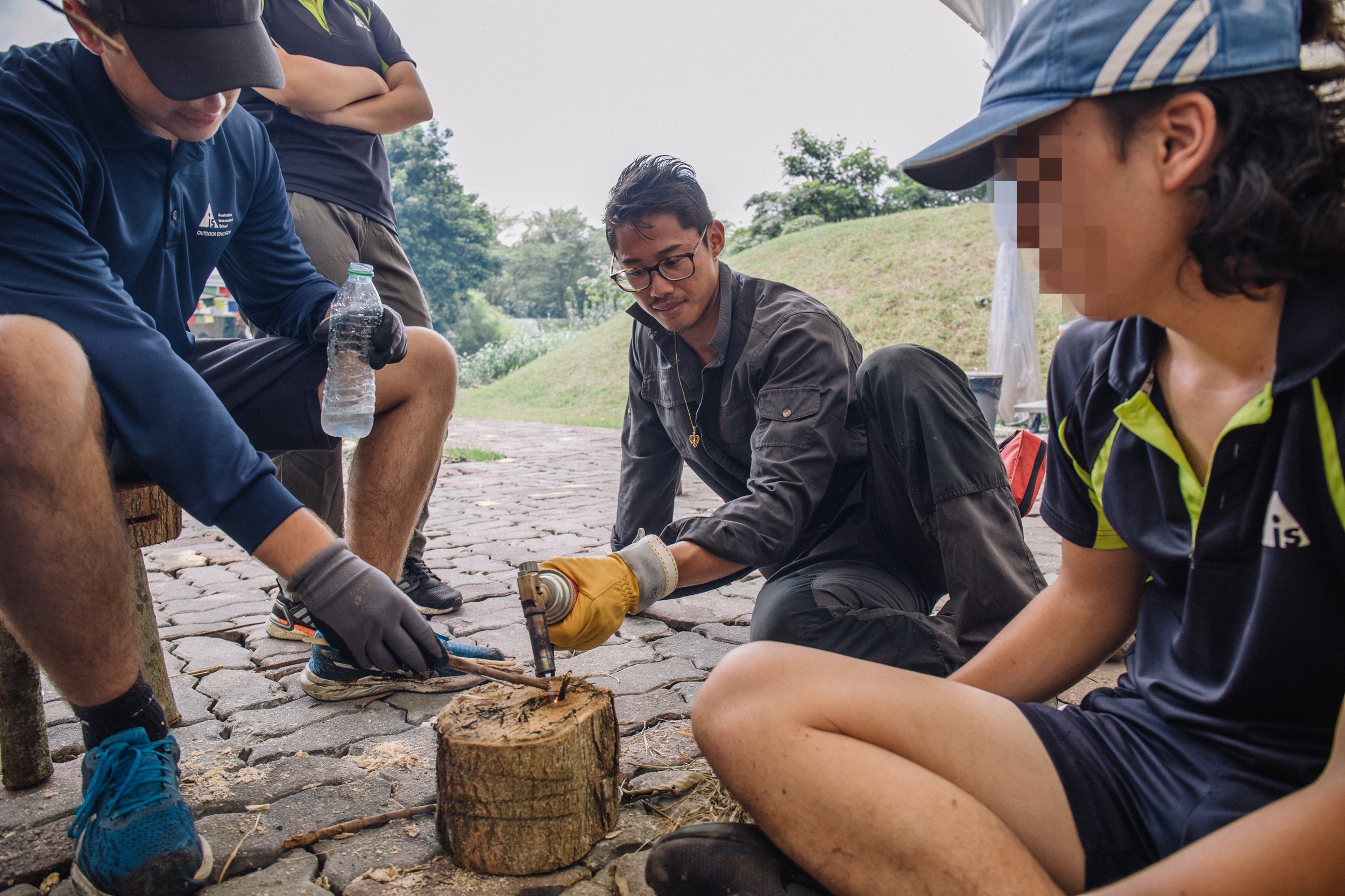
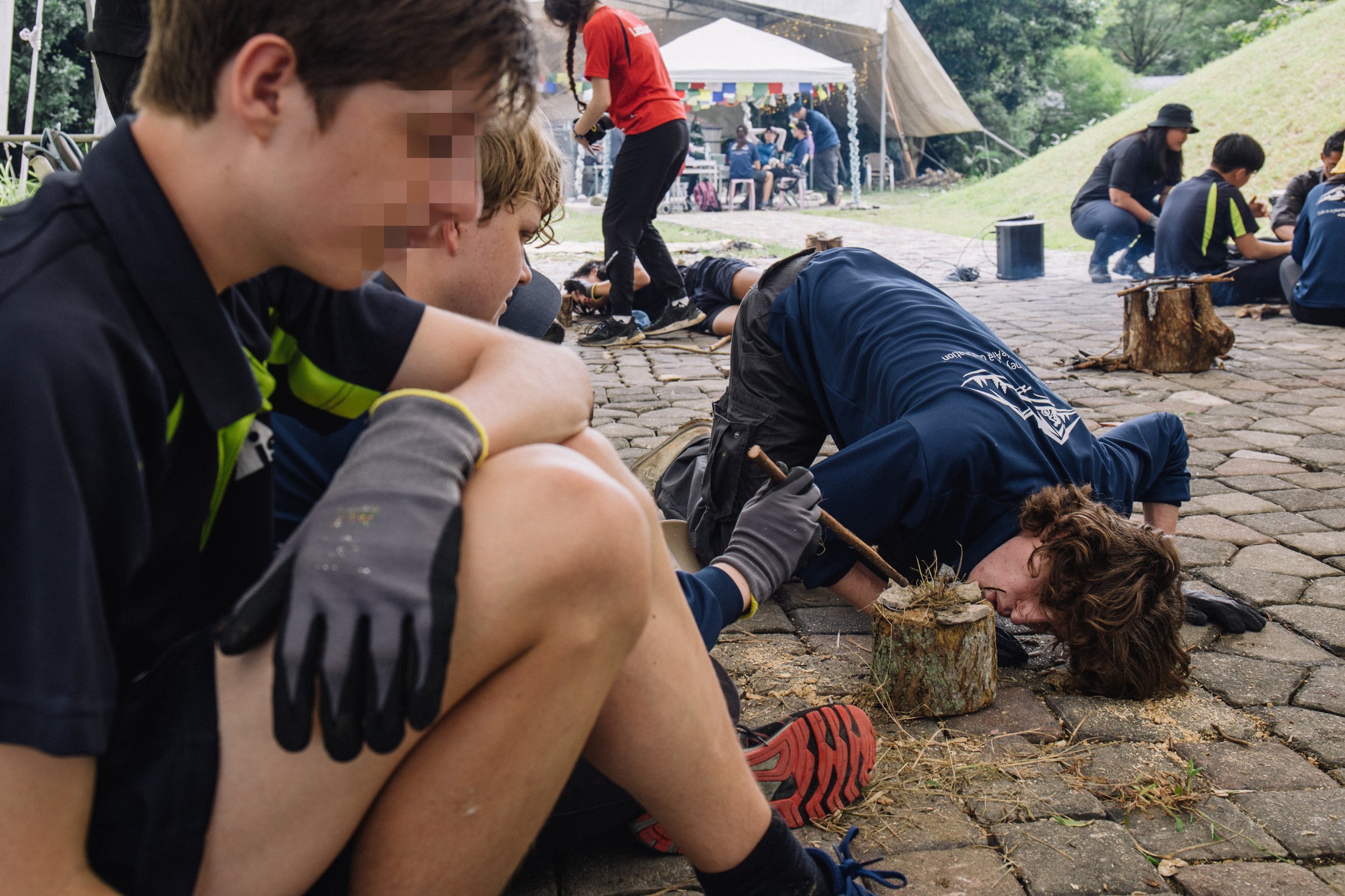
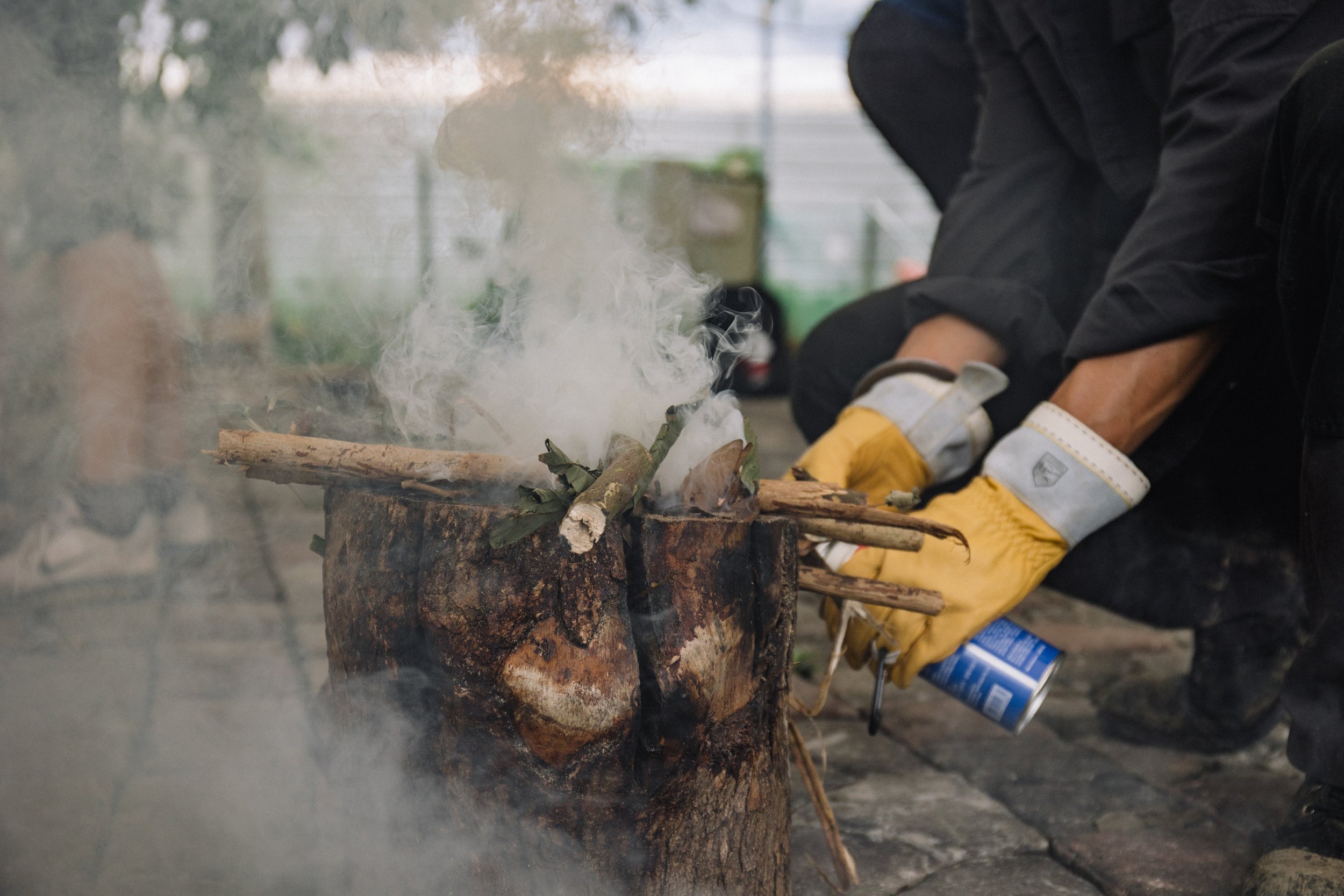
We helped the students start the fire, before handing it over to them to keep the fire alive enough to boil eggs successfully. Sound chattering soon filled the air, alongside the hissing and crackling of fire. Sometime later, you’d hear kids furiously blow at the fire in attempts to breathe oxygen into it and smell smoke from burning kindles as the Sharks scramble to source appropriate fire materials.
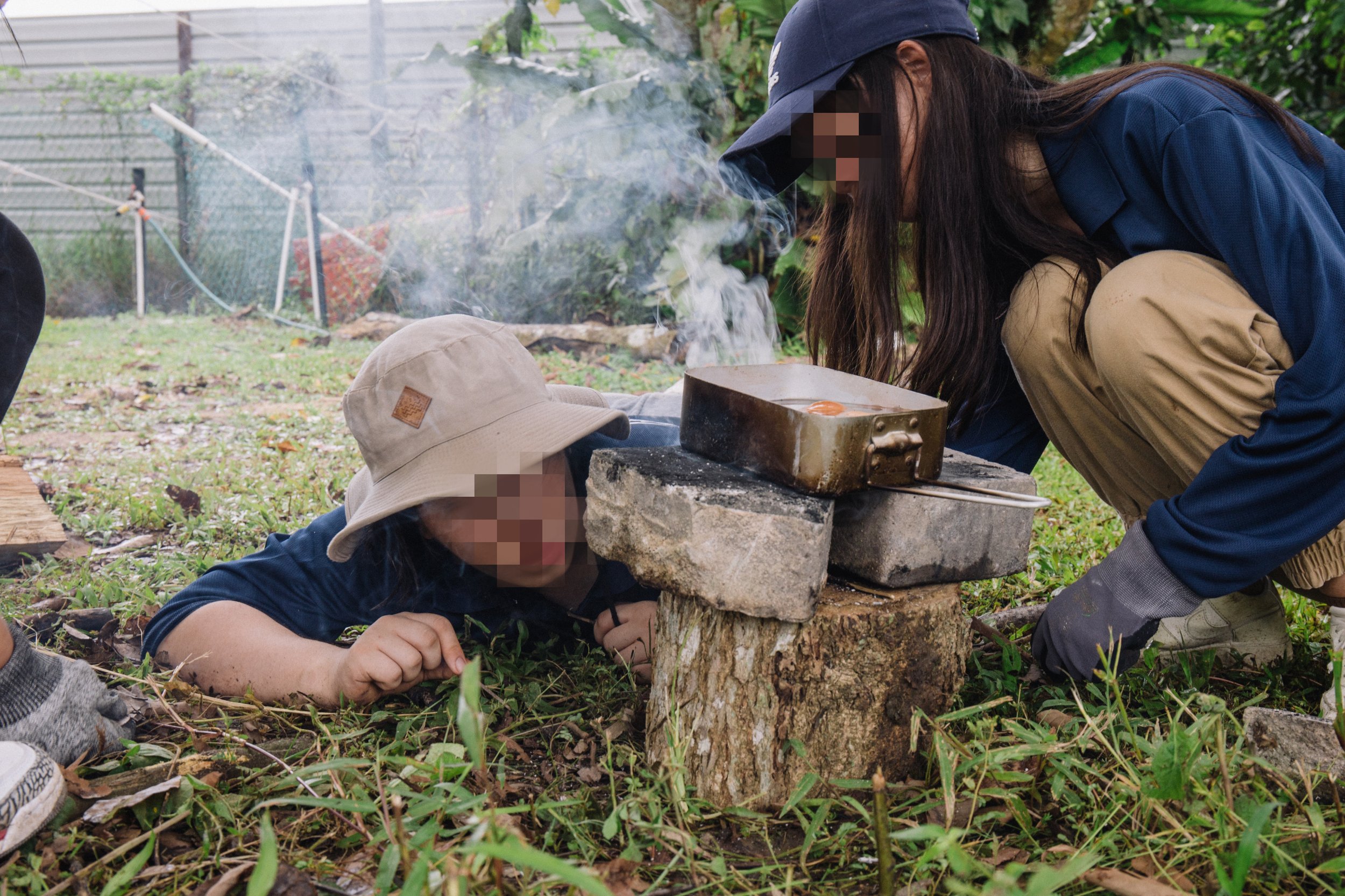
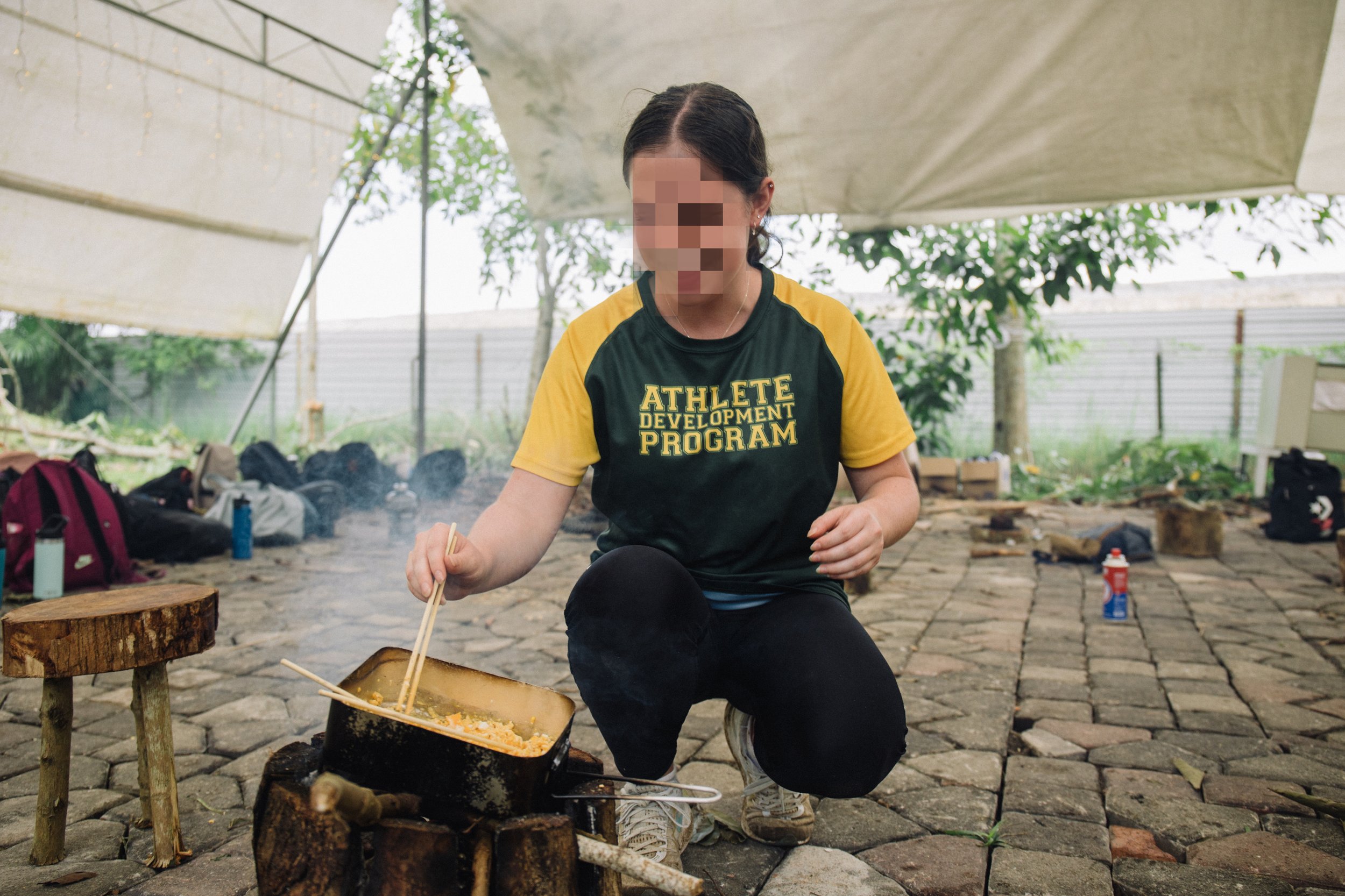
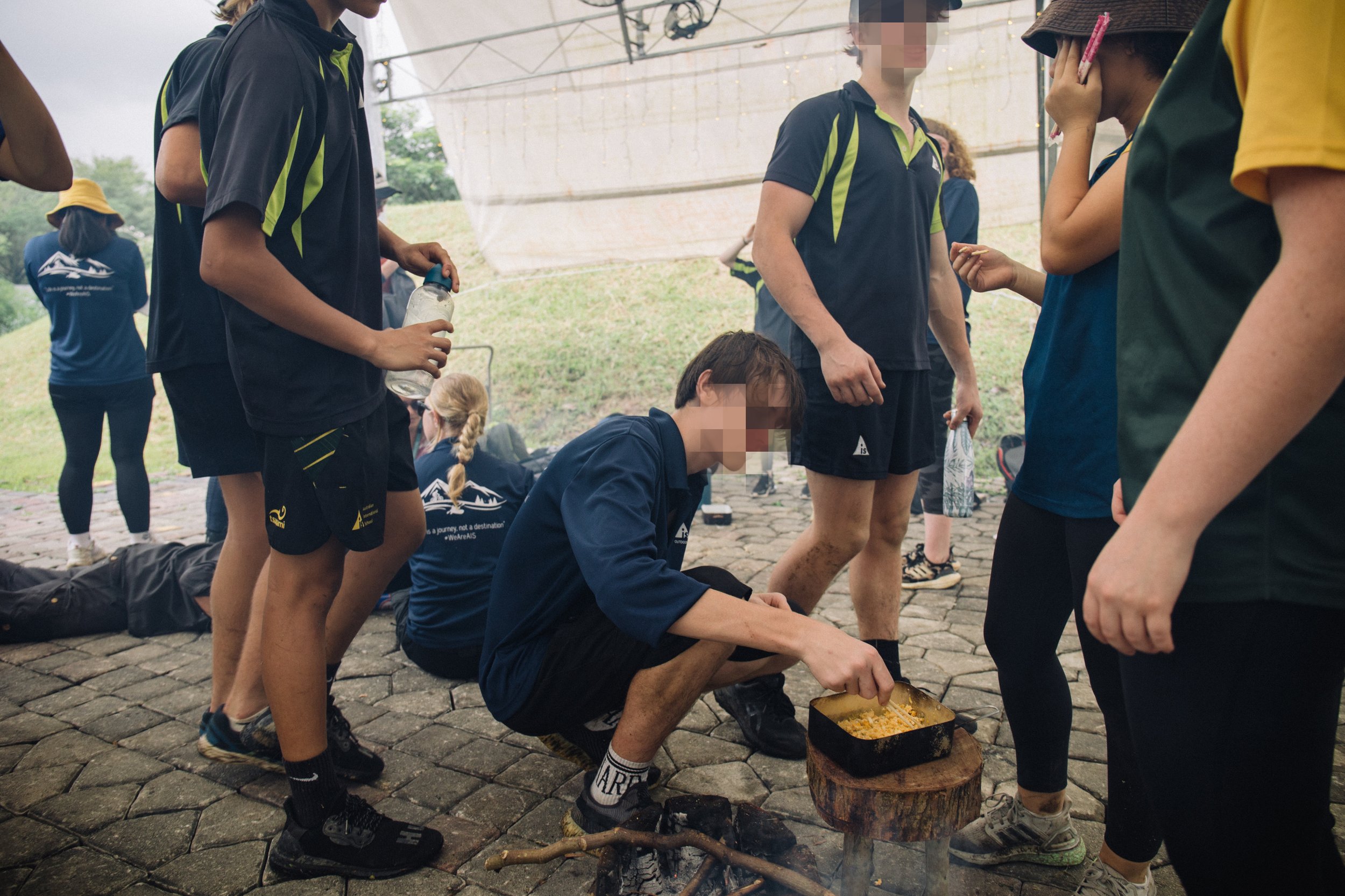
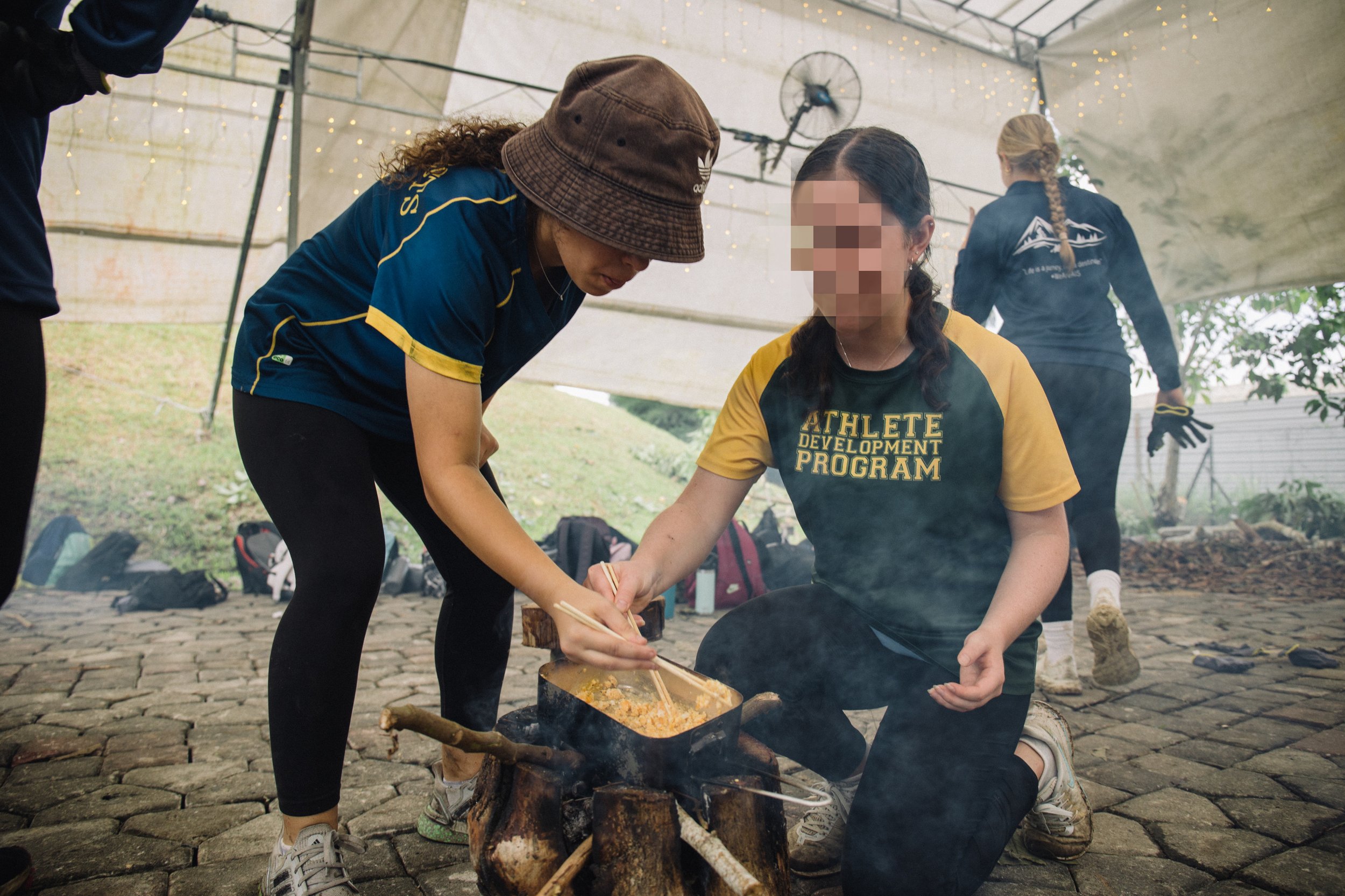
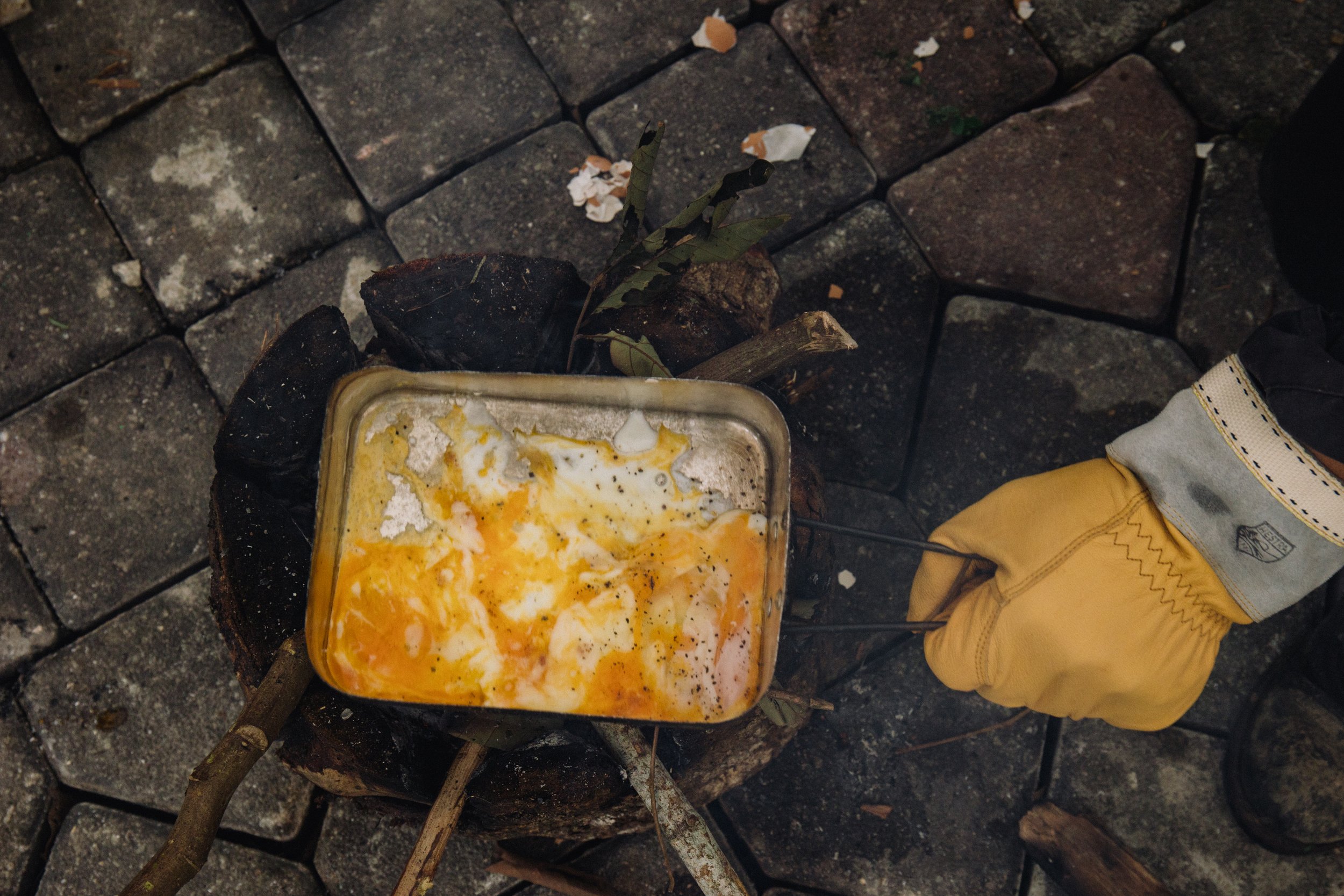

At the end of this segment, we had three main outcomes. The successful groups peeled and ate their cooked eggs, while the unsuccessful groups groaned at the translucent goo emerging from their cracked eggs. We also had semi-successful groups who unintentionally ended up cooking poached eggs!
Toast to Clean H20
Some bottles emerged black, some had water that could pass off as mineral water itself! Let’s toast to clean water!
When Scott was climbing Mount Everest, he drank filtered water at Everest Base Camp. He ended up with diarrhea for 3 days, because even though the water looked clean, it wasn’t purified. Knowing how to produce clean, potable water from natural waters in the wild is one of the most important survival skills to master, given how we could die without water for more than 24 hours! We won’t go into the full details of the introduction and demonstration we give to the students, but here are some fun facts to help you understand the topic better.
Filtration is the process of eliminating large sediments (rocks, pebbles, leaves, etc.) from the water, as well as small sediments (gravel, sand, faeces, etc.), pathogens, bacteria, and microorganisms that can cause illness (ecoli, salmonella, etc.). However, the water is still unsafe to drink at this point due to the invisible viruses in the water. It must undergo purification, before consumption. Purification helps remove viruses in the filtered water by boiling it, or by using disinfecting tablets. The boiling point of water is 100°C at sea level, and it varies with atmospheric pressure. This means that at Mount Everest, water boils at about 68 °C. Disinfecting tablets are small tablets that kill viruses and bacteria in filtered water. Some examples are Chlorine tablets, Chlorine Dioxide tablets, and Iodine tablets.
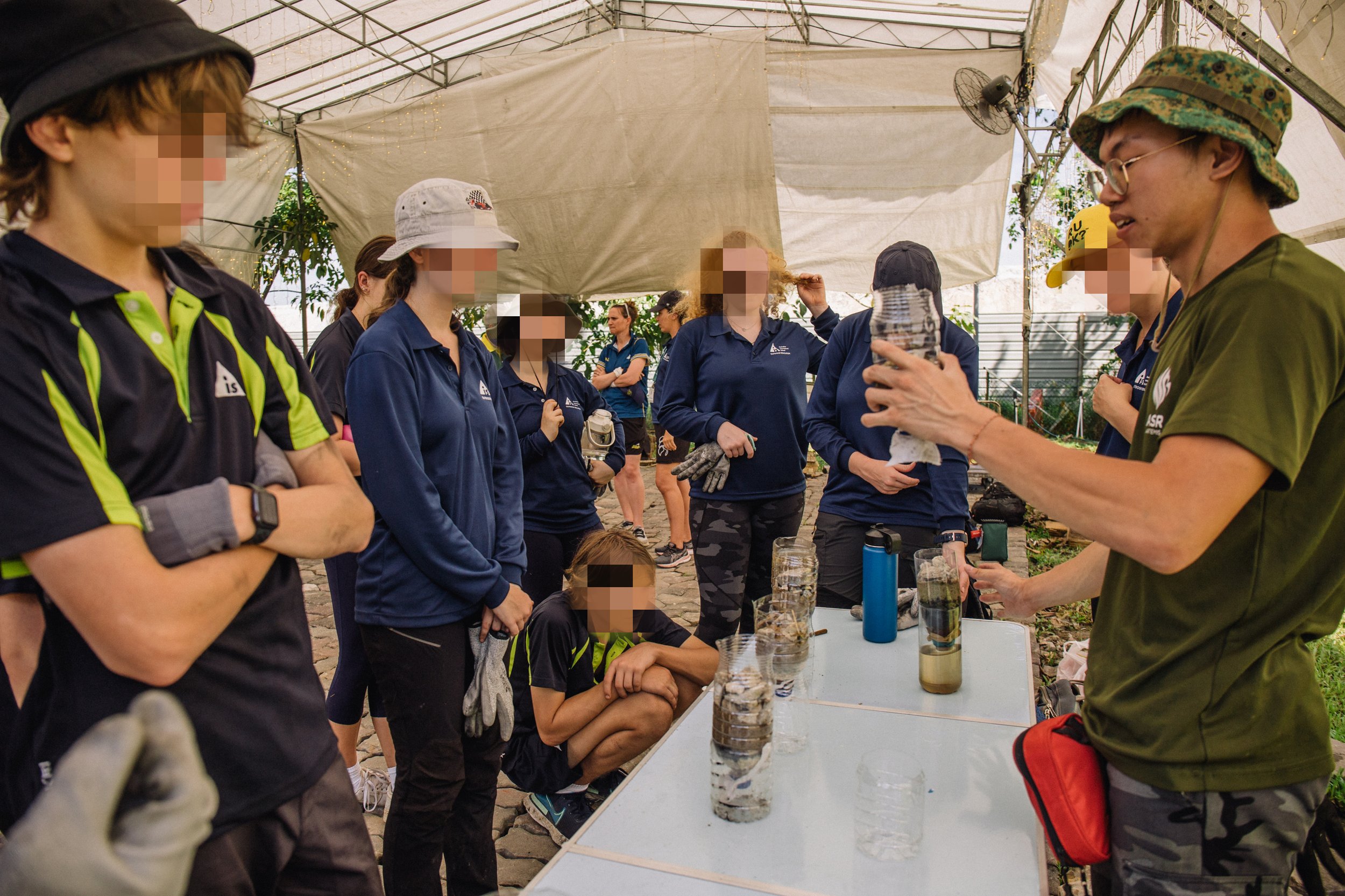
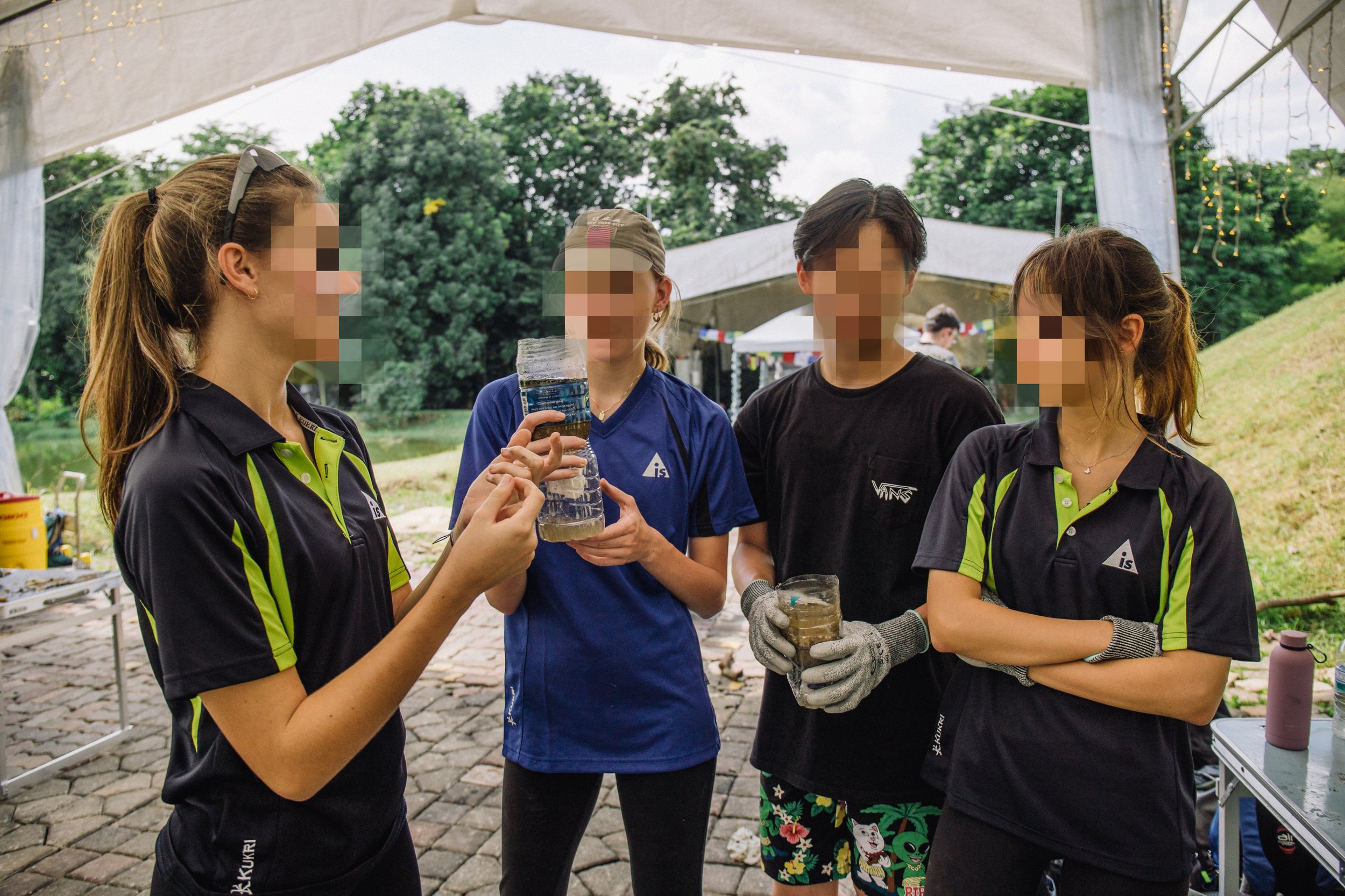
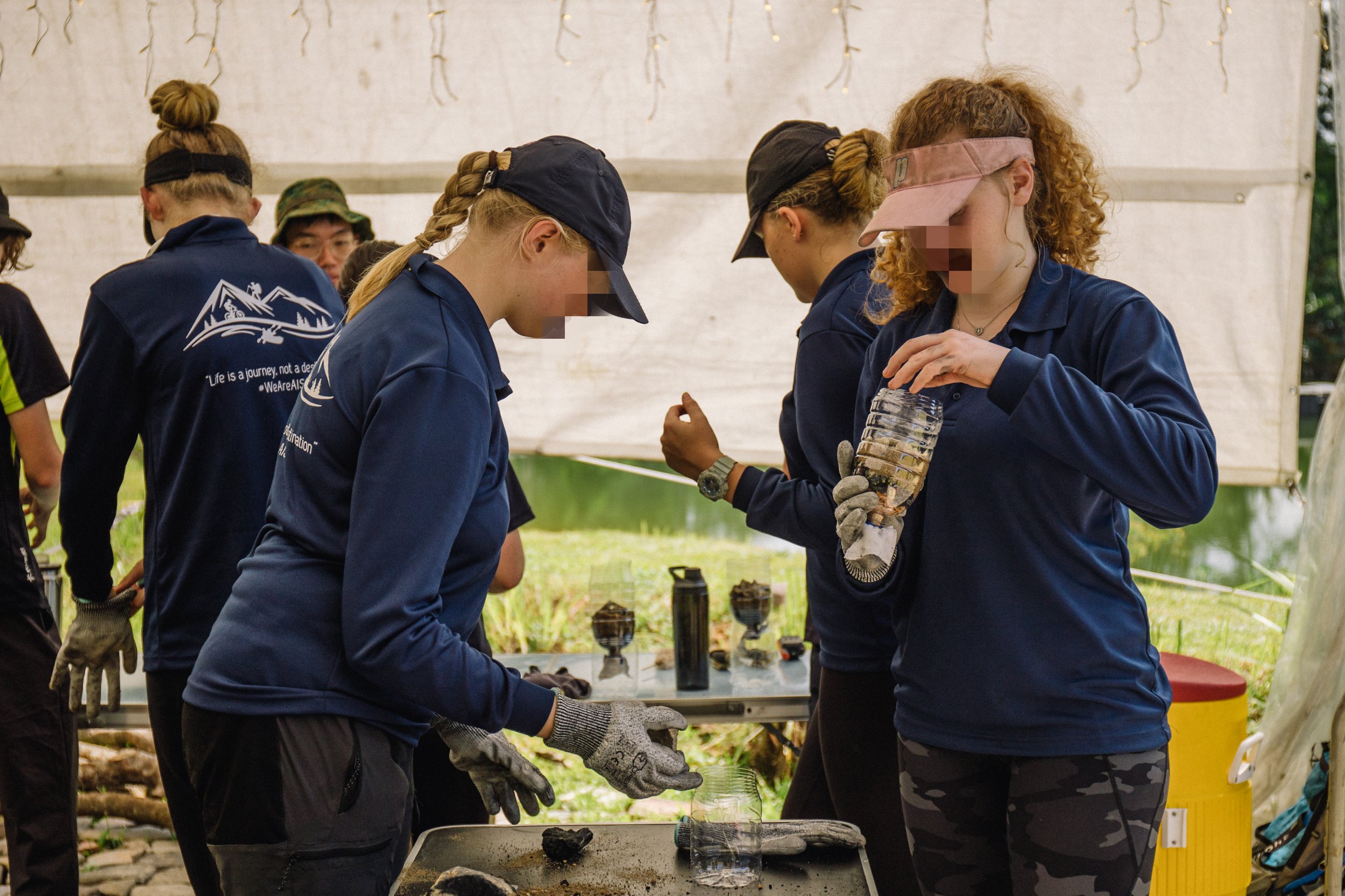
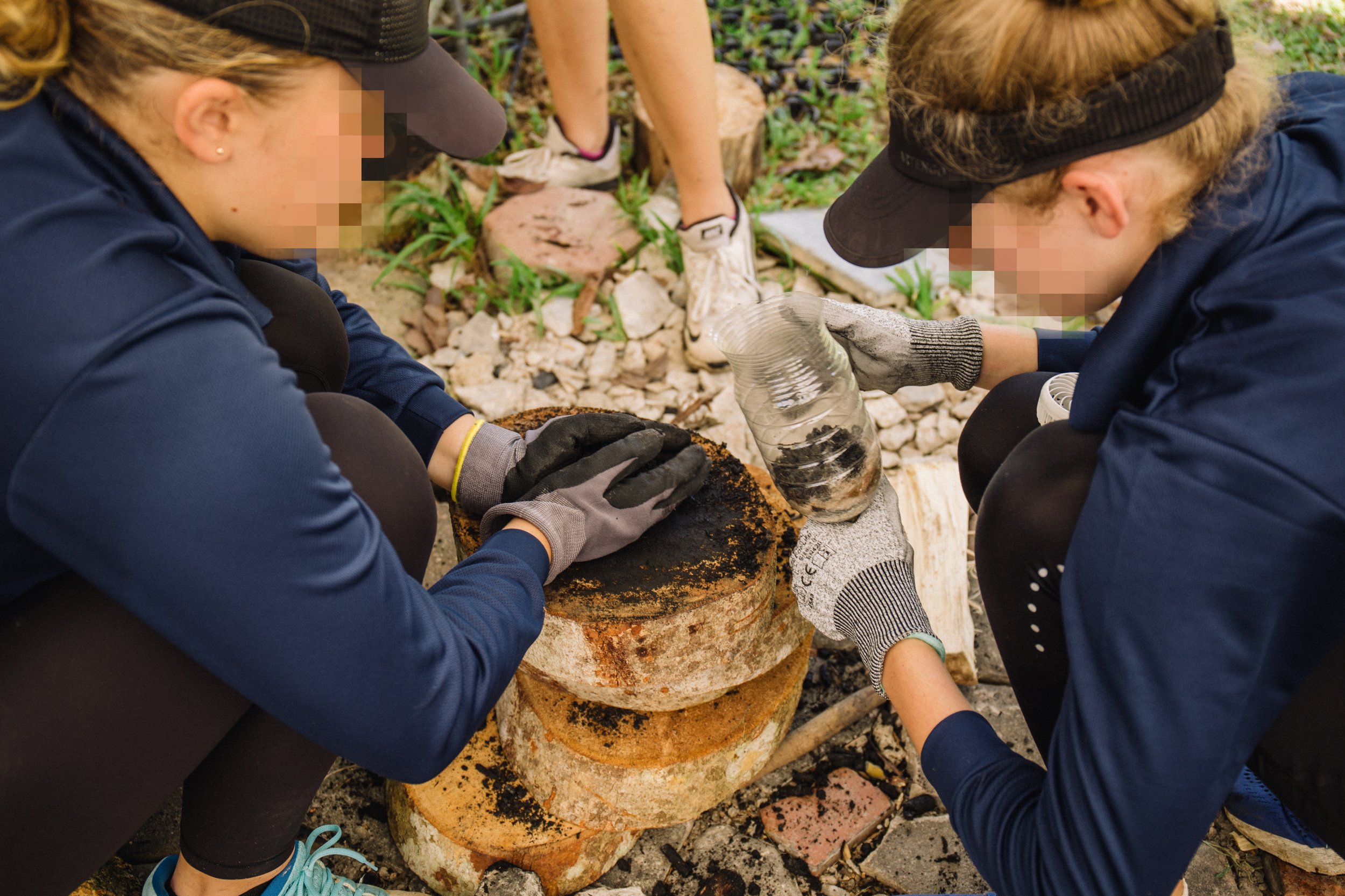
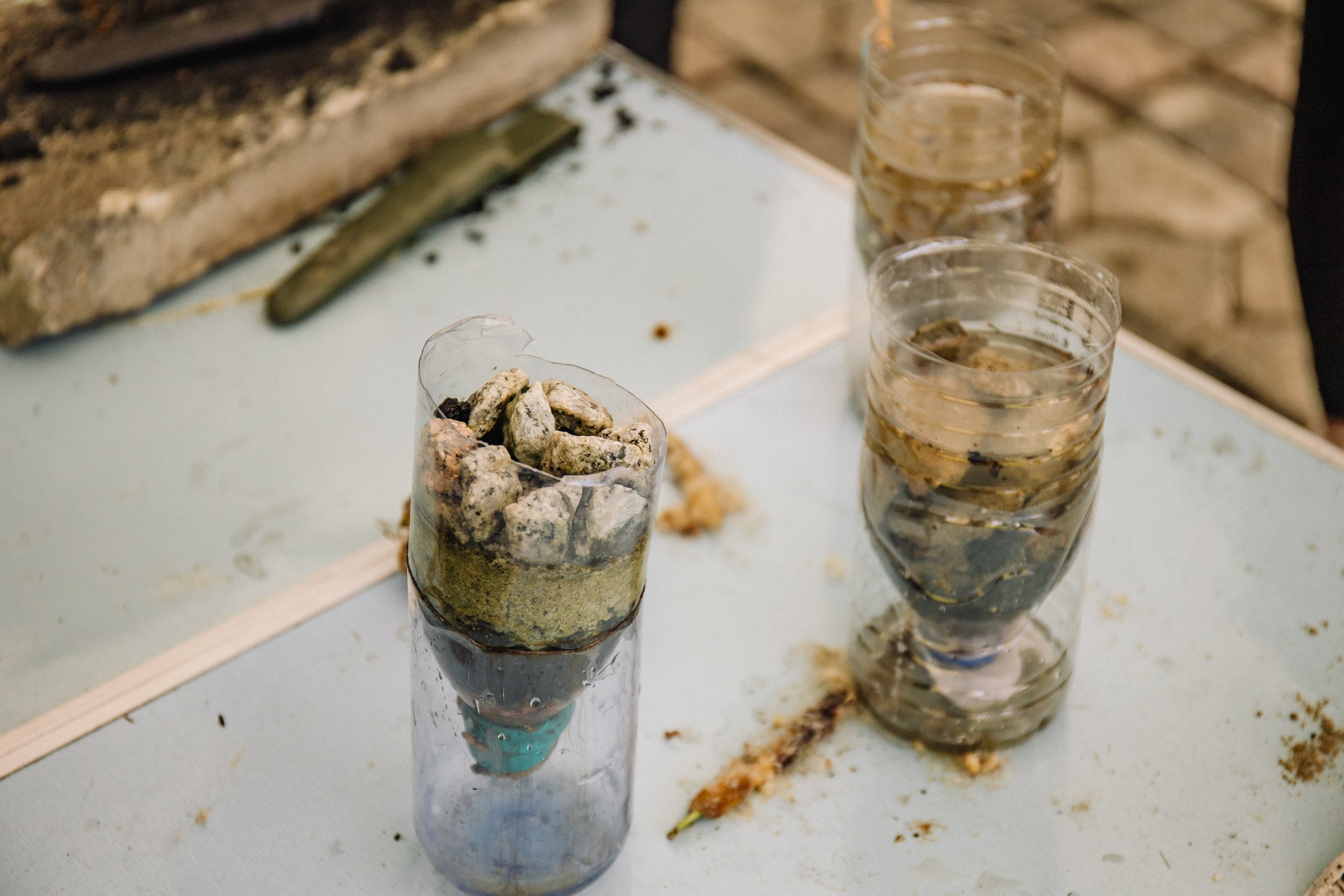
With a 1.5L bottle, a piece of cloth (some students even used their own shirt that they are wearing!), and 30 minutes, the Sharks had to forage for natural materials and create a water filter prototype. Our facilitators then gave them feedback for their final products, before presenting another challenge; with the feedback given, the groups were to create another water filter and place the filters in a line on the table. Muddy water will be poured into the filters, and the pair filtered the cleanest water will win the challenge.
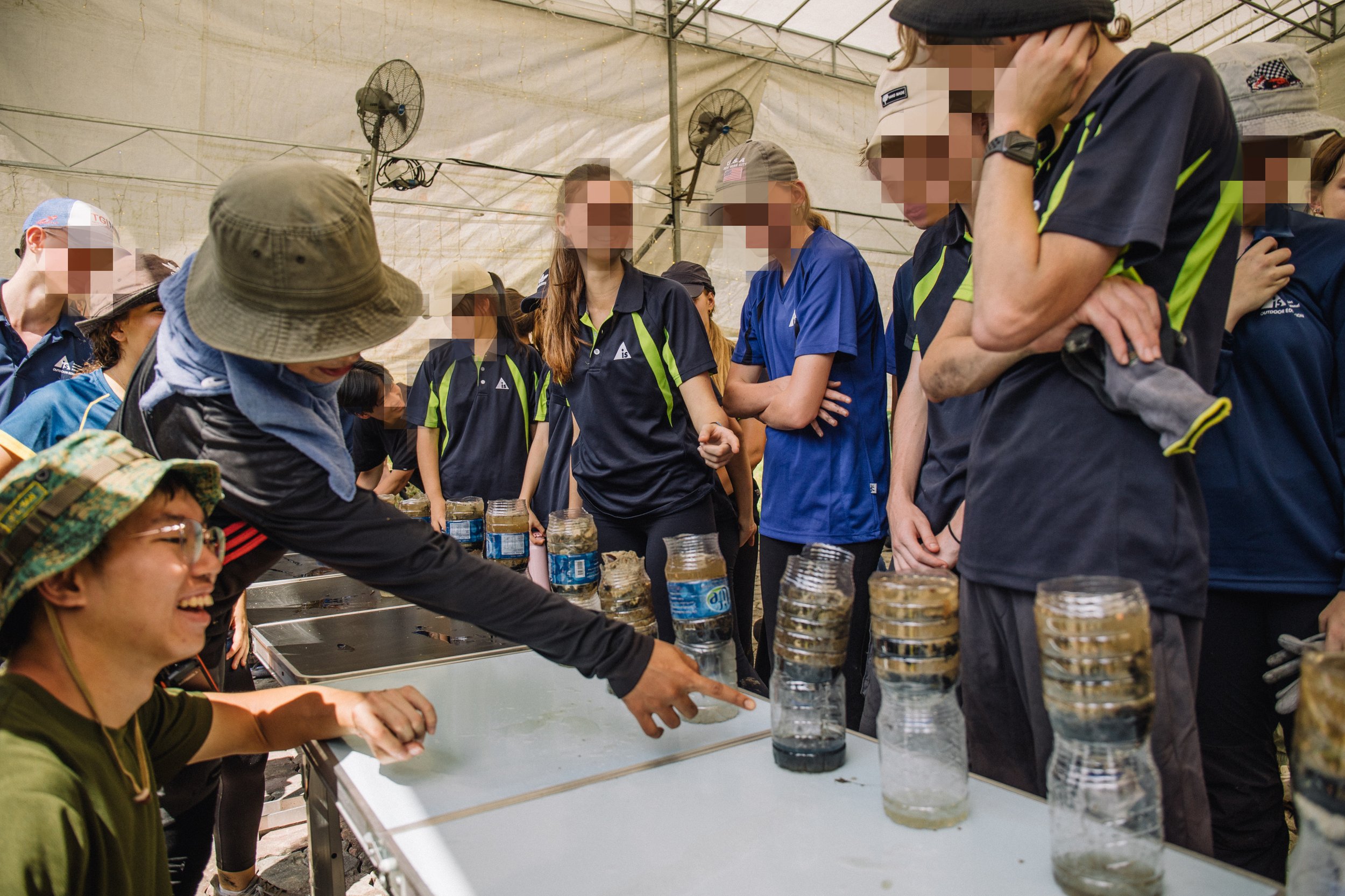
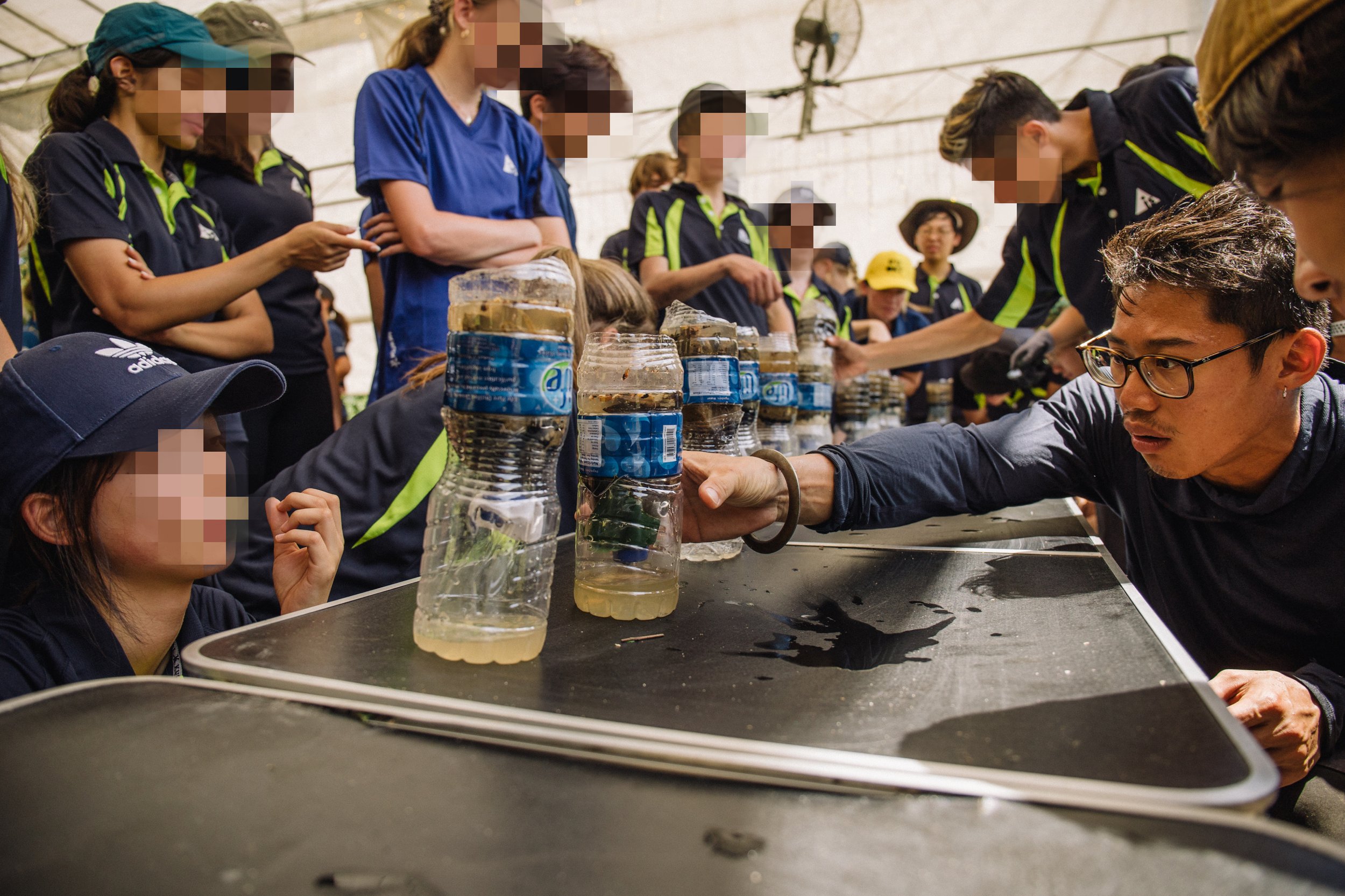
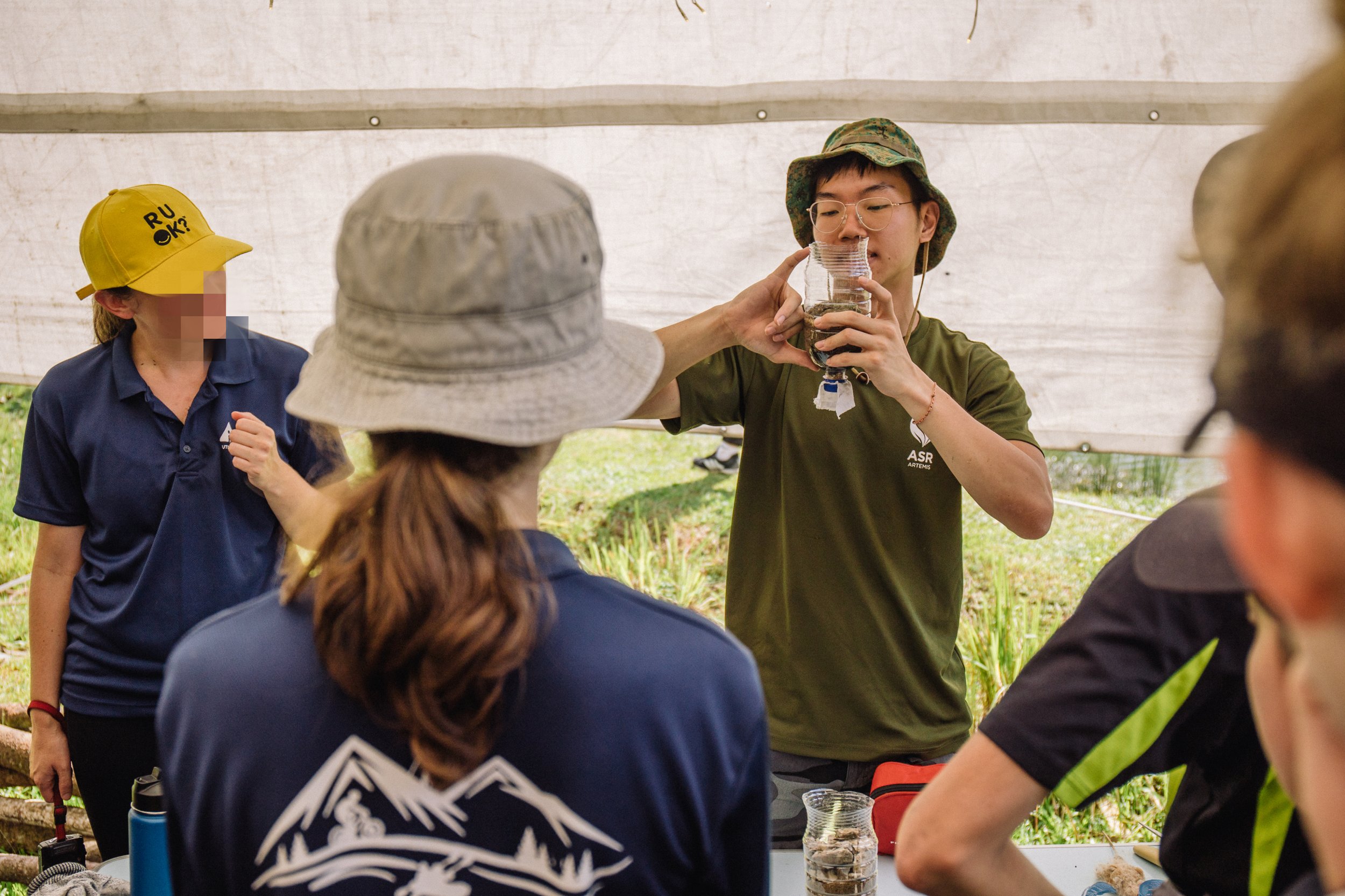
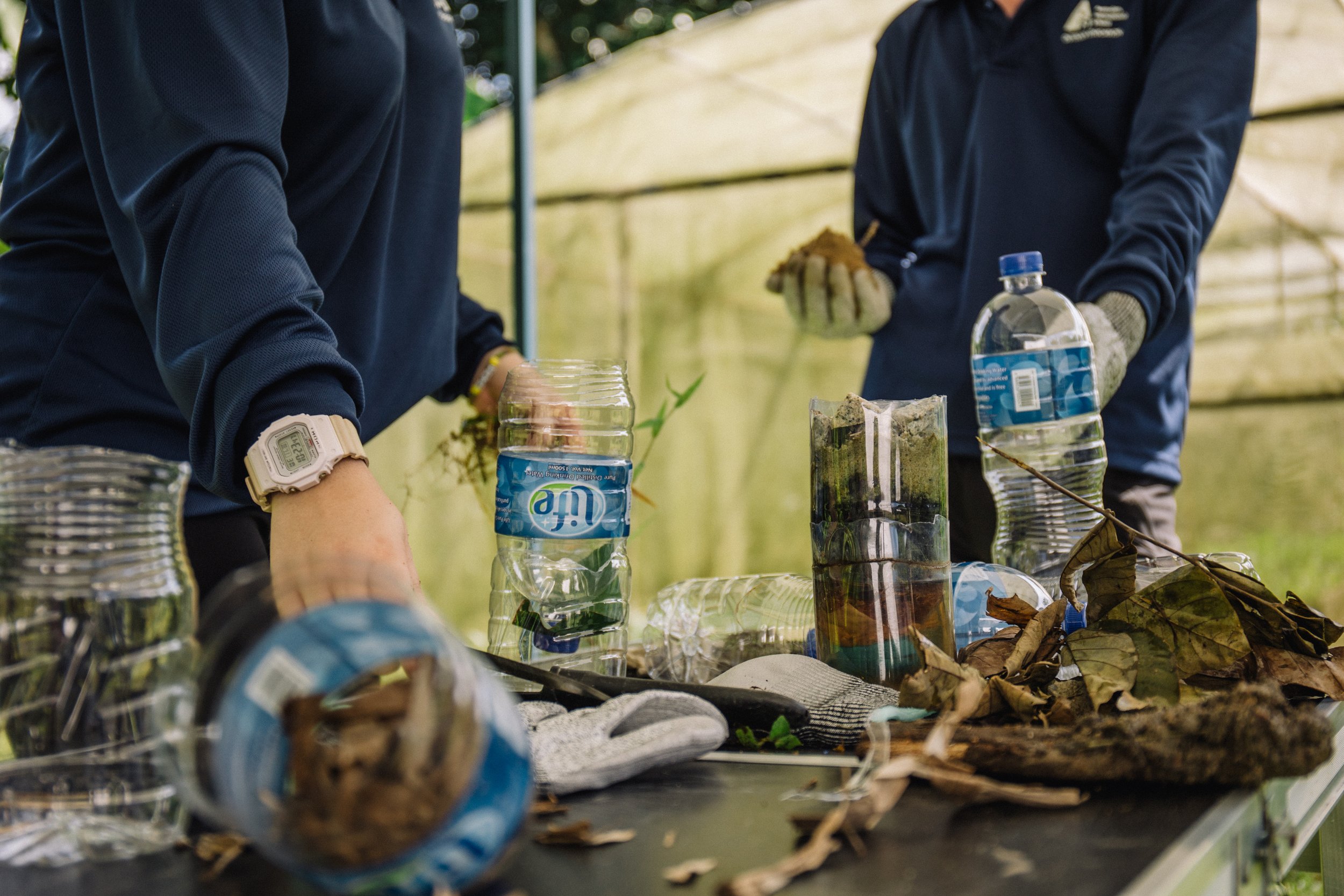
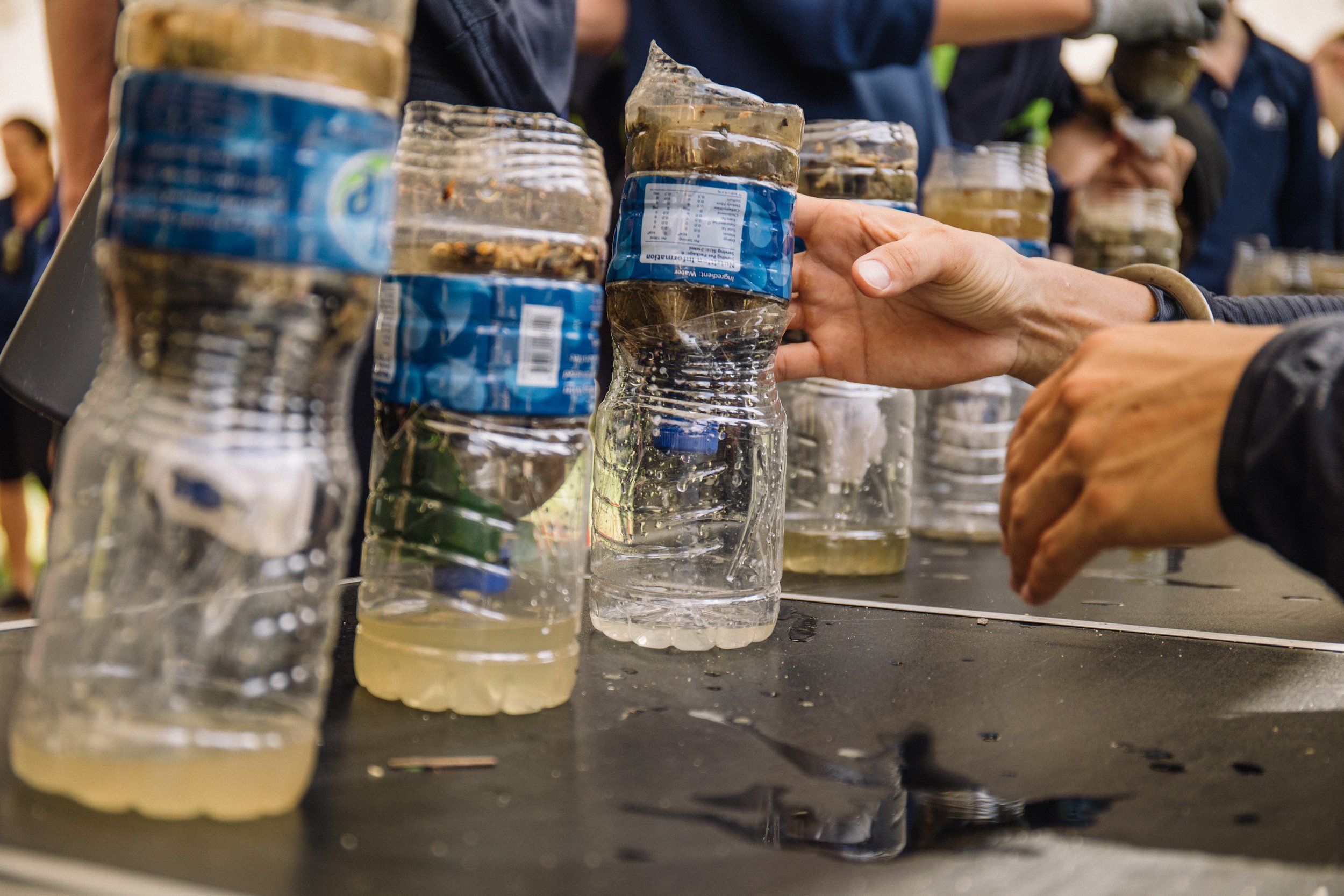
The Sharks surprised us with their motivation; each pair eagerly set off to hunt for suitable materials once dismissed. Later, when the facilitators filled their filters with muddy water, the tension across the campground was electrifying. The students nervously waited for the outcome of their filtered water; some sat on the ground, their eyes glued to the filtering water. Some students paced around the area, excitedly chattering with their classmates about who they thought would win. Upon the announcement of the results, a mix of disappointed groans and hoorahs of celebration erupted among the students. We could tell how much each group wanted to do well in this segment; it was a pity that not every group managed to obtain clear water from their filters.
Don't give up too soon though, Sharks! We all deserve second chances; yours shall come very soon.
Building Your Wild Haven.
With intently curious minds, the Sharks learnt how they could stay safe and well-rested in the wild.
Learning how to construct your make-shift natural shelter when you’re in the wild is important. You’ll want a good night’s rest in a haven from wild animals and unexpected rain showers.
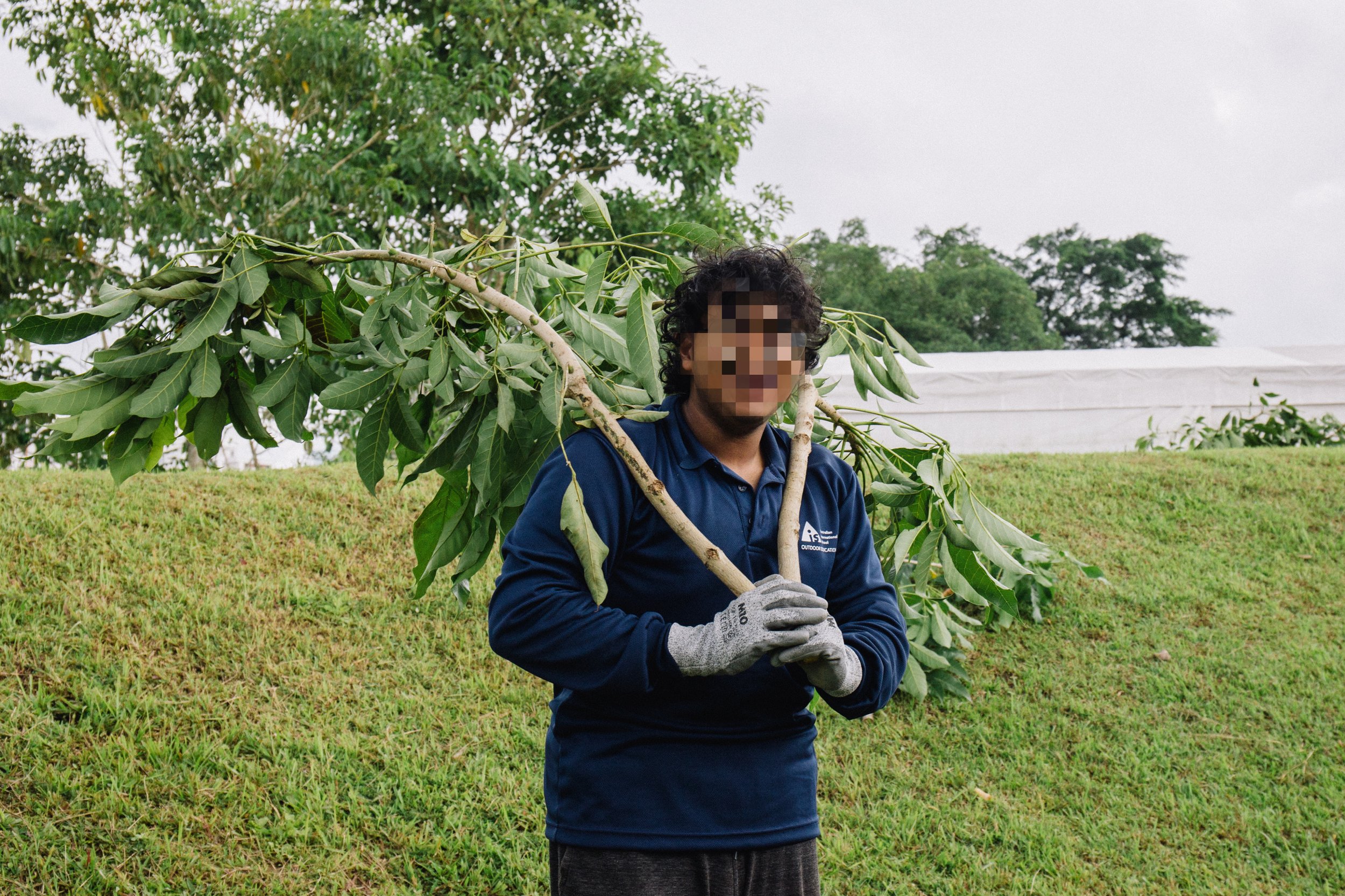
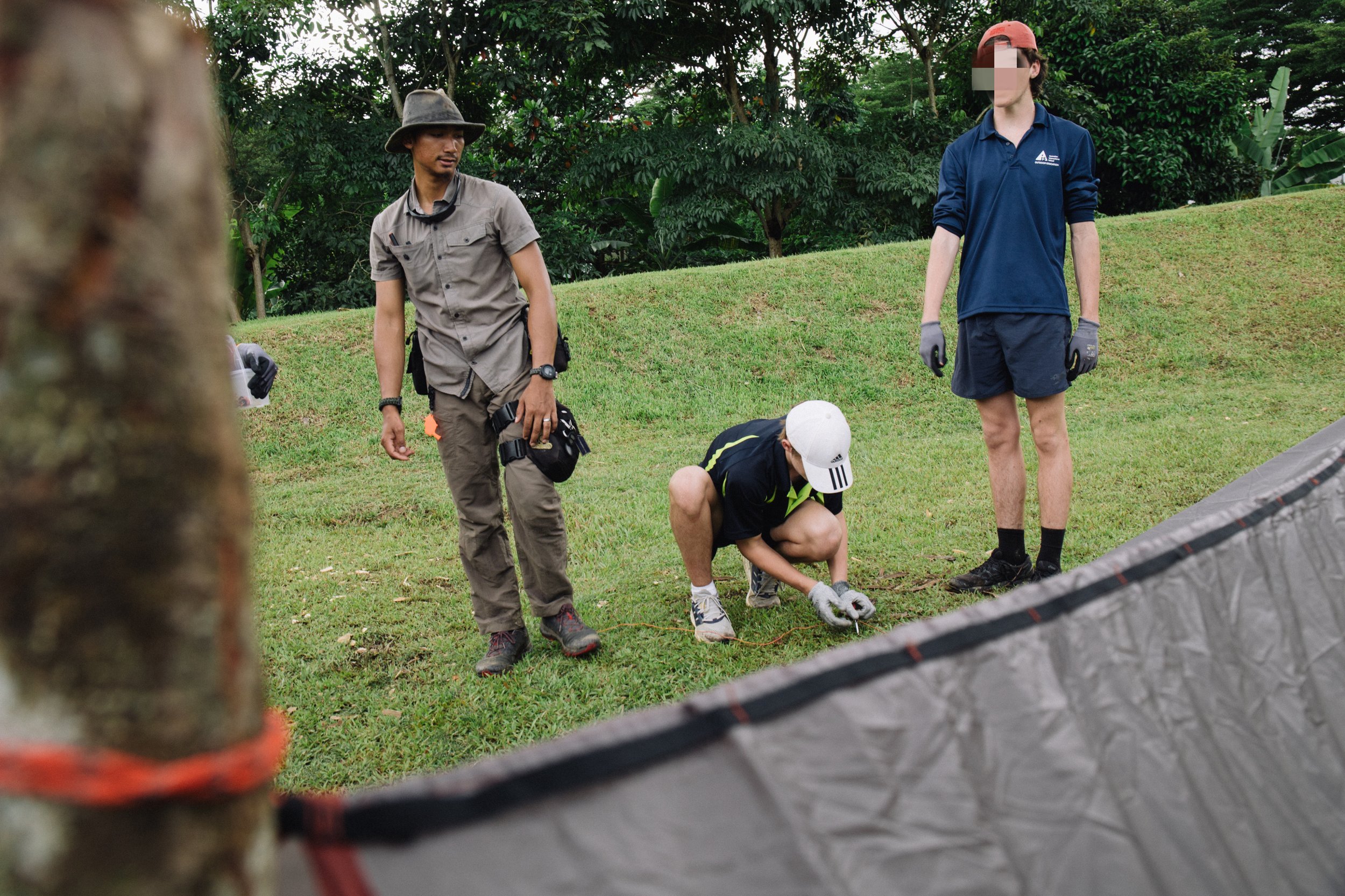
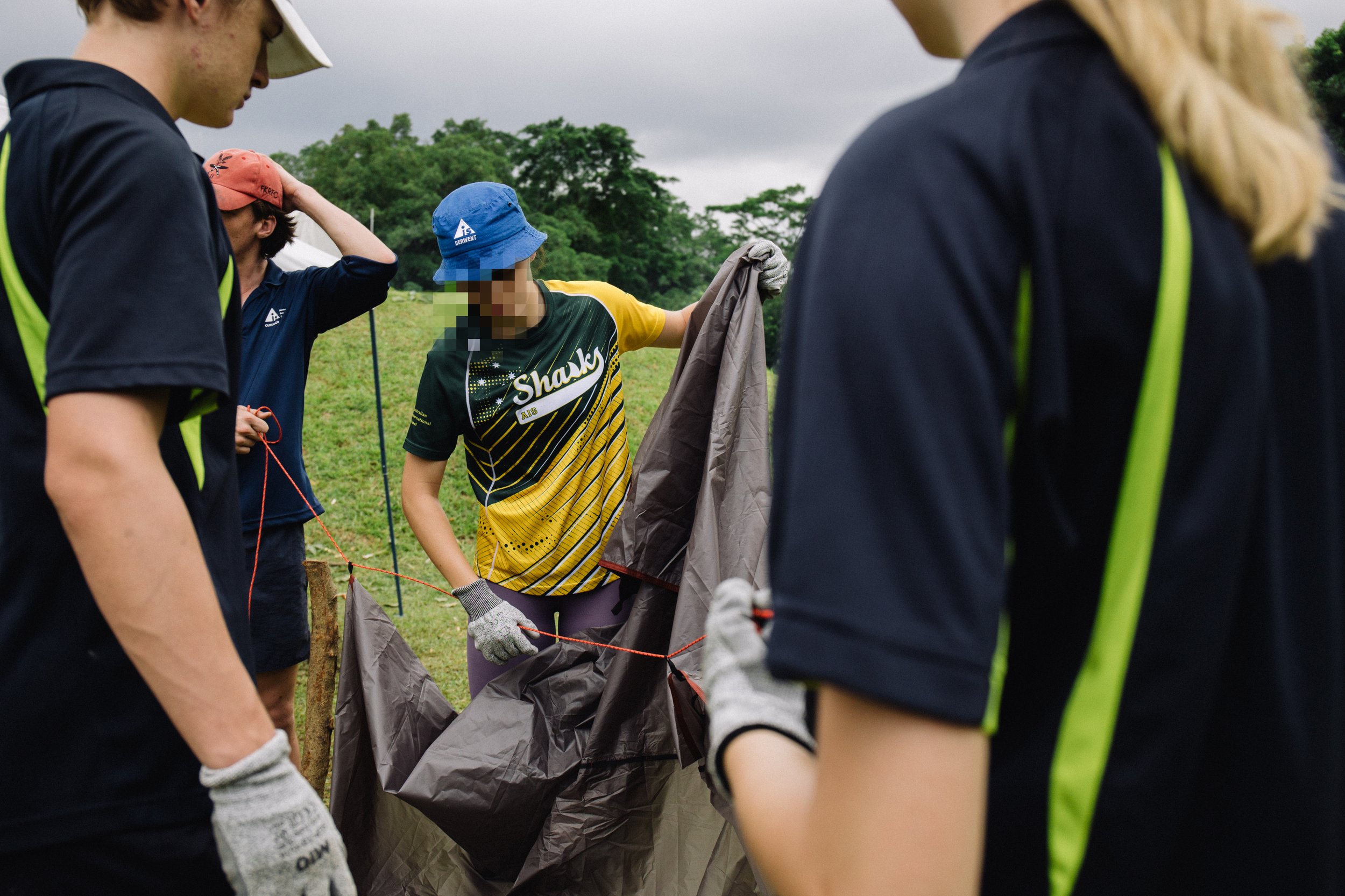
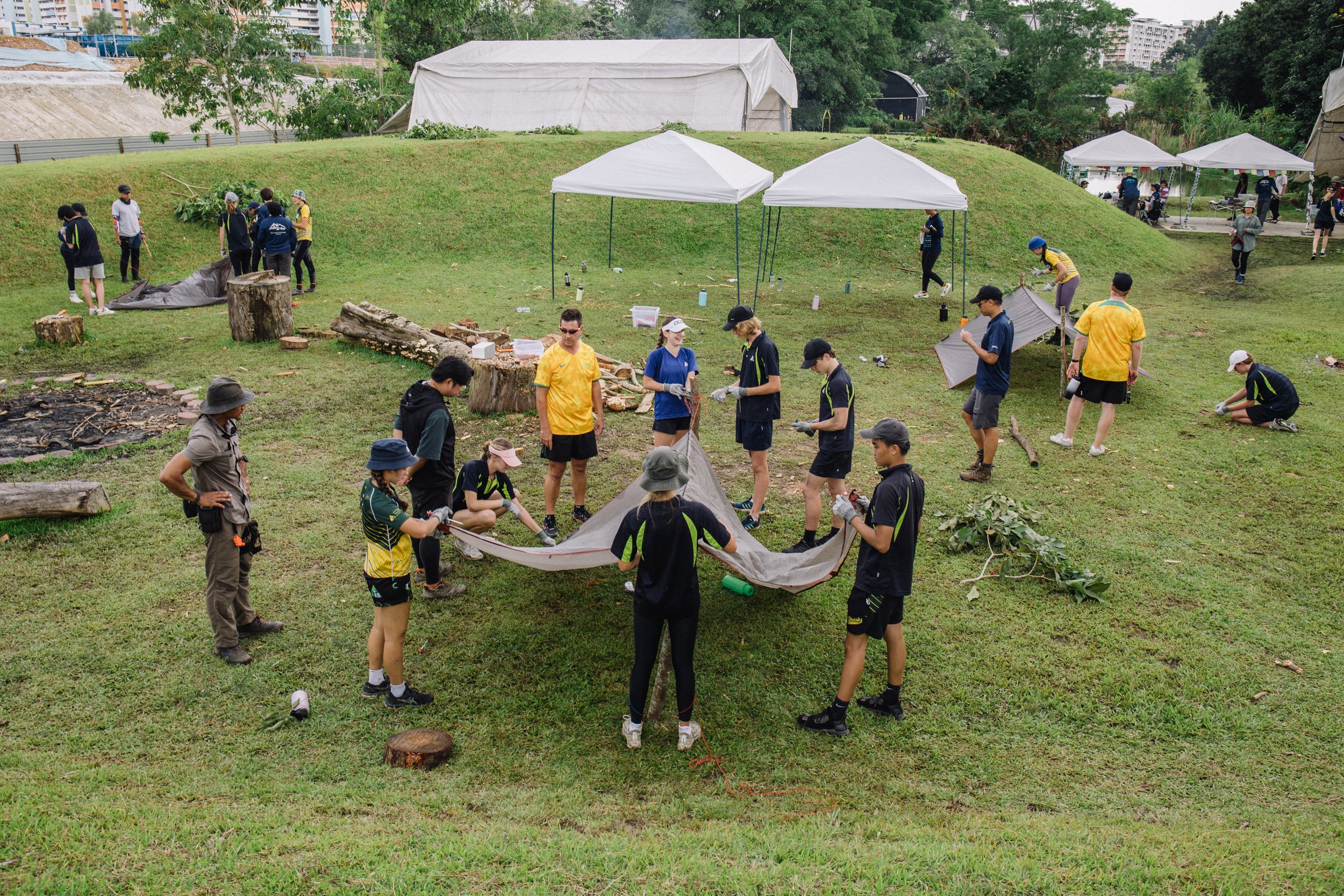
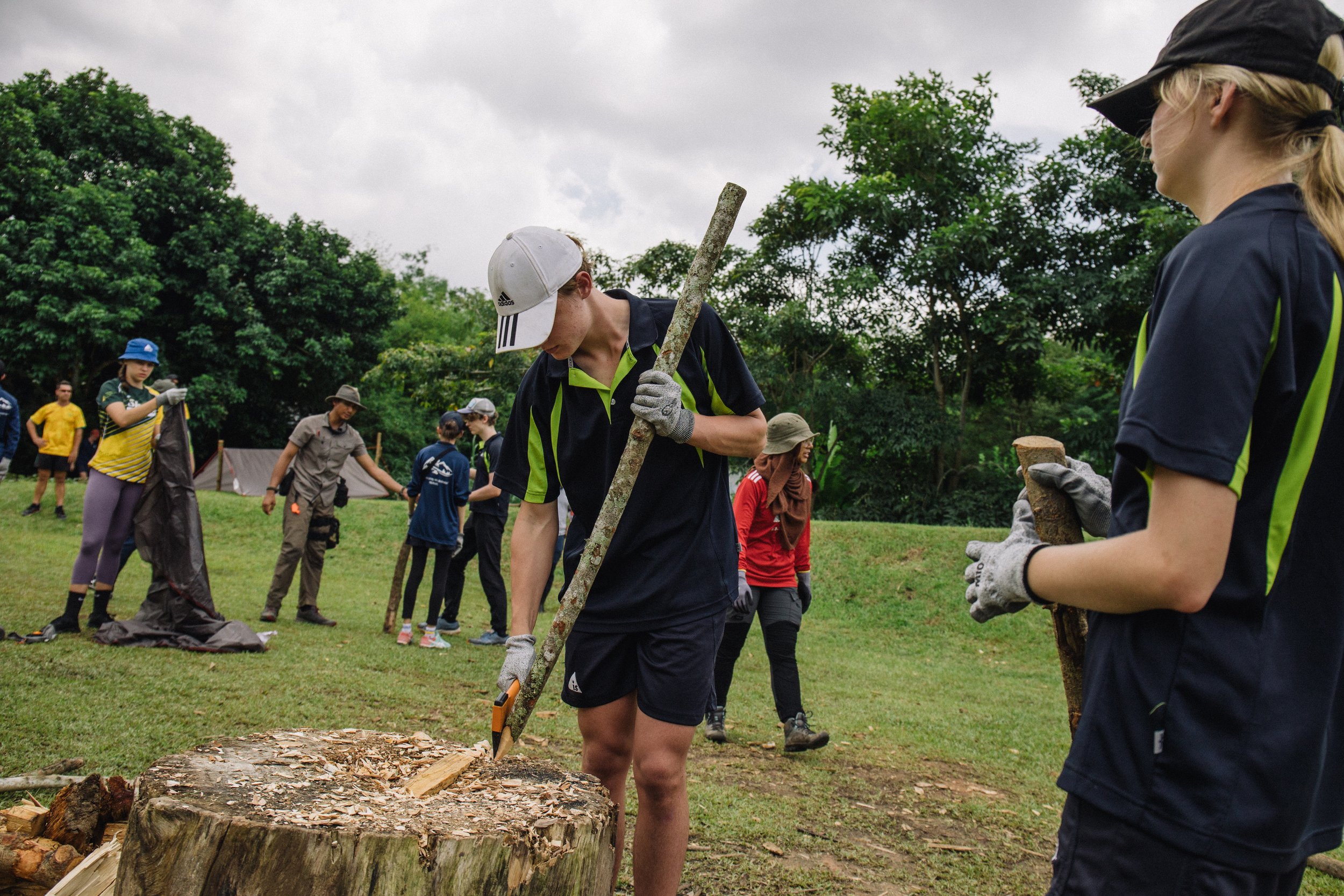
Picking up different lengths and widths of branches, our instructors demonstrated how and when we could use each. We proceeded to dismiss the students with instructions to go around the campsite and find the resources needed to build a shelter. The aim was for them to stay dry in the midst of a ‘storm’; as each group stands inside their self-constructed tent, water guns and industrial wind blowers will be summoned to spray and blow from all sides.
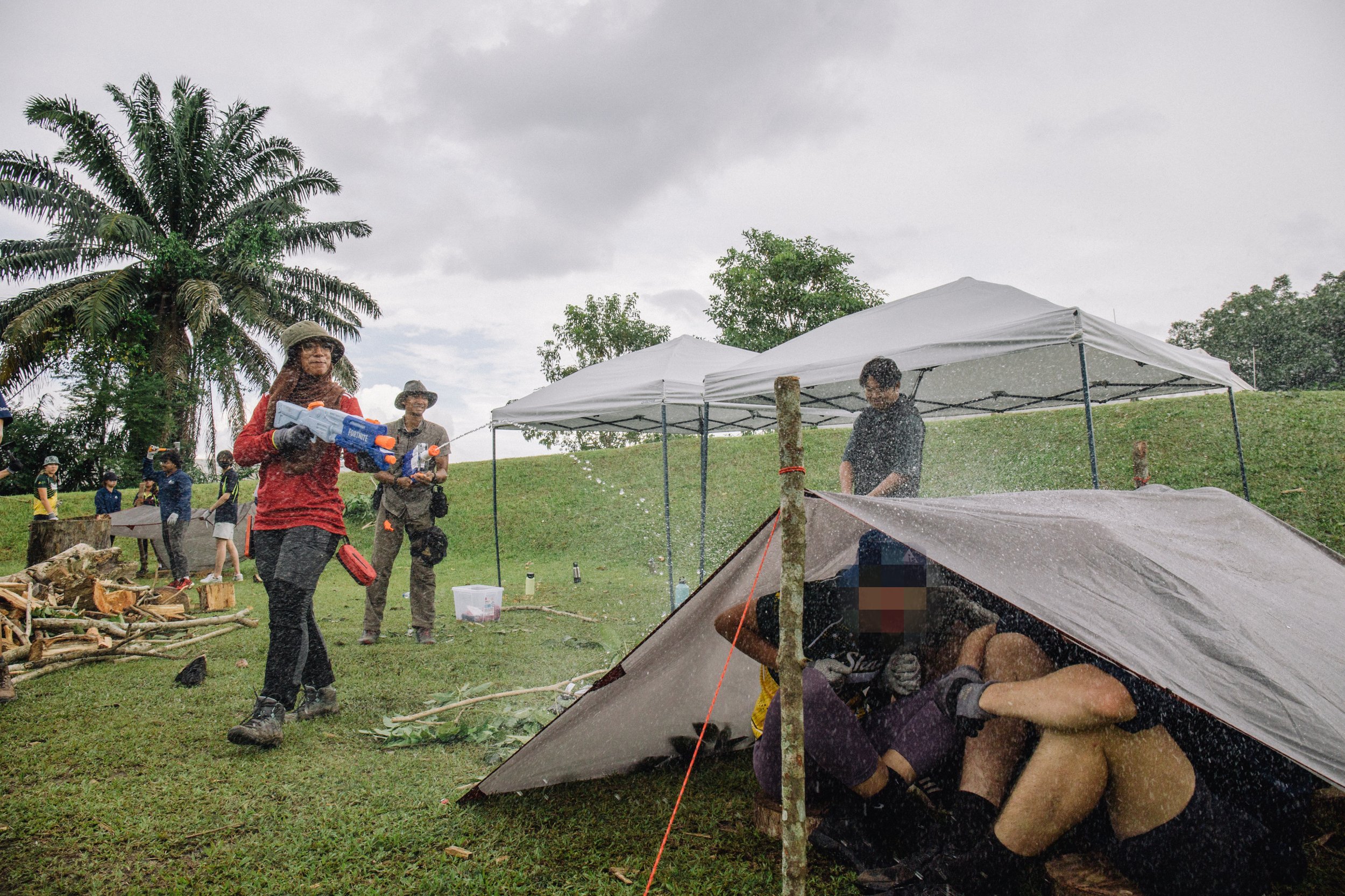
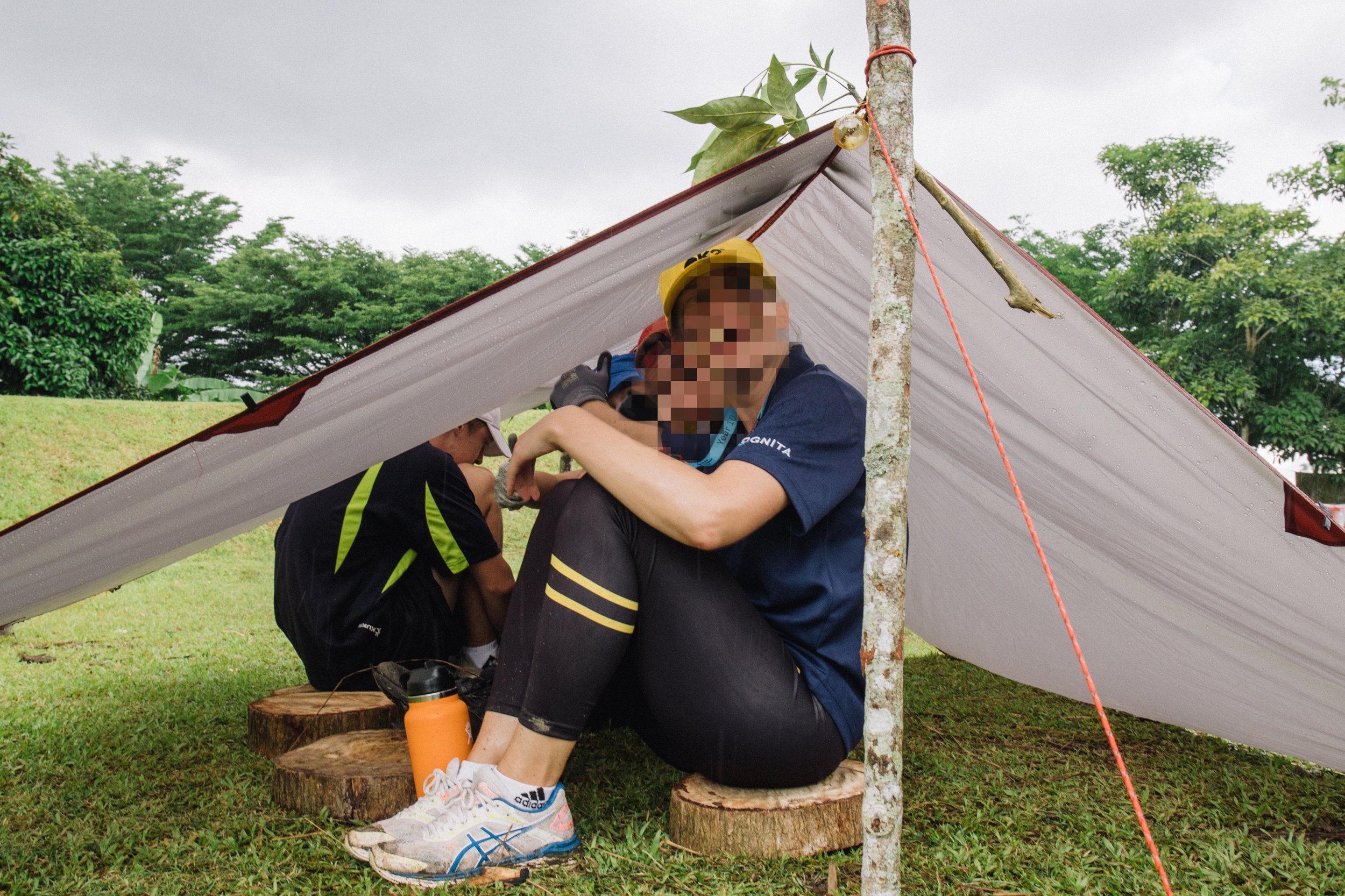
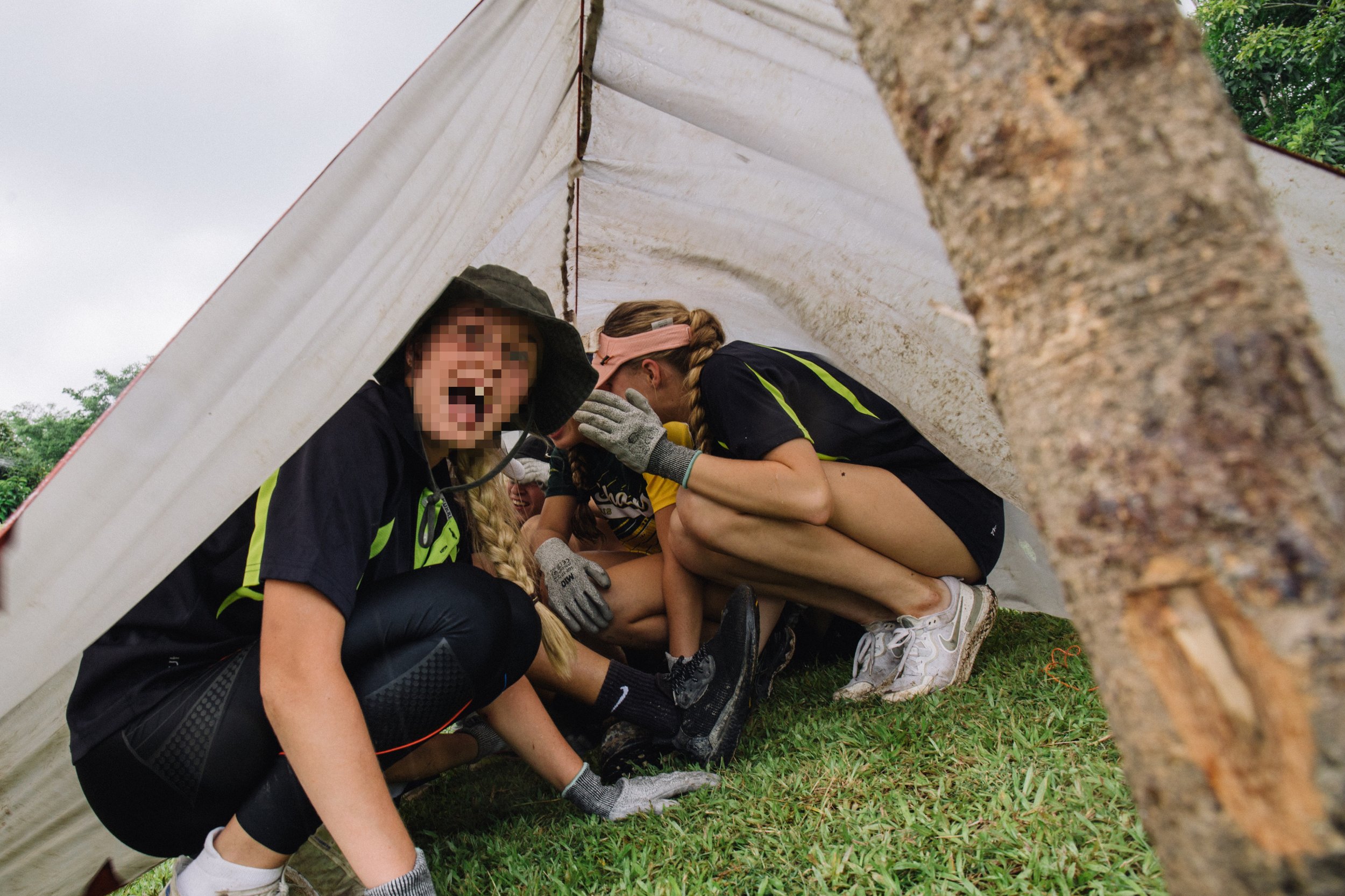
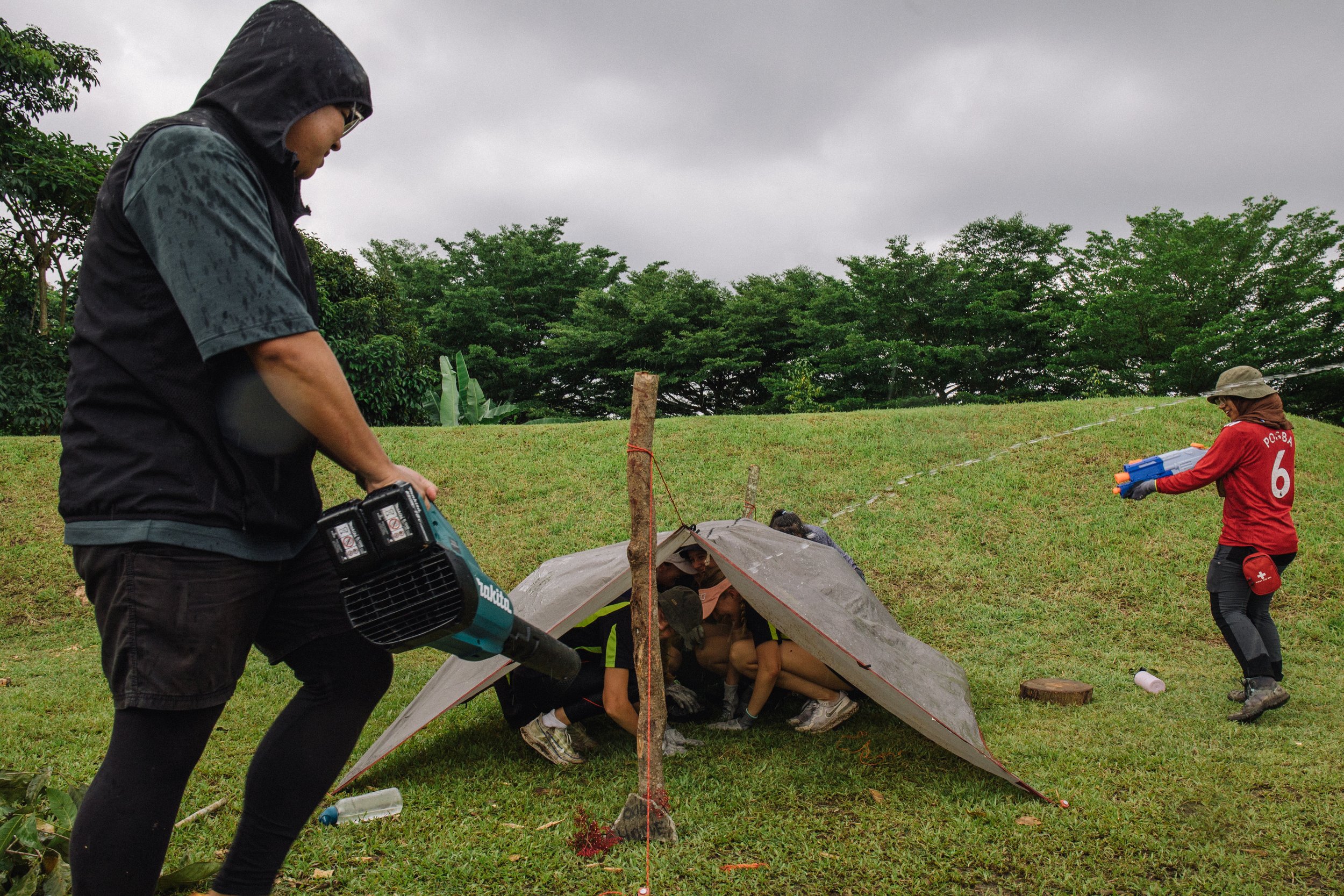

Screams and yelps filled the air as the students struggled to survive the harsh winds and rain of the ‘thunderstorm’. Some groups stayed dry, some groups emerged wet and defeated.
Day 5: Survival Face Off
This last day is all about being in the unknown.
We reshuffled all 76 students into three tribes and introduced the final survival showdown, which will put the skills they’d learnt in the past four days to the test. This challenge involved tasks that required the Sharks to navigate around our yurt camp to find resources, and obtain food and cooking utensils by trading in ready-made bushcraft chairs and rocket stoves at specific ‘trading’ stations.
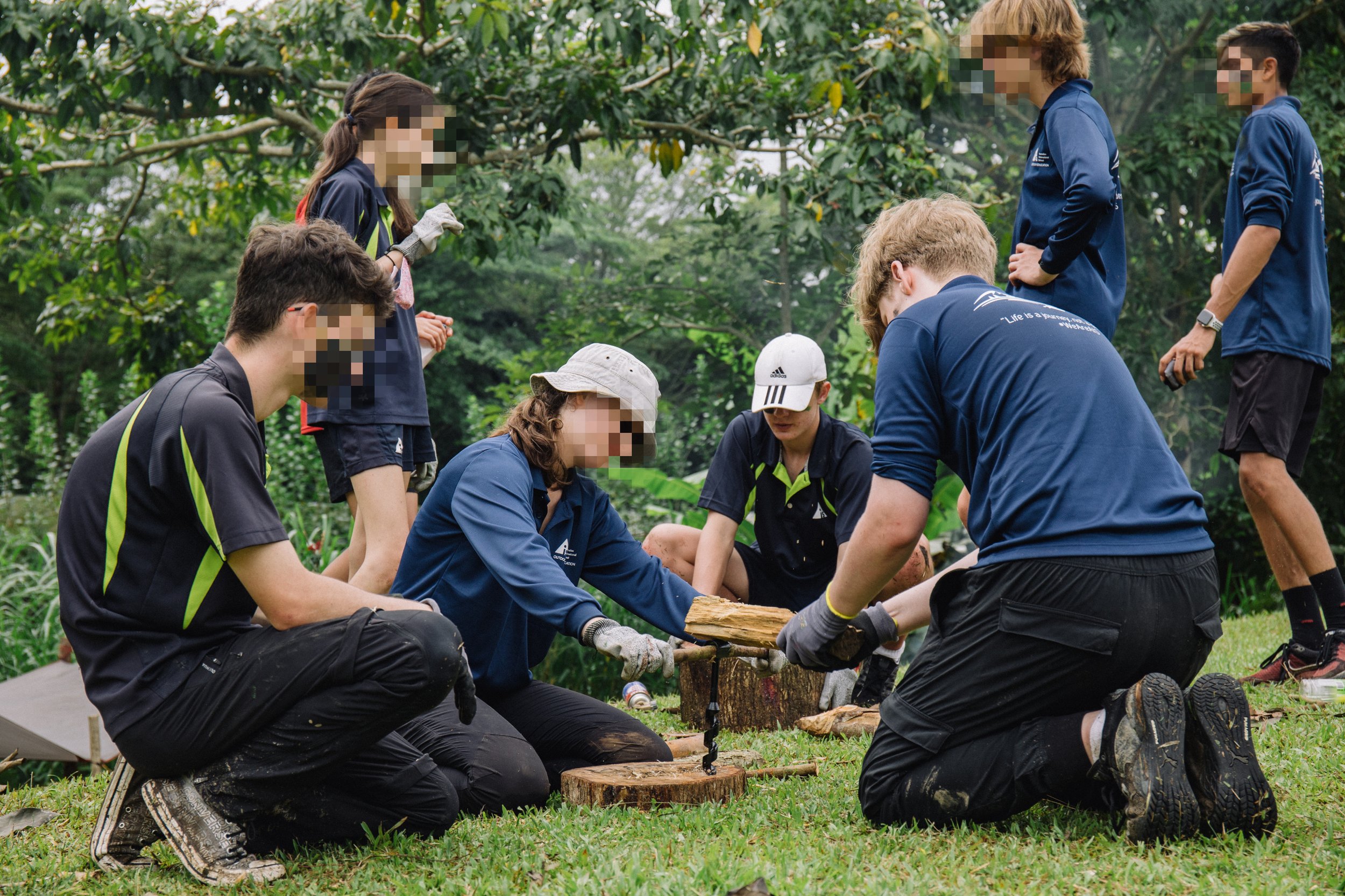
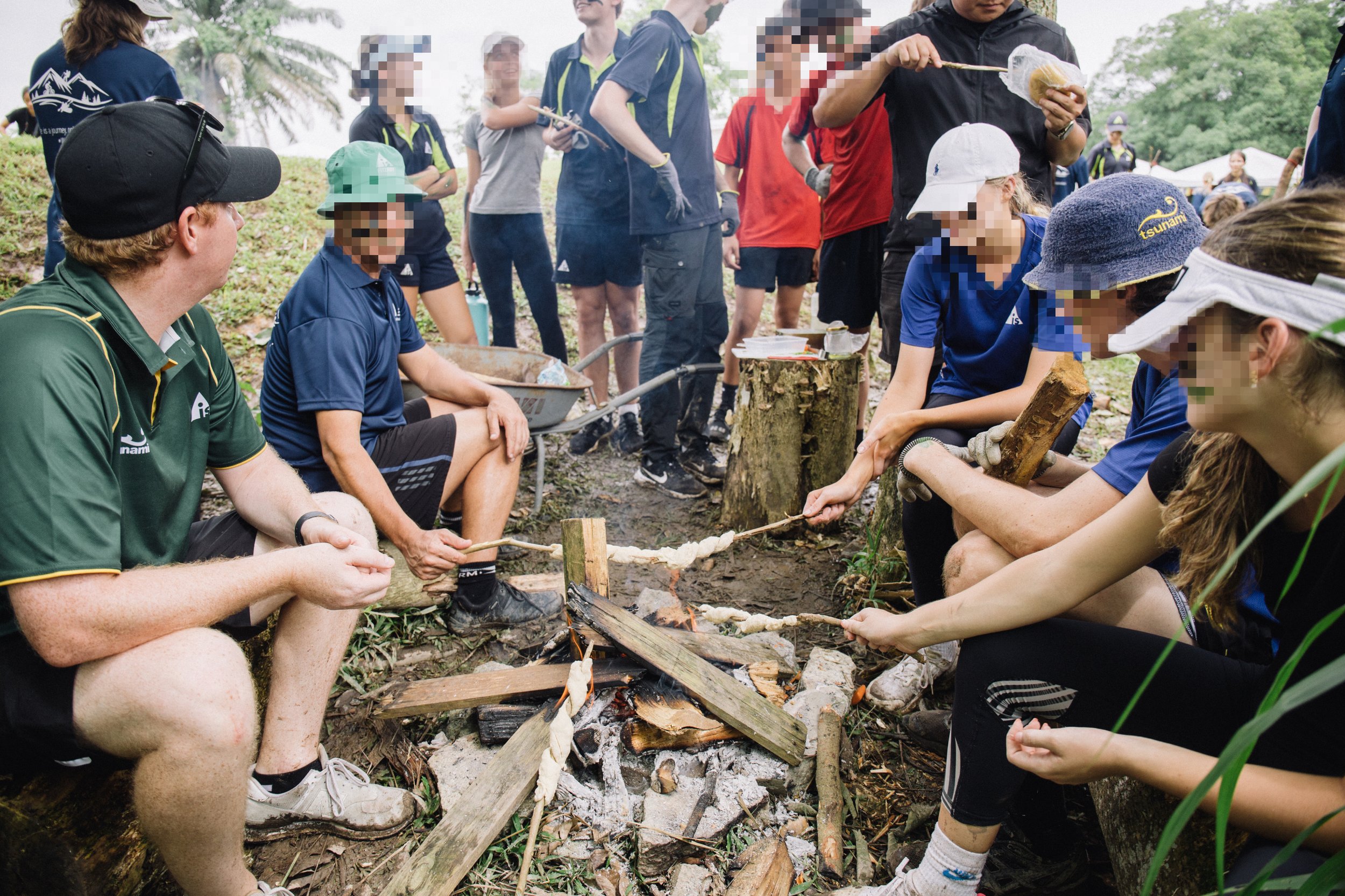
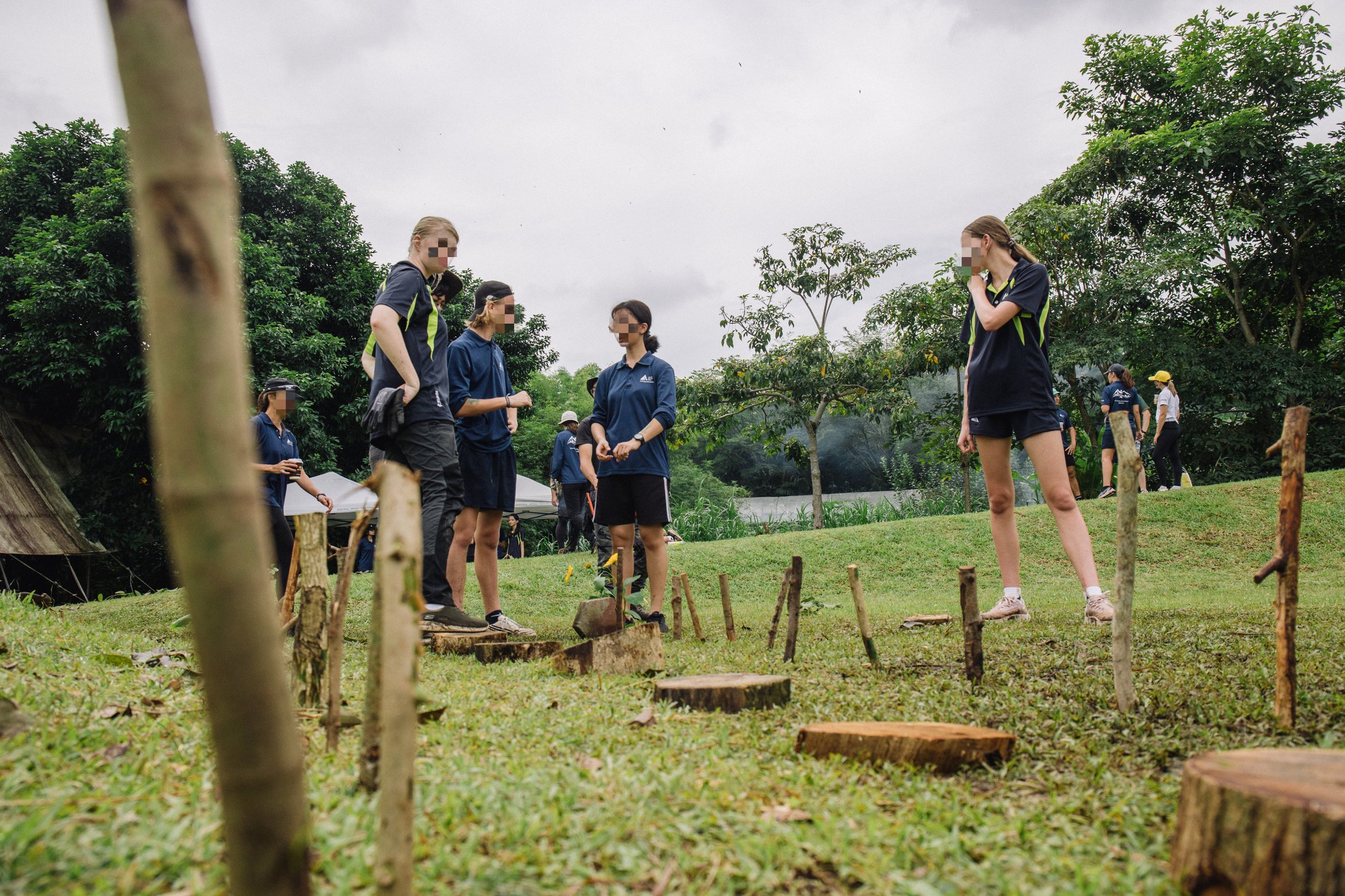
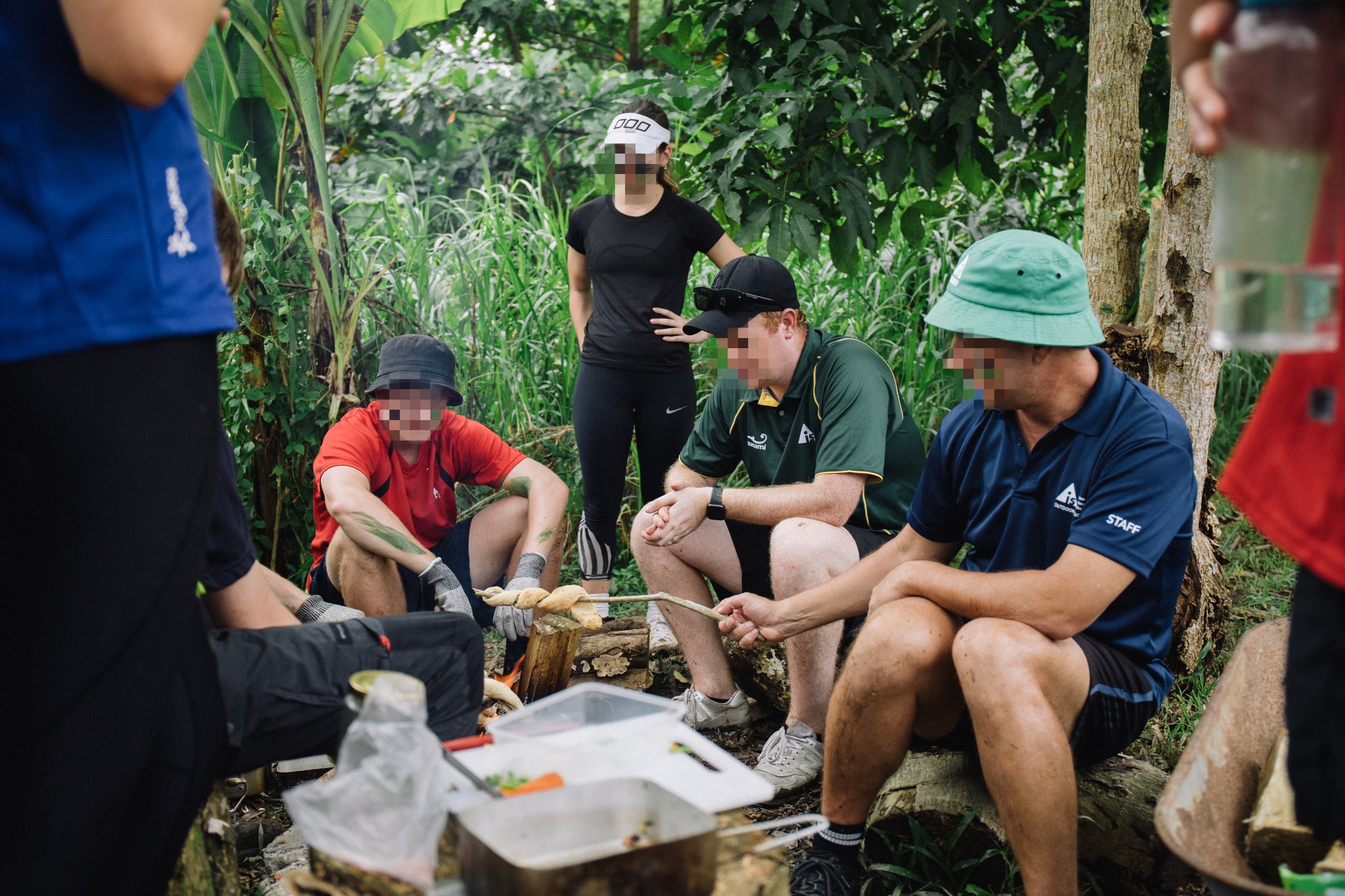
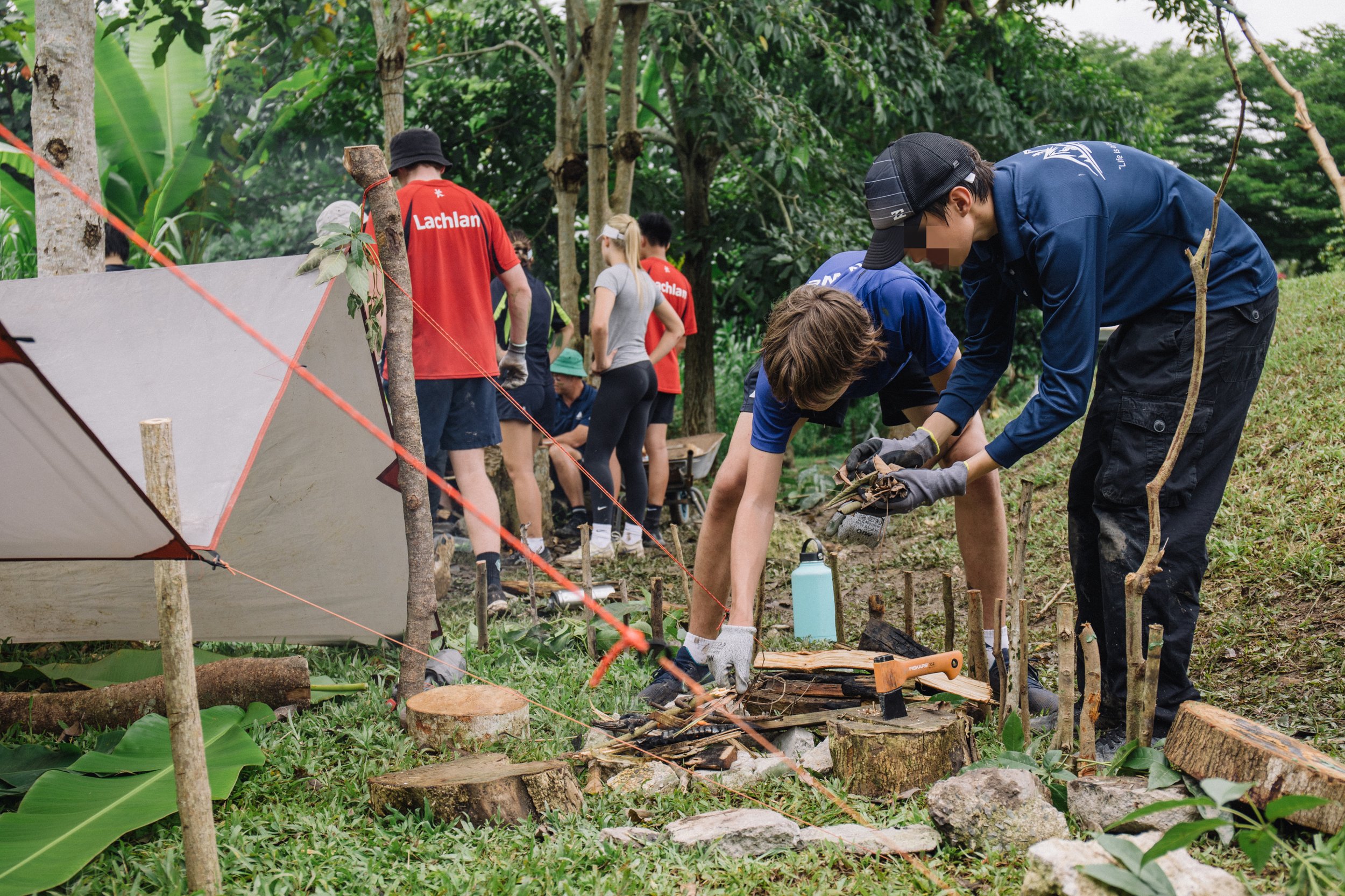
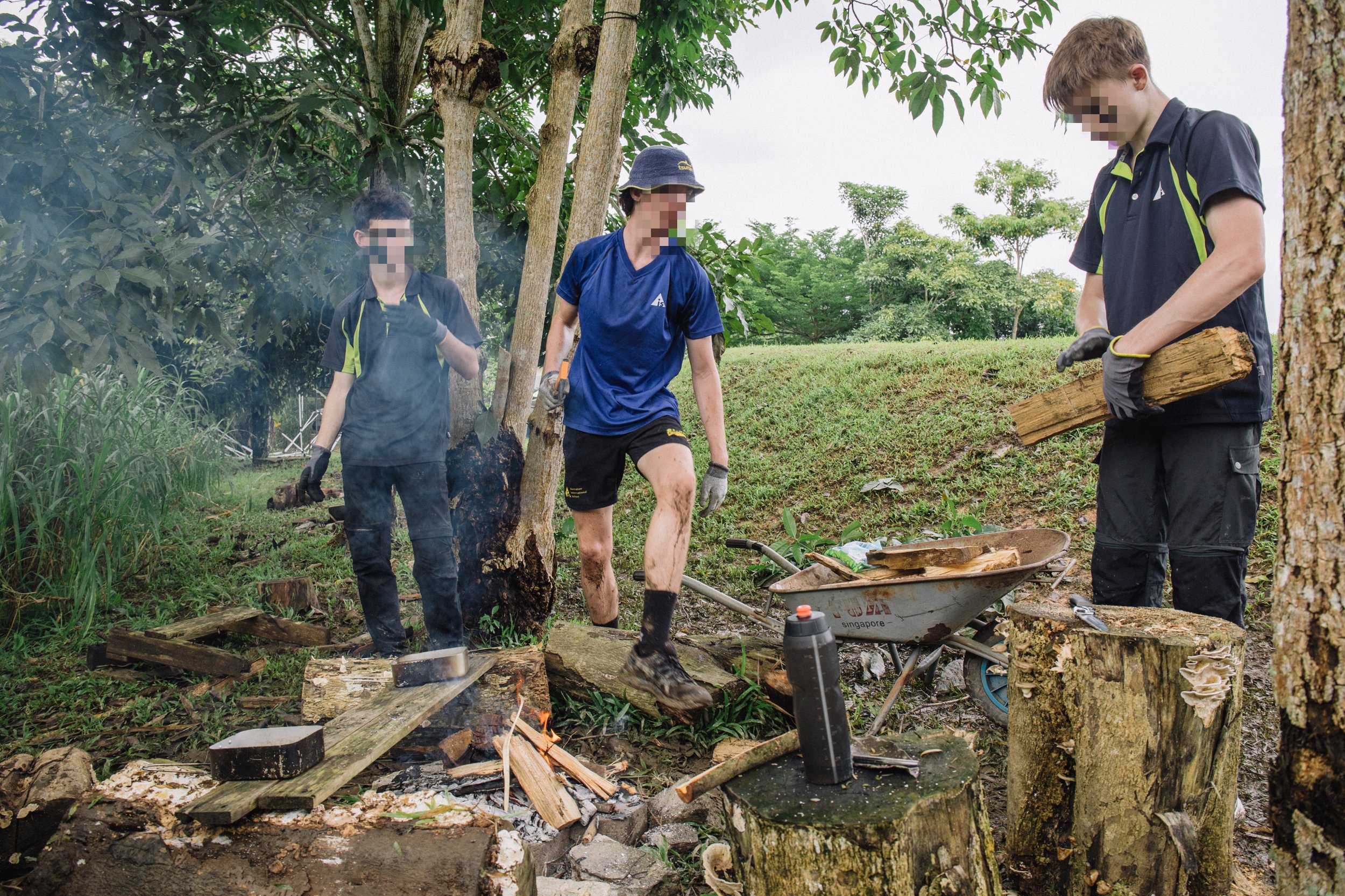
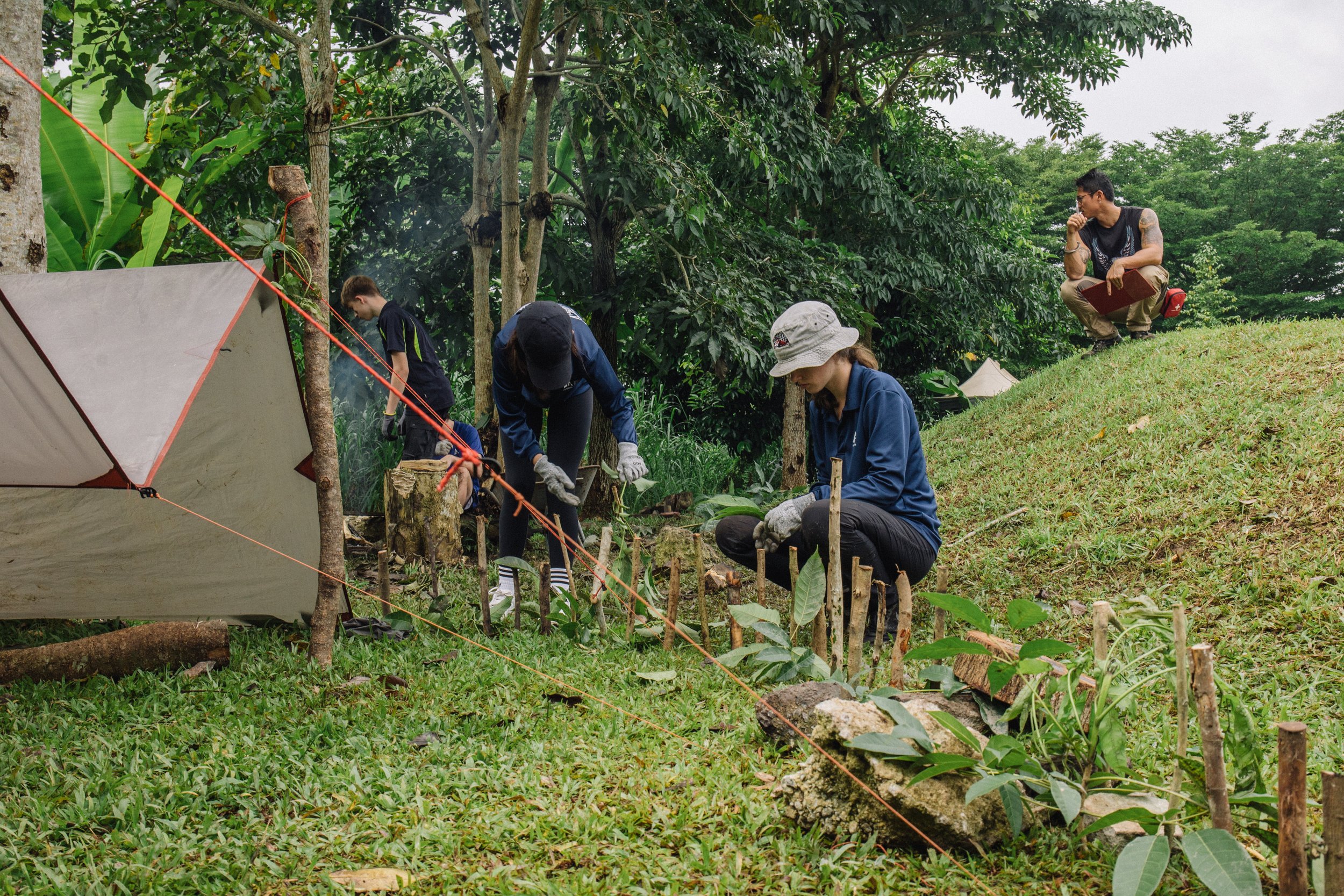
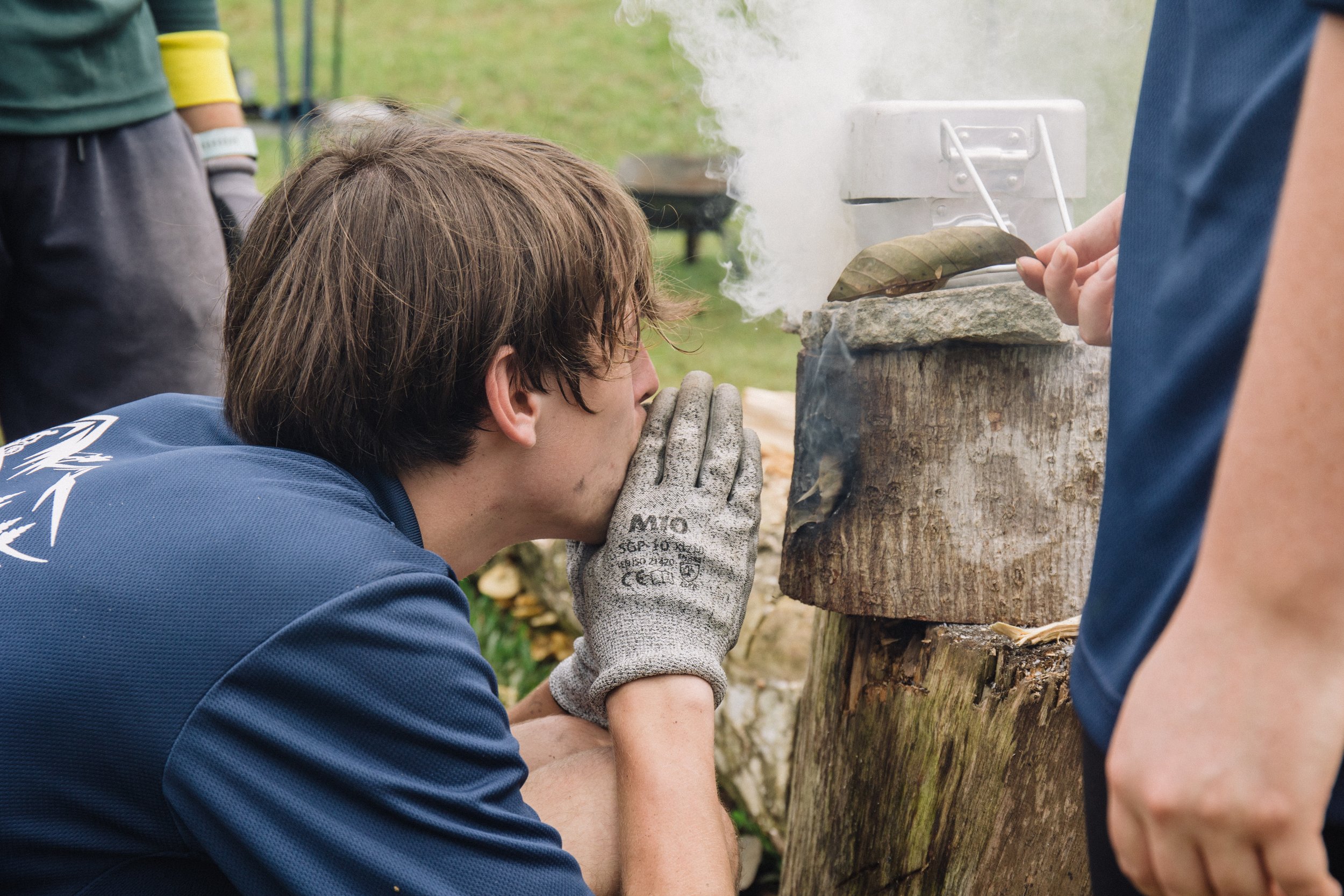
Appointed tribe leaders had the opportunity to take on the leadership role, which required them to organise their tribe by allocating roles and responsibilities to each tribe member, ensuring the tribe successfully achieved the missions. Furthermore, leaders had to ensure the tribe creates a unique tribe identity that showcases their cohesiveness. Every tribe also had to introduce their self-designed ‘village’ and participate in a tribal dance-off. We could see the teams realising challenges not only in practising the skills they’ve learnt, but also in working together as a large team of diversified nationalities and cultures in the face of a task. What was most noticeable for us was how the students held firmly to their “Challenge by Choice” principle, never forcing any of their friends to do anything they didn't want to.

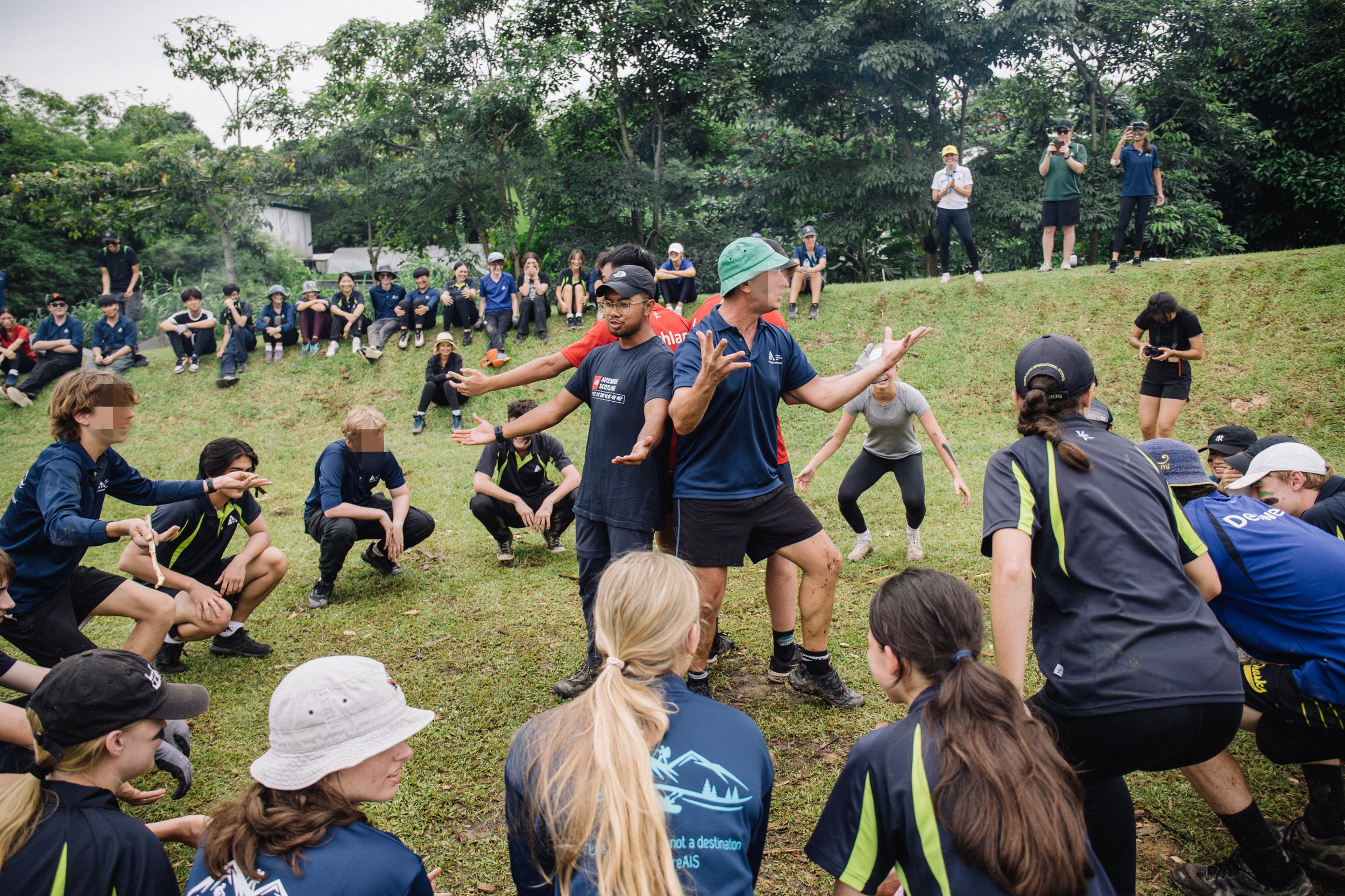
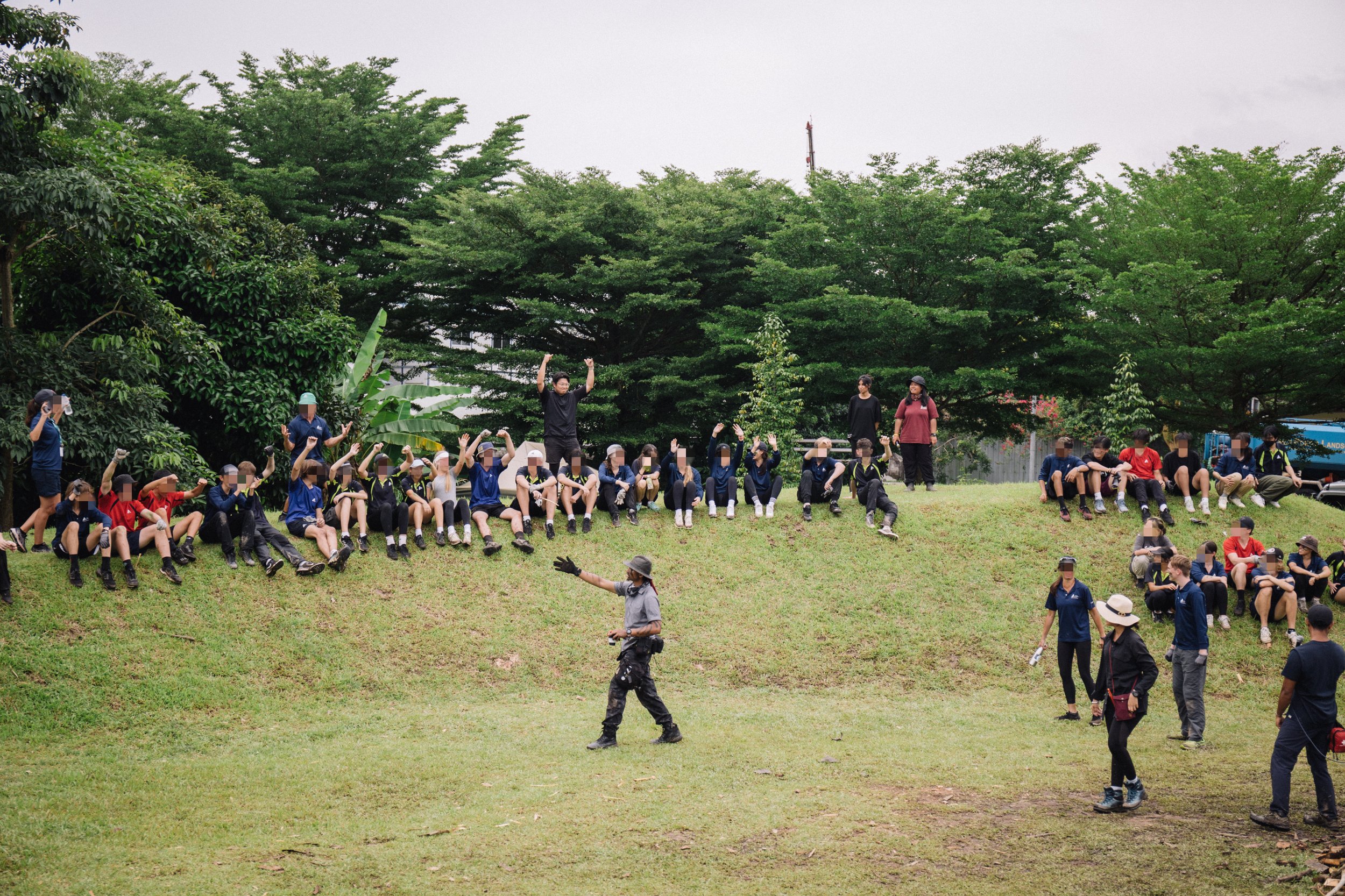
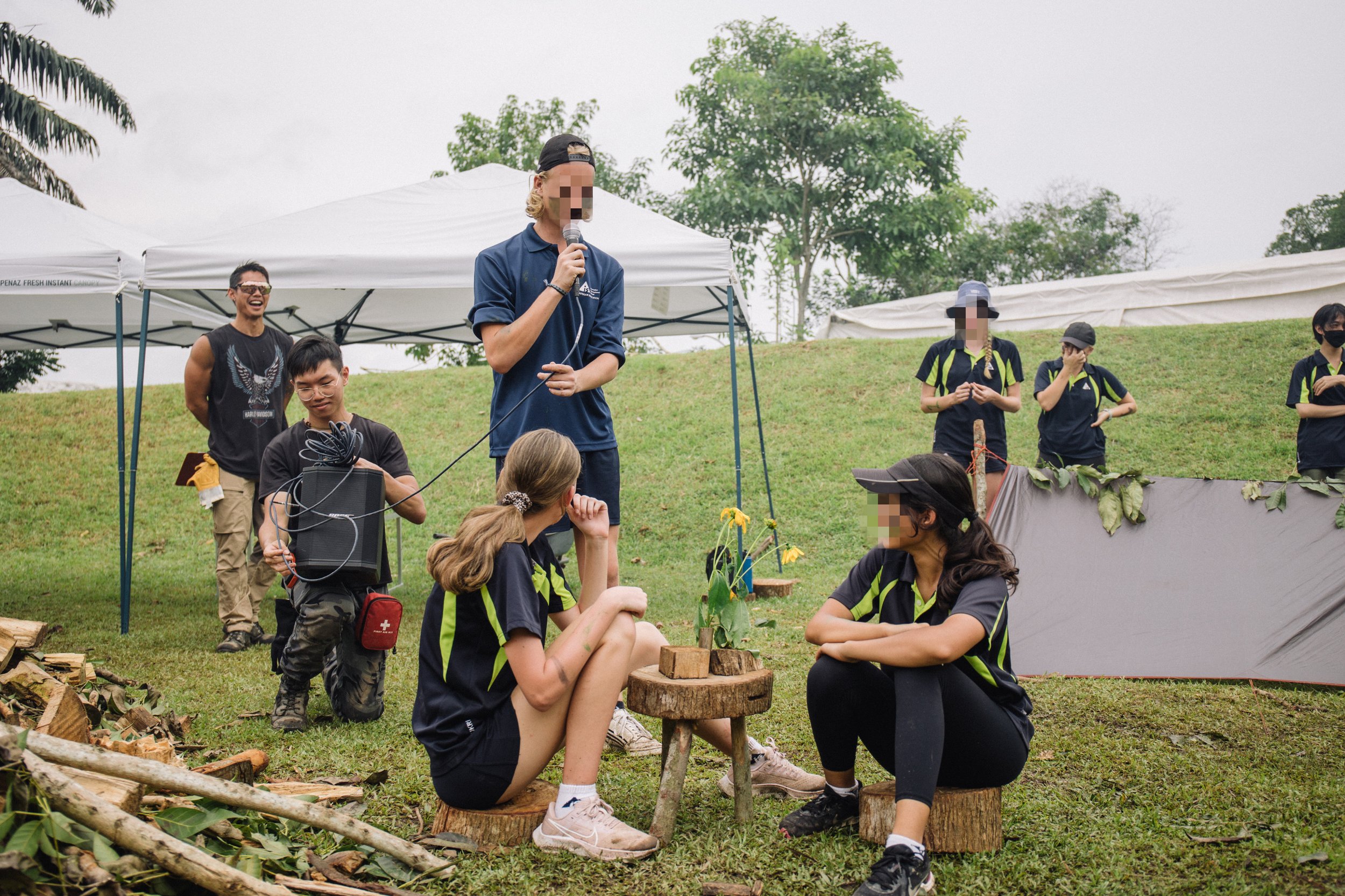
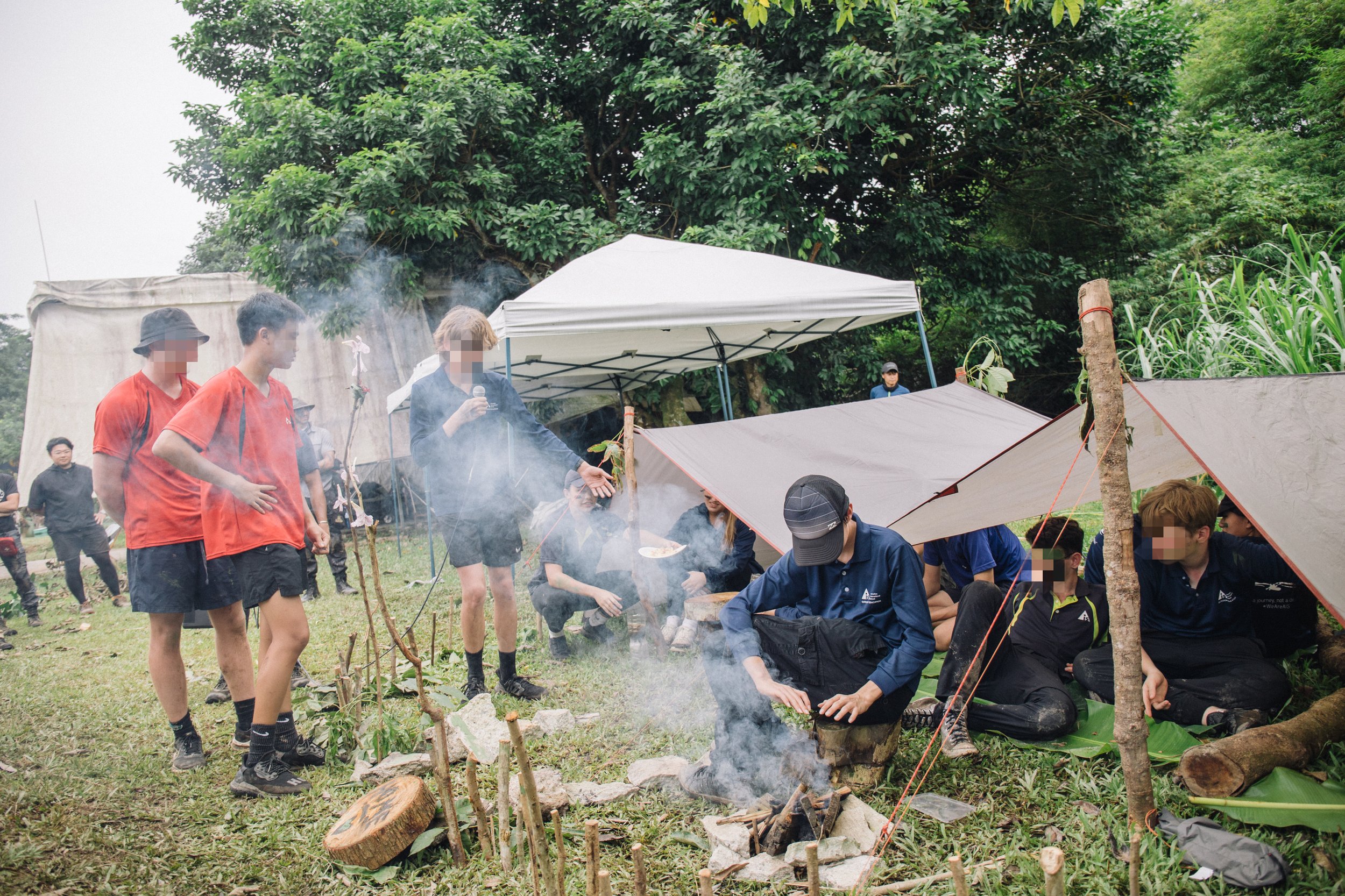
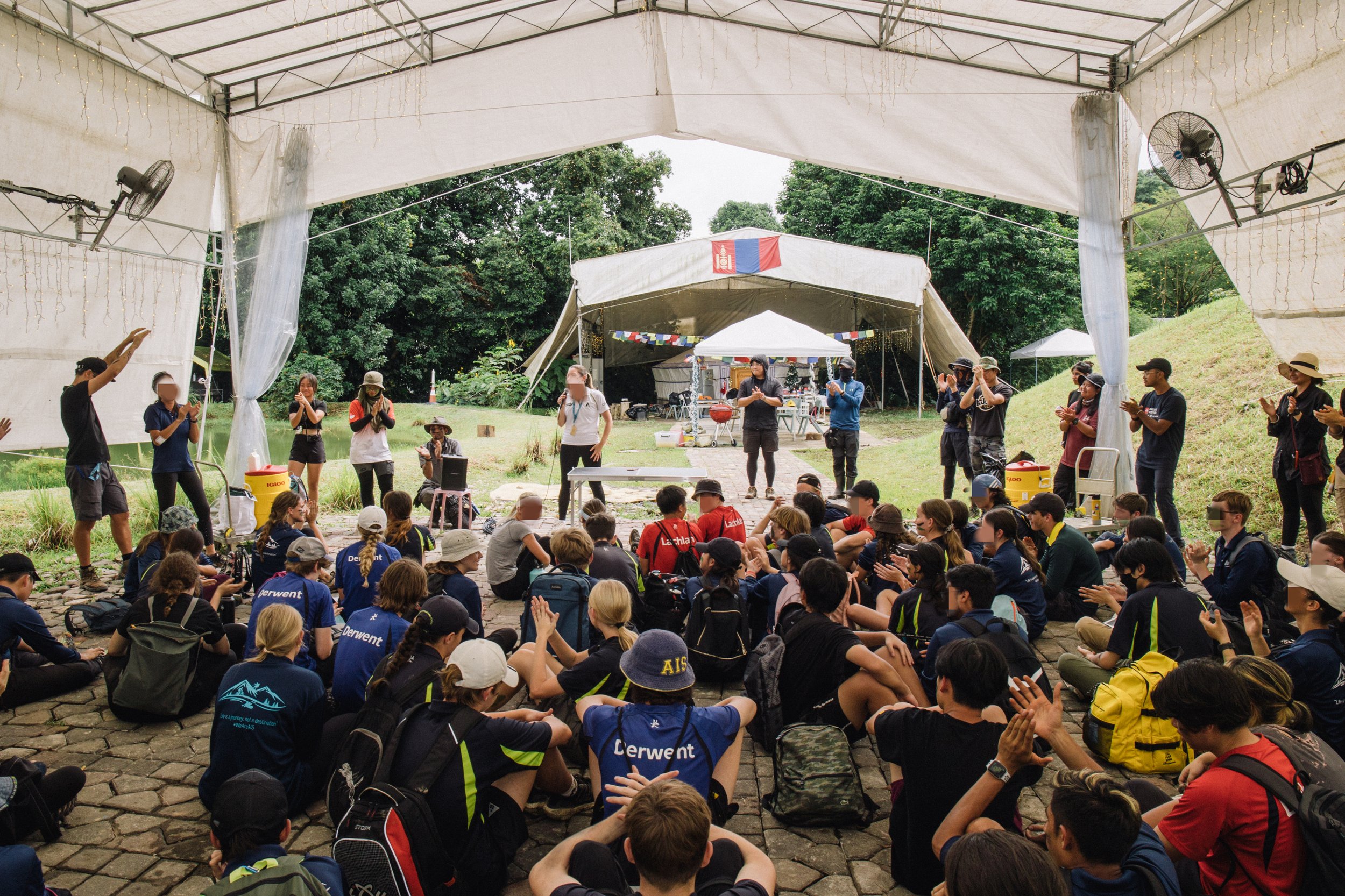

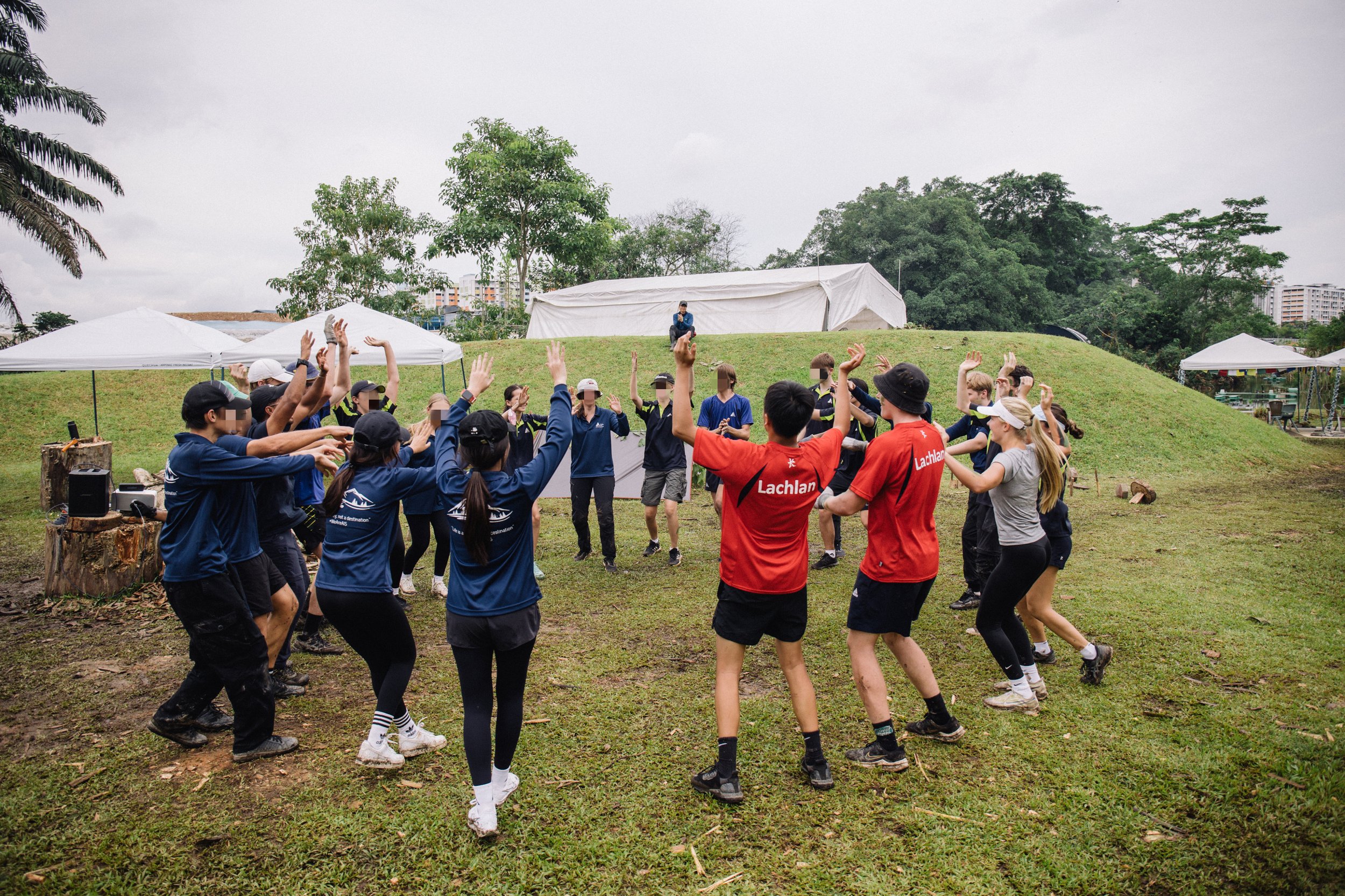
The five-day adventure ended on a brilliant note with constant laughter and cheer, as the Sharks gathered to watch each tribe’s choreographed dance. There was also this wave of satisfaction moving through every one of these students; they’ve proved to themselves that their survival skills are now significantly elevated from where they were on day 1.
FOR ANY ENQUIRIES:
Aspire to enrich your students’ lives through meaningful activities that cultivate important values and nurture their development? Looking to organise an unconventional outdoor camp experience for them?
Seeking for something that goes beyond the classroom walls?
Drop us a message below! :)












